At the end of unit X I wrote up a proposal of what I plan to carry forward into my Synthesis and Resolution Project (above). Over the Christmas break however I have had several new ideas for what this new project will look like for me and have refined my subject matter greatly.
As stated in my proposal I started by looking at the Heritage Crafts endangered craft list. After reading through the list looking for crafts that could give me some inspiration, I noticed that Rope making was listed. Rope making is a craft that is endangered across the UK but is one that has been lost from my home town of Sunderland. Sunderland was once a significant producer of rope in the UK, much due to our ship building heritage in the north east.
It was this that then lead me to the idea of focusing my project around the lost and endangered crafts of Sunderland and raising awareness as well as homage to them. I decided that as well as rope making, I will also look at our ceramic heritage and our lost Lustreware production as well as our endangered glass production which I think is of particularly high importance as this is a current loss that we are witnessing in the city.
I think that this project will engage me through personal connection as well as material and technique exploration as I think it will push me to push my limits of what I thought I could create with clay and allow me to create even more visually elaborate and narrative full objects.
I came up with the initial idea that I would produce a series of three objects, ( sticking with my heritage ginger jar form) that represented my three areas of craft. I thought this better than one object that represented all three as the three crafts all have their own respective histories and stories as well as material base different from one another.
While at home I took a trip to Sunderland museum to see if I could do a little bit of quick initial visual research about my three chosen areas. (Pictures below).
Rope










in Sunderland both rope made from hemp, cotton and jute as well as from metal were produced. Organic fibre rope was mainly produced by women in the roperies, whereas the more heavy duty metal based rope was produced by men at the rope works in Monkwearmouth.
Glass






















Pottery


















































































Once we got back to uni and term had officially started I had my first official tutorial with CJ. We spoke about my idea for my project and how I could look at it in a realistic manner to make sure I was going to be able to achieve all that I wanted to achieve. (tutorial notes below).
We decided that instead of focusing on all three topics and making an object for each, that instead I focus on just glass and ceramics and then use rope as a feature of decoration through my pieces. we also decided that instead of falling back on my favoured form of ginger jars, that I could look closely at the Sunderland Wear ceramics and pic and choose pieces to take form inspiration from. We found that a lot of sampling would be needed to experiment with the different features of my pieces, (as stated above). We also decided that I would now come to my project from the direction of modernising the old and not getting stuck in the nostalgia of trying to recreate exacts, this excited me as I thought I could defiantly let my imagination run wild and create something truly unique that speaks to me as sometimes these old Sunderland forms can be considered quite stuffy and old fashioned but I believe I can take these features and make them new and desirable again.i found this tutorial incredibly helpful and has defiantly helped me streamline my project and has got me thinking about lots of exciting ideas.
At the end of this first week I took another trip back home and took a visit to Sunderland Library to see if they had any resources that I could use to aid my research. The librarian was very kind and let me take a few books home, some of the books were one of one copies that had never been allowed to leave the library before so I felt very honoured to be considered the acceptation.
The first book I looked at was called ' The Glass Industry of Tyne and Wear, Part 1: Glass Making on Wearside'. This book gave an overview of the rise and fall of glassmaking in the northeast (below)...
... As well as a run down of the different styles of glass that were produced here. I chose a few of my favourites to photograph (below).
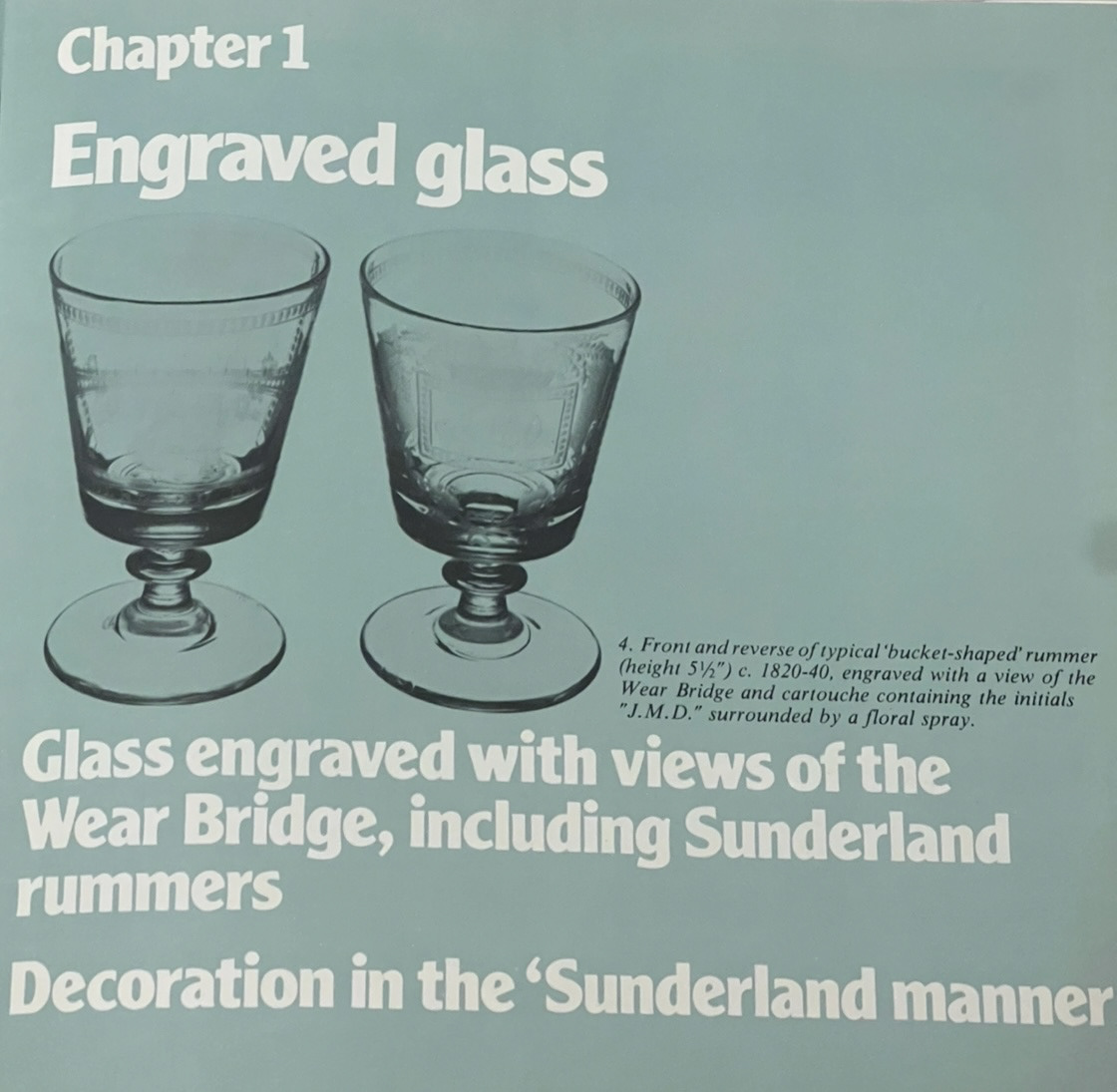
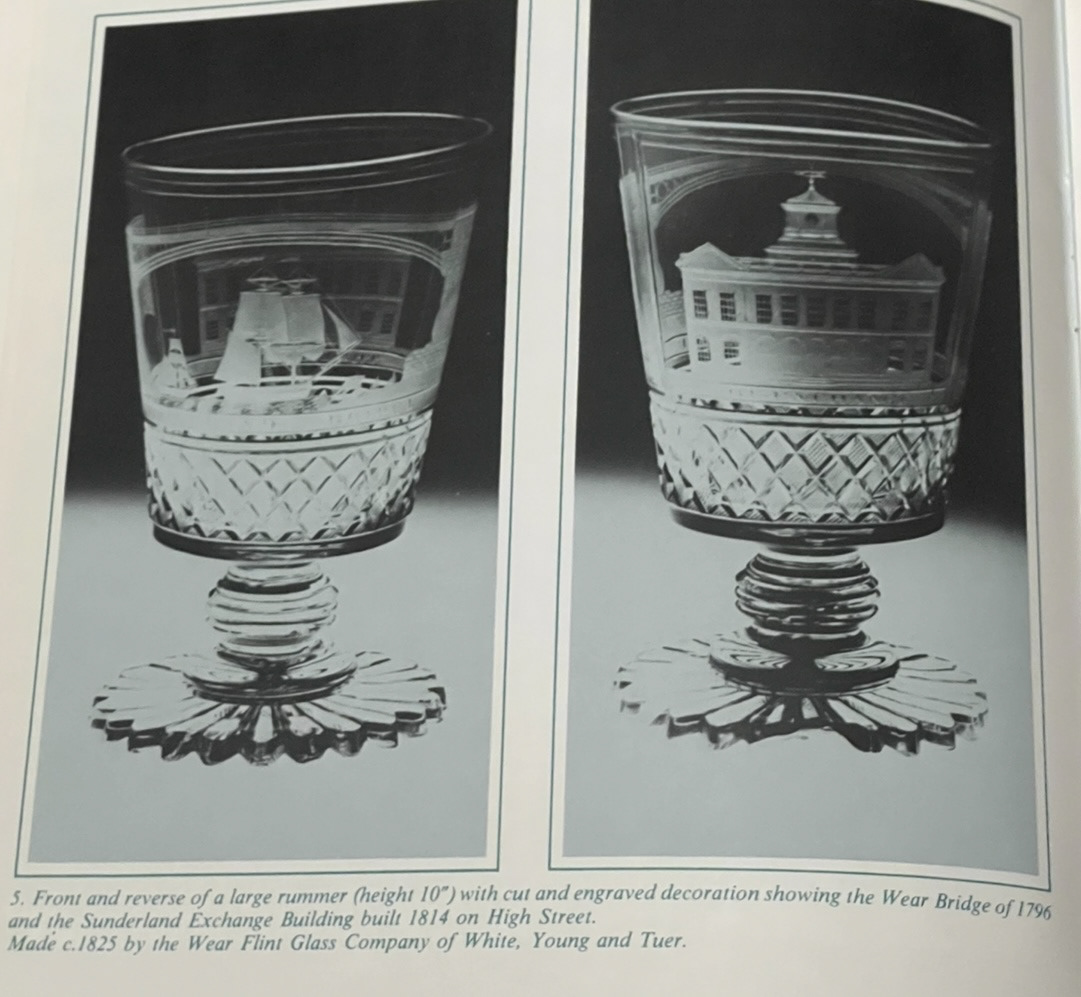
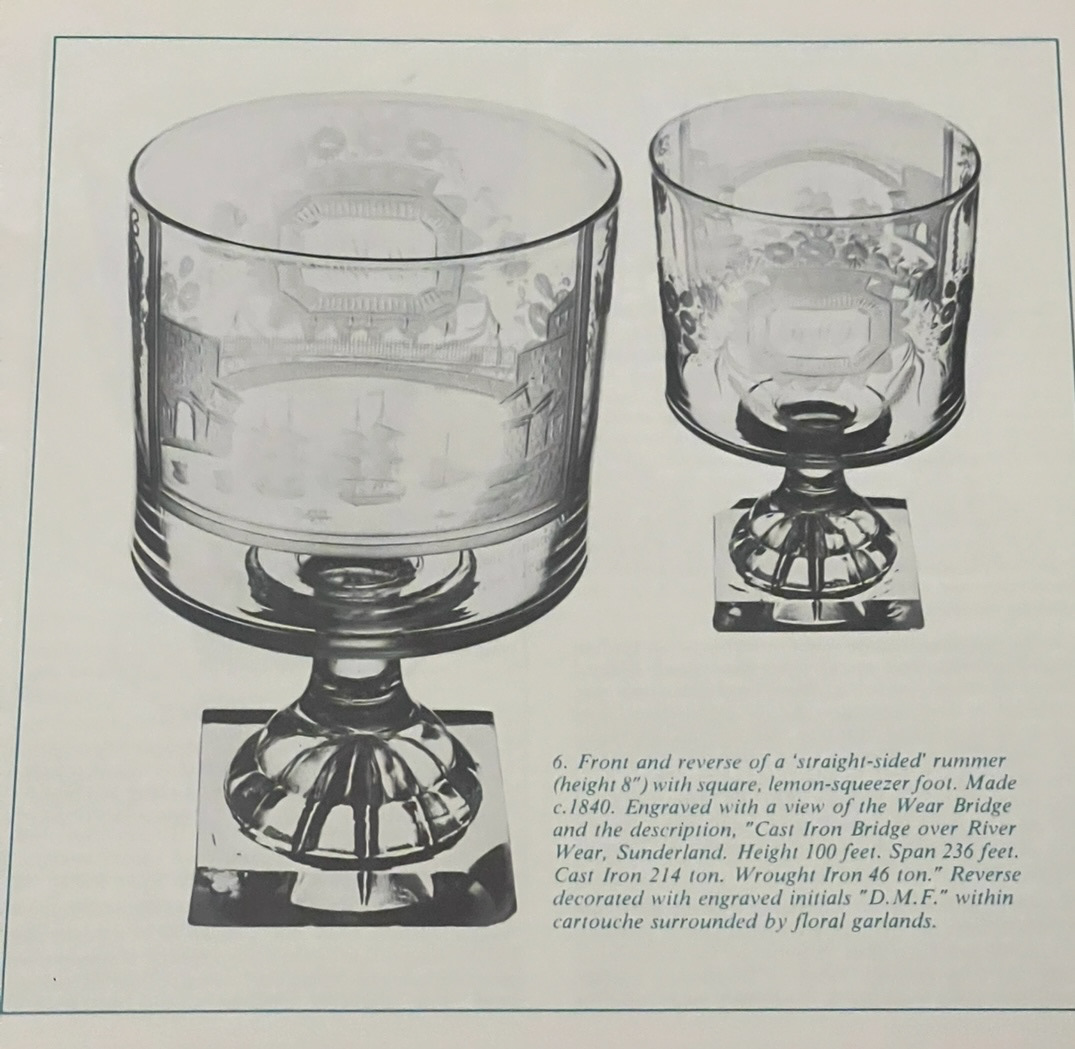
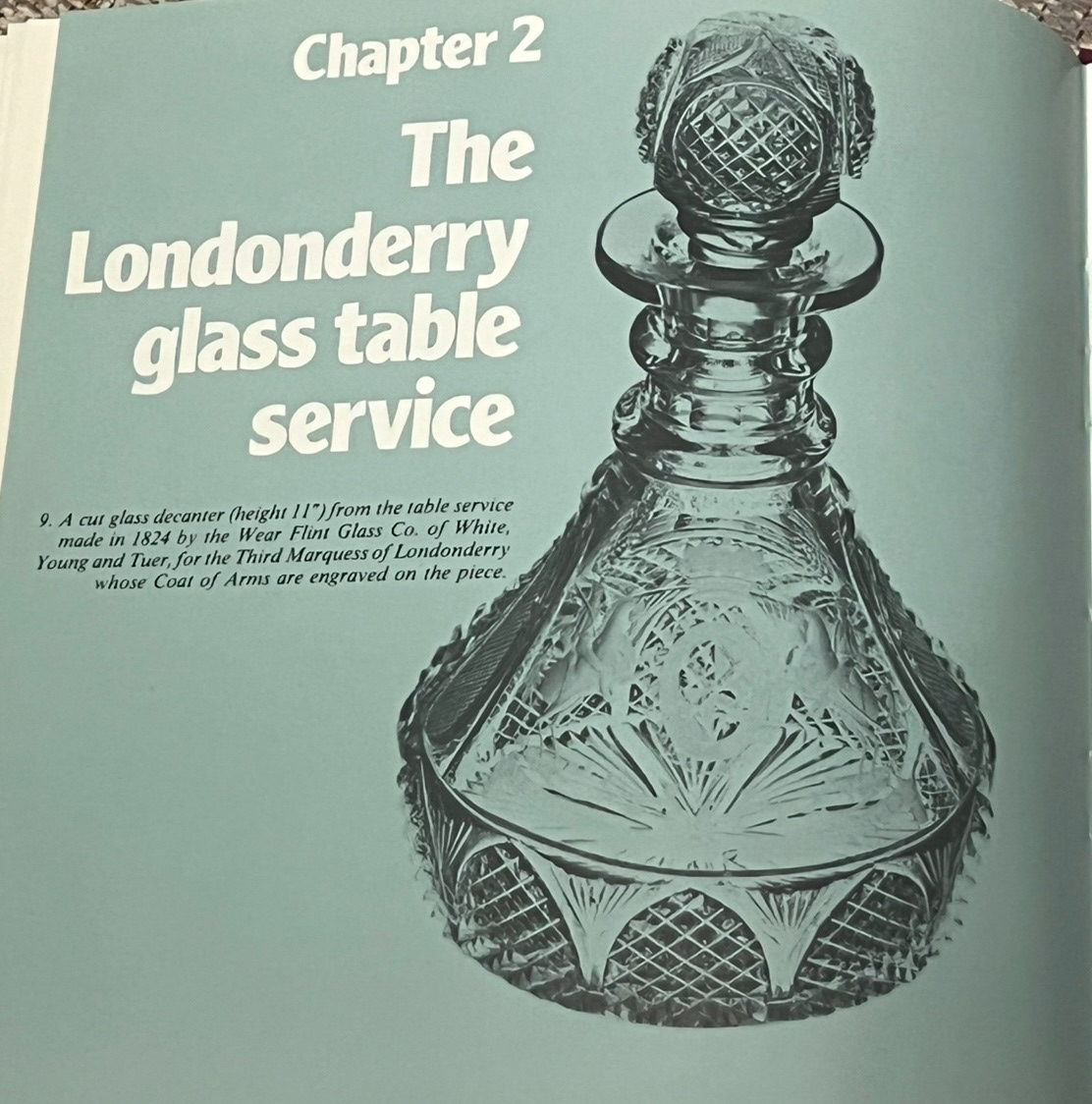

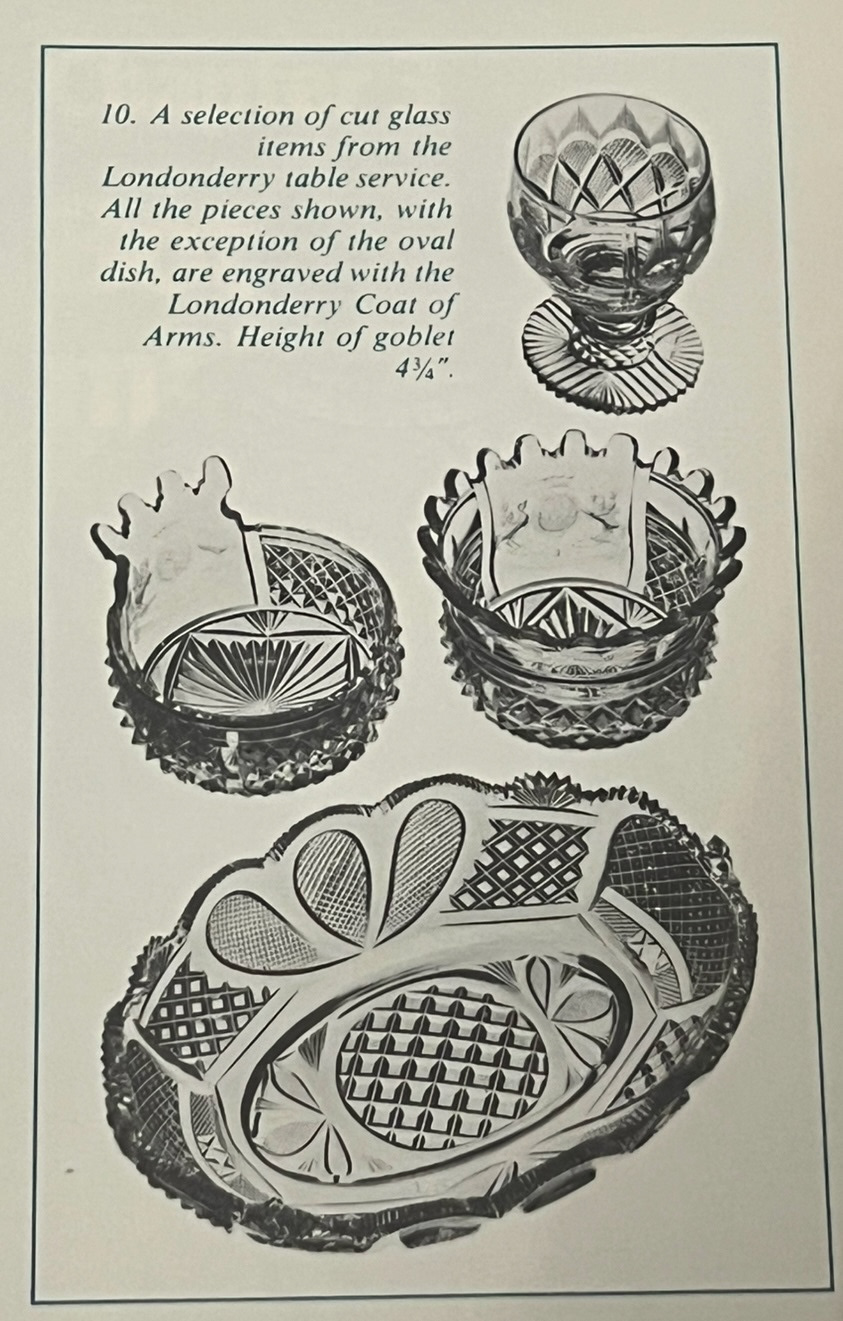
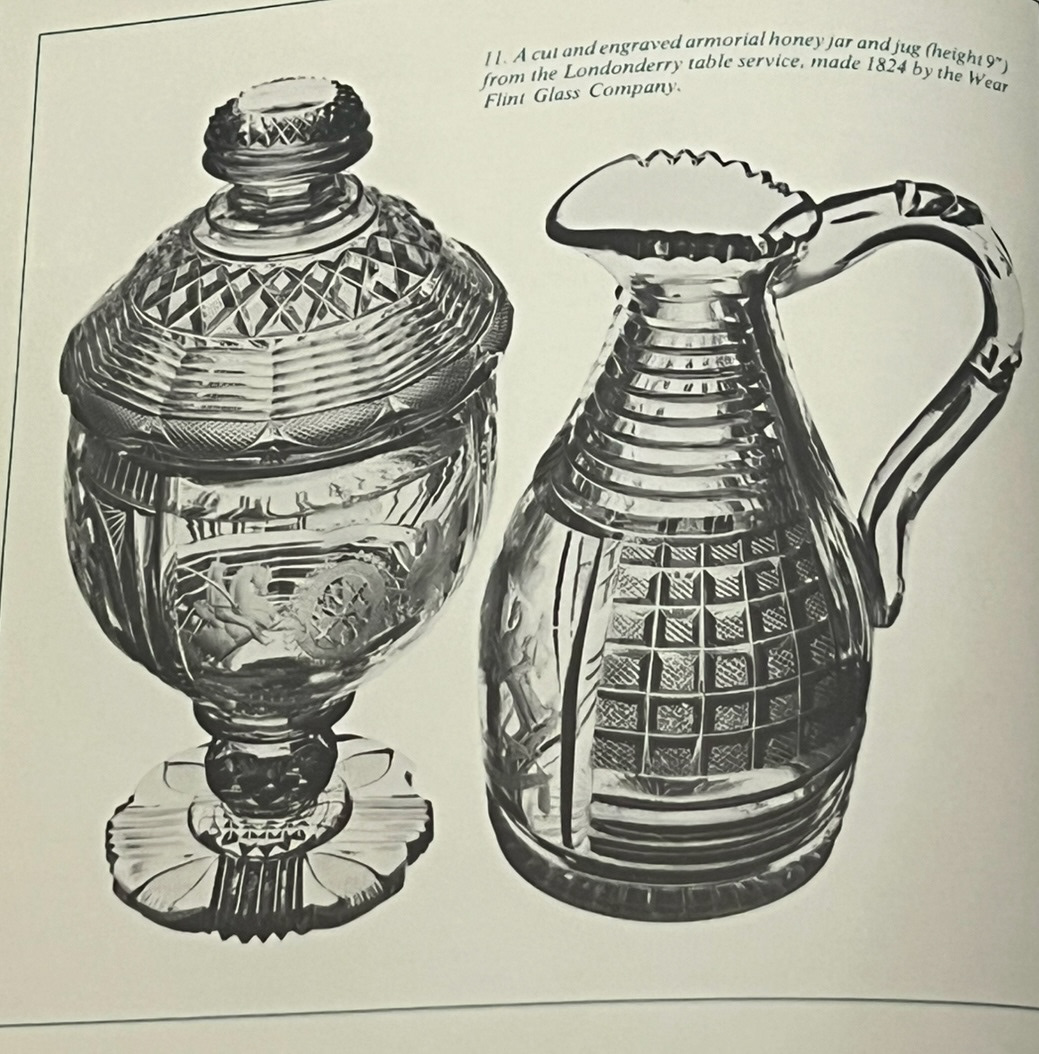
I really liked the design of these two styles (above). The engraved glass for its needle fine detail and symmetrical designs and the Londonderry for its texture and unusual features such as its almost castle wall edges and large areas of decorative design.
Sunderland Pressed and Slag glass (below). Has been on my radar for a while now as for a few years I have been seeing it in a few antiques auctions that I attend with my mother. it always catches my eye because of its decorative design and often unusual forms.

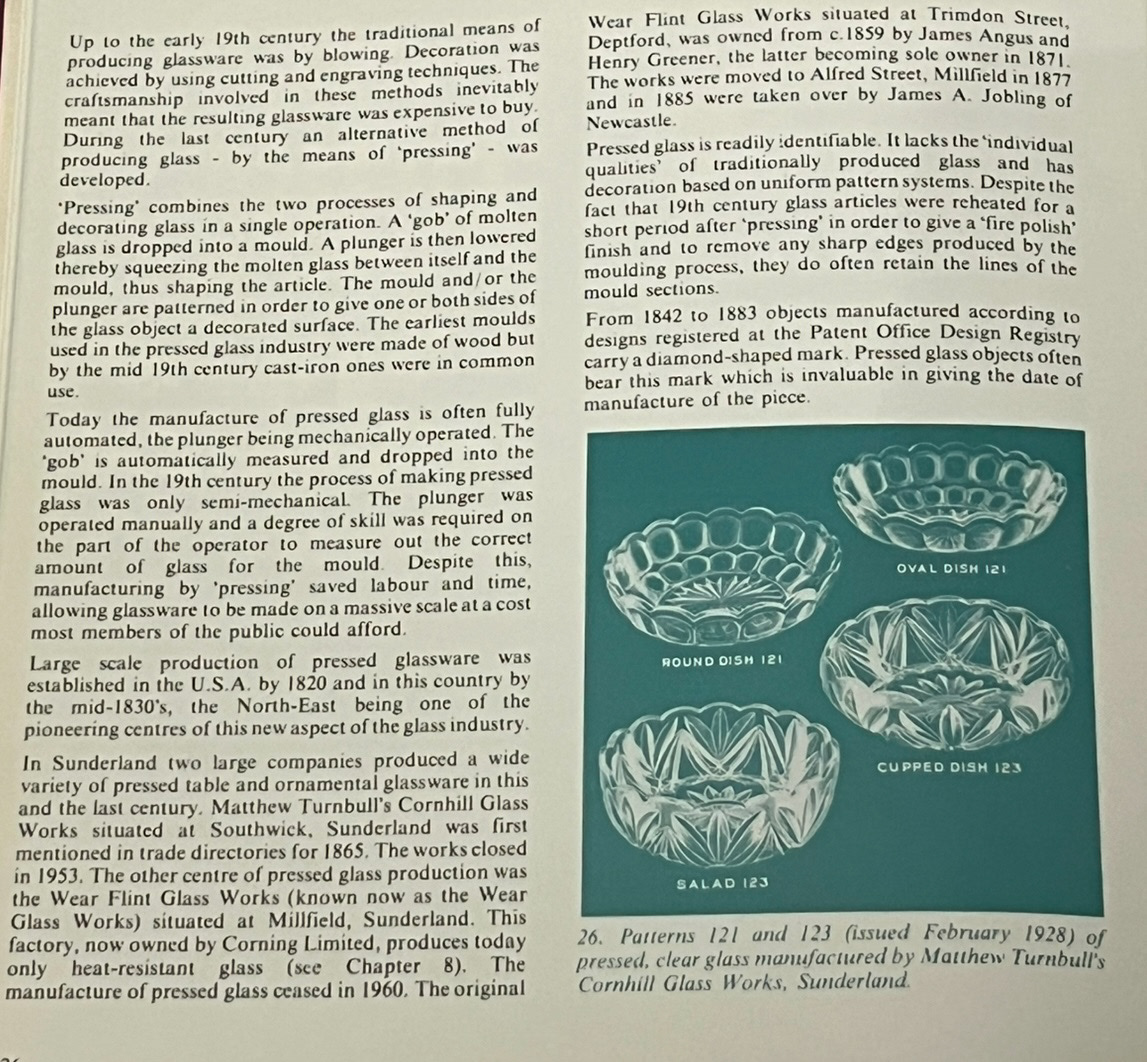
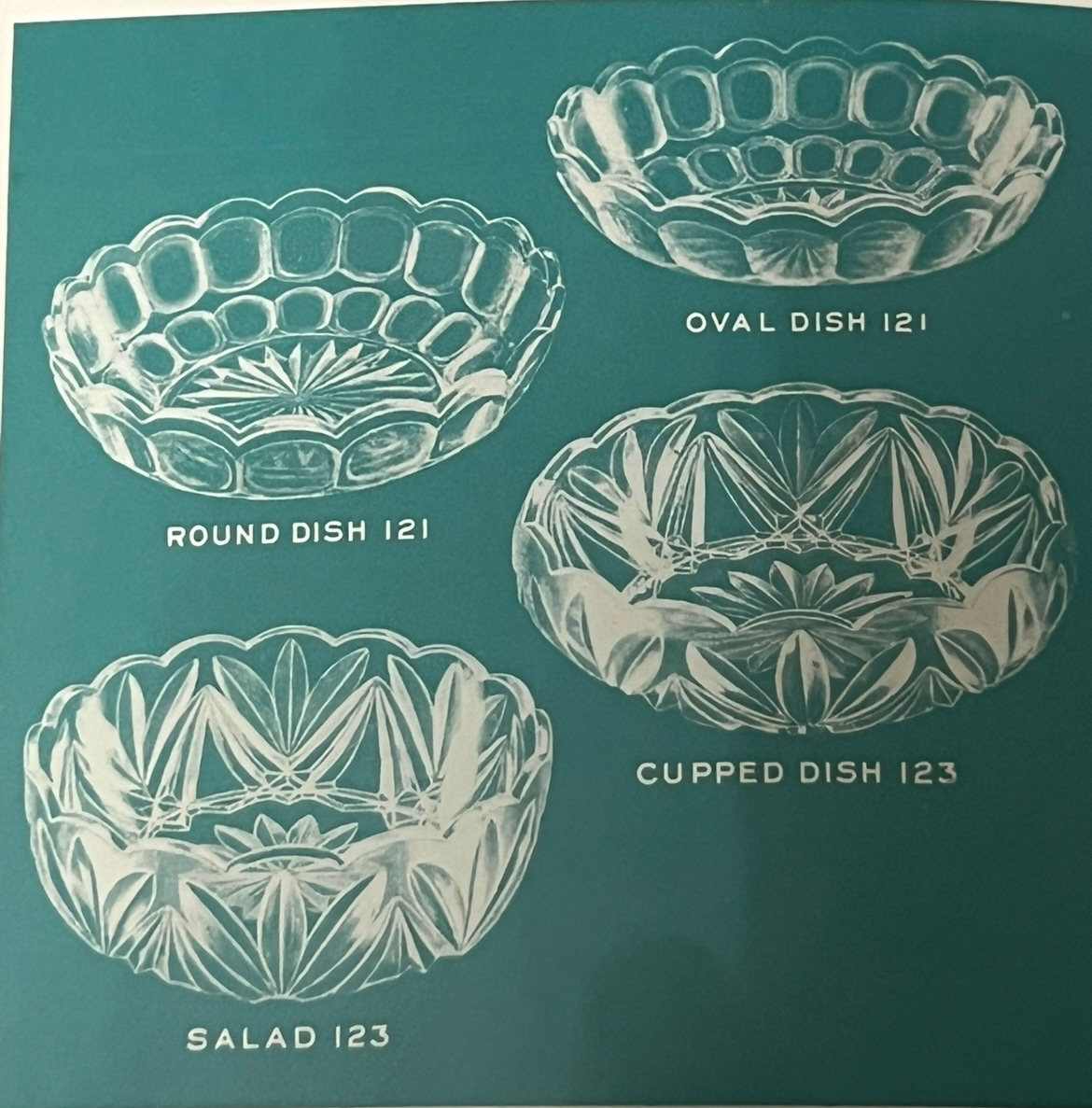
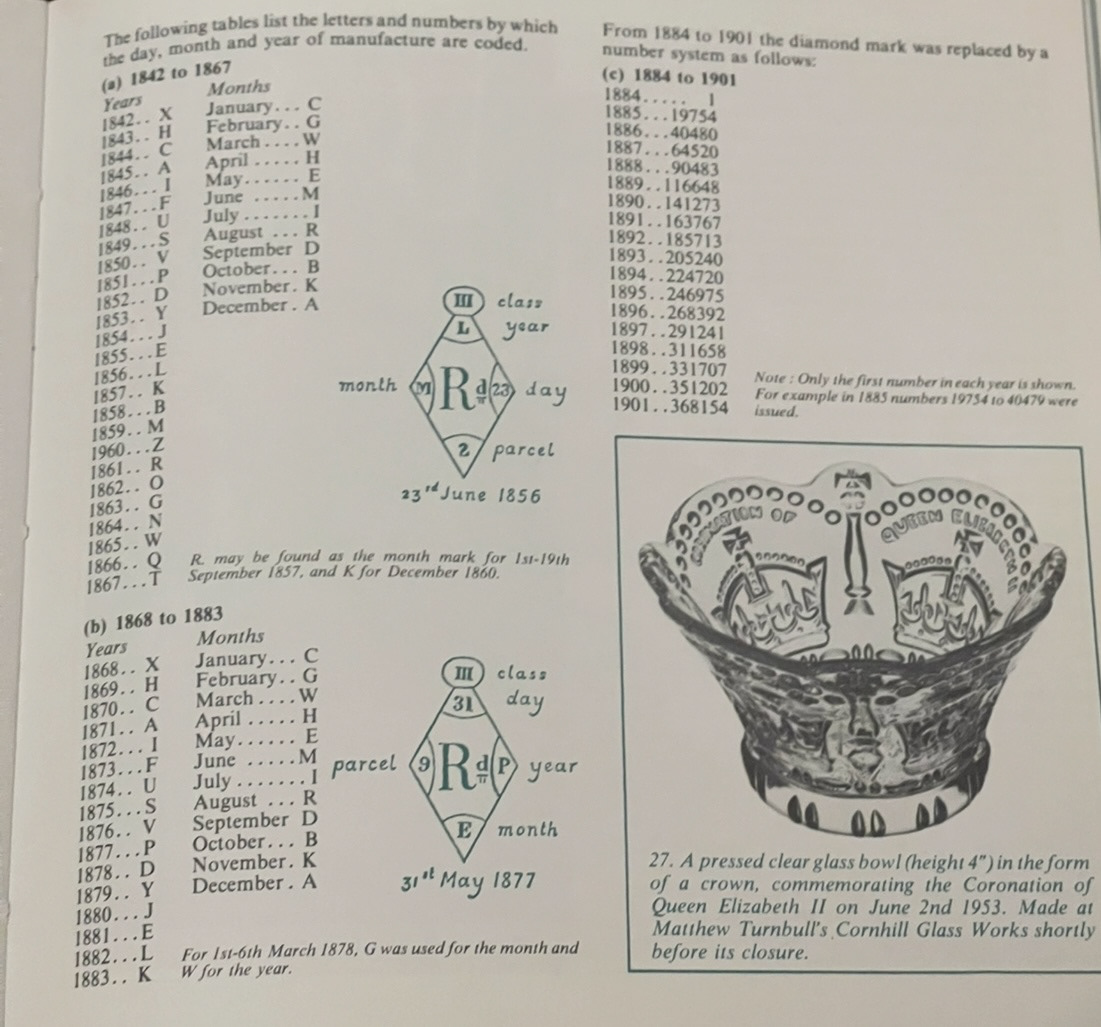
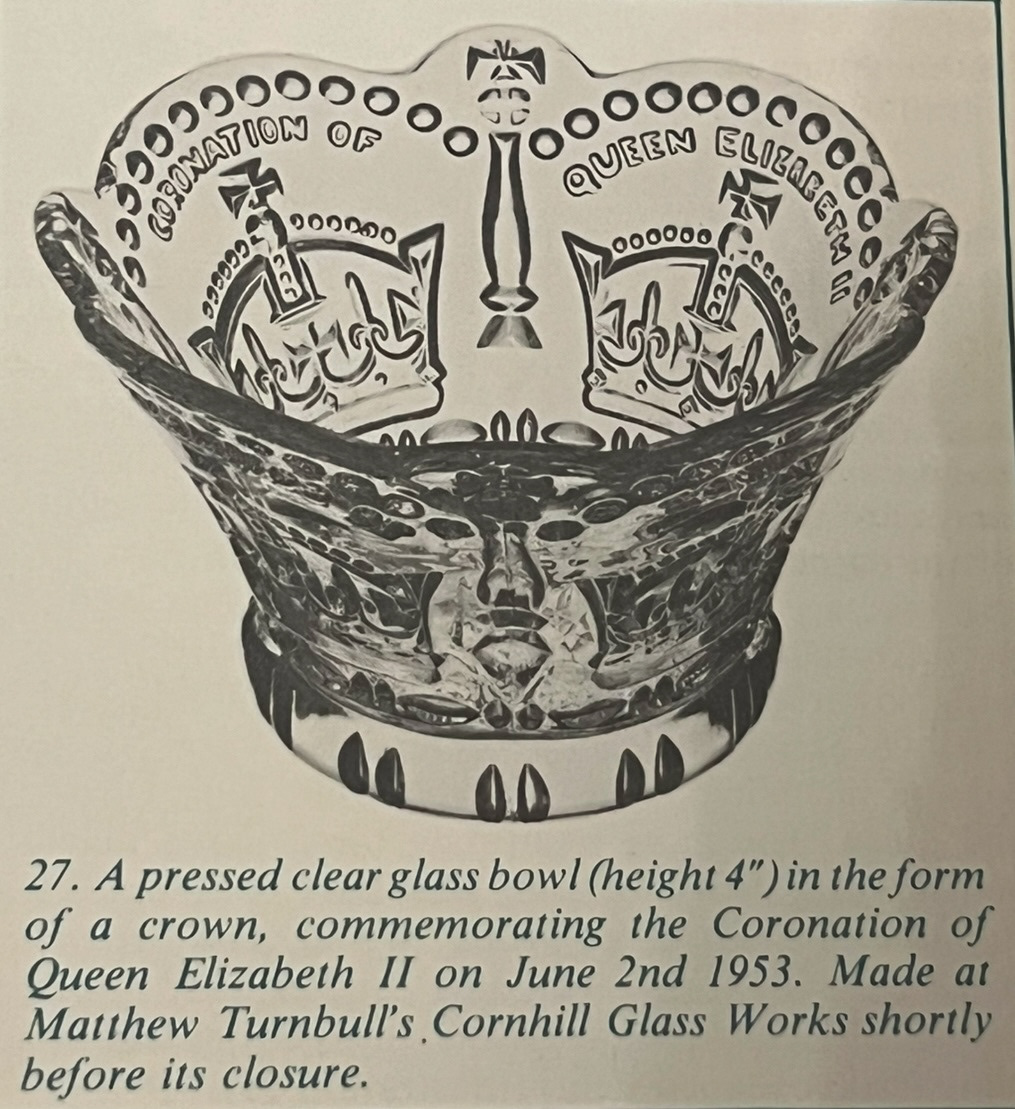
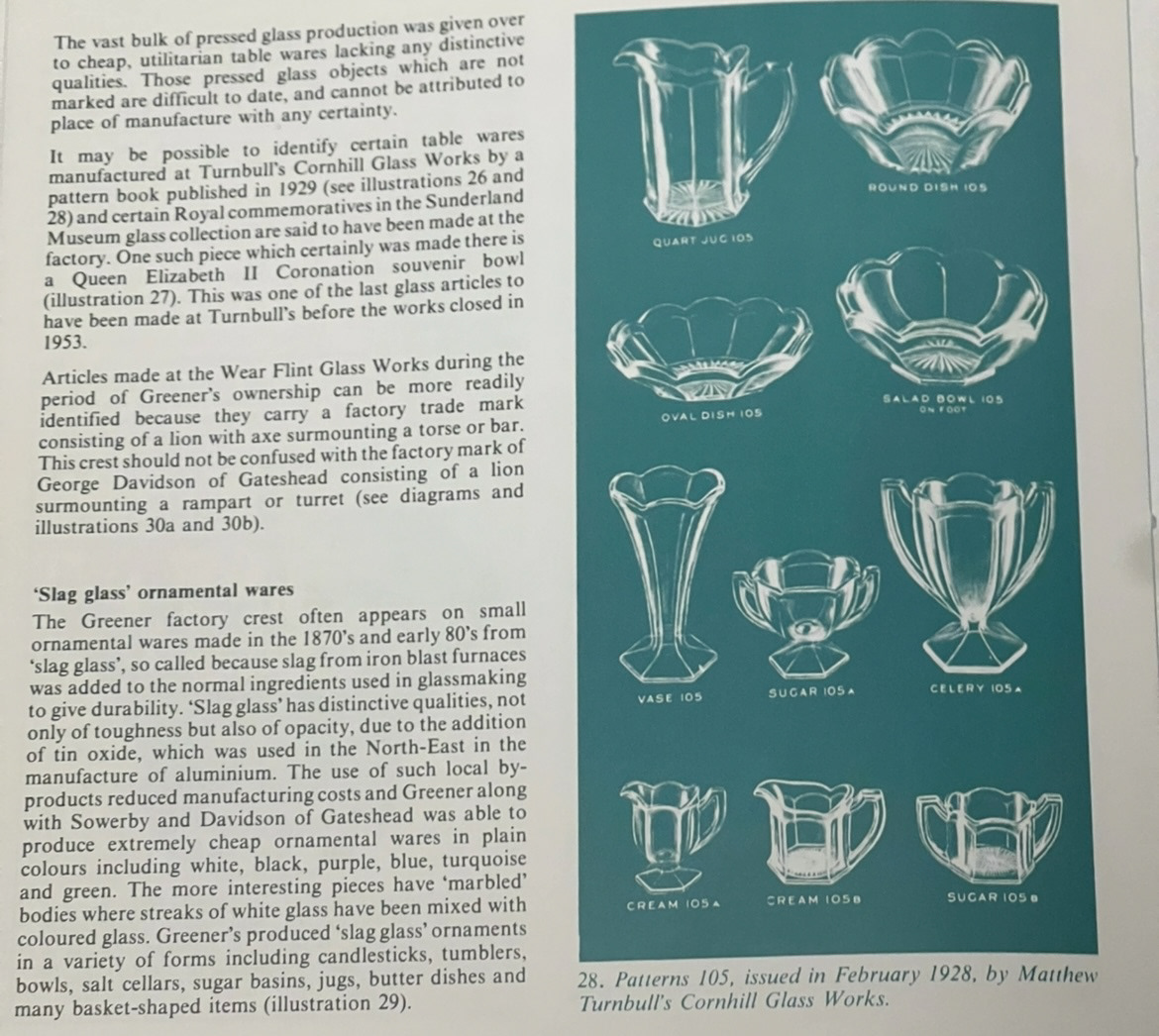

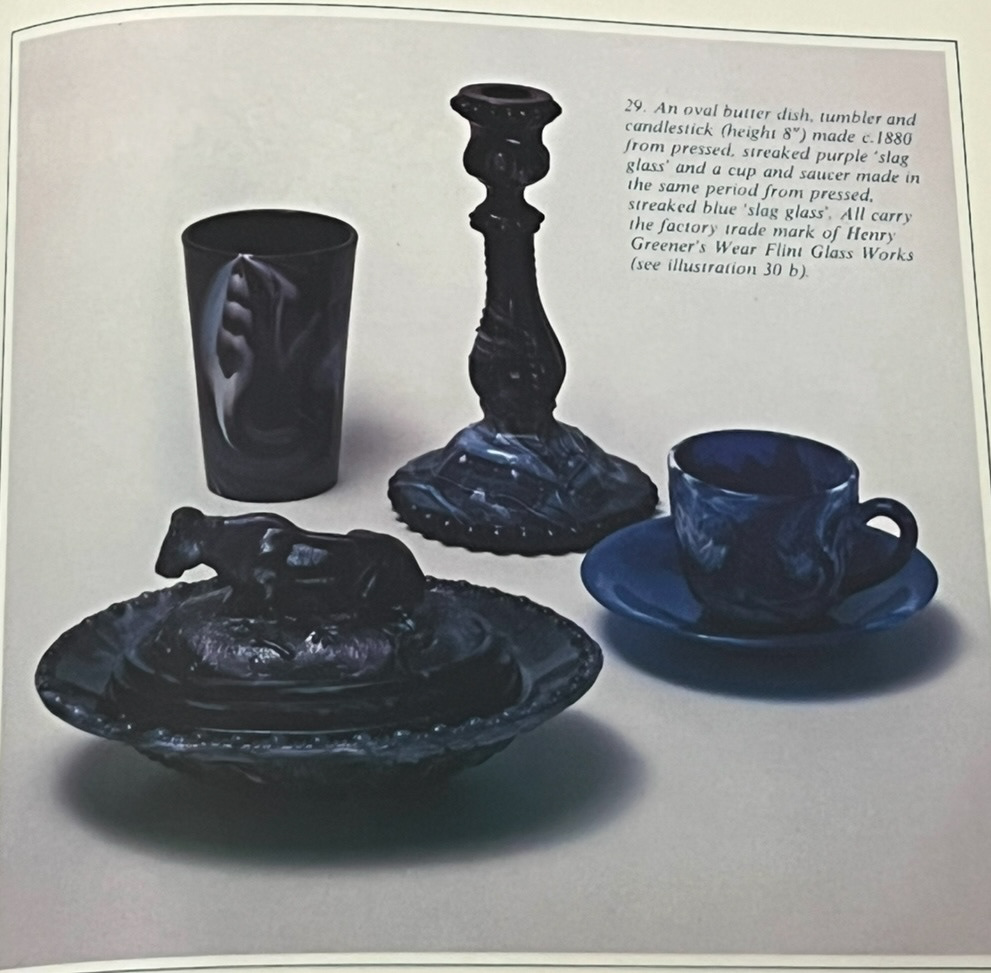
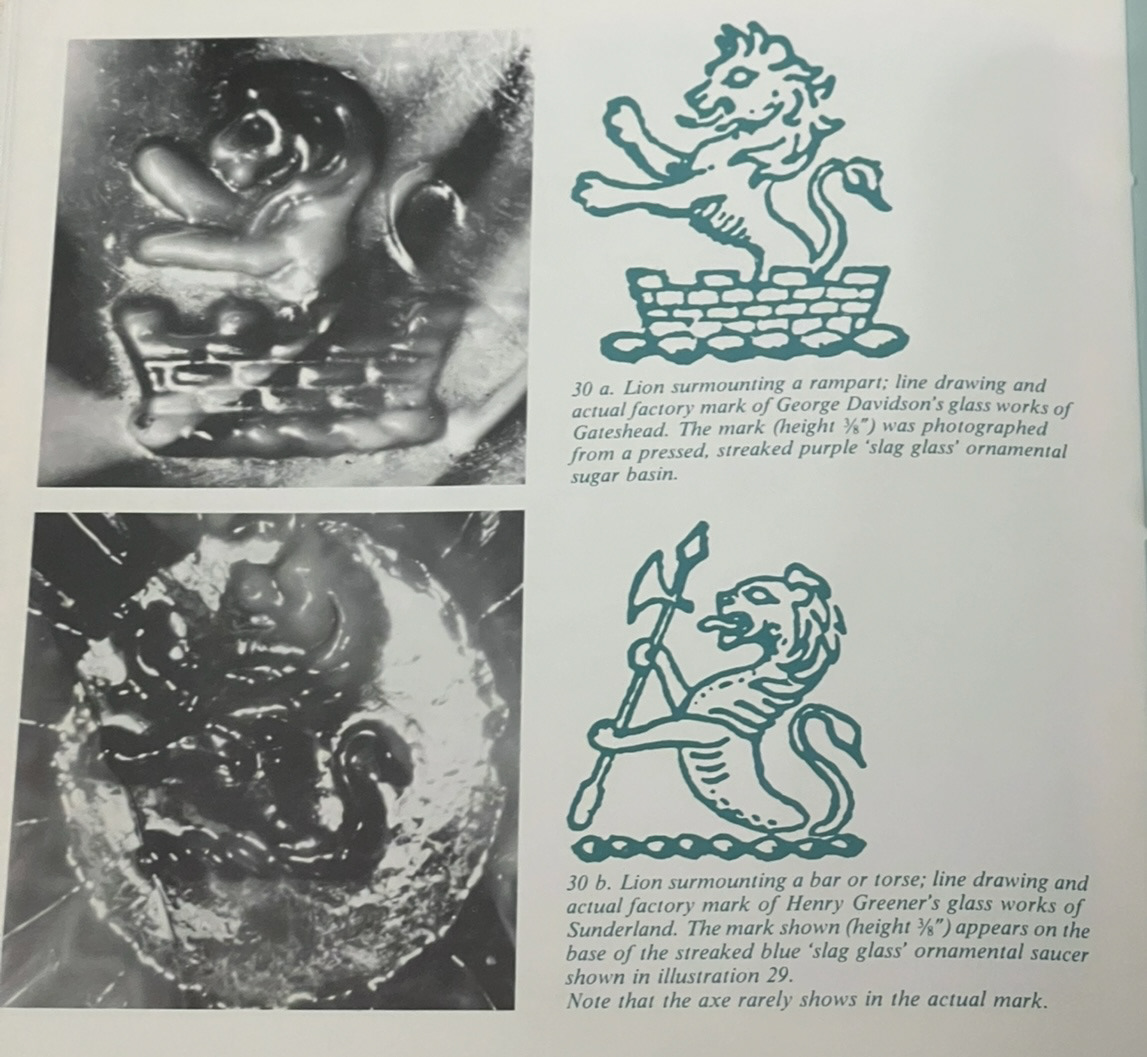
In this book I also looked at bottle making and 'Disaster glass' I chose these two to look at specifically because of the stories attached to them.
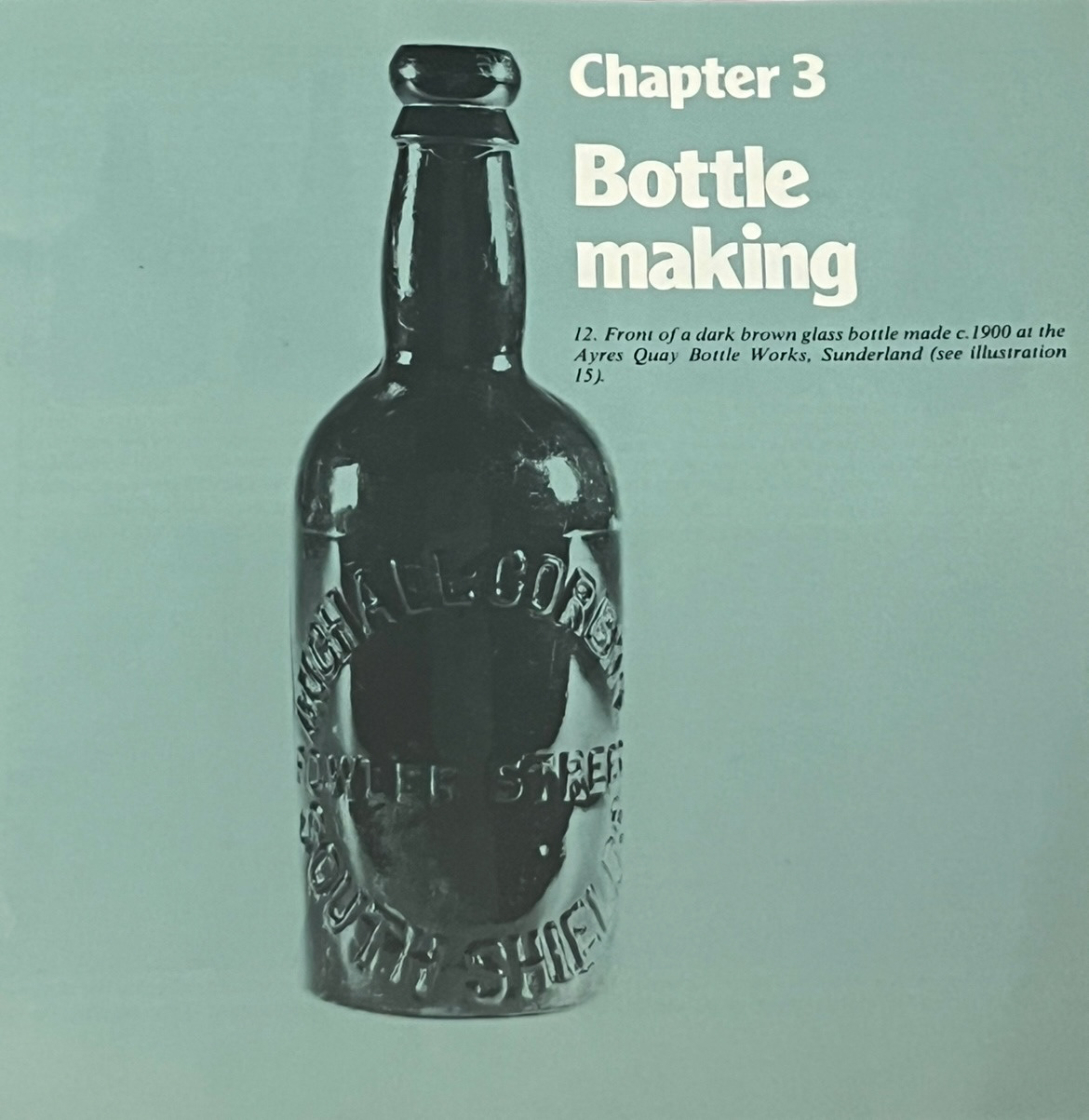
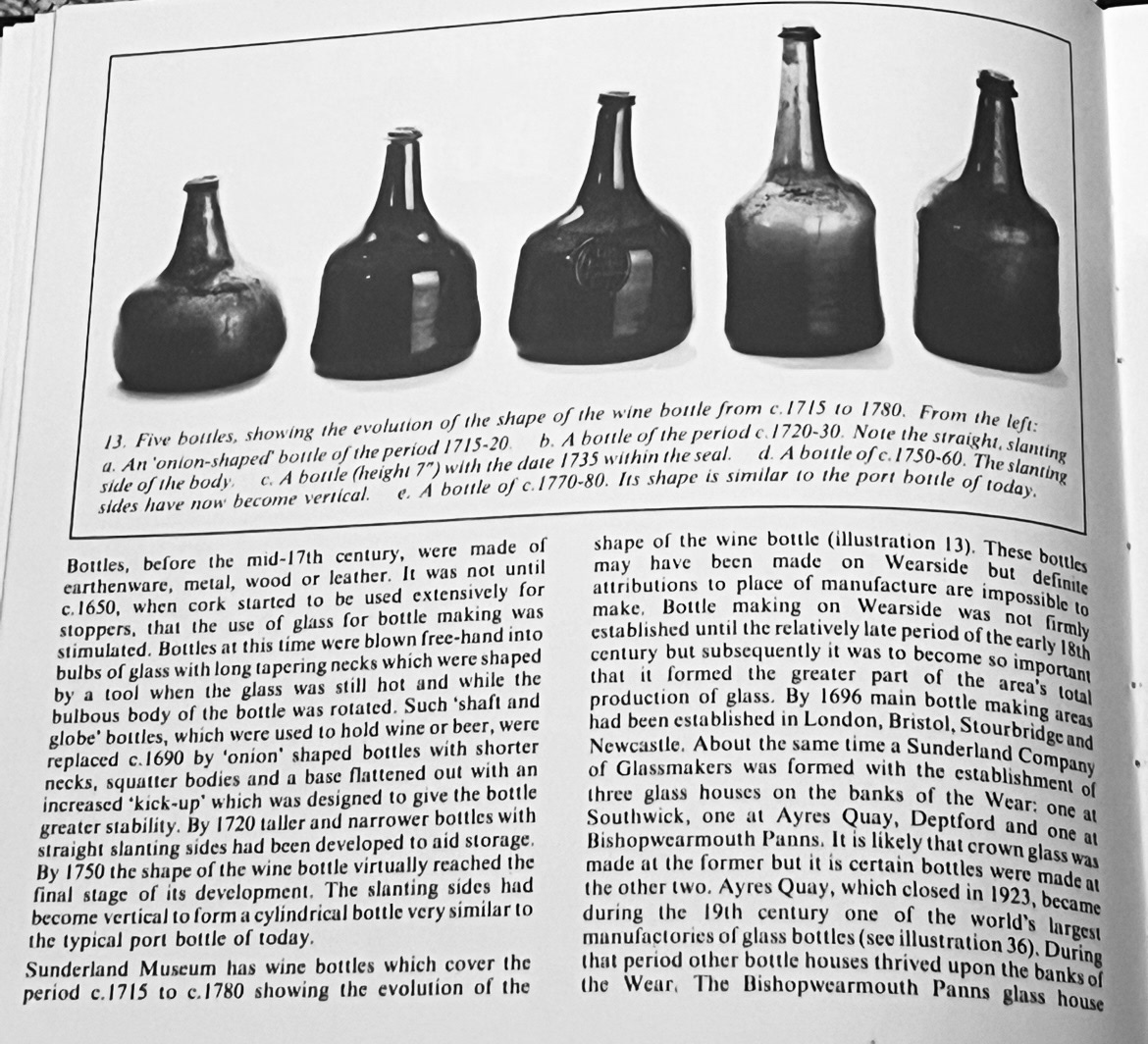

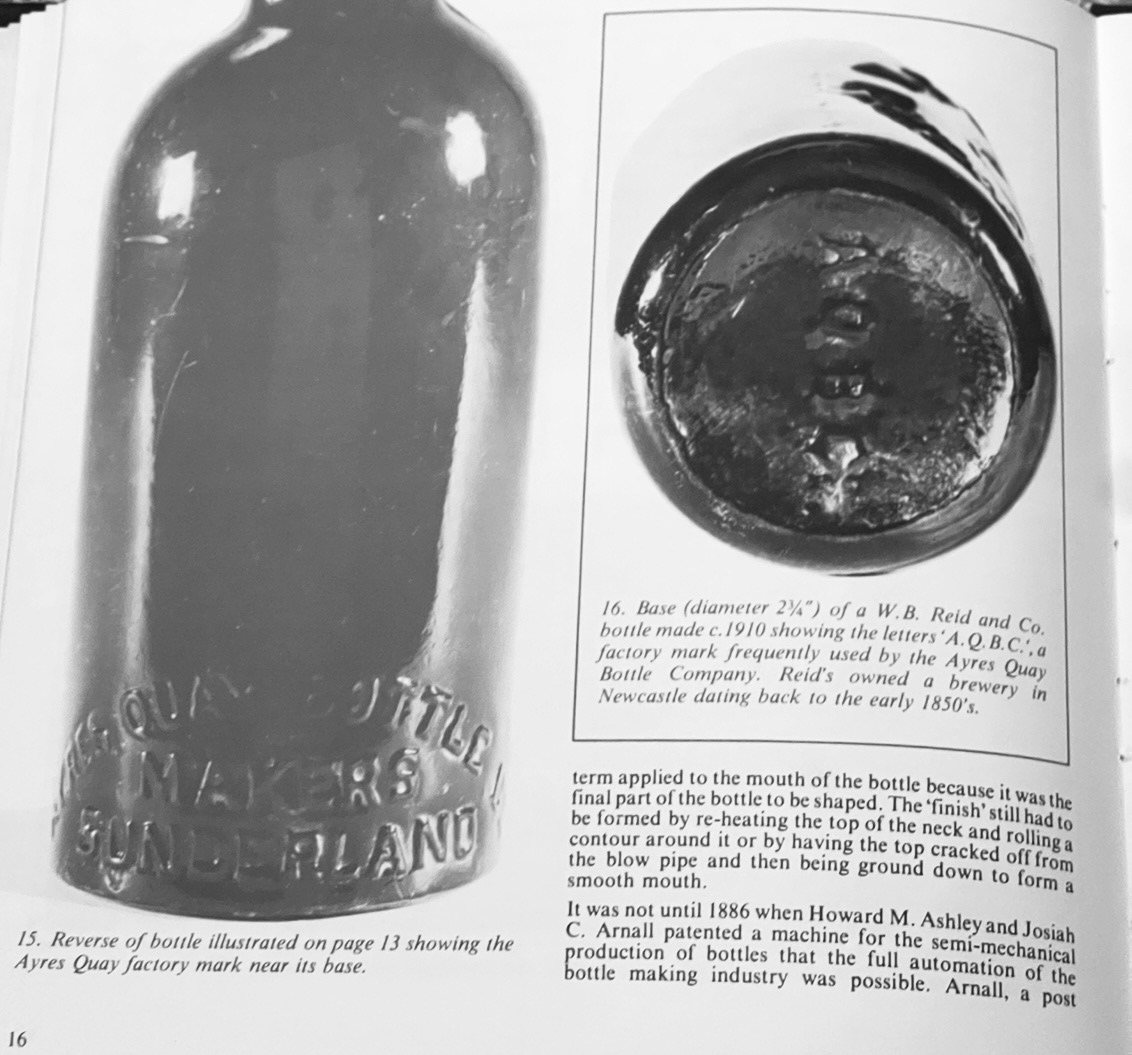

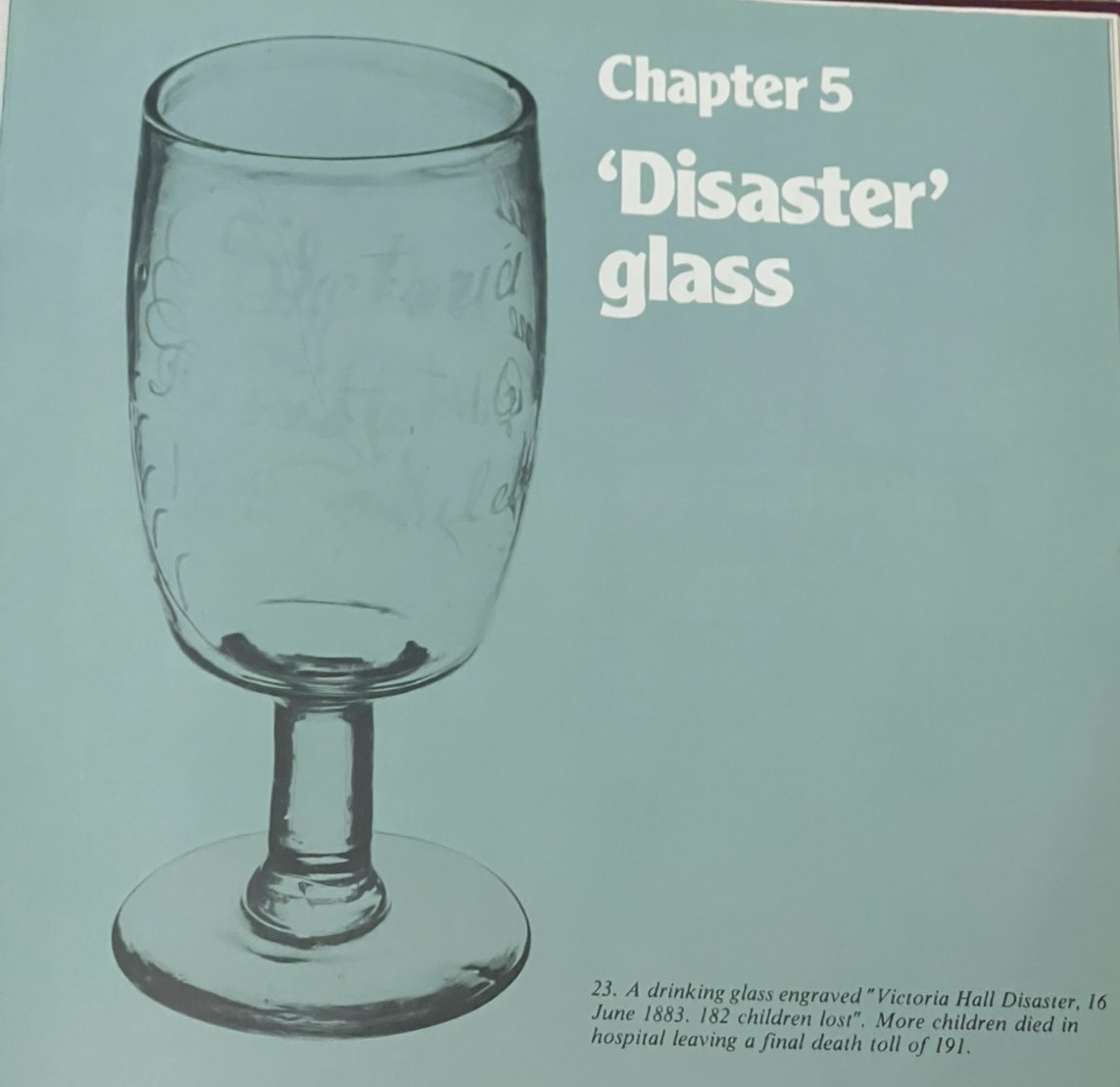
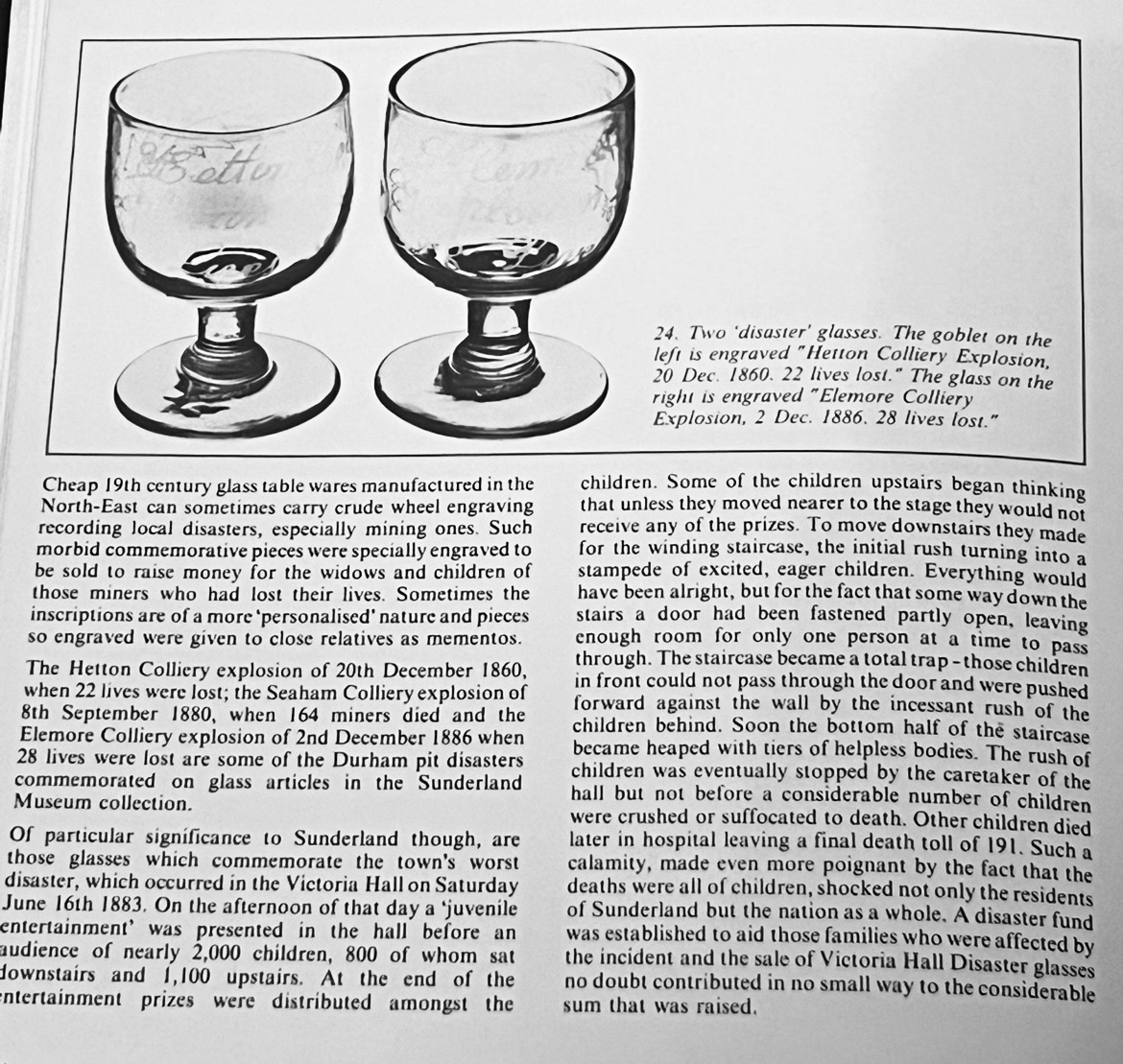
Disaster Glass was an affordable form of glassware in the 19th century, this glass was made to commemorate disasters and tragedies that took place. I find this form of glassware interesting as usually it was a way of tracking the numbers of people who had been impacted by a tragedy as they would purchase the glassware as a memorial to a lost love one. These were commonly made to remember those who had been lost at sea as families would usually not have been able to give their loved one a proper memorial as they had been lost at sea. Also as ship building was a prominent industry in the area, workmen would purchase these to commemorate ships last at sea that they would have spent years of their lives building.
Bottle making has a rich history in Sunderland but I feel I have a special interest in this in particular. My great grandfather worked in the glass works near by to the bottle making facilities, I also think that bottle making has still has quite an interesting physical presence in Sunderland as when bottles were still being produced in the area, all of the defective and damaged bottles would get thrown into the sea in Seaham. Now you can still walk along the beach at Seaham a good 40 years later and collect sea glass that would have once been part of these bottles, worn away by time. Going for a walk along the beach and collecting this glass has been a pastime for my family since I was young, trying to find the biggest pieces and the most unusual colours that we could. I now have a collection of this glass that I would some how like to incorporate into my pieces as a material from the area and the industry that I am studying, much like I did last term with my clay from the Lumley brick works.
The next book I looked at was called 'PYREX: 60 Years Of Design' (below).


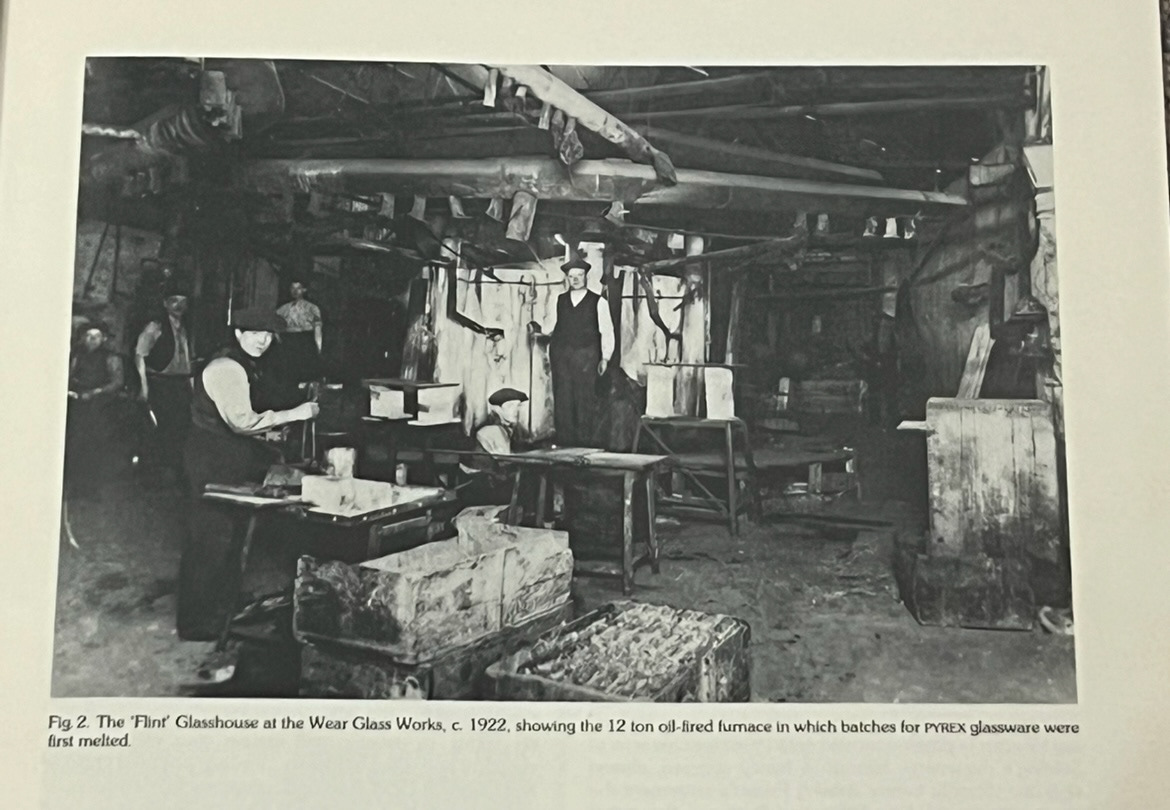
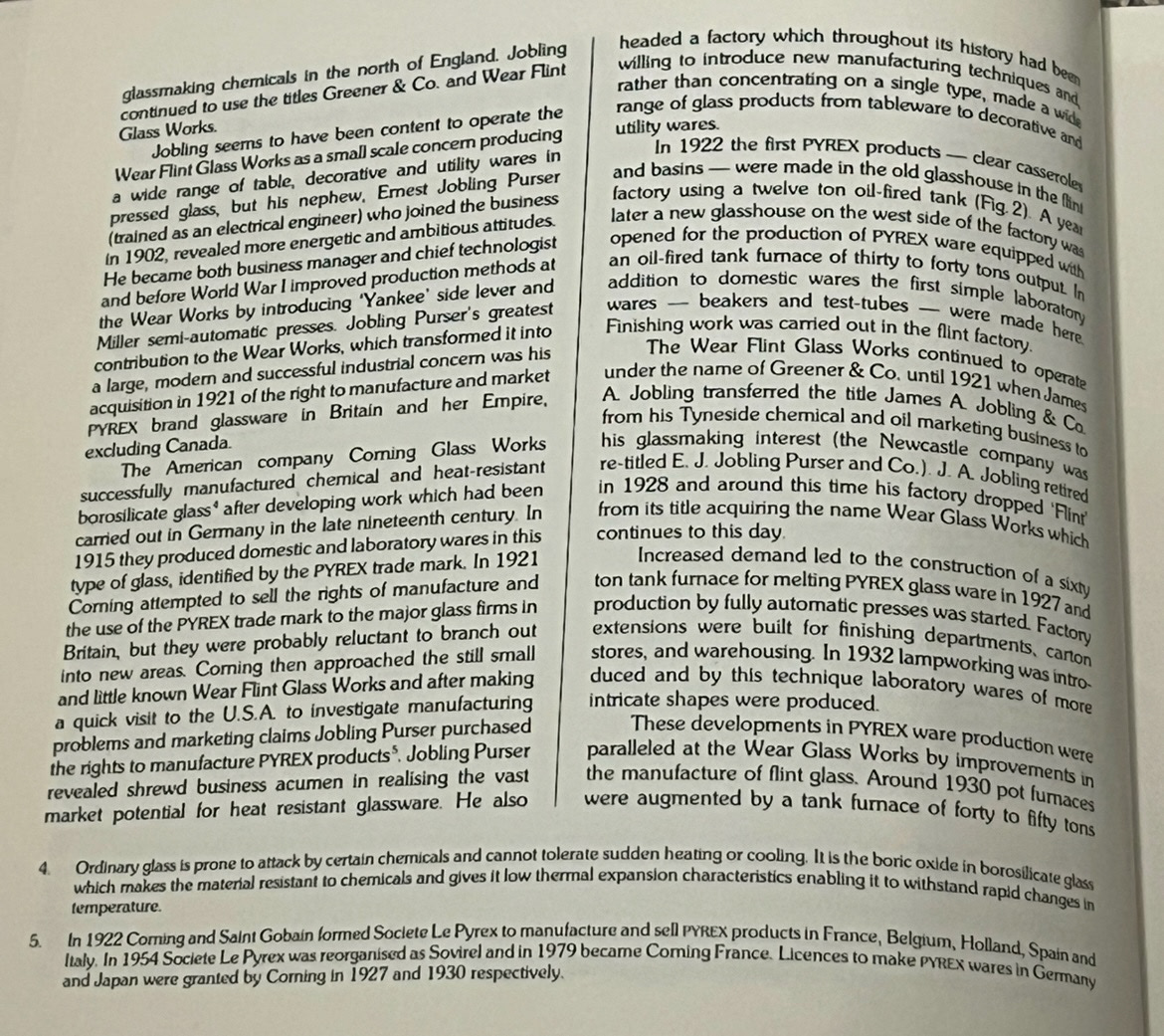
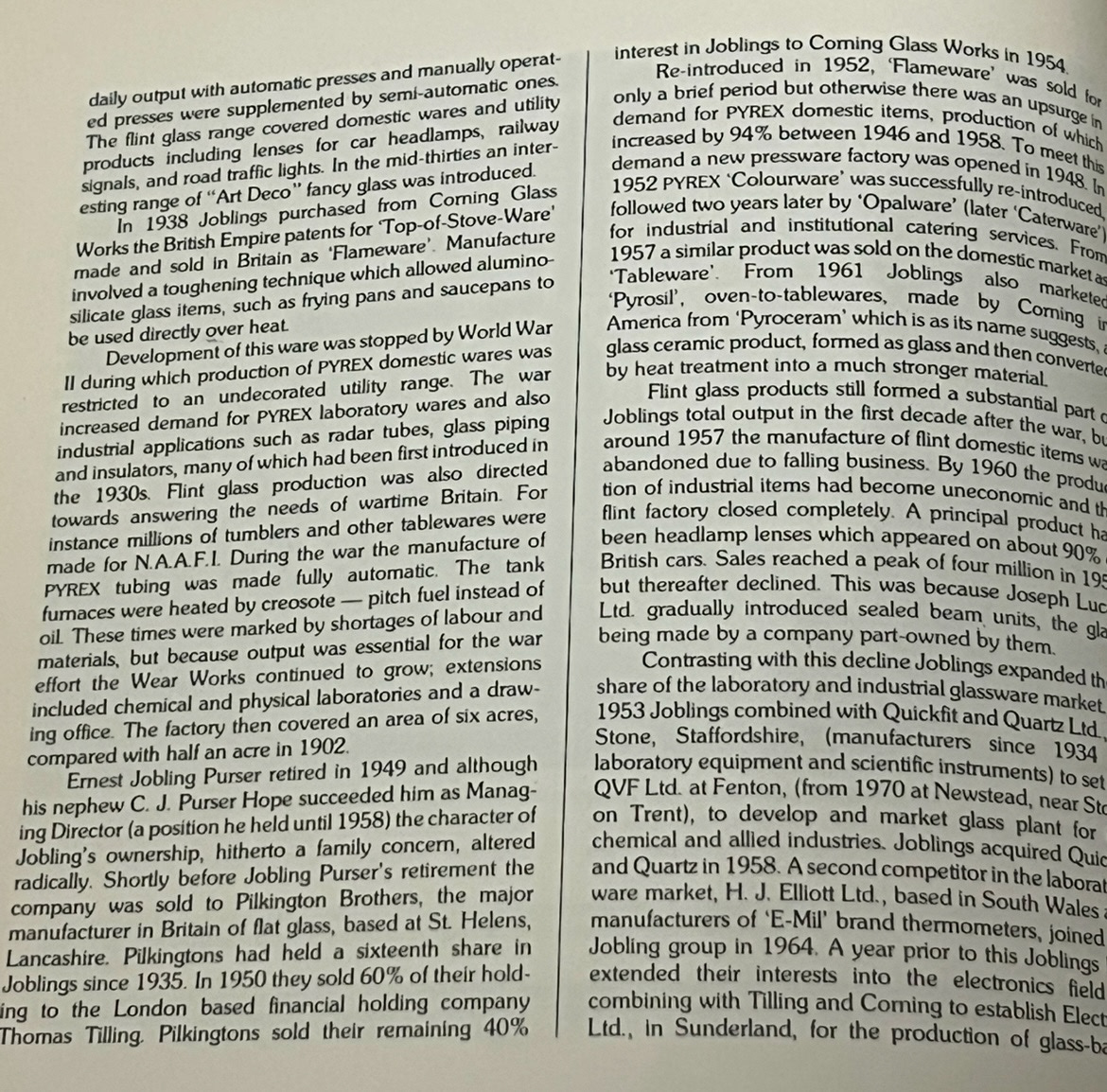


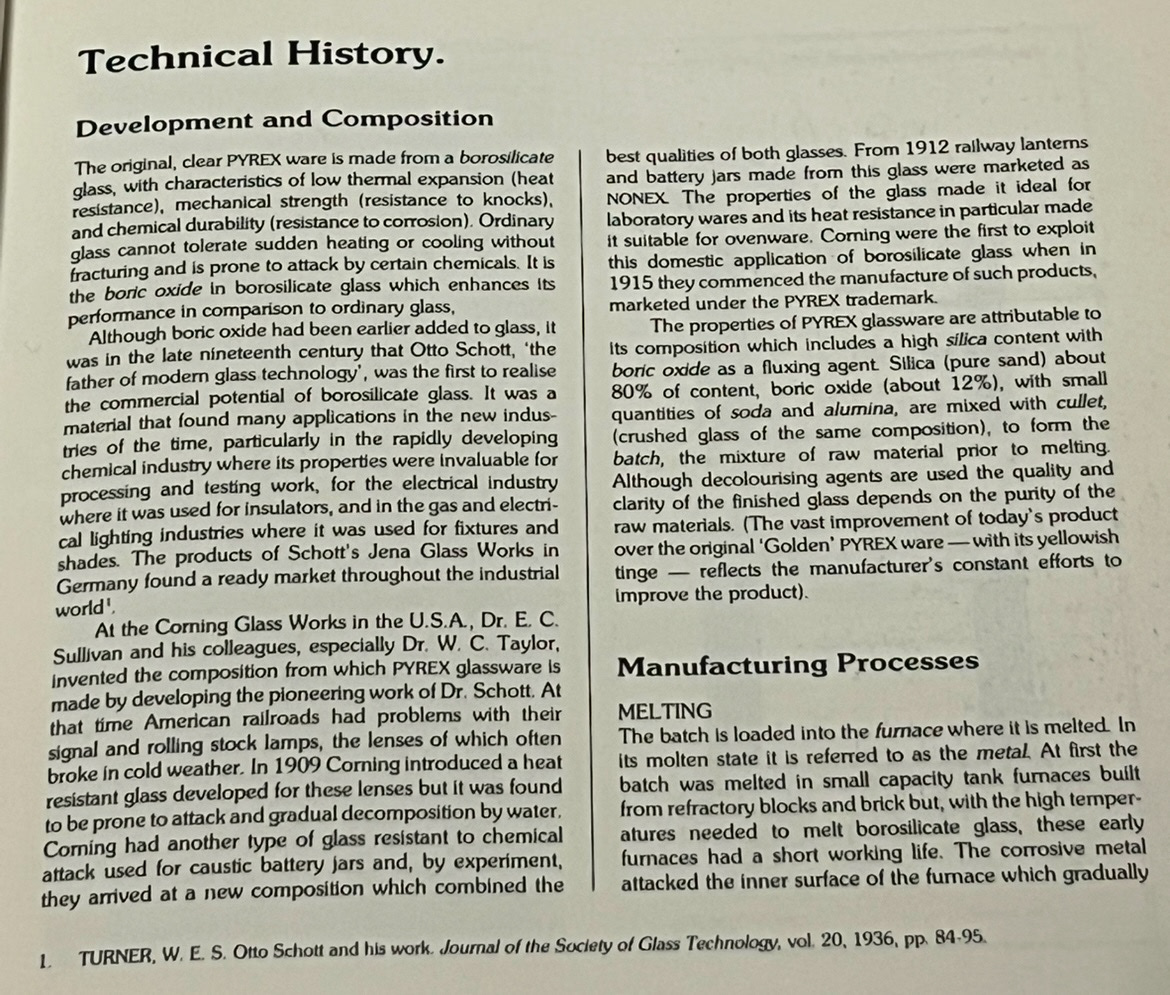
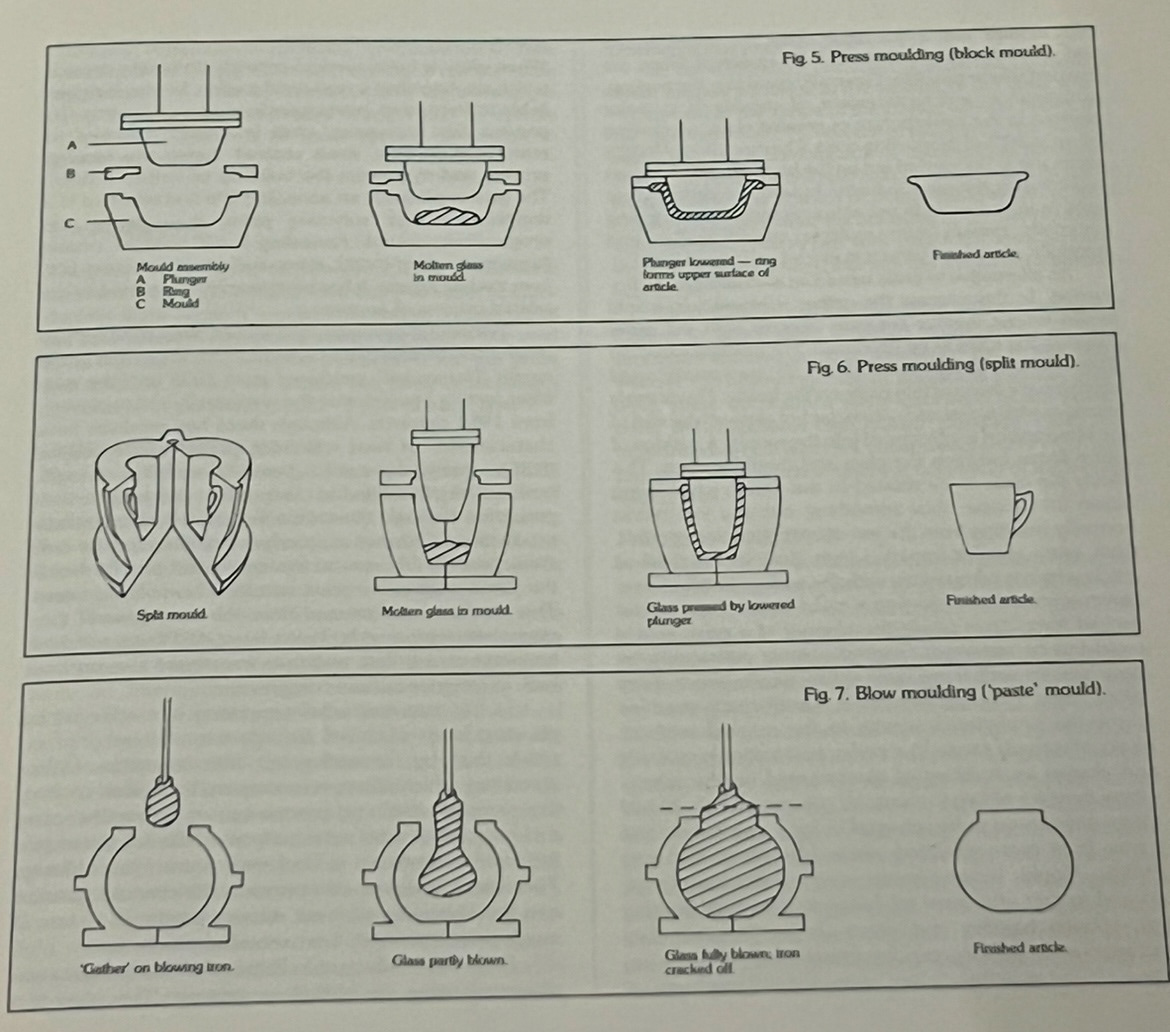
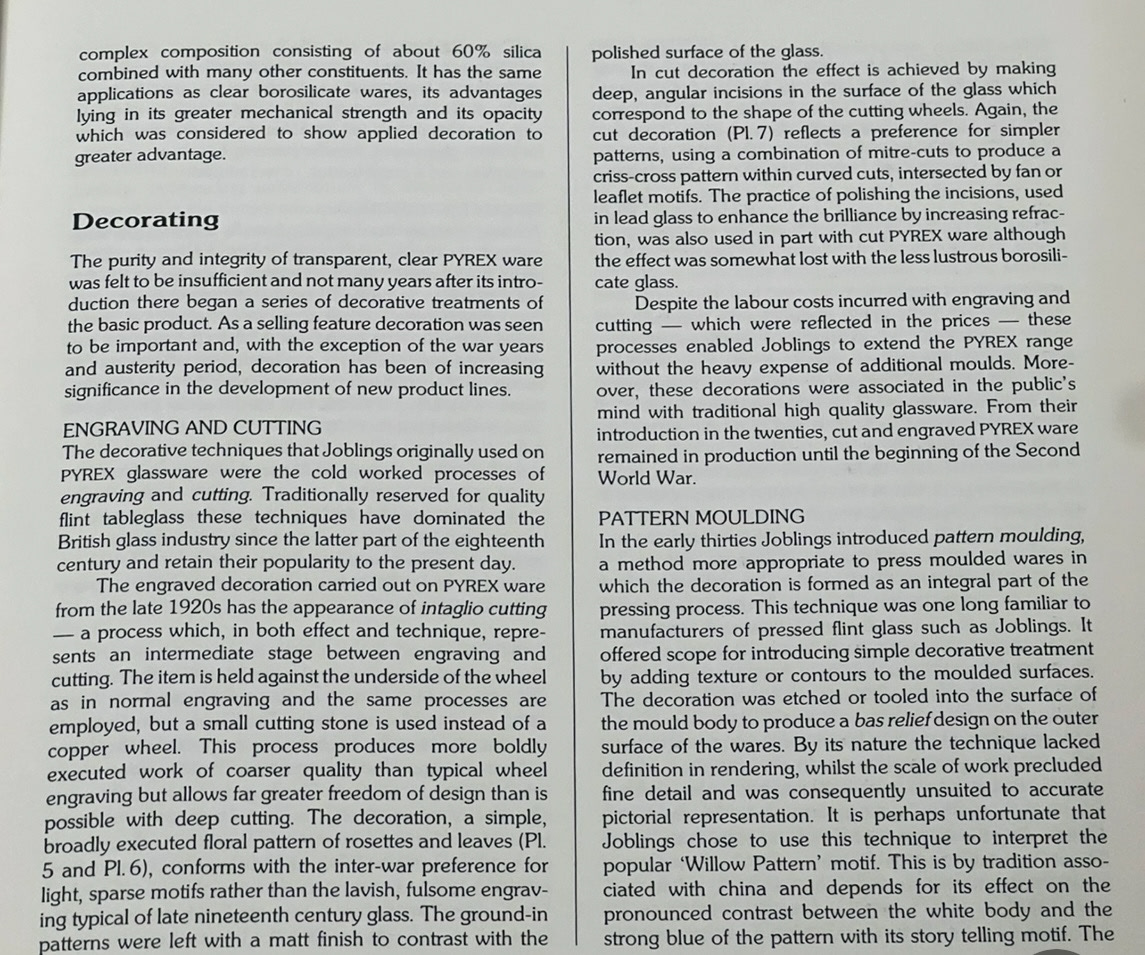
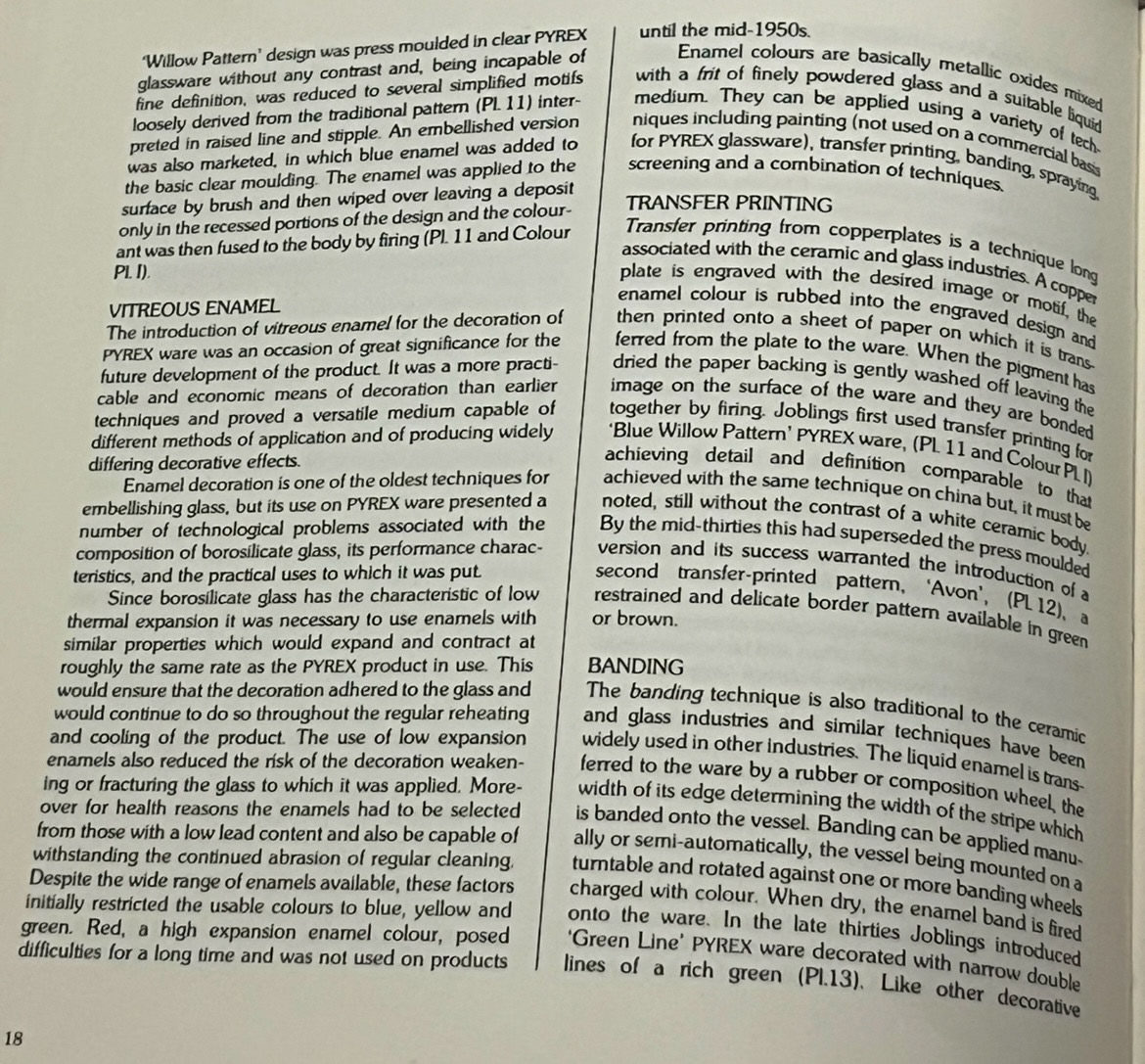
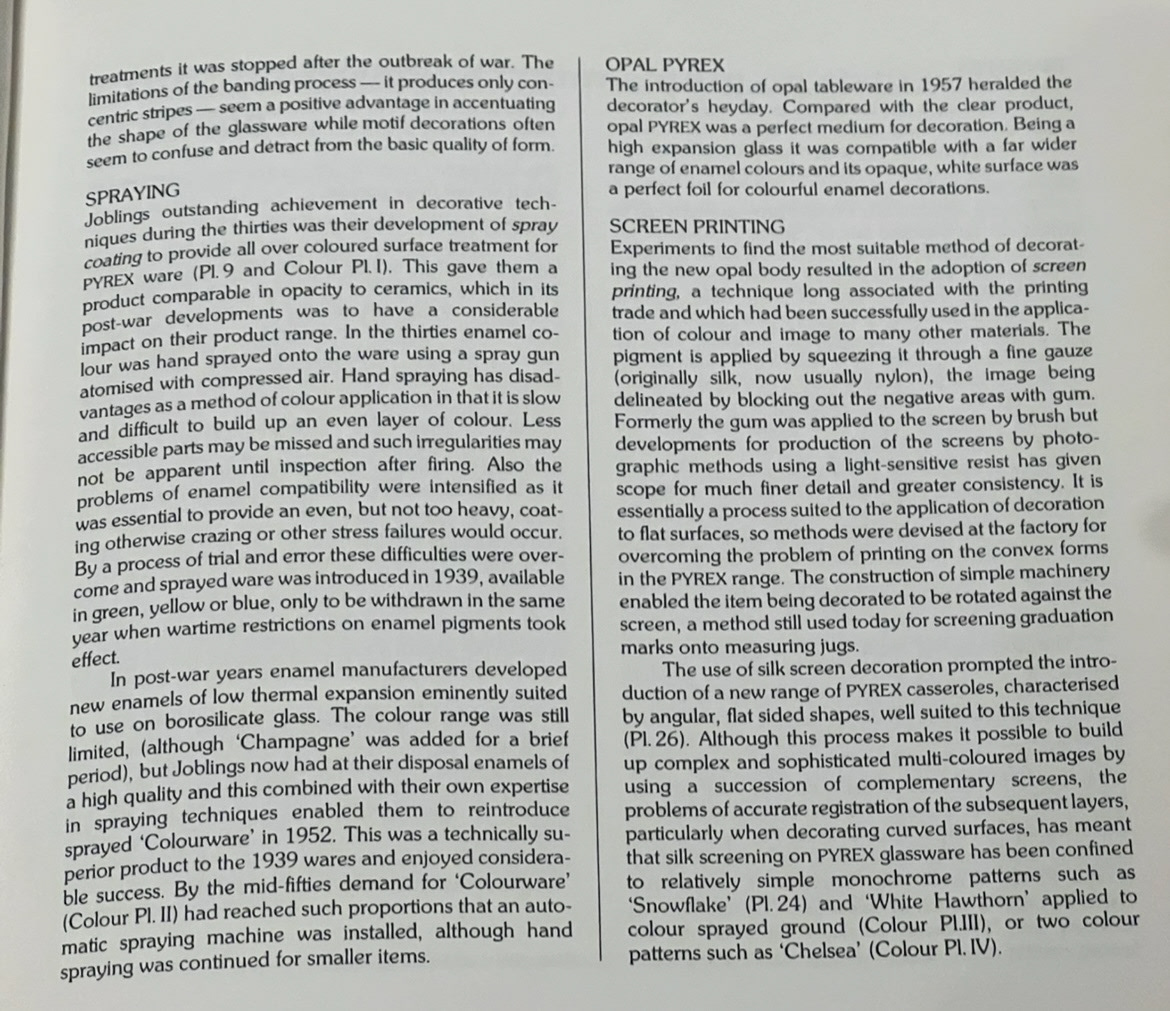
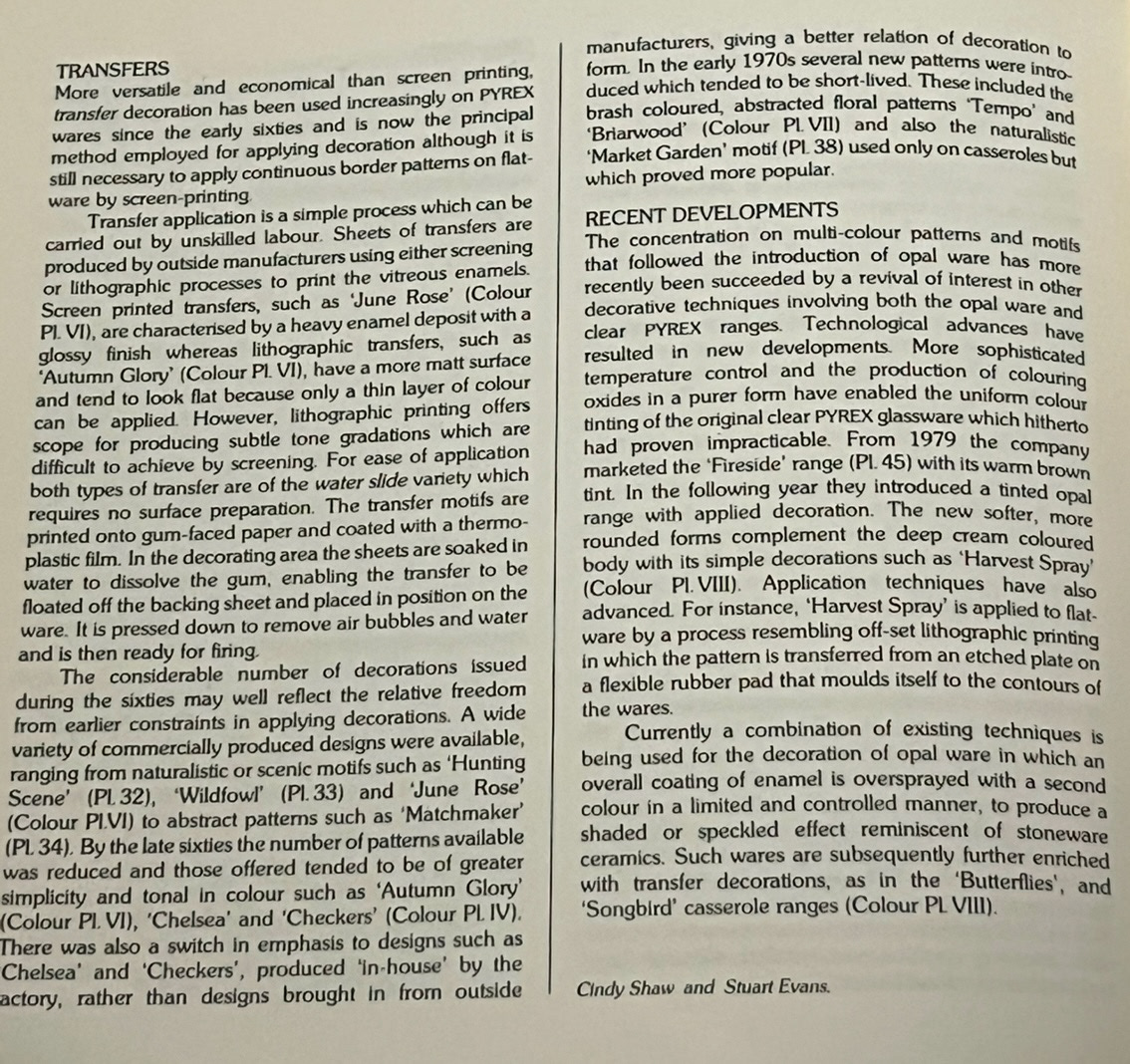

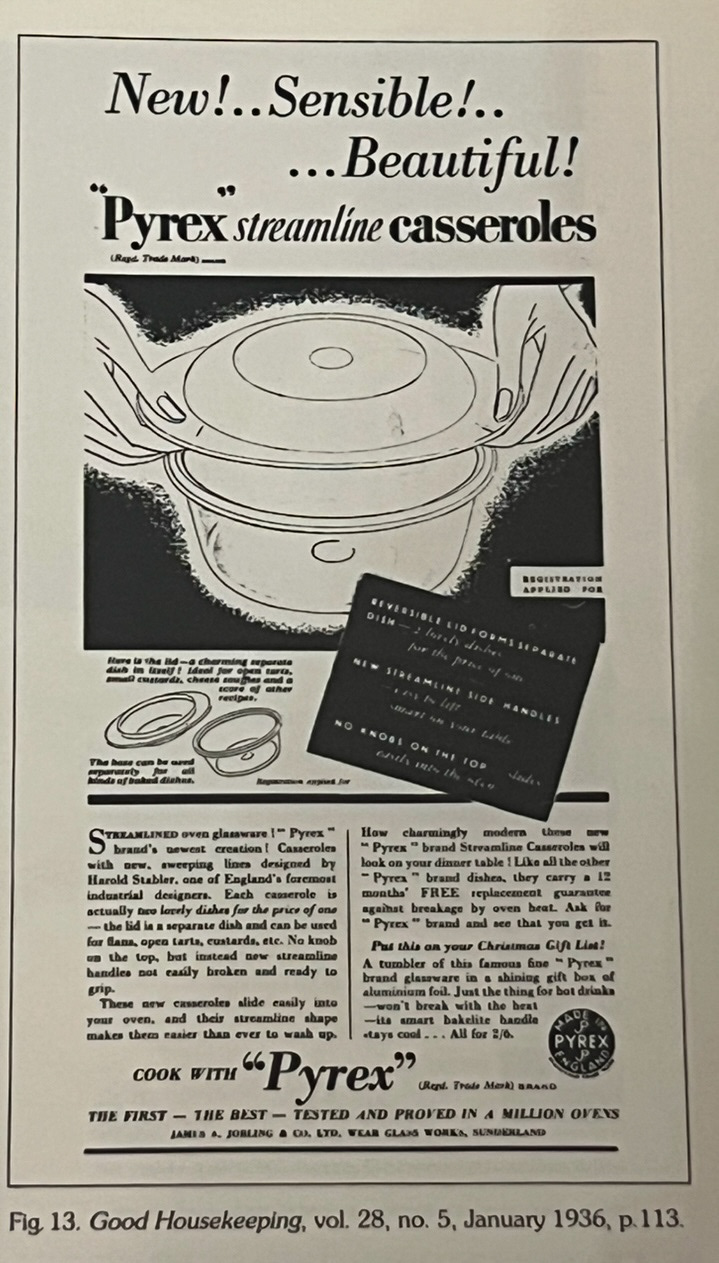
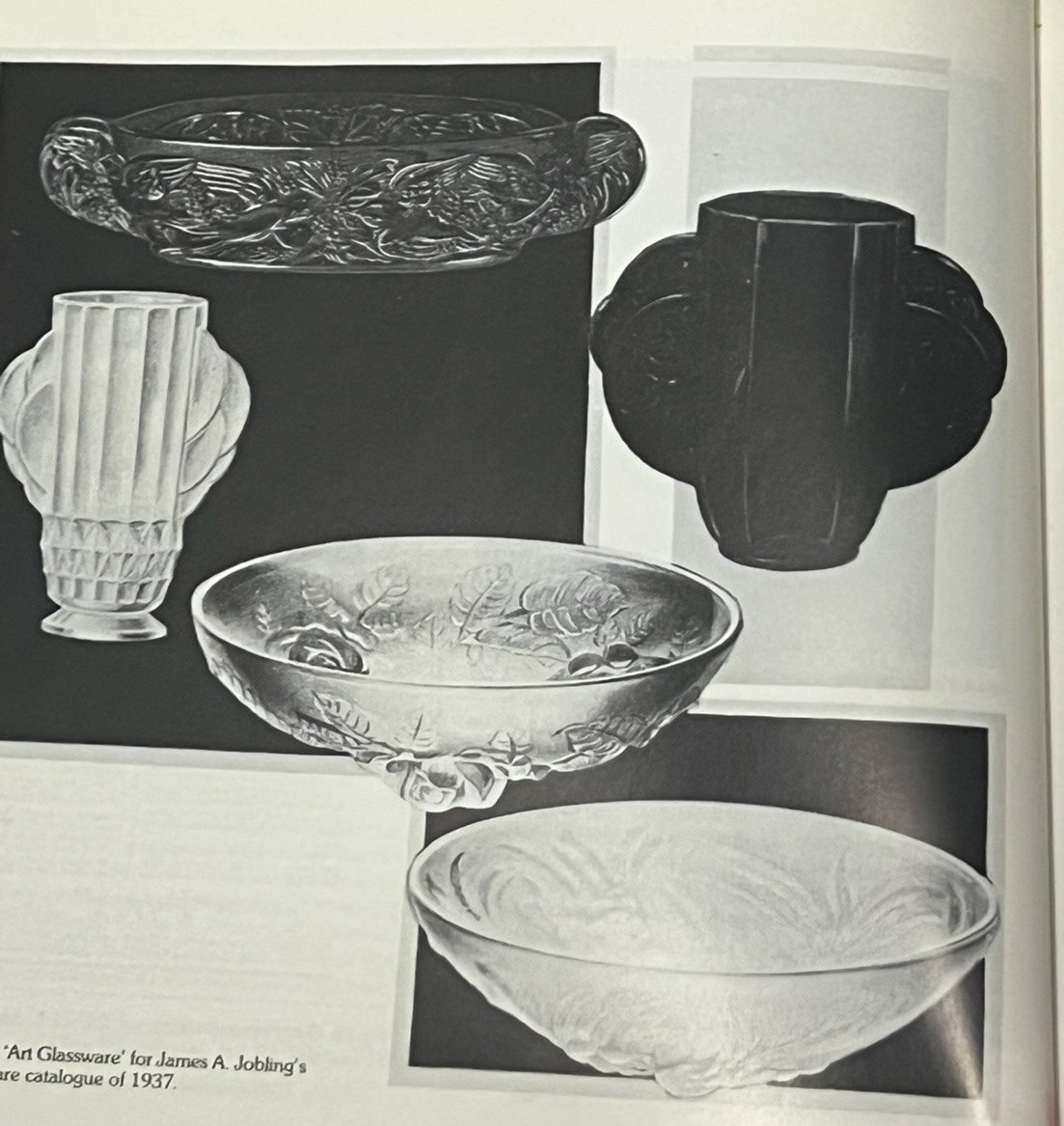
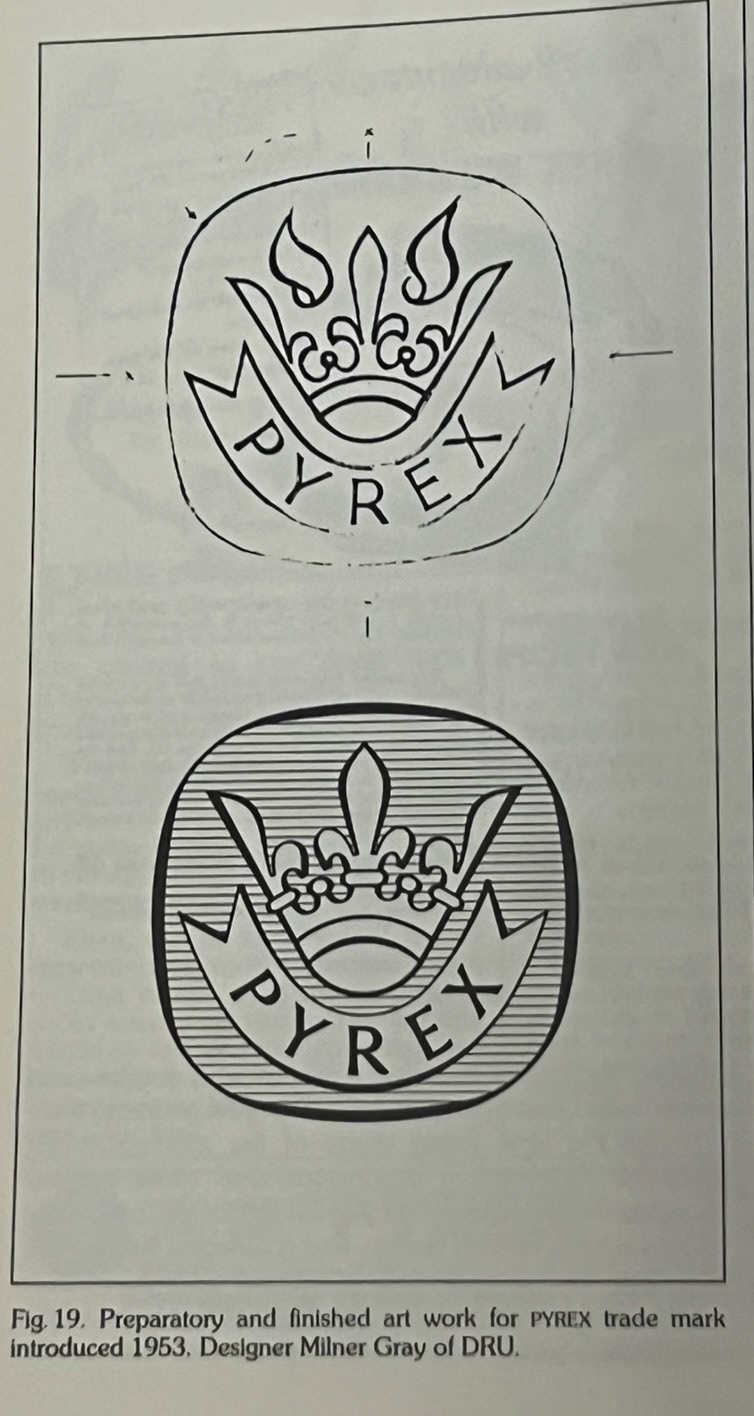



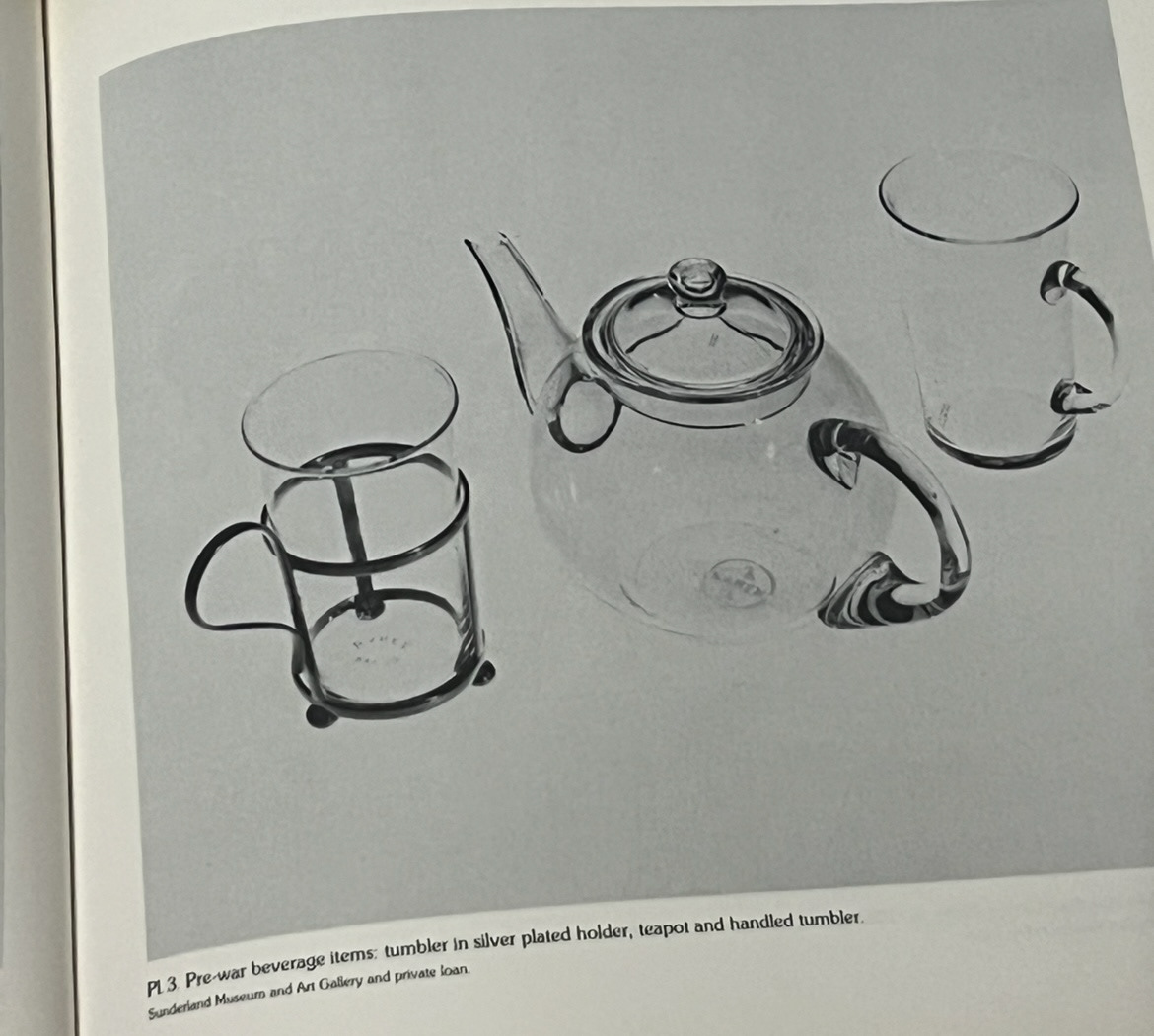

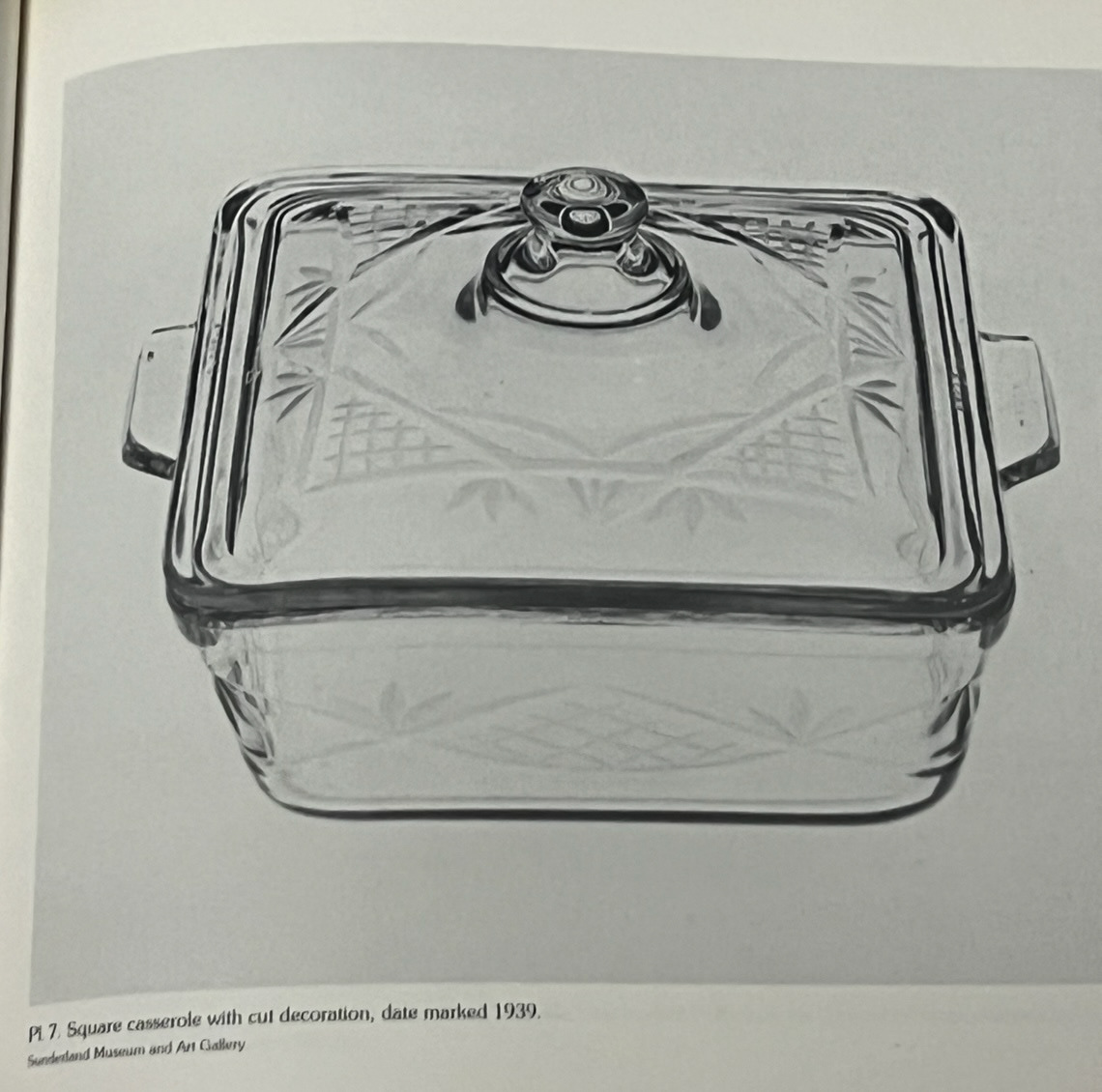
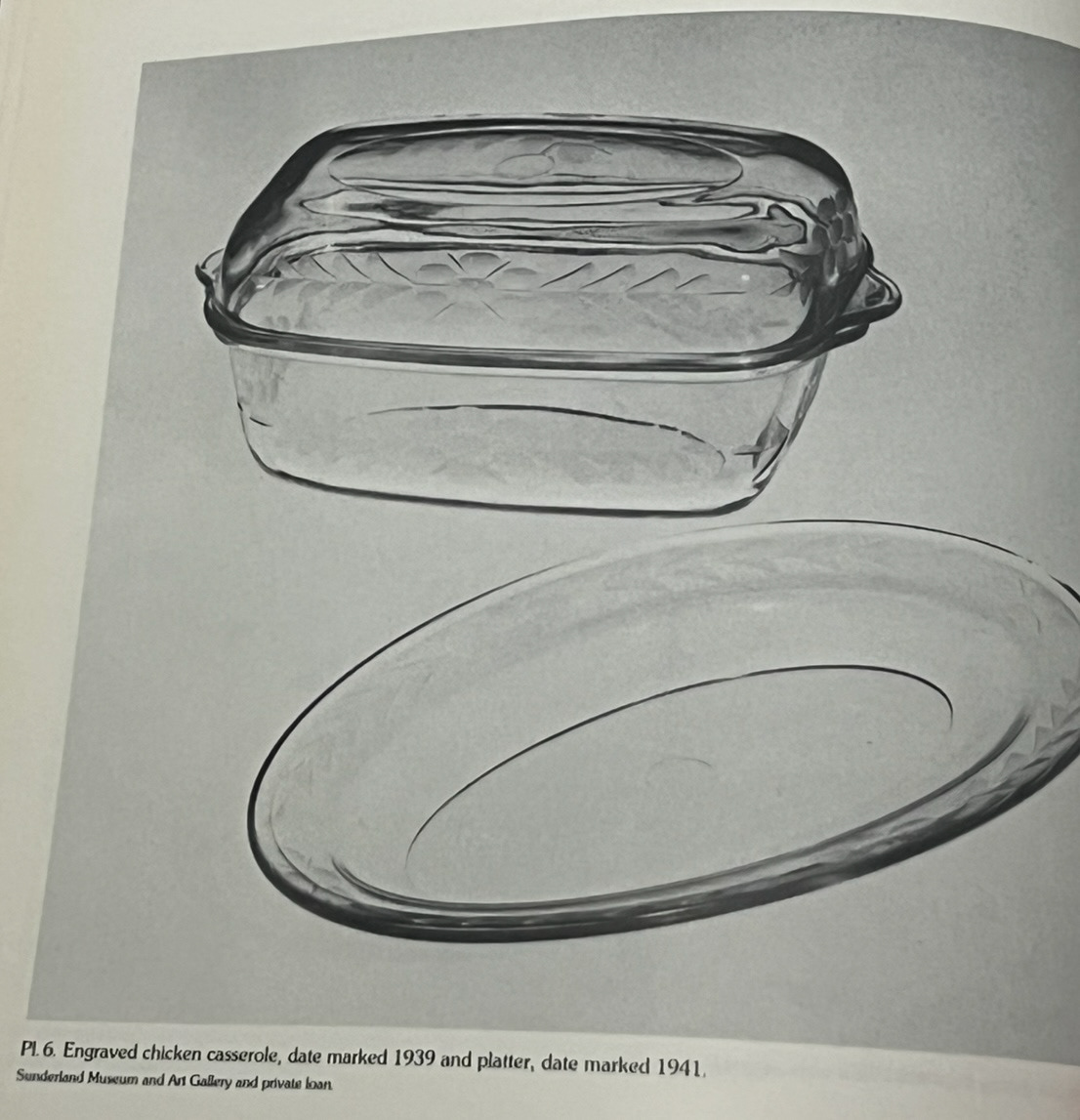
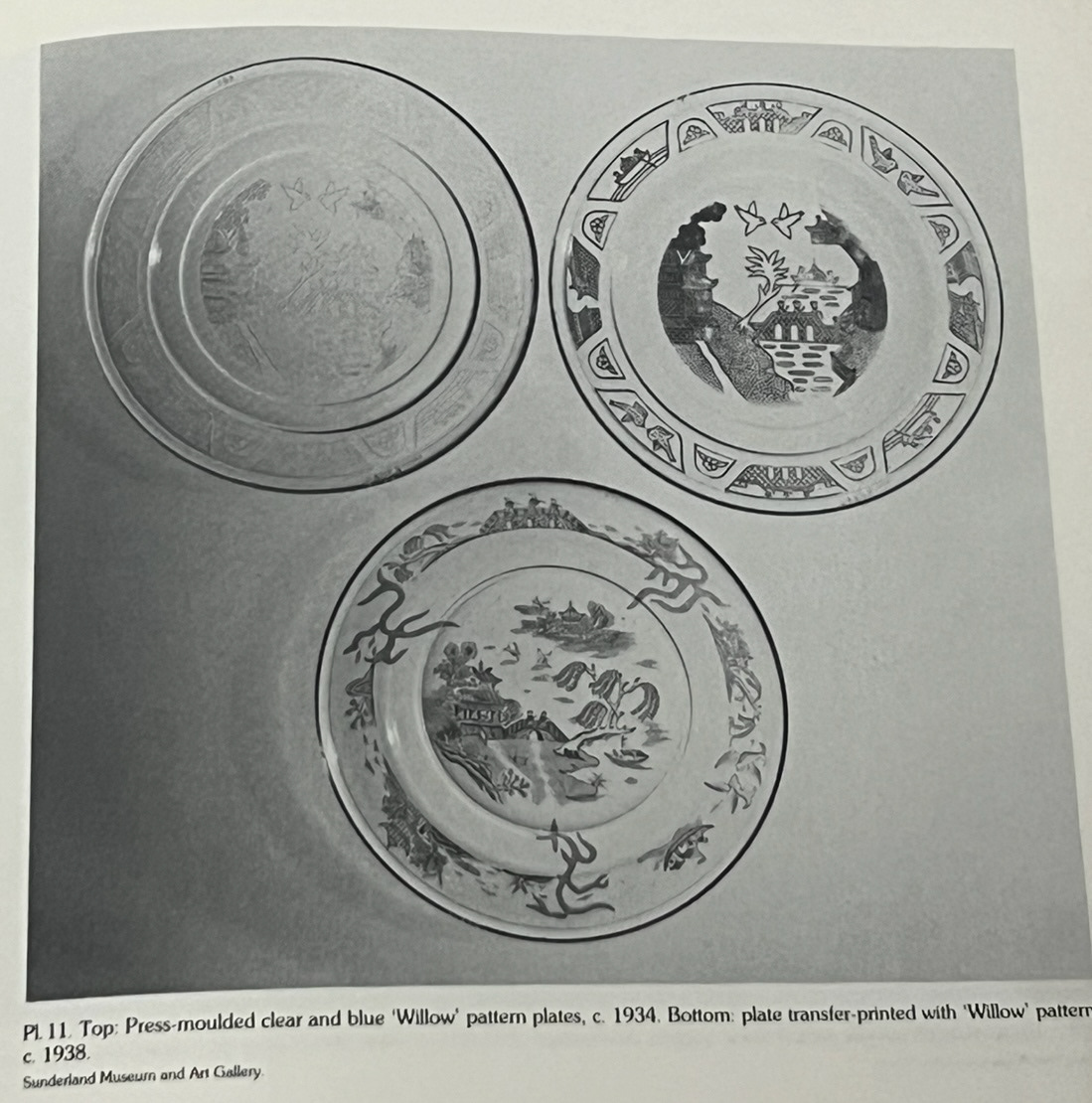
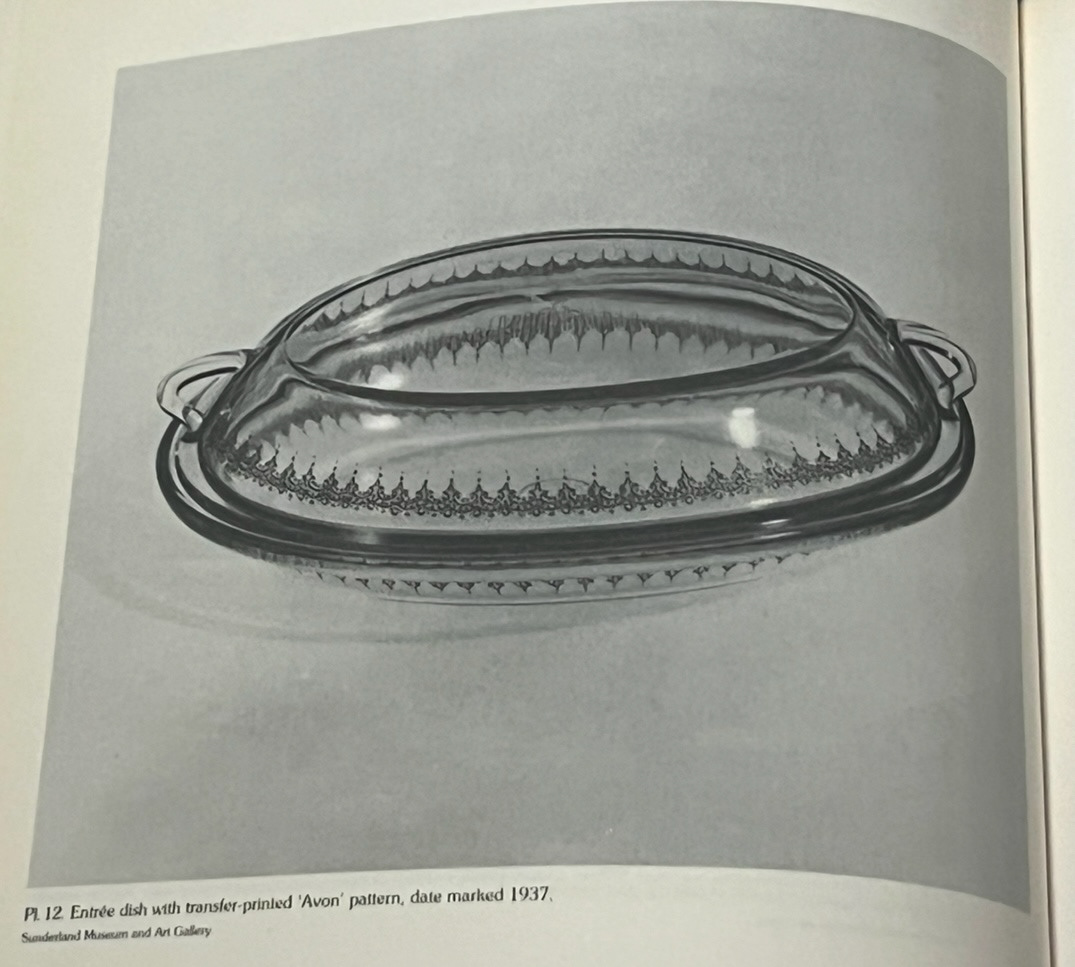
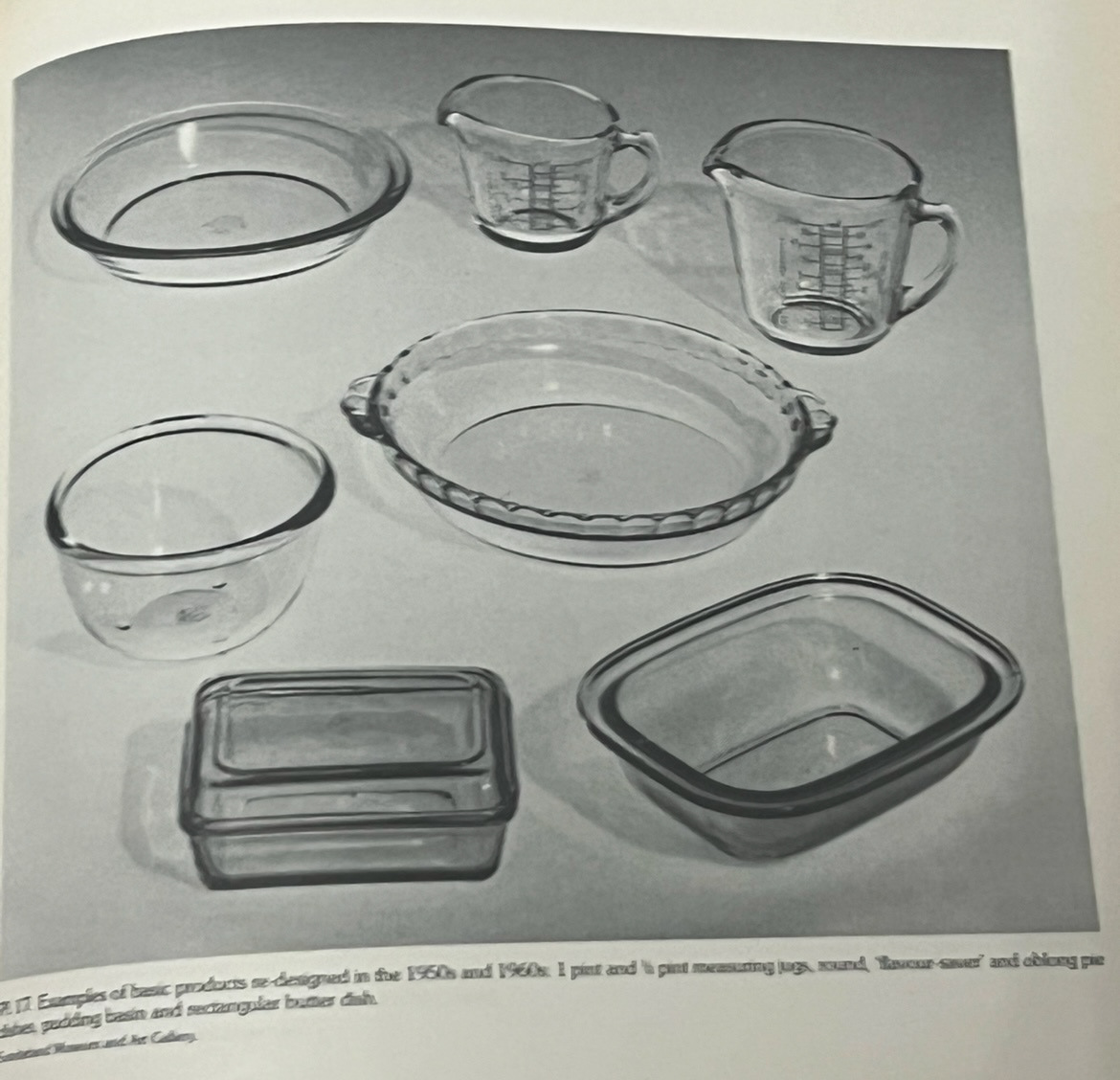

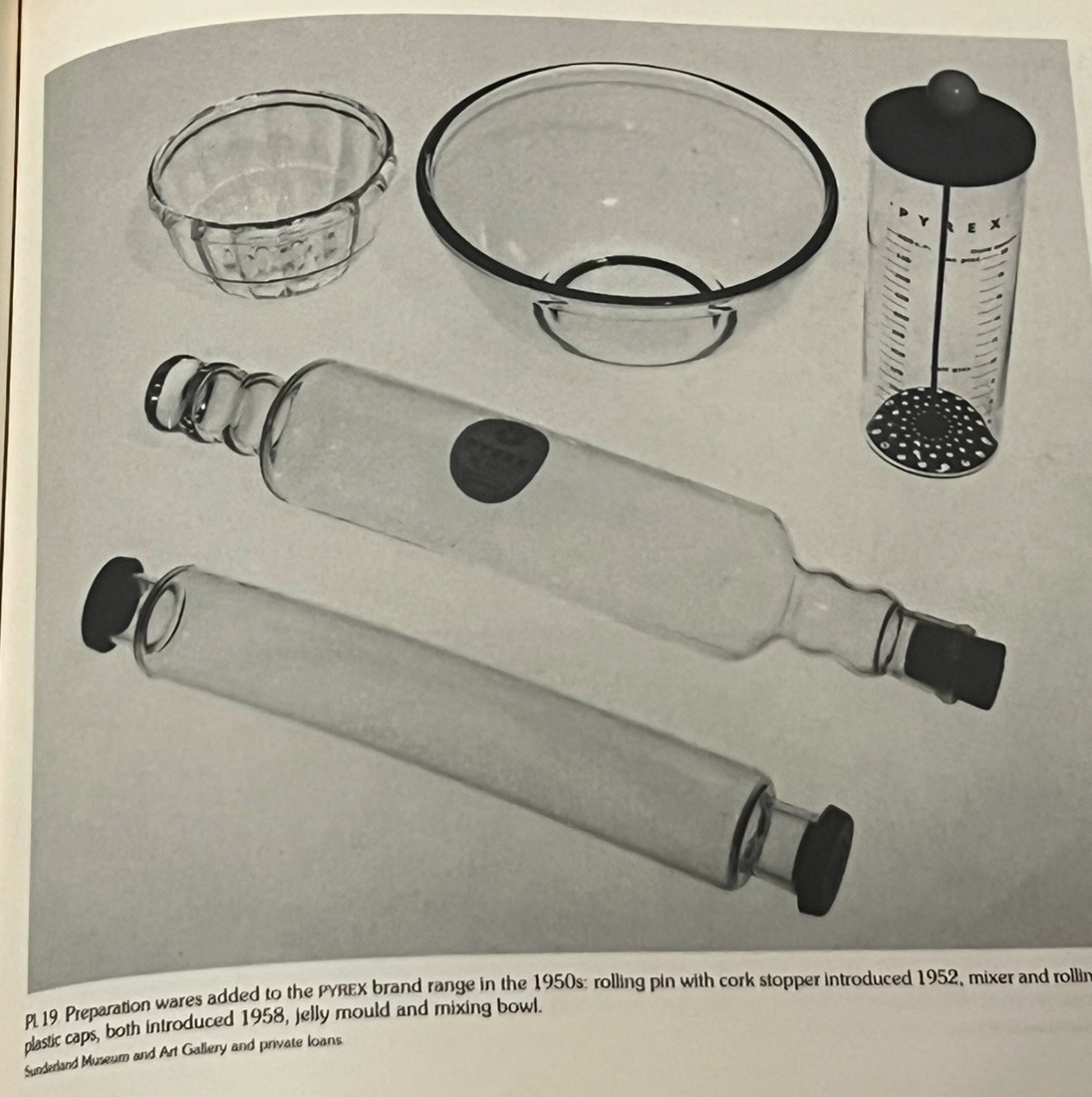
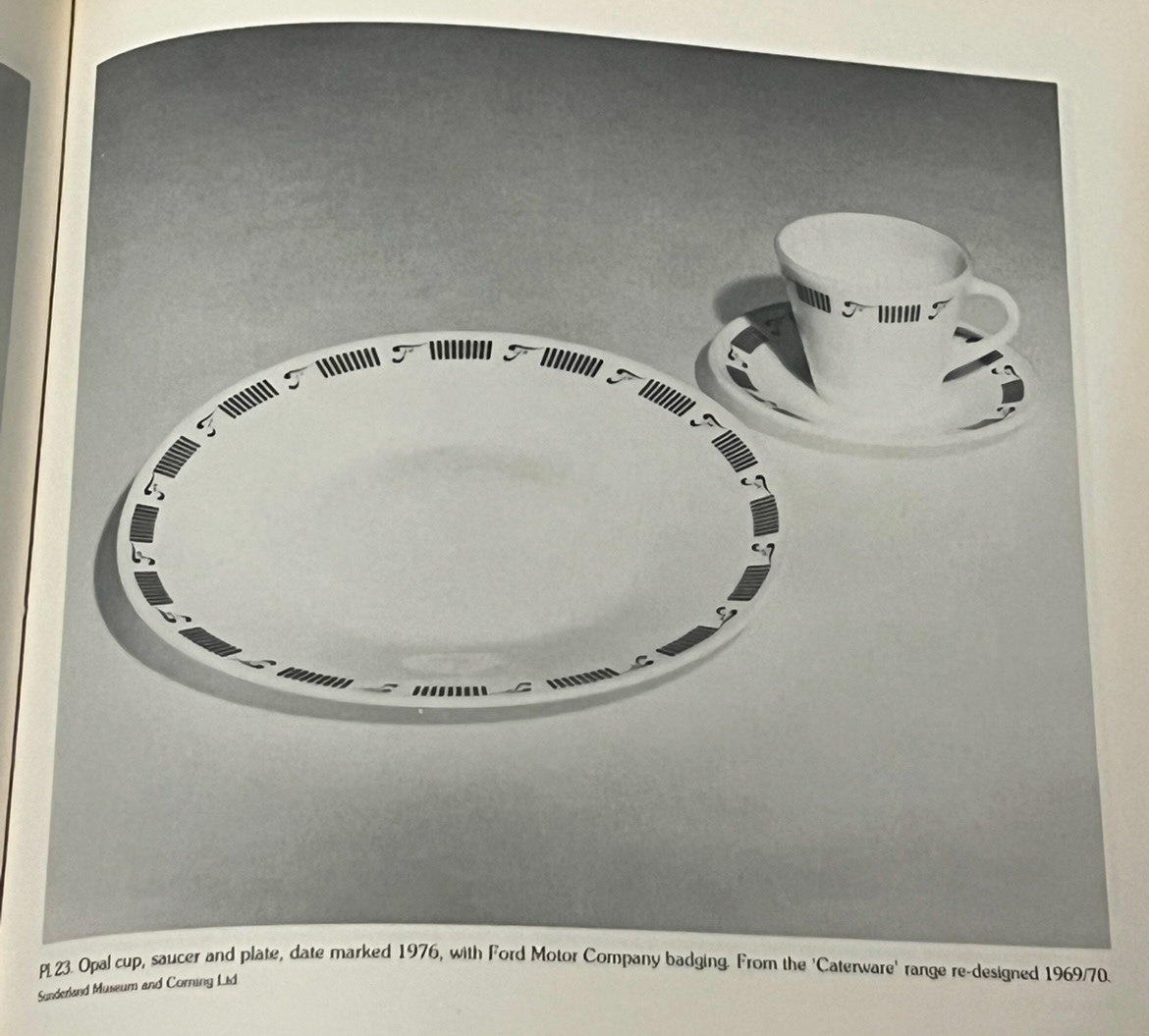
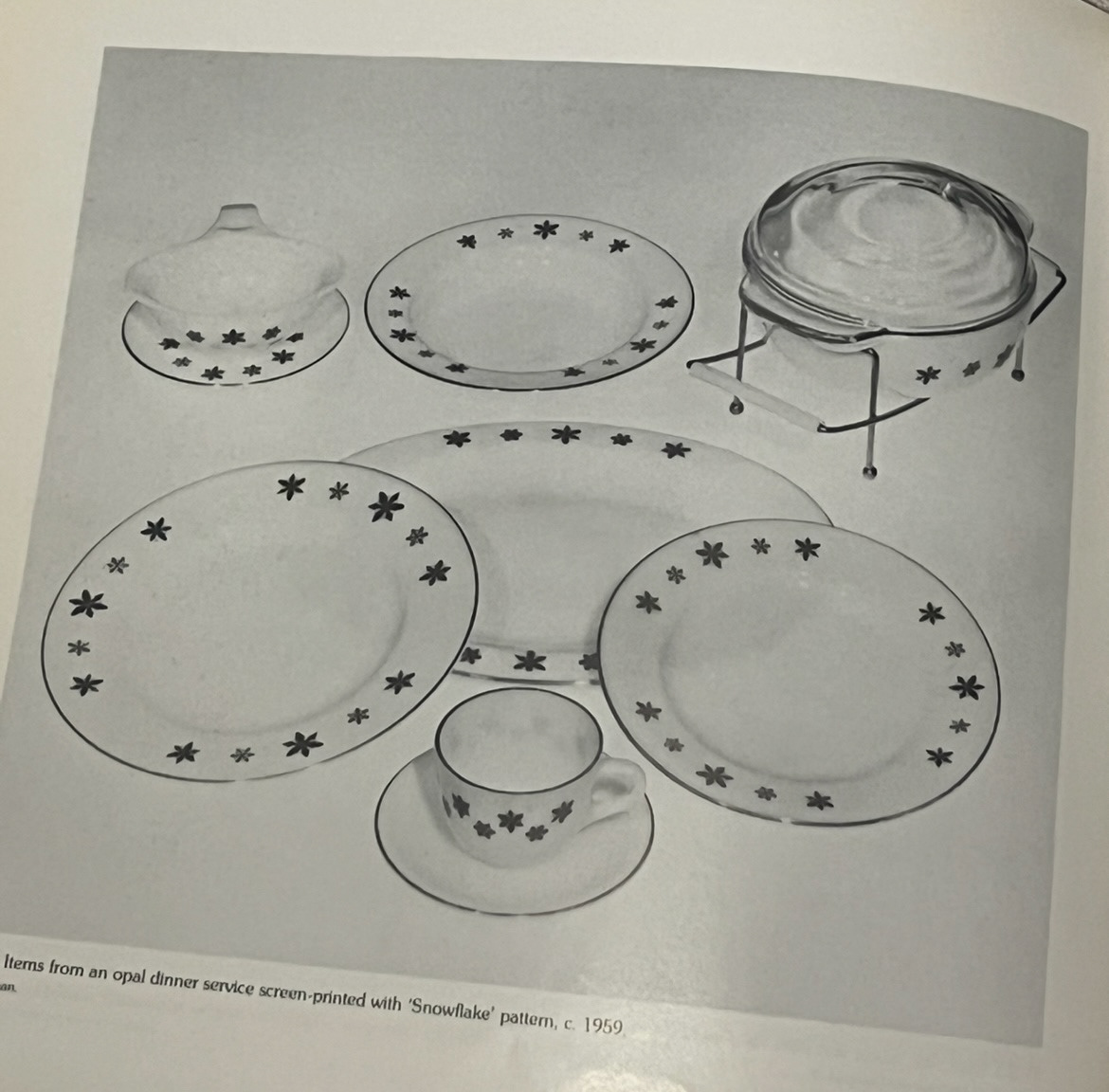
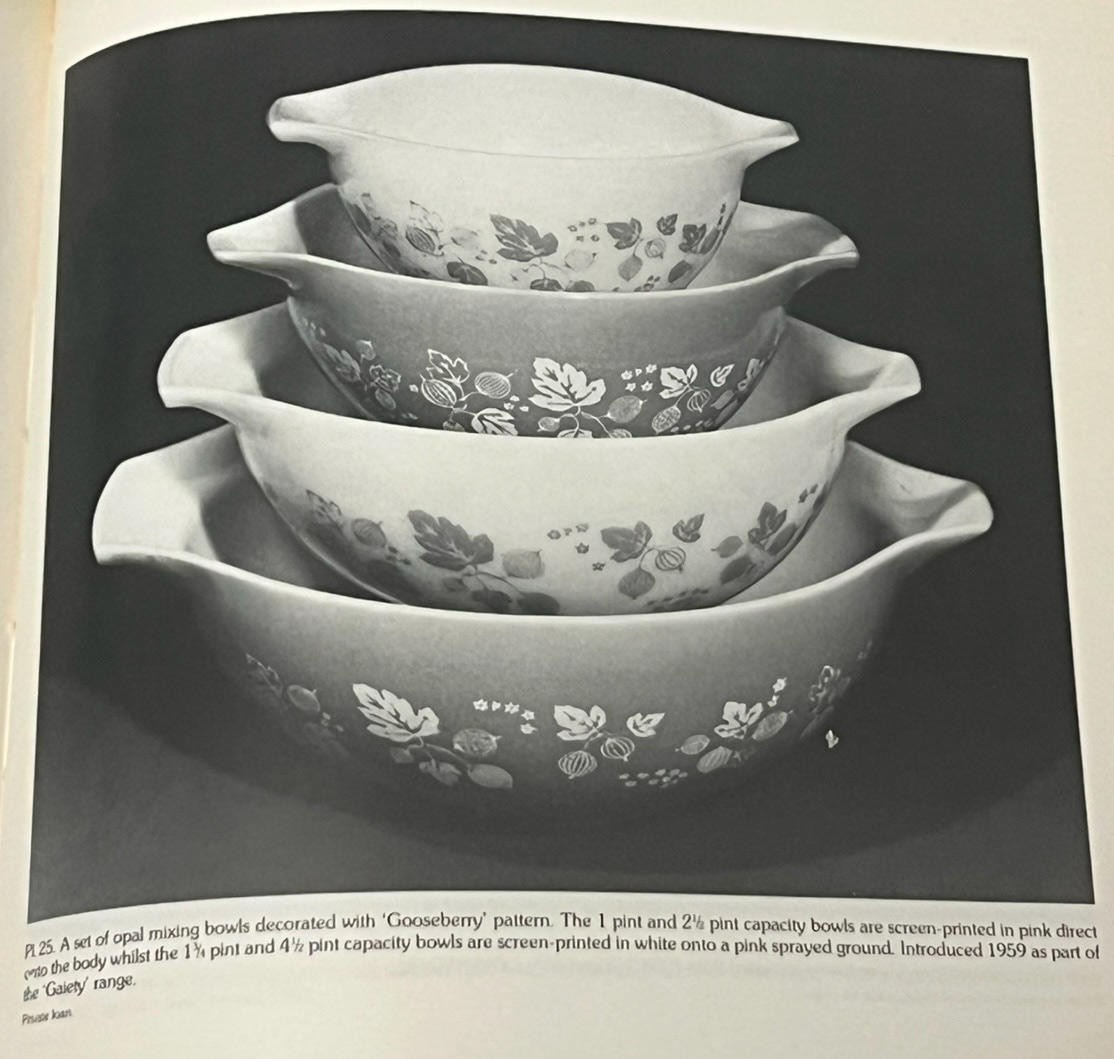
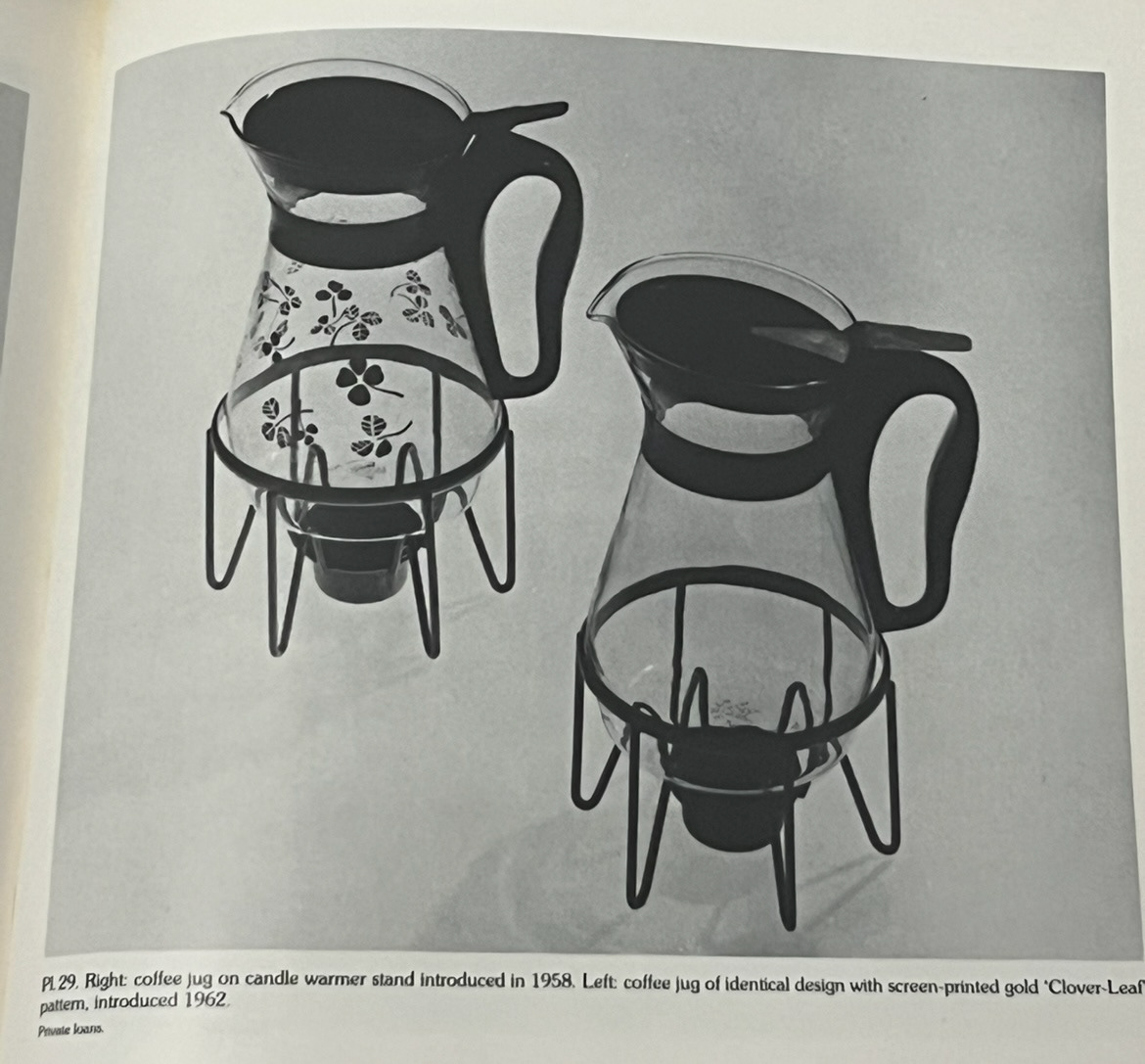

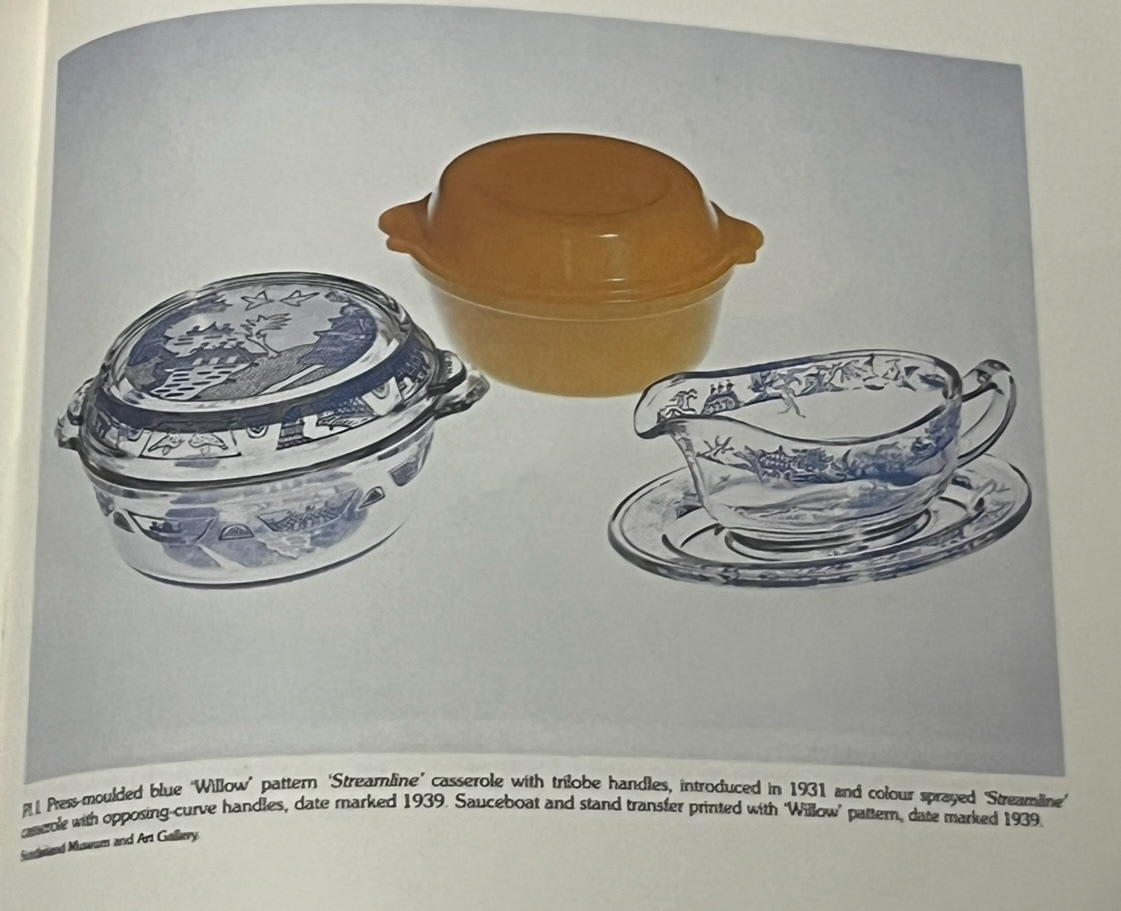
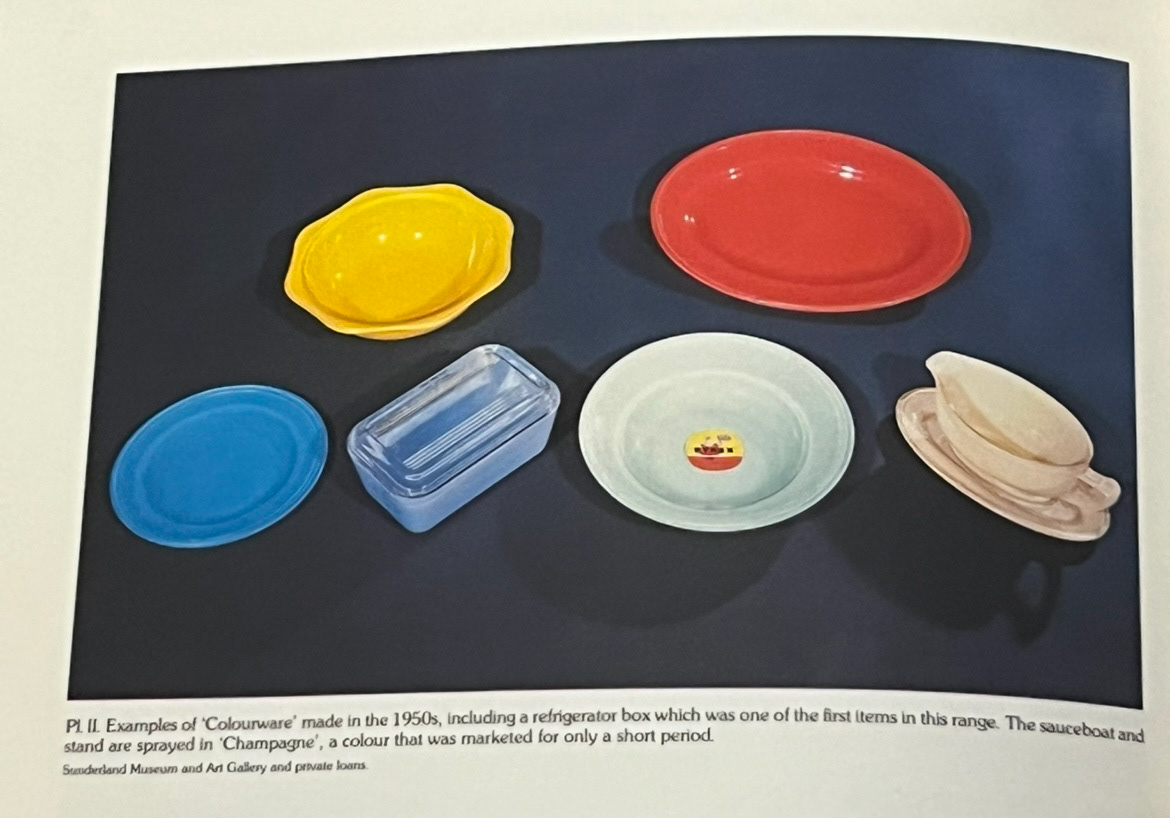
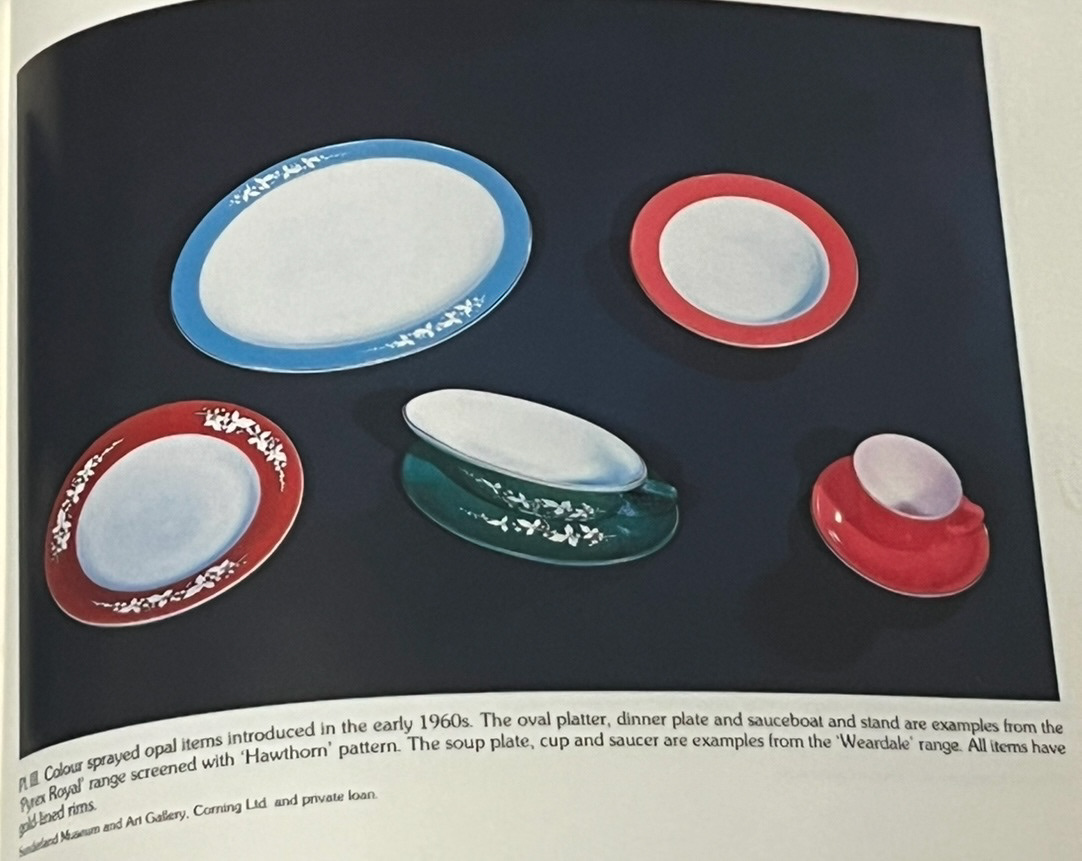

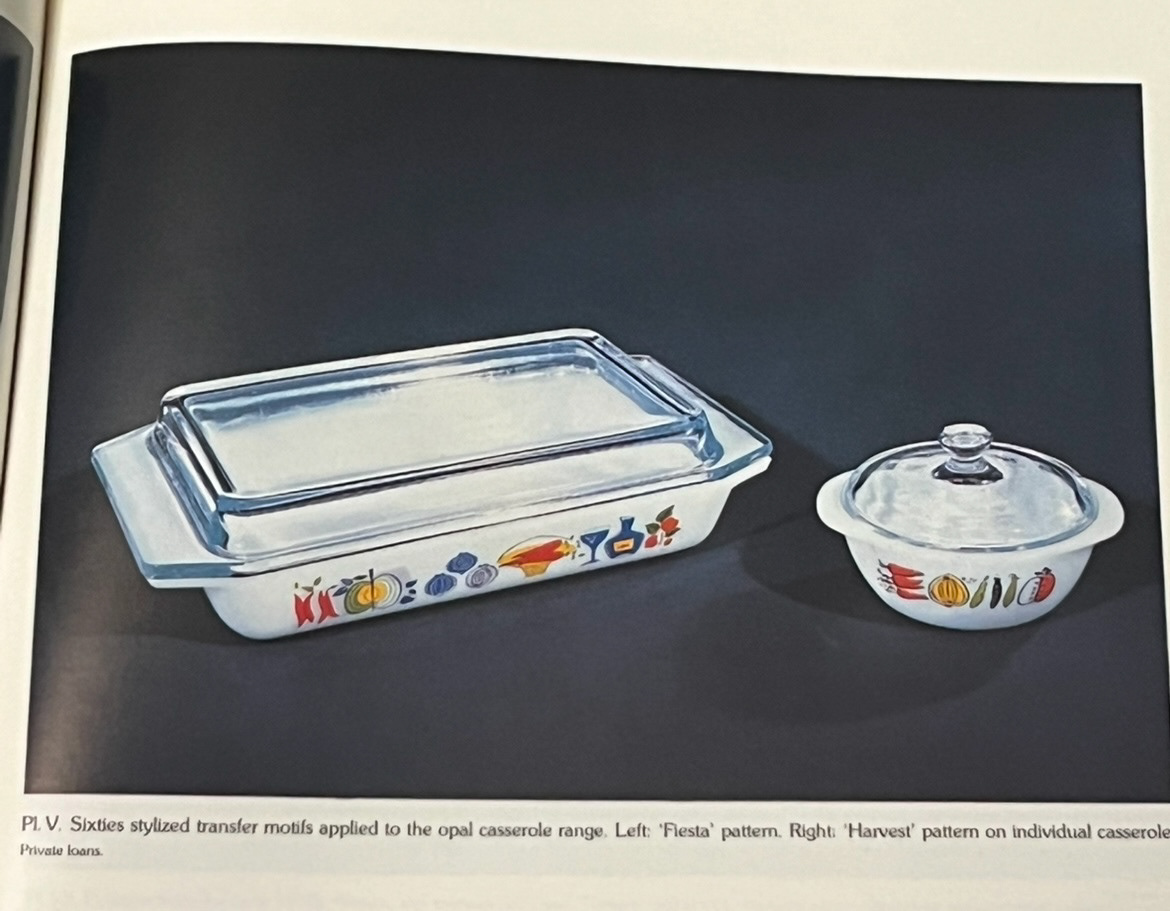
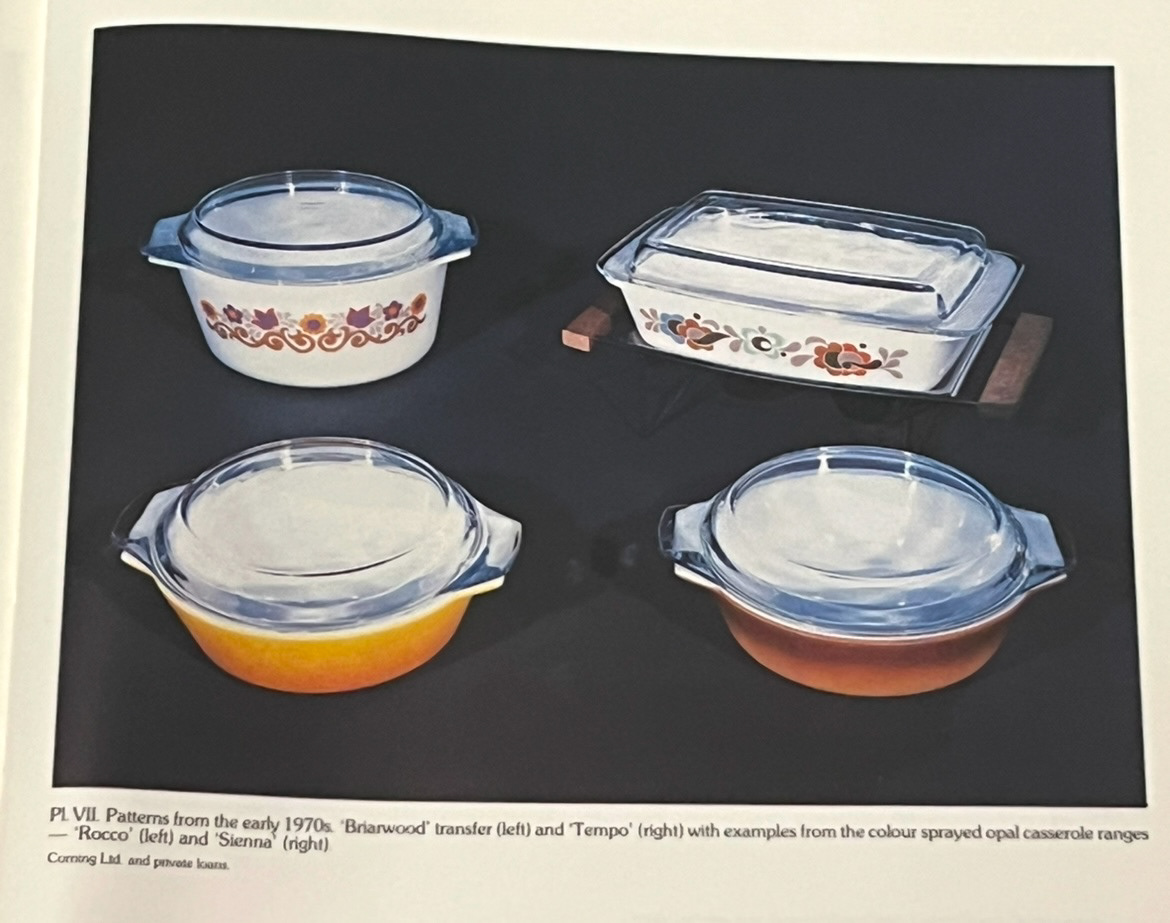

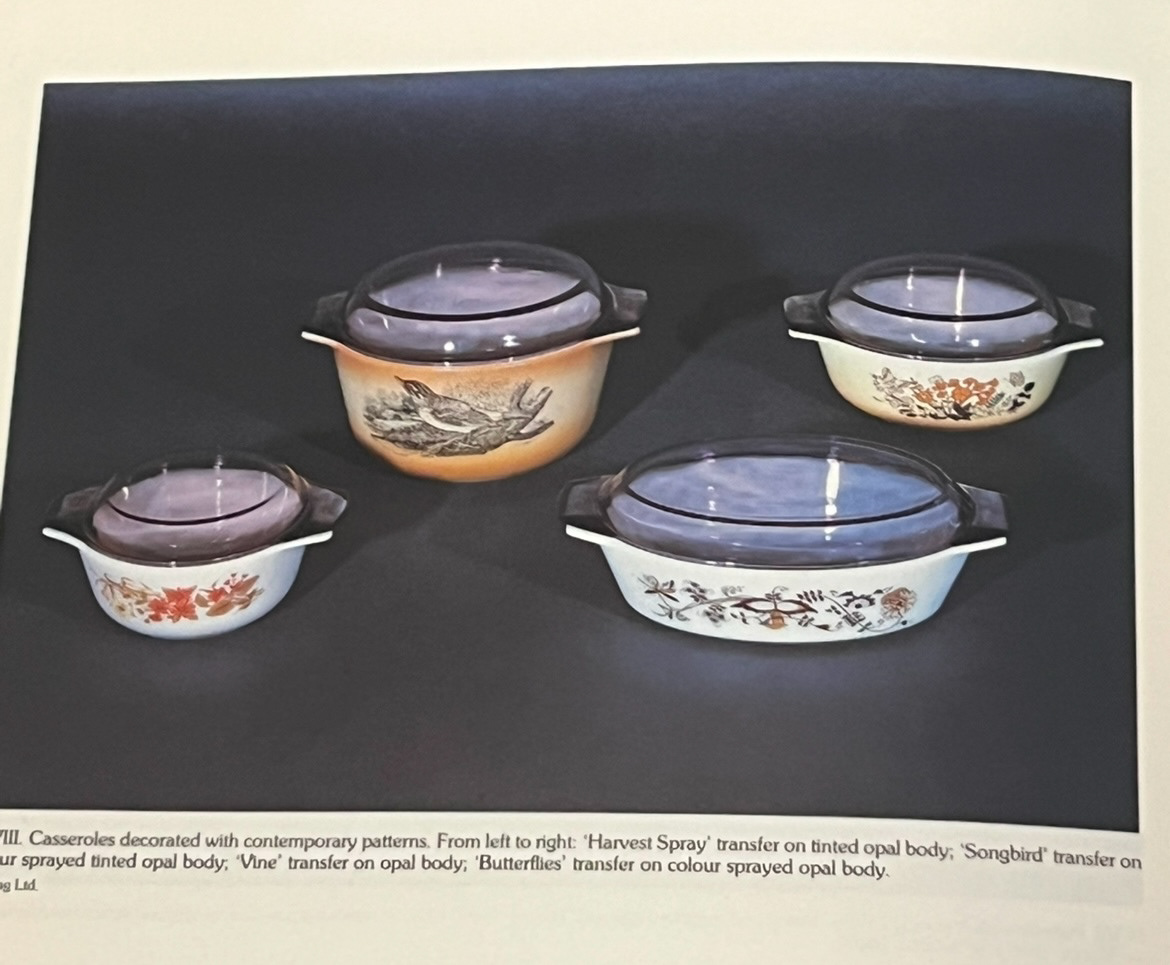
I found this book to be very informative and interesting about the different processes that went into creating different pyrex pieces, I also found lots of inspiration through the different forms but mainly the decoration. I really love how pyrex was the pinnacle of functional design however featured lots of beautiful and interesting design. I chose to look at this book as my great grandfather on my grandads side, worked at pyrex for many years creating such pieces and I found it exciting to have a bit more of an insight into some of the jobs that he may have been doing in his work there
The final two books that I looked at were about Sunderland Ware.
The first of these two books was 'Sunderland Ware- The potteries of wearside'. I felt very privileged to have been able to take the time to read this book as it is a discontinued manual and identification guide of the Sunderland potteries which I am the first person ever to have been able to take out of the Sunderland library as it is usually only available through their referencing department. (below).

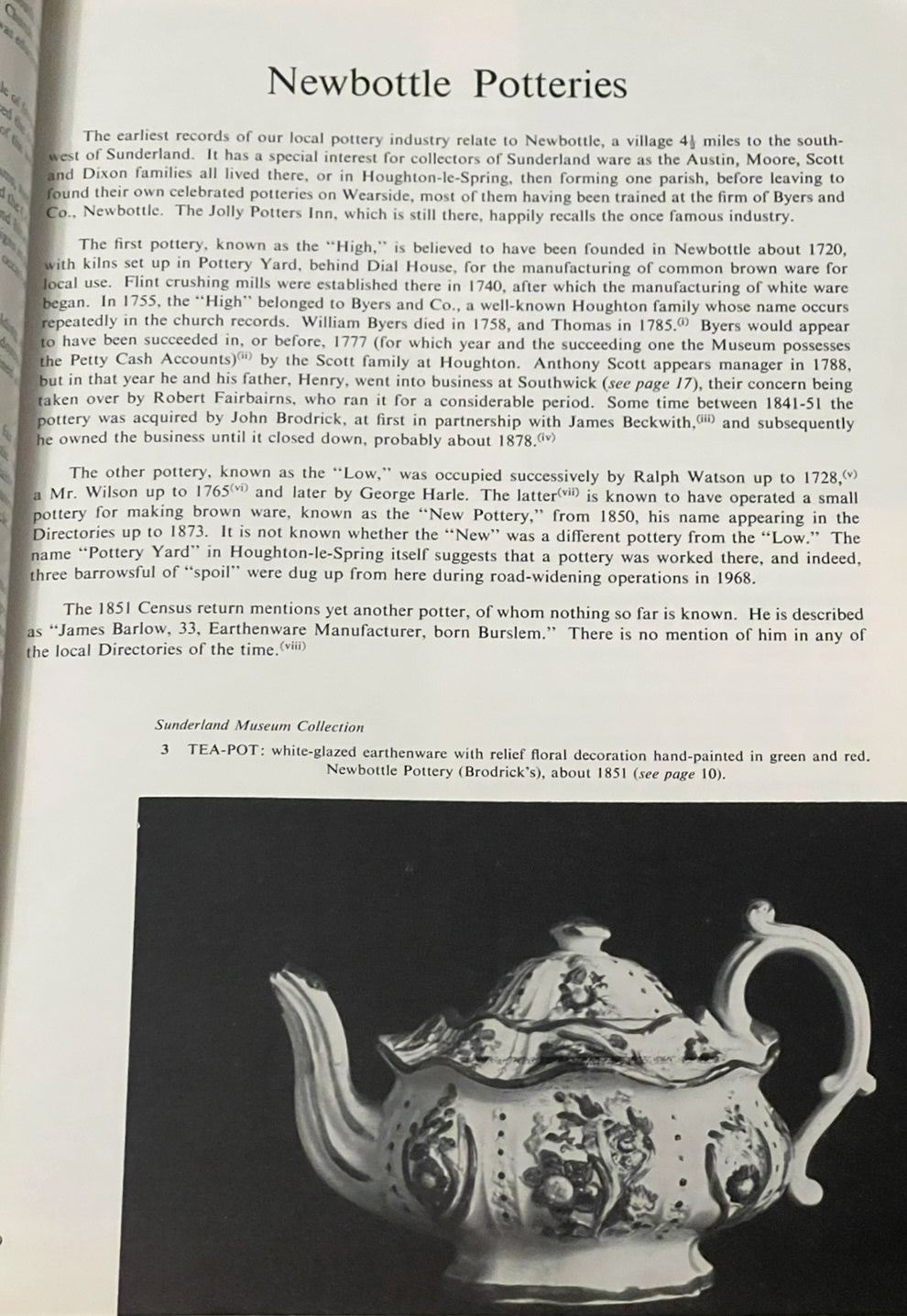
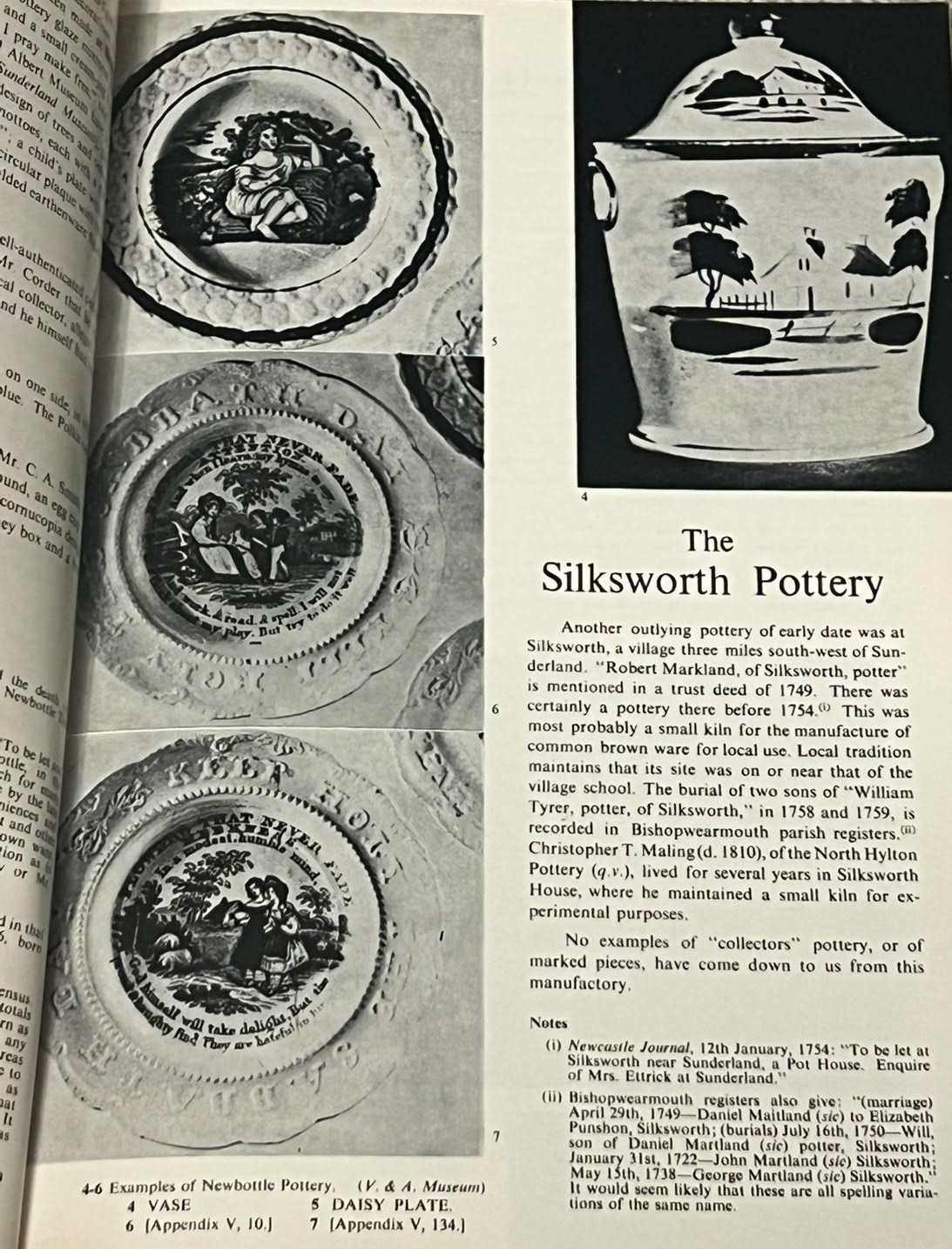
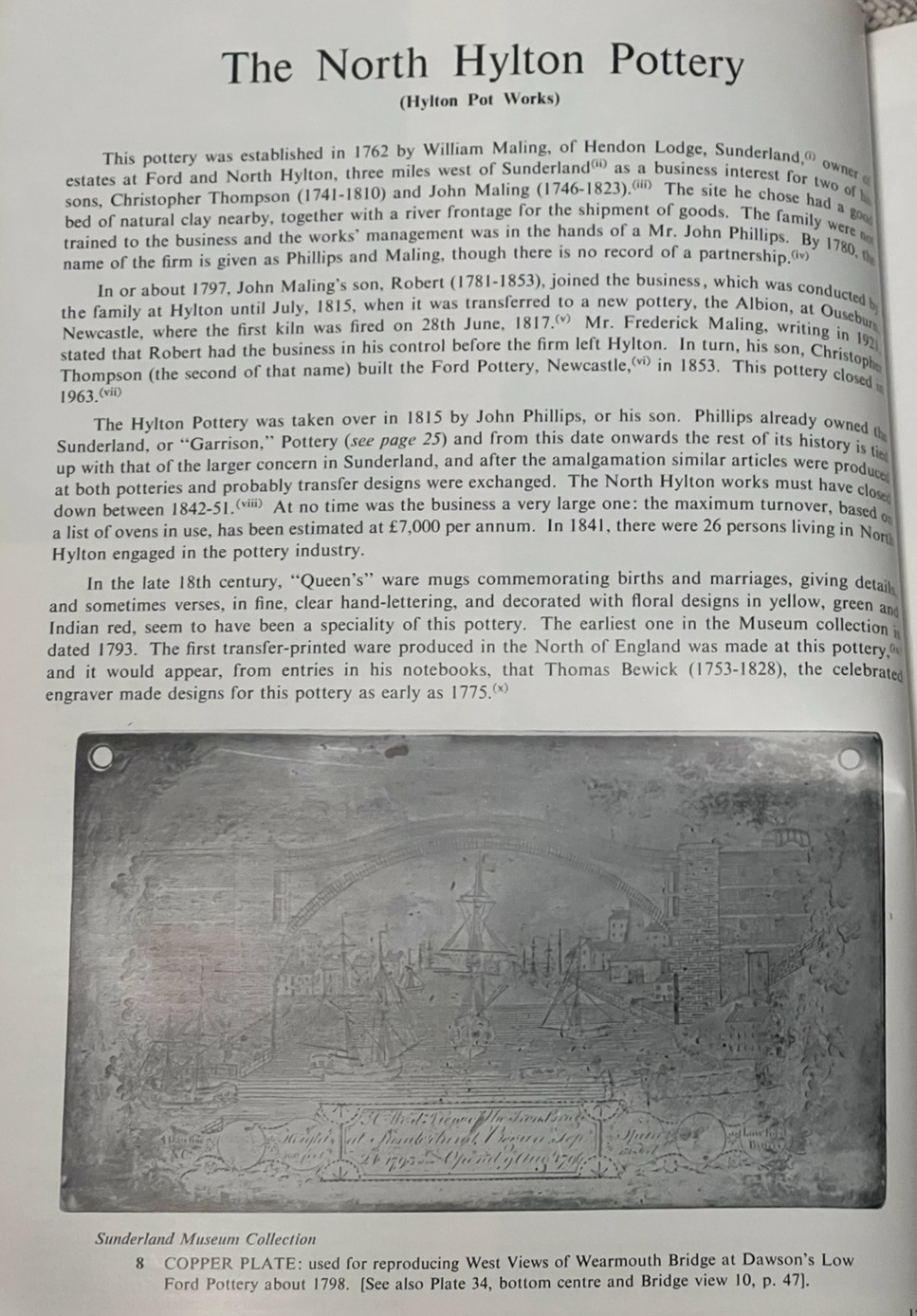
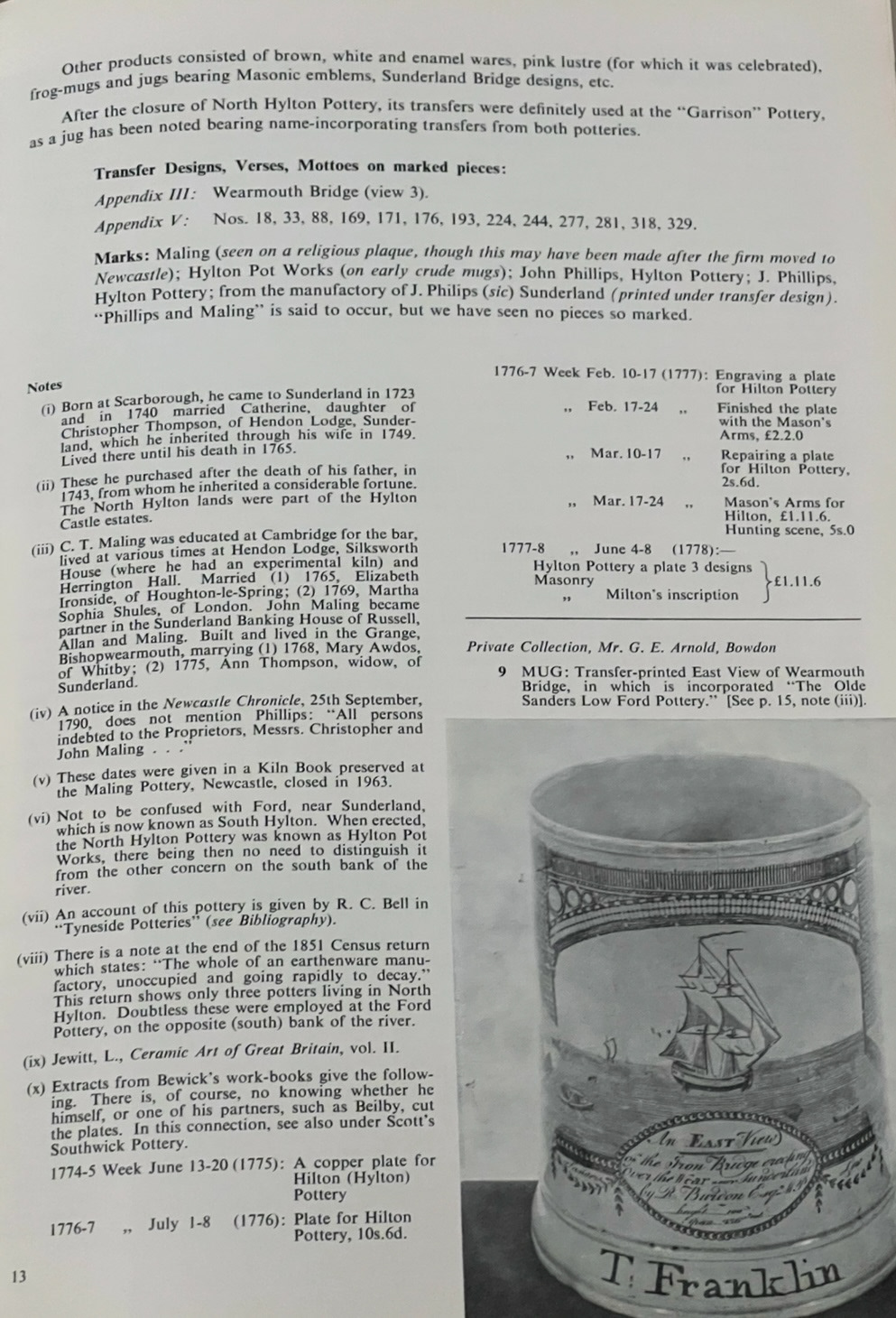


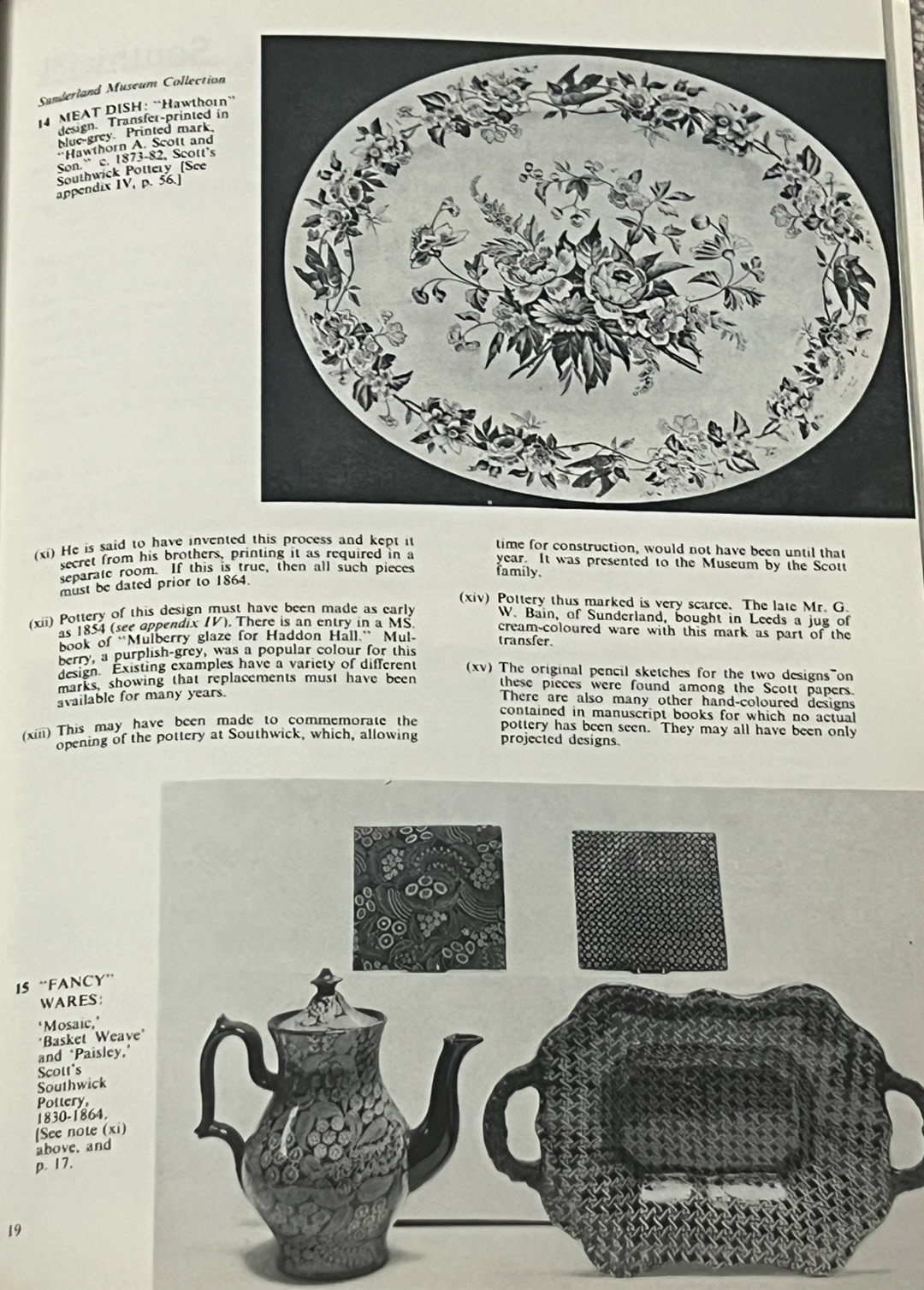
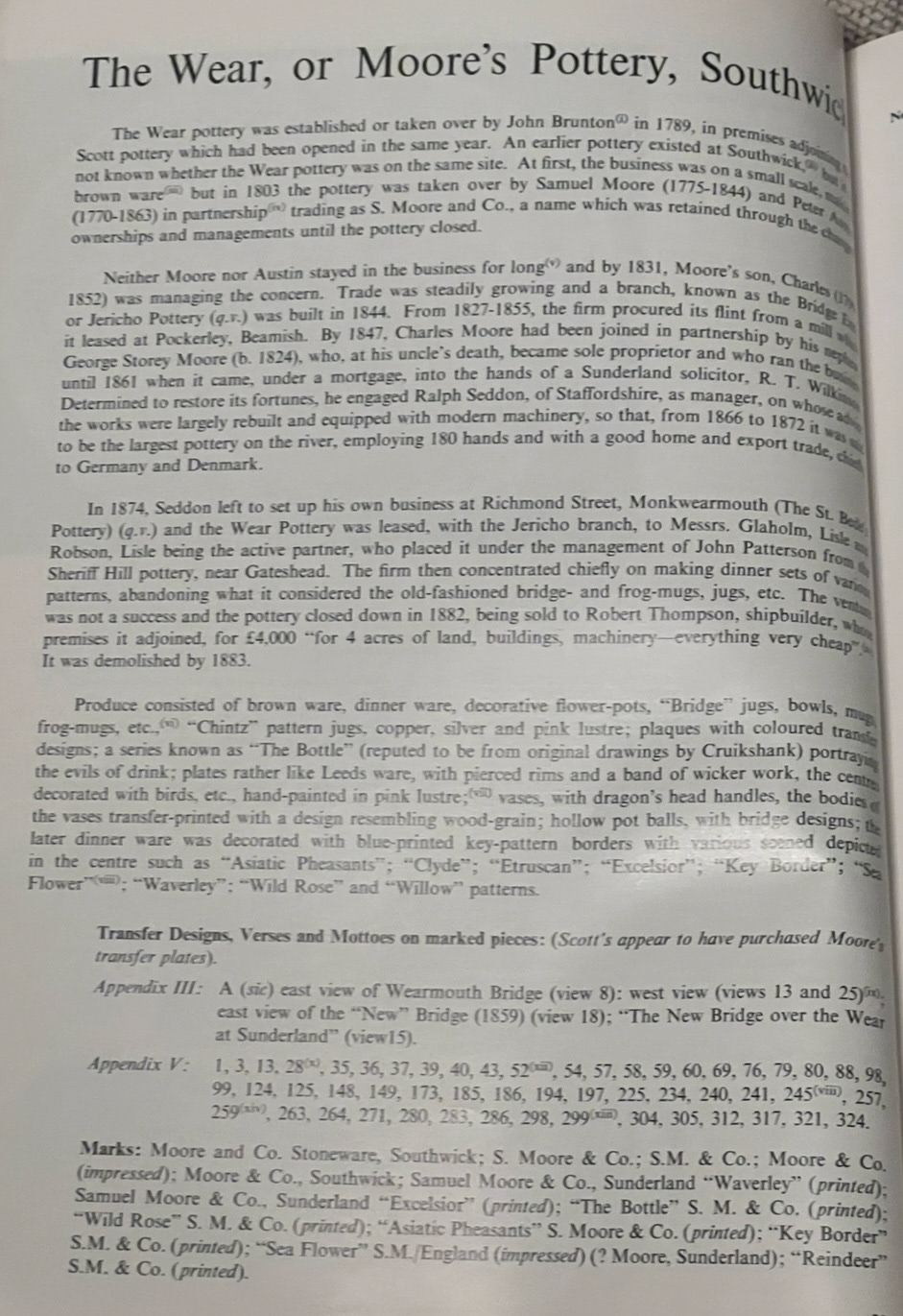

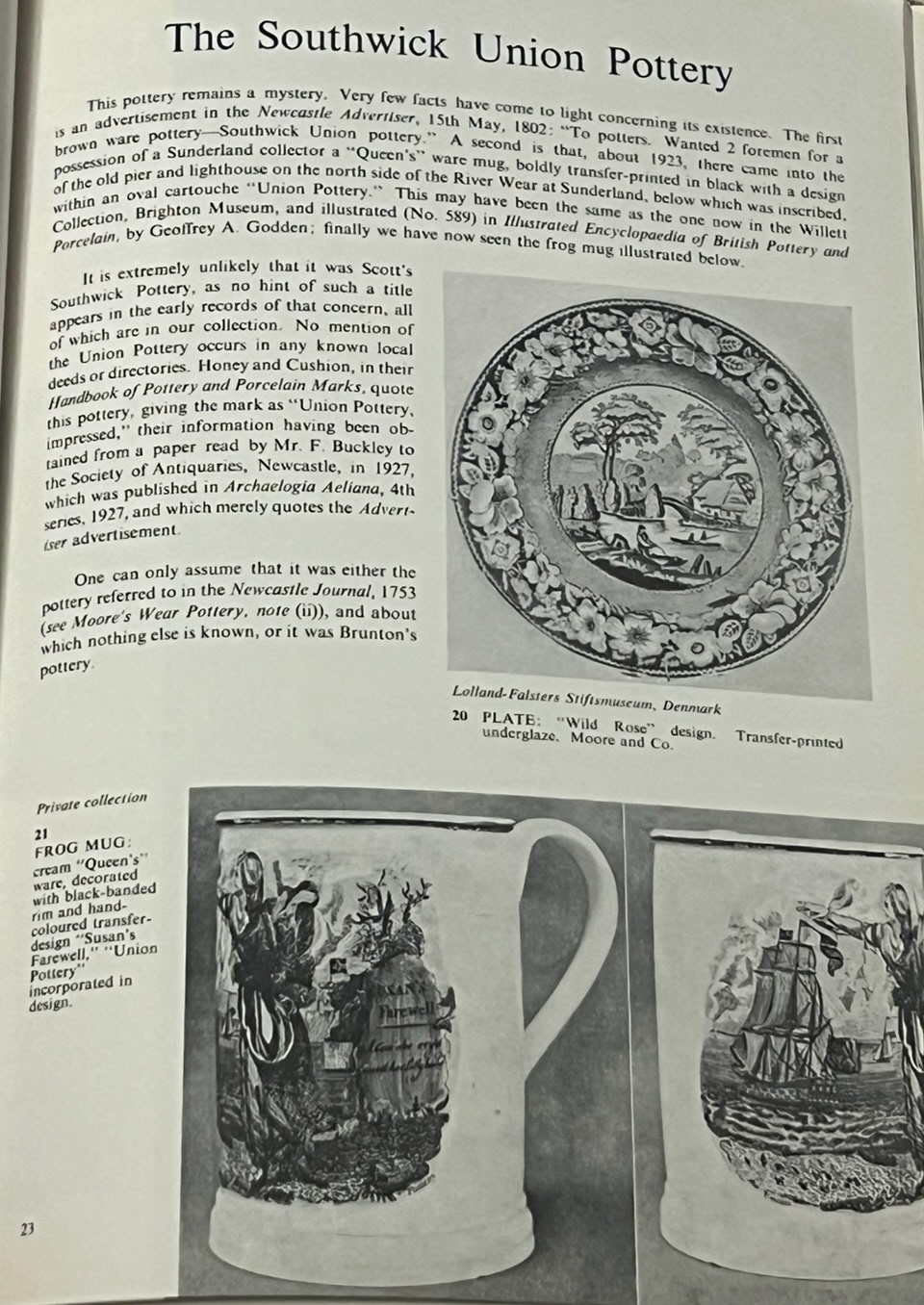
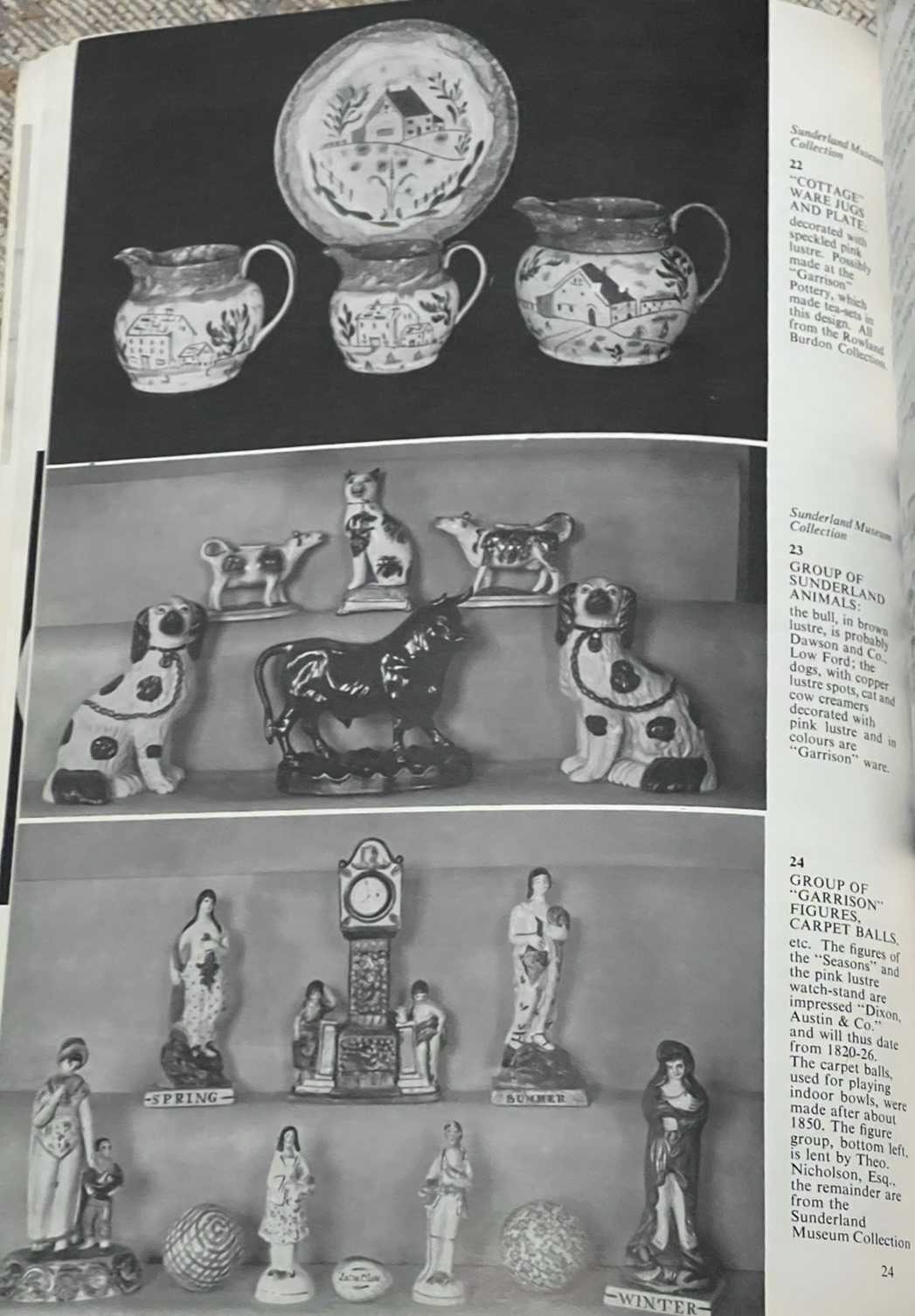

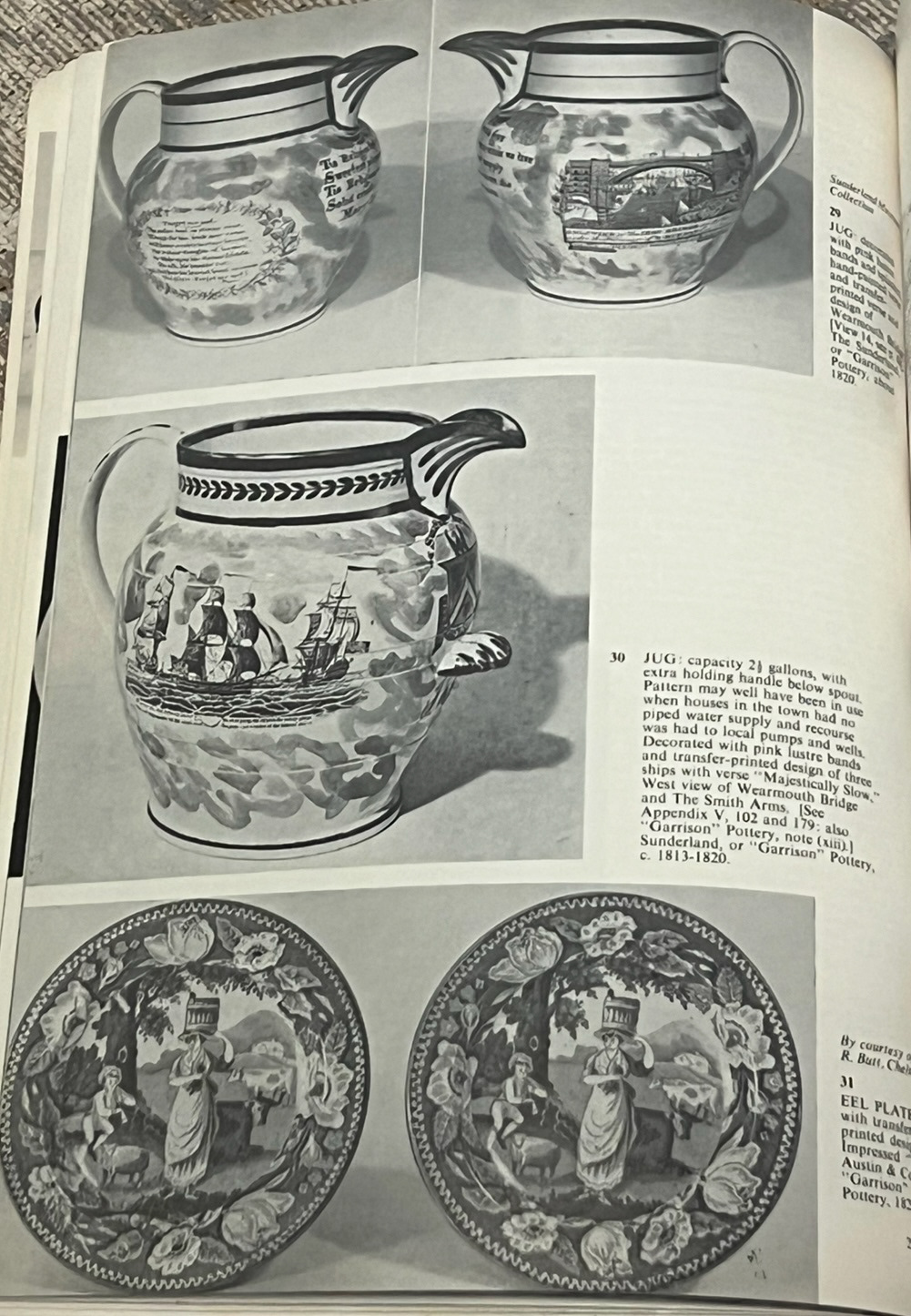
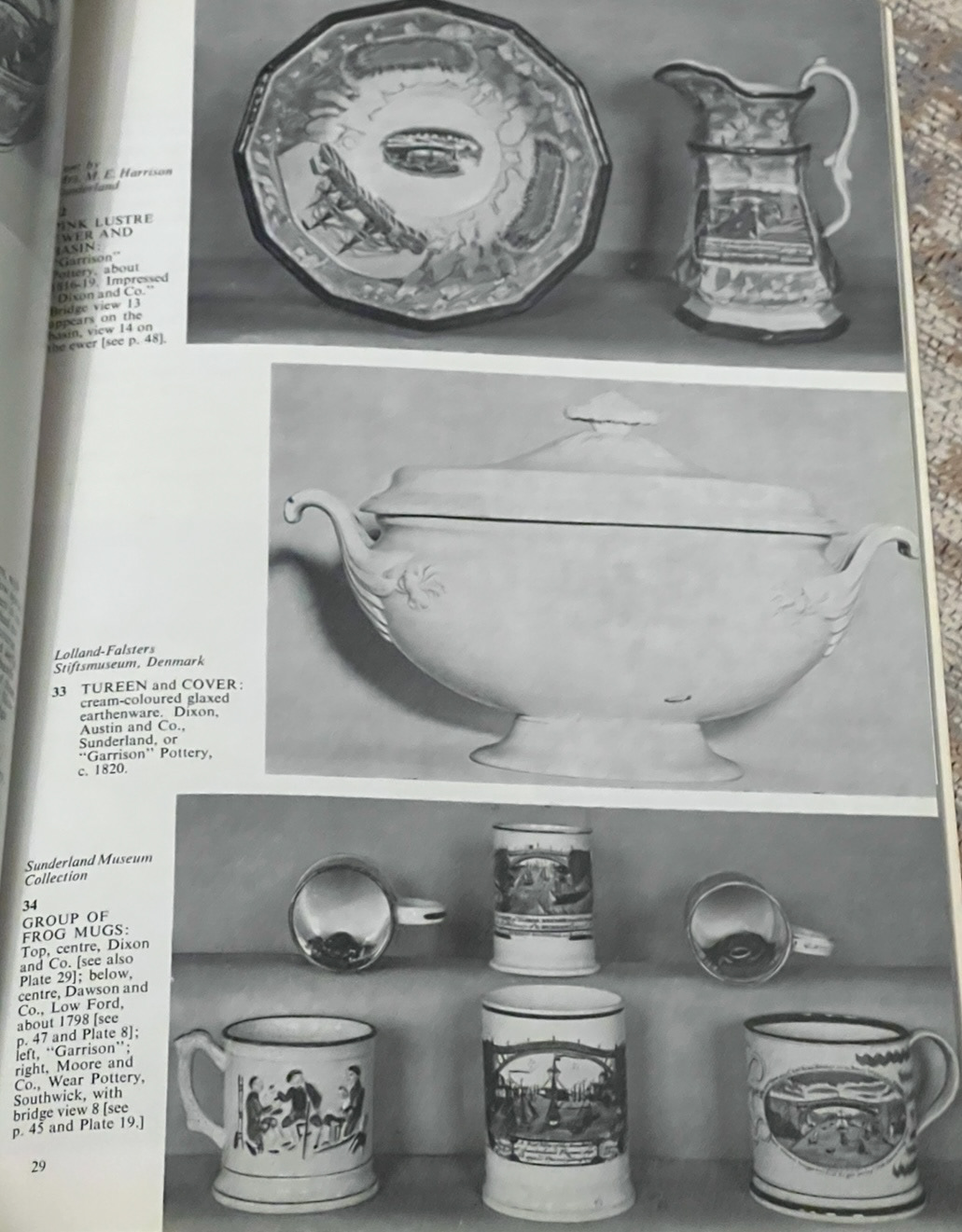
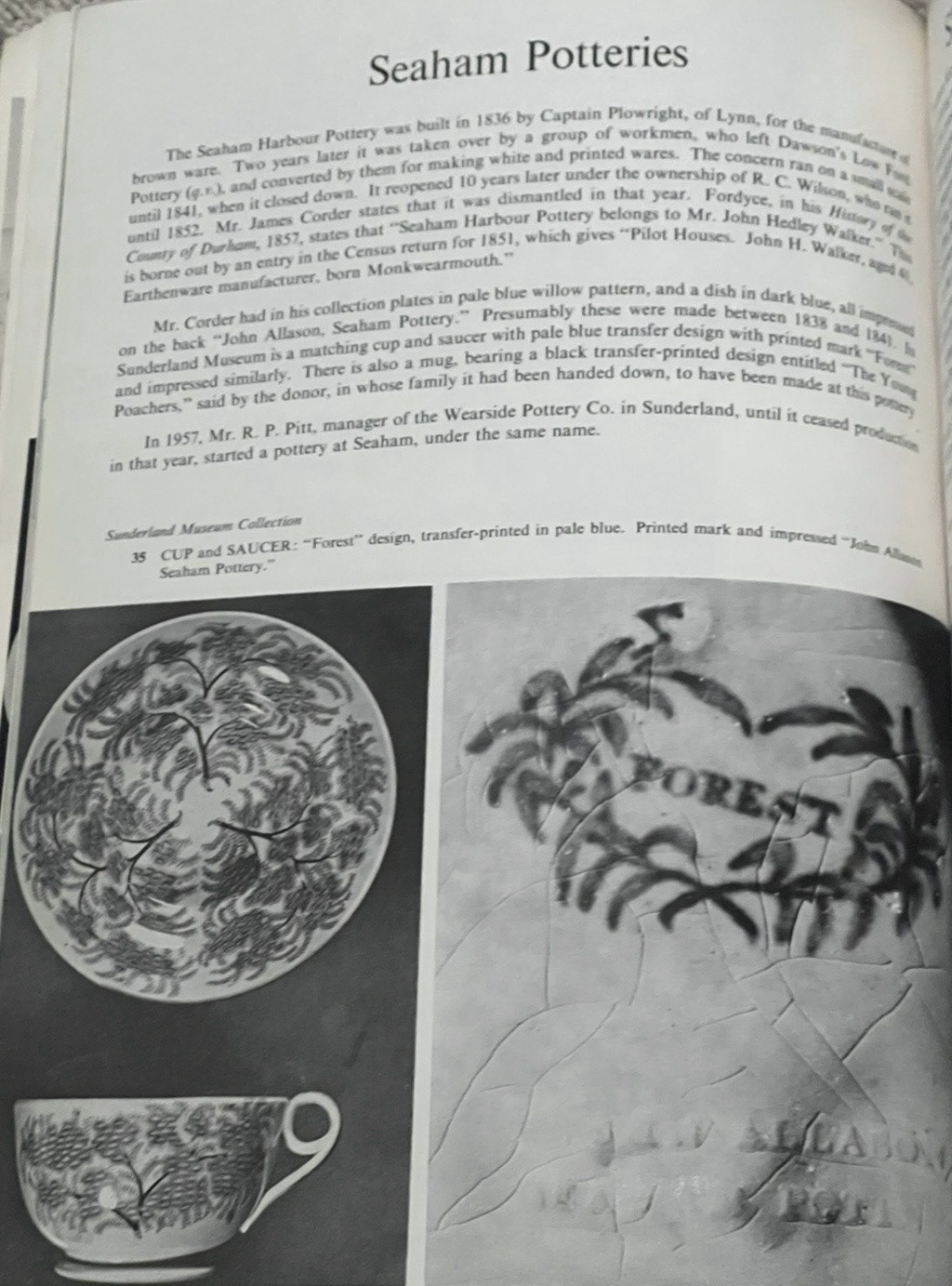

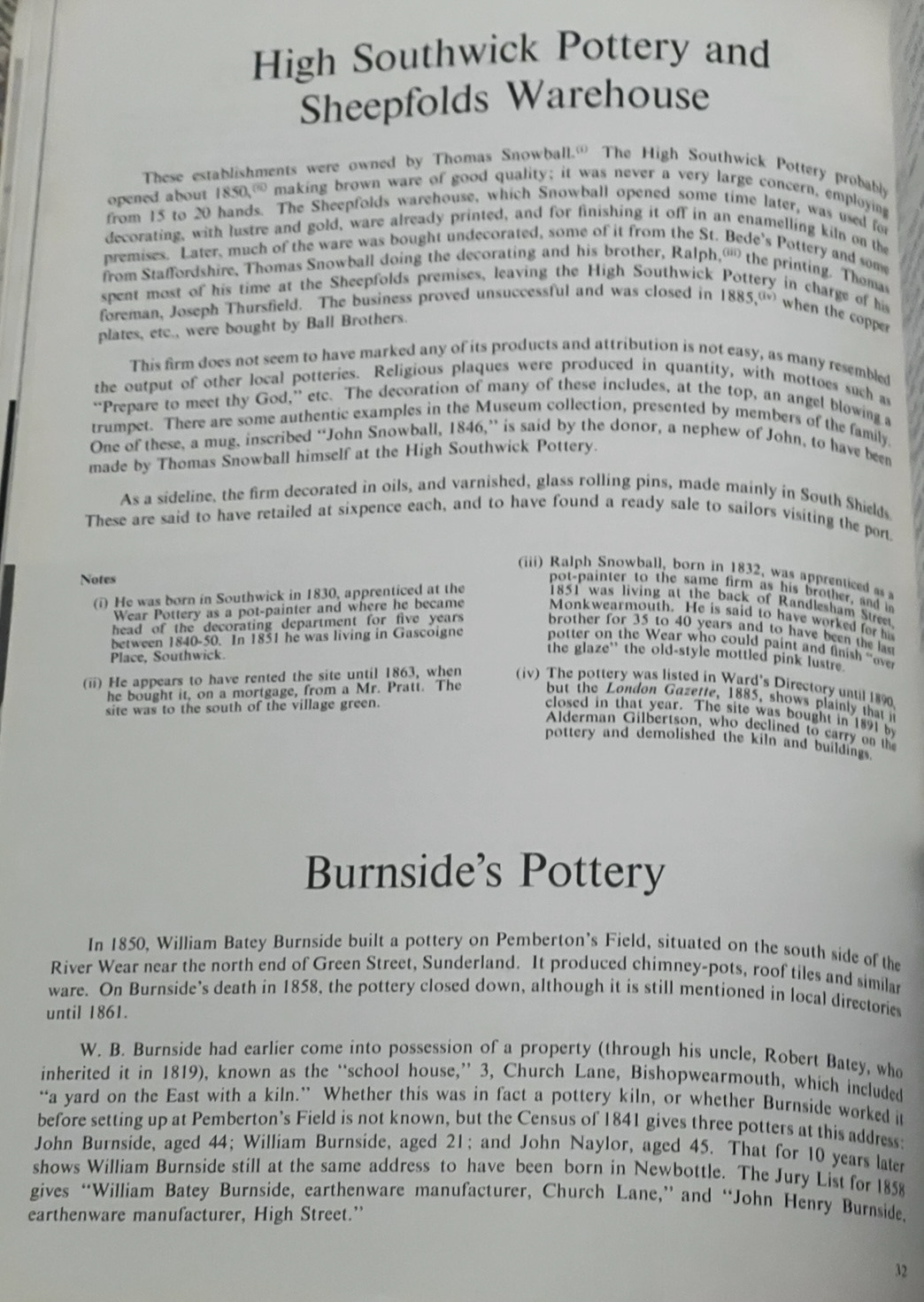

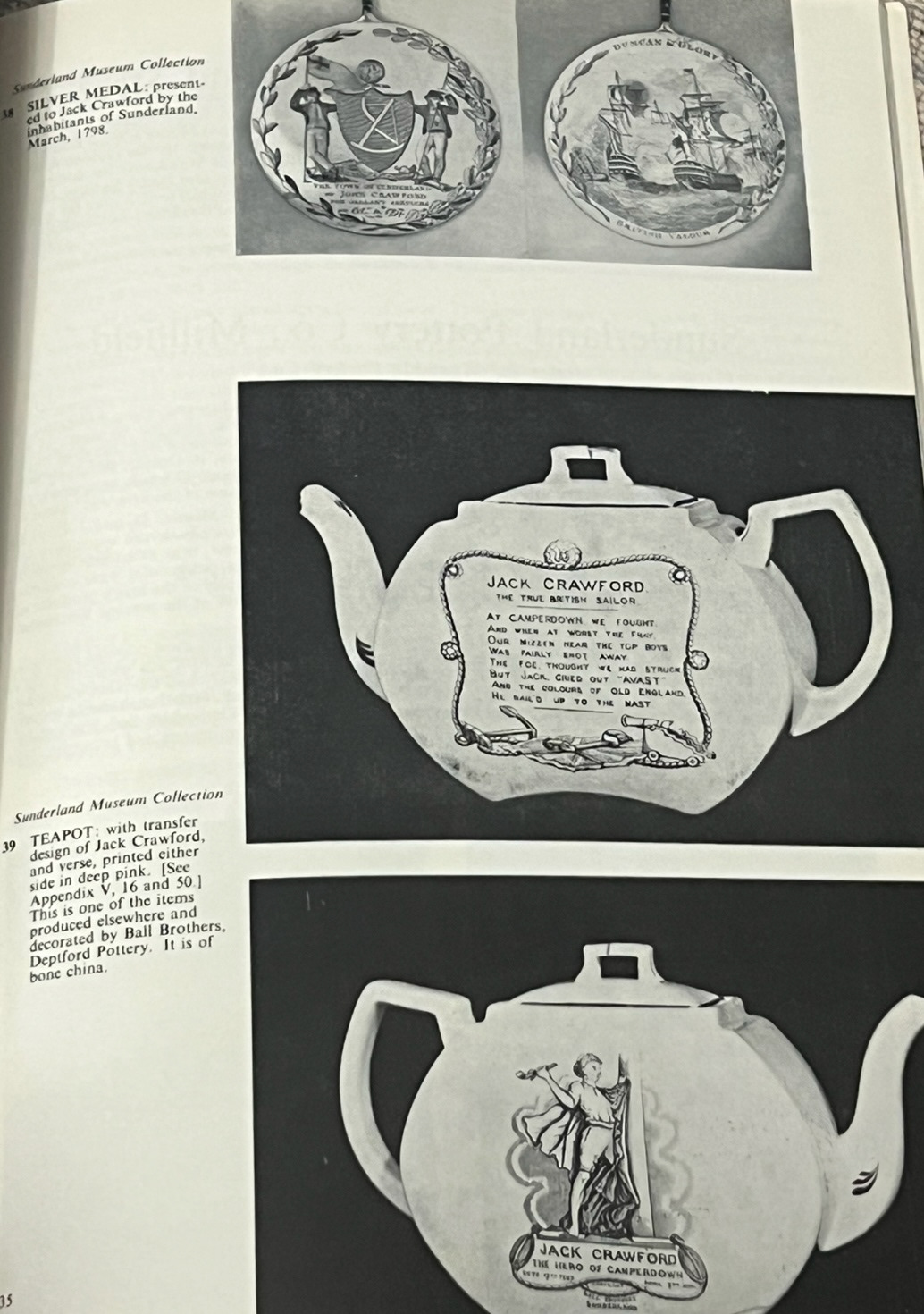
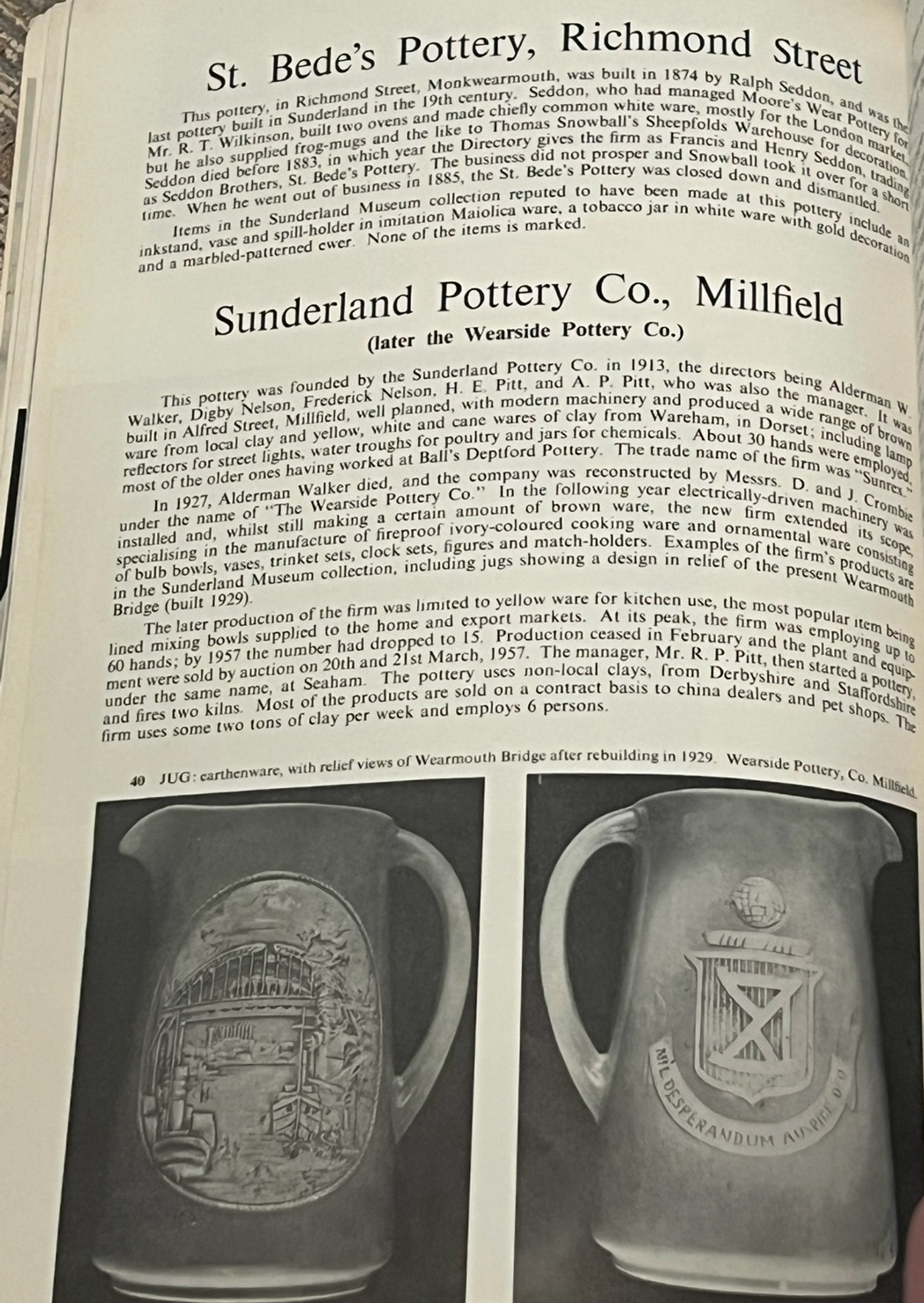
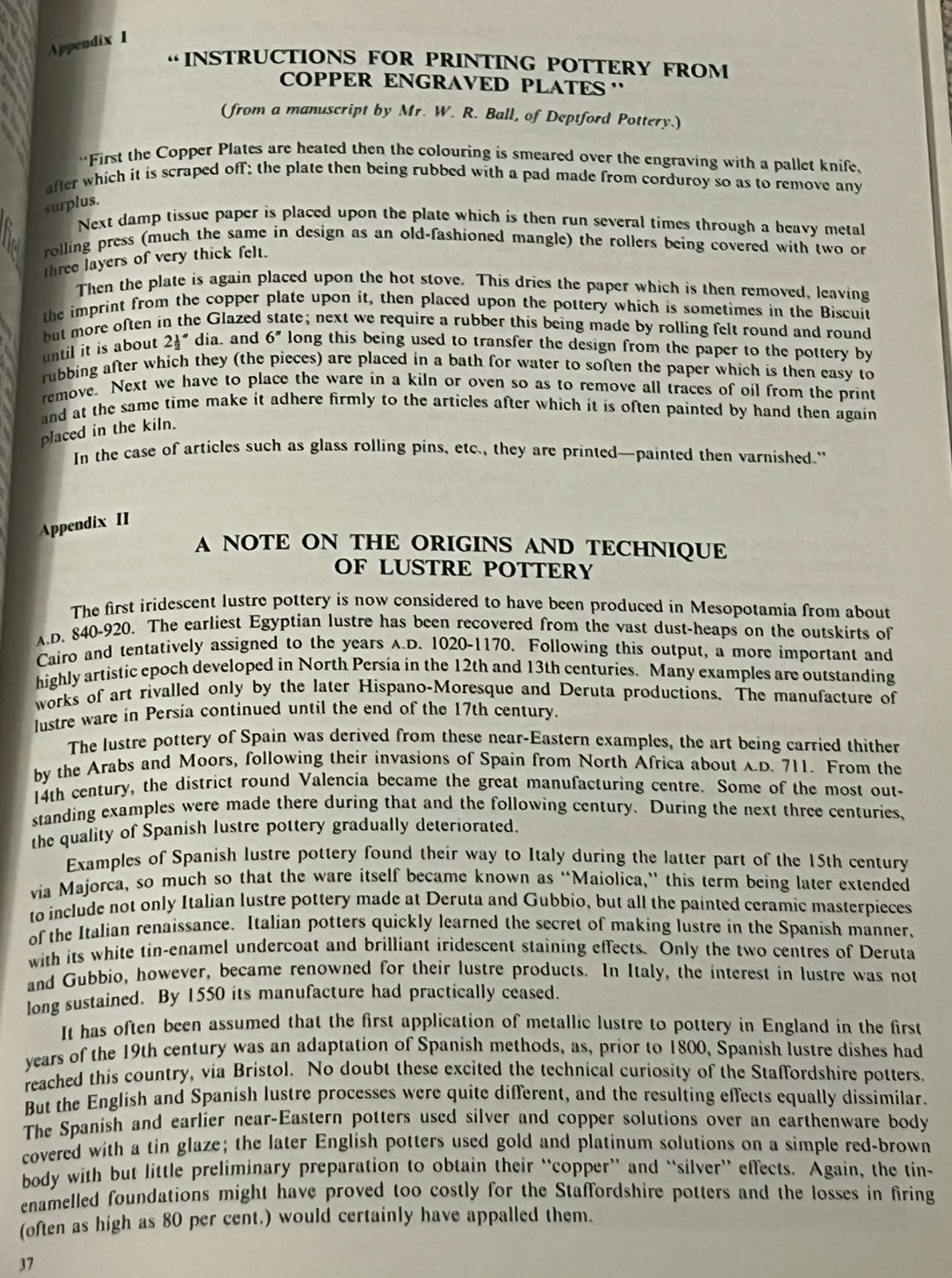
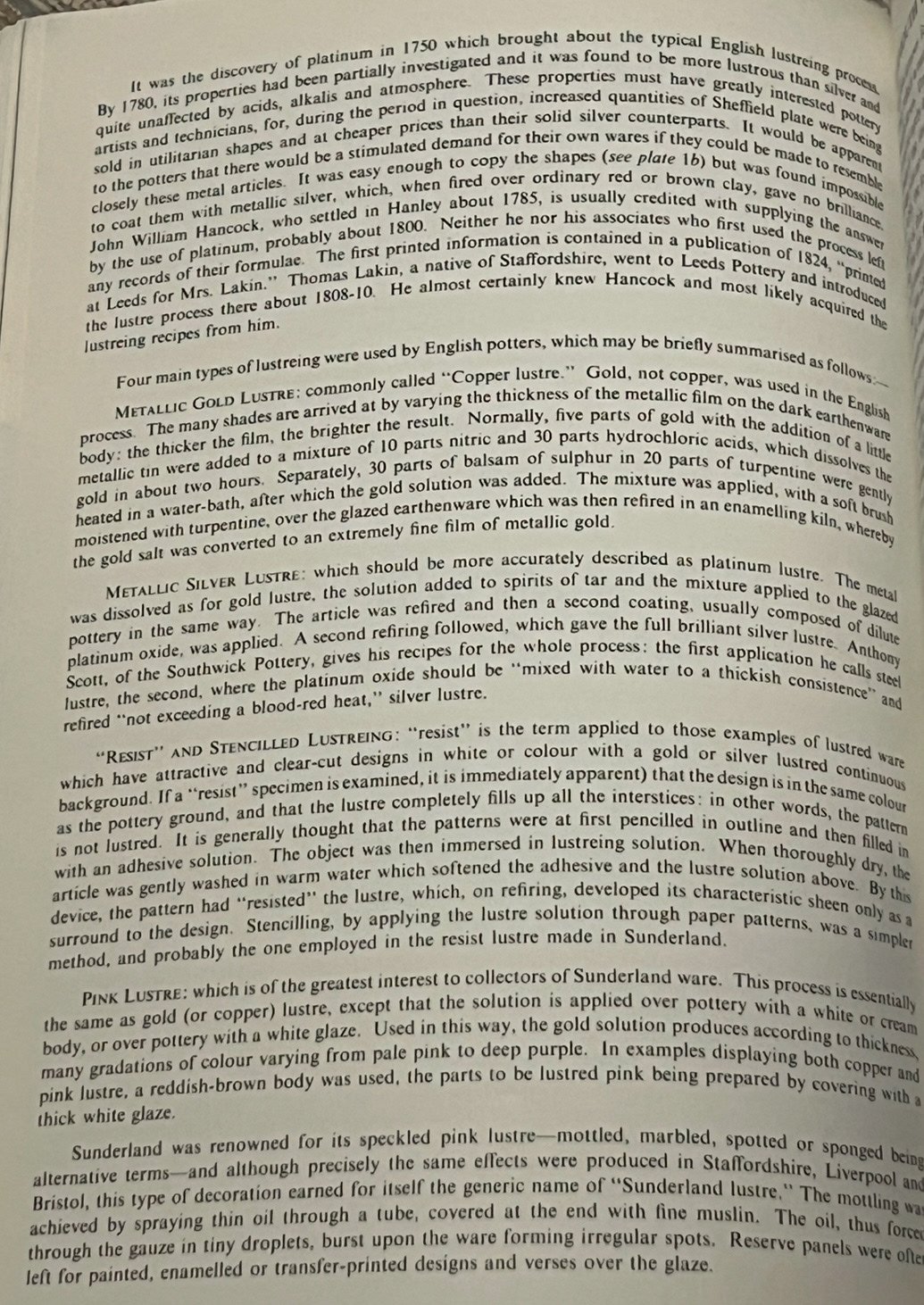
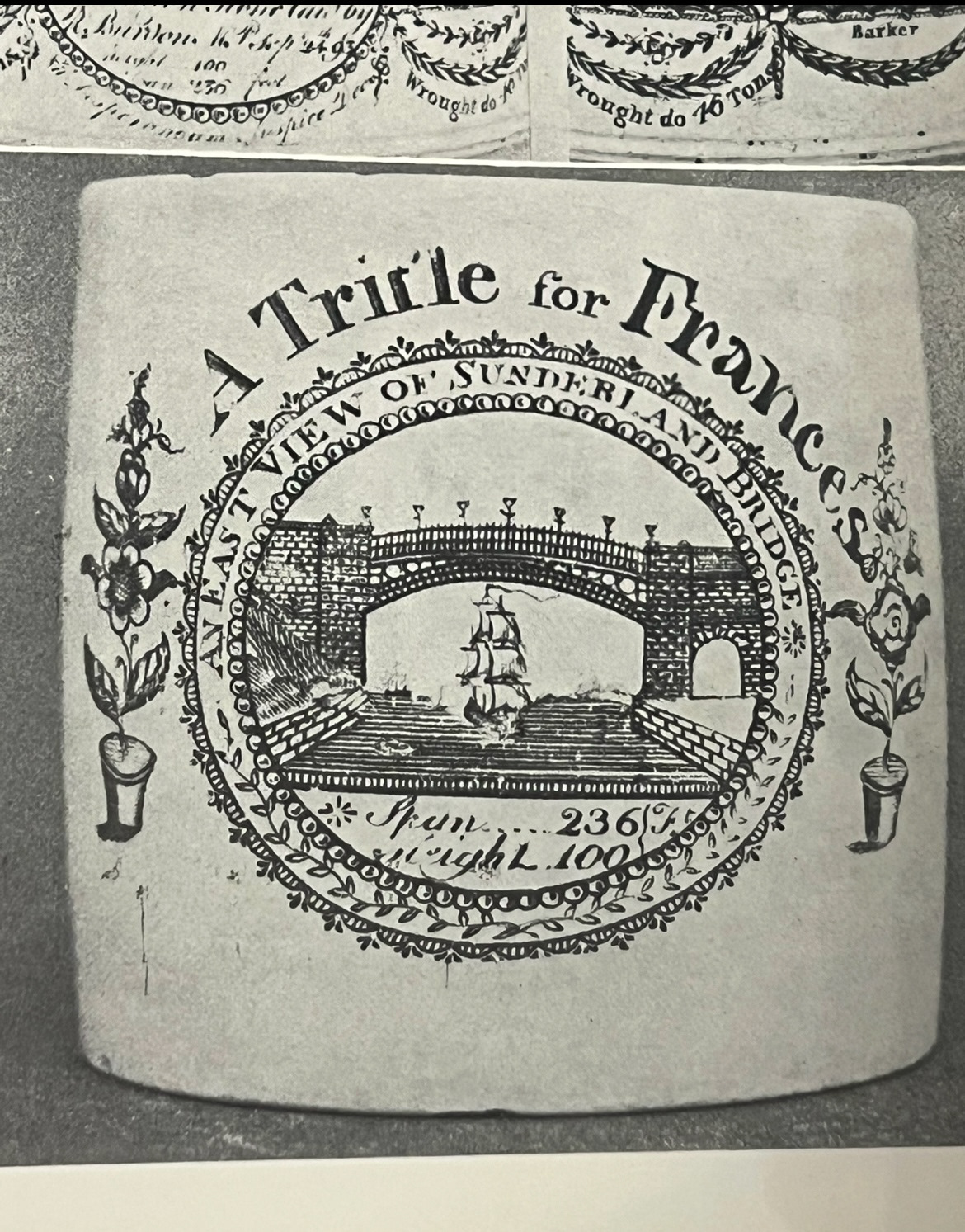
I found this book extremely useful as it mapped out each one of the potteries along wearside that produced Sunderland Wear and how to identify pieces from each one. This was great as I had planned another trip back to the museum to look at their Sunderland Wear collection, however I felt that this time I felt more informed on the historical details so that I could know more when observing these pieces.
Finally, the last book I looked at was called 'Sunderland Pottery' (below).
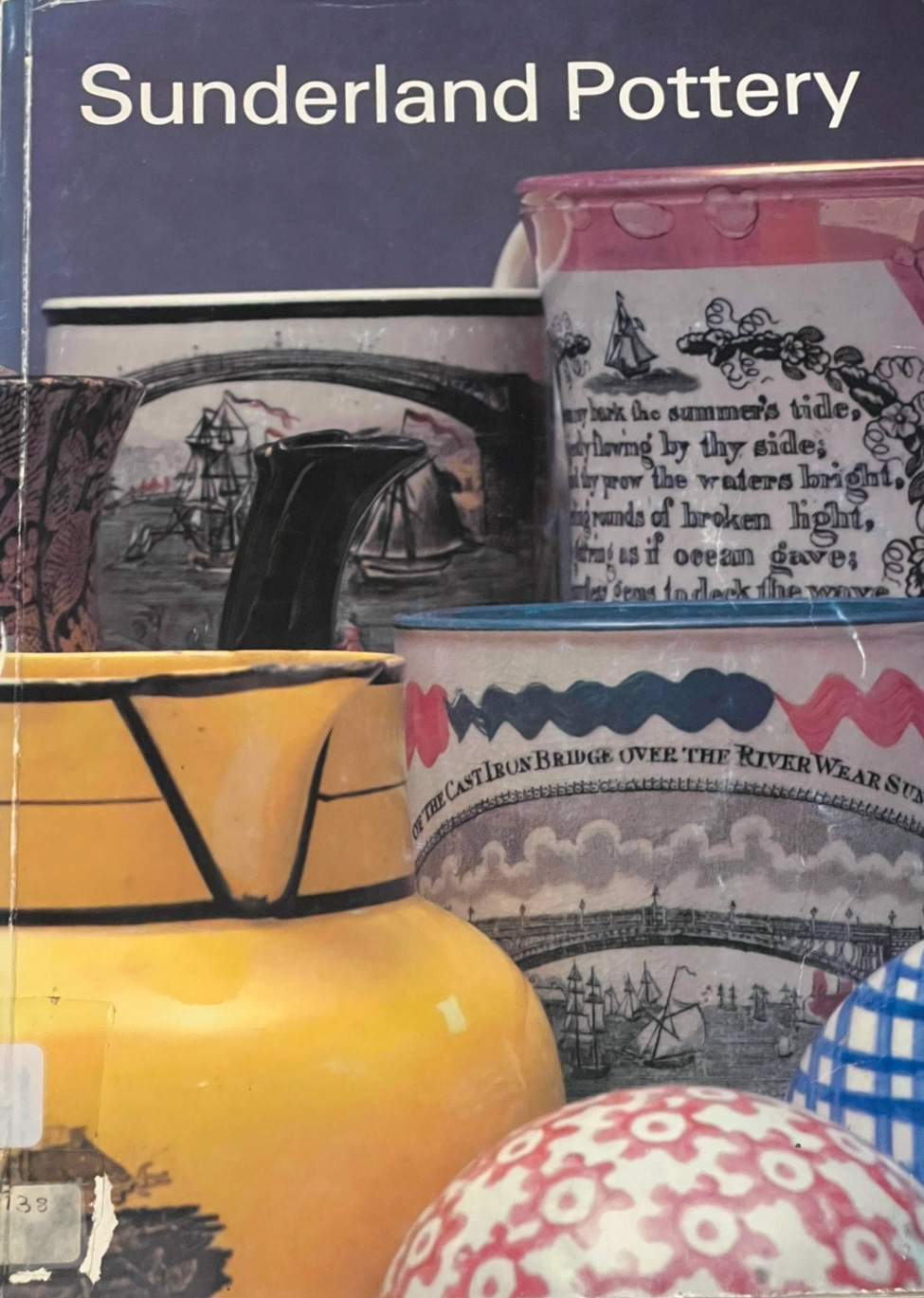
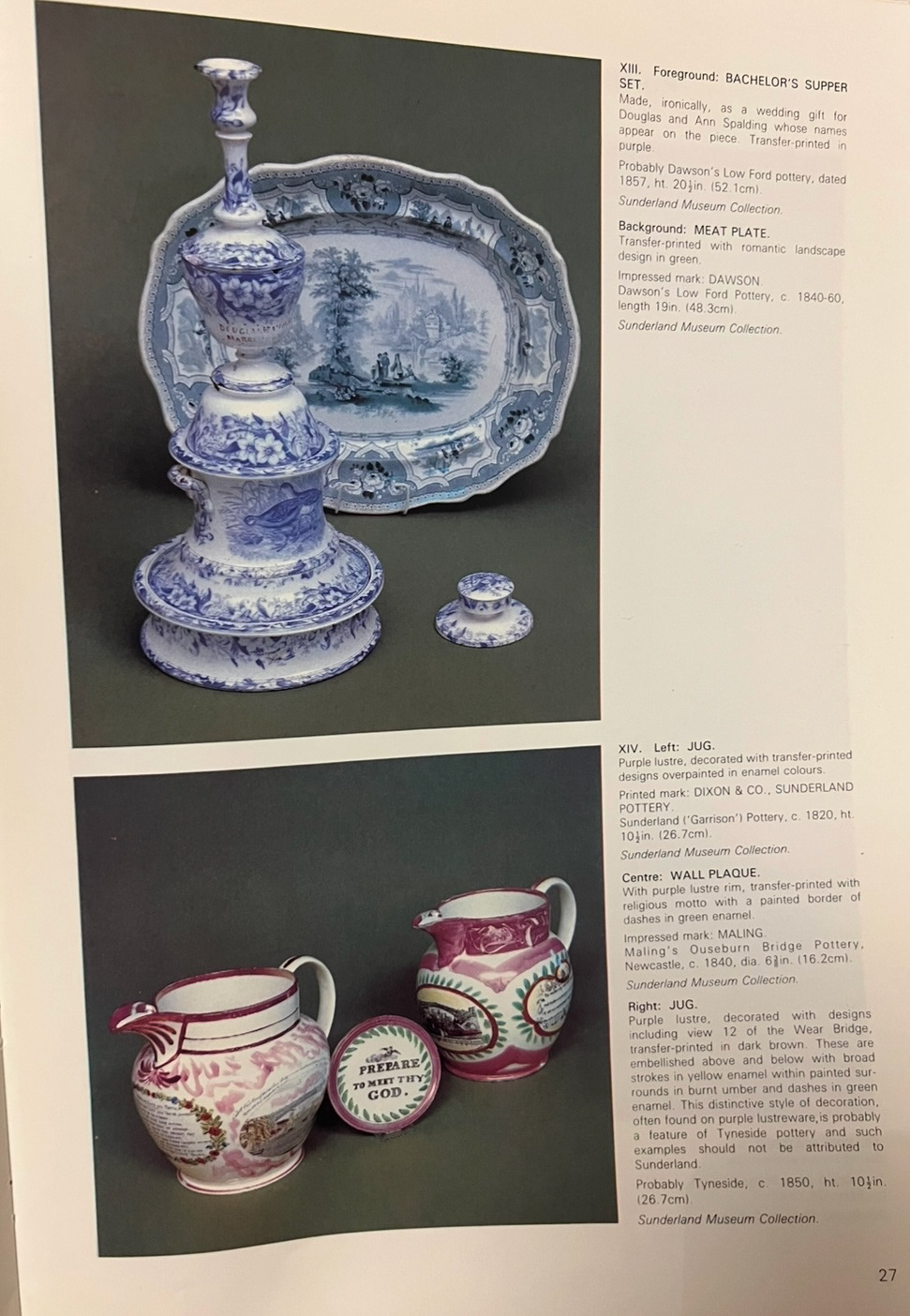
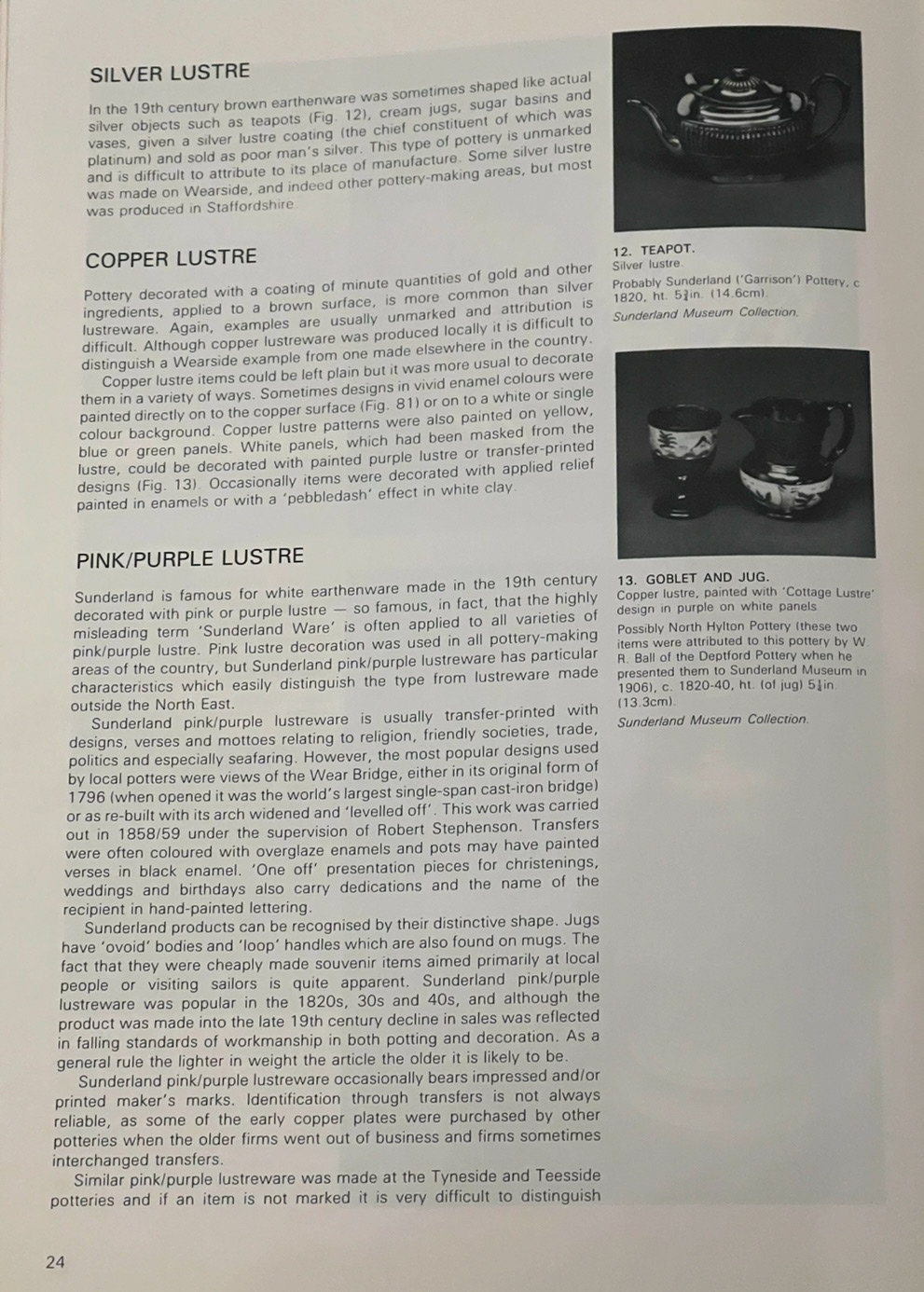
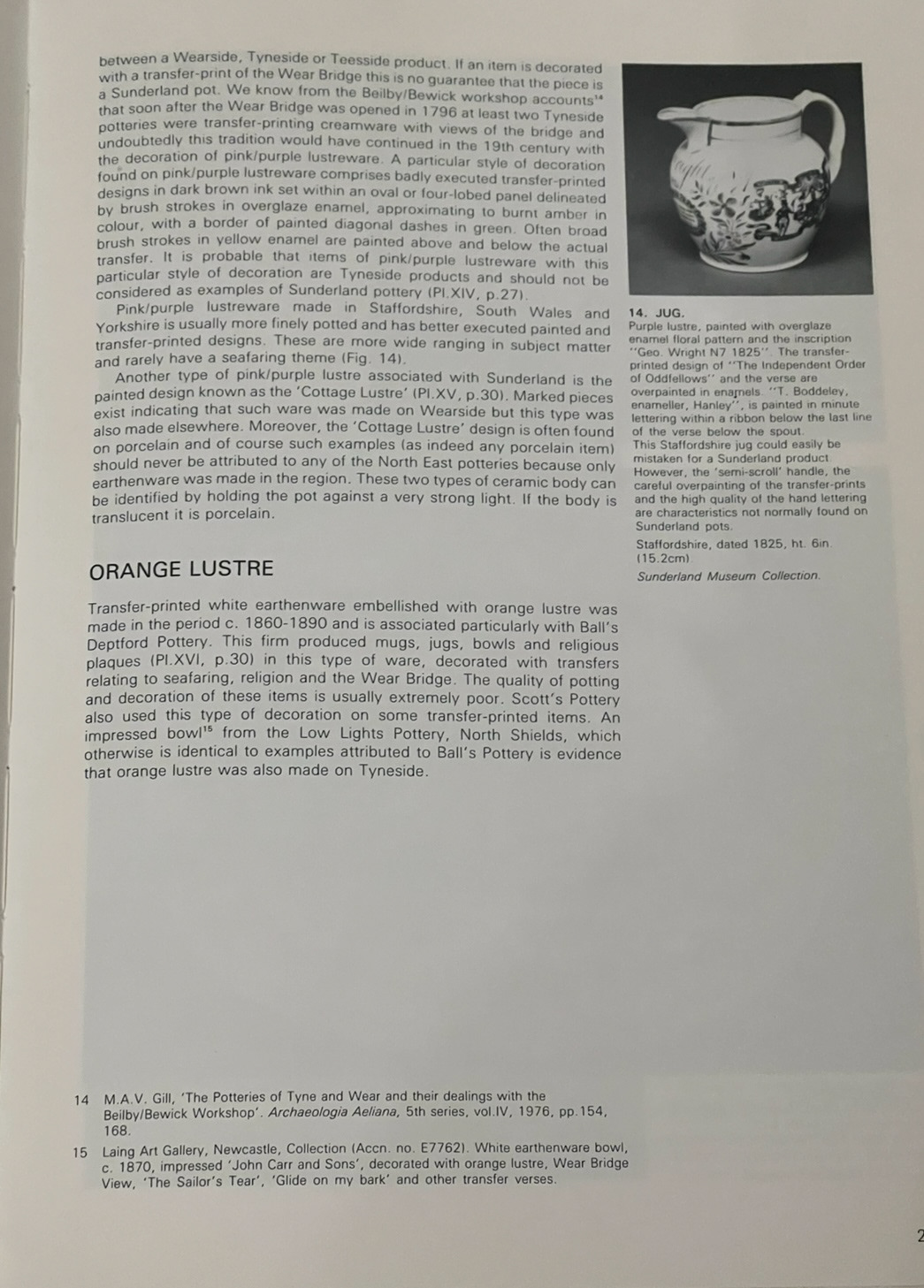
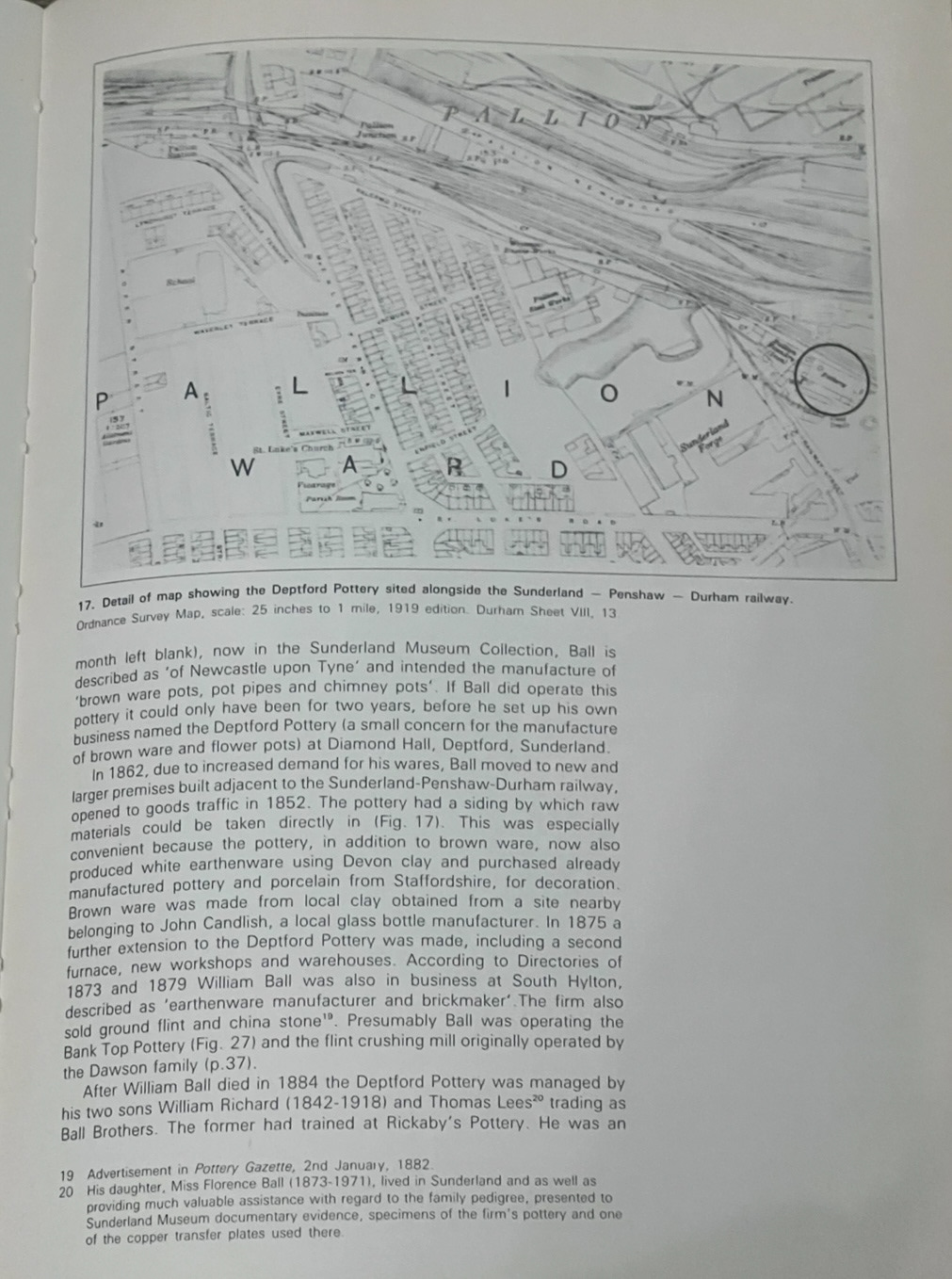

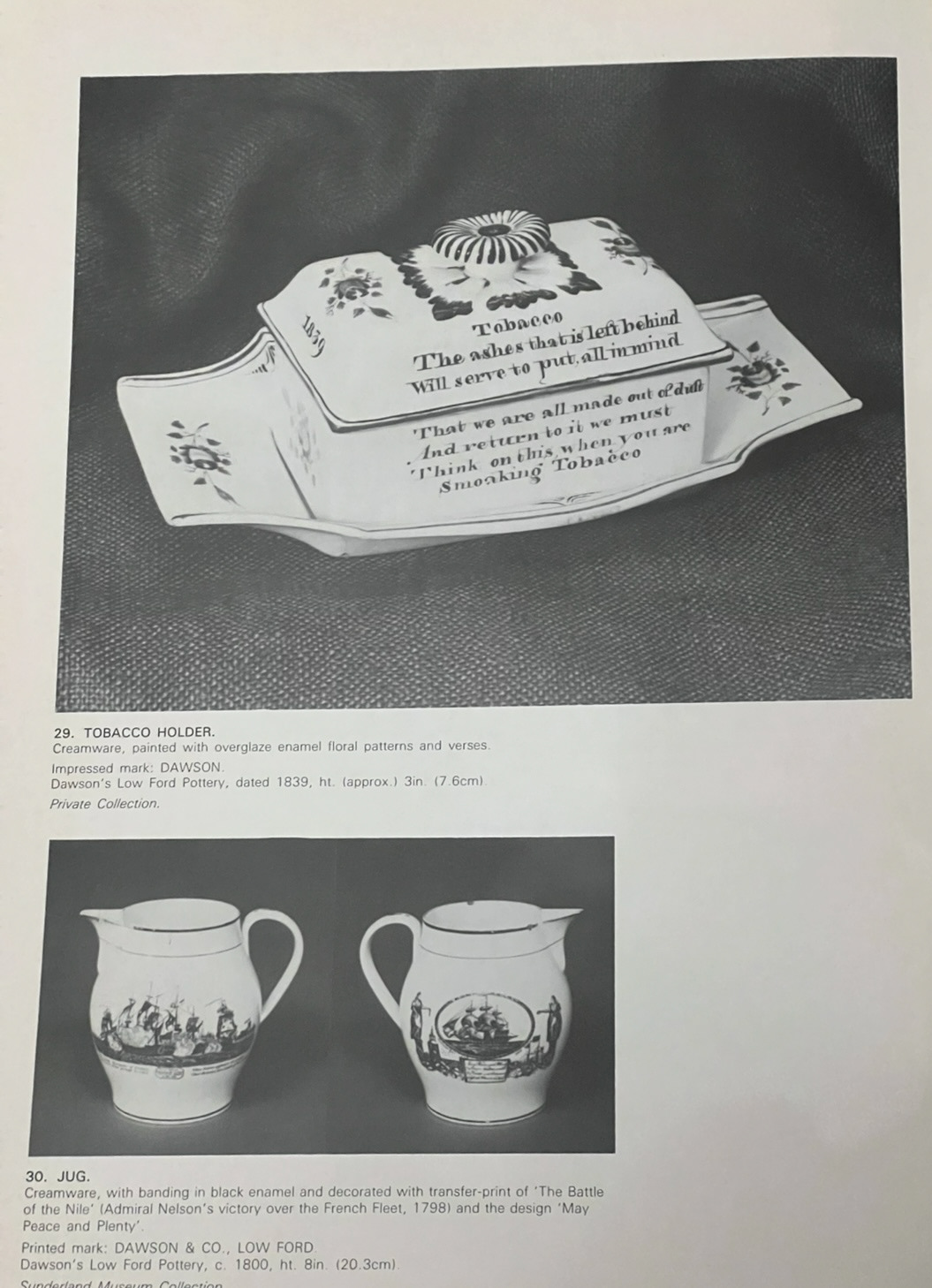

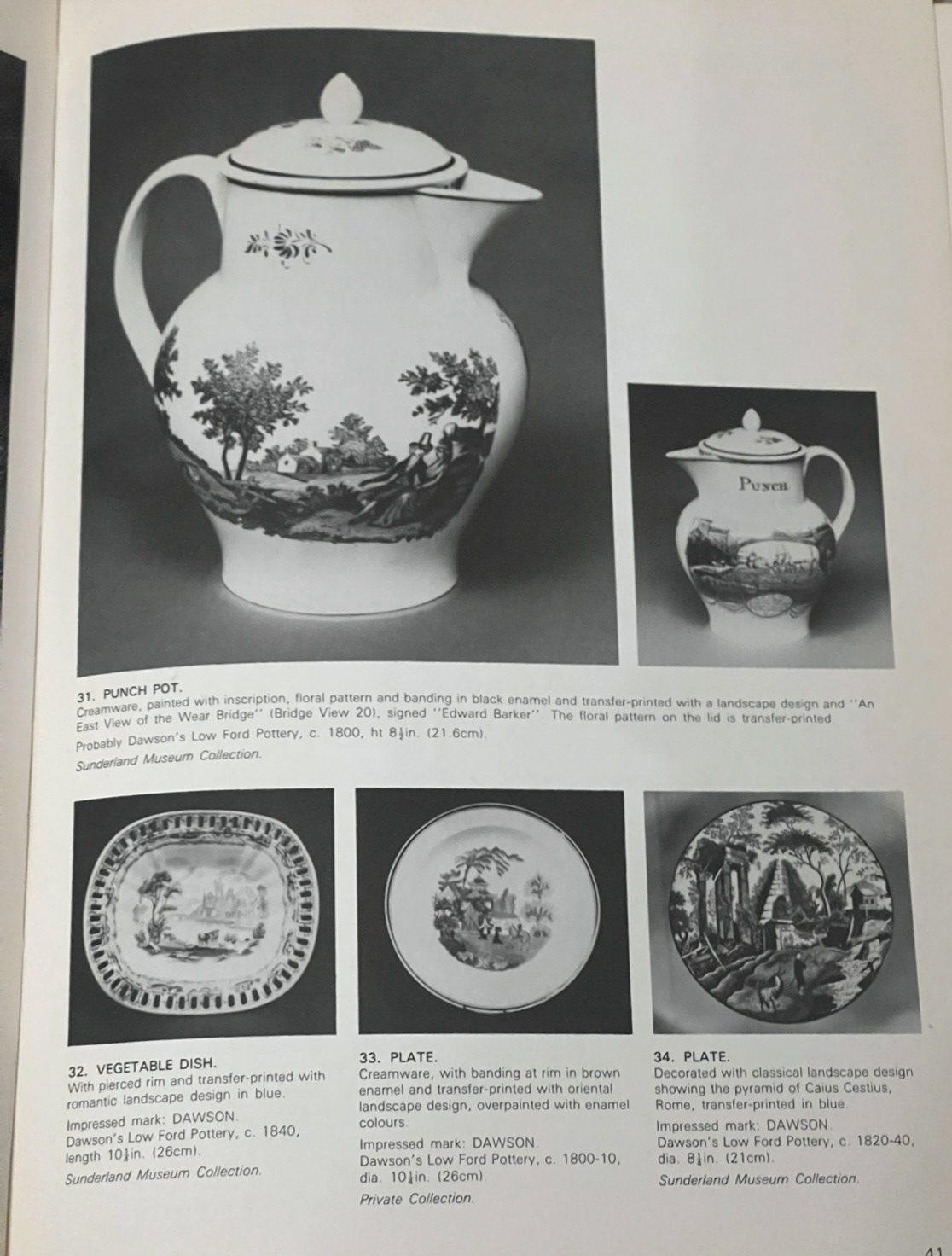
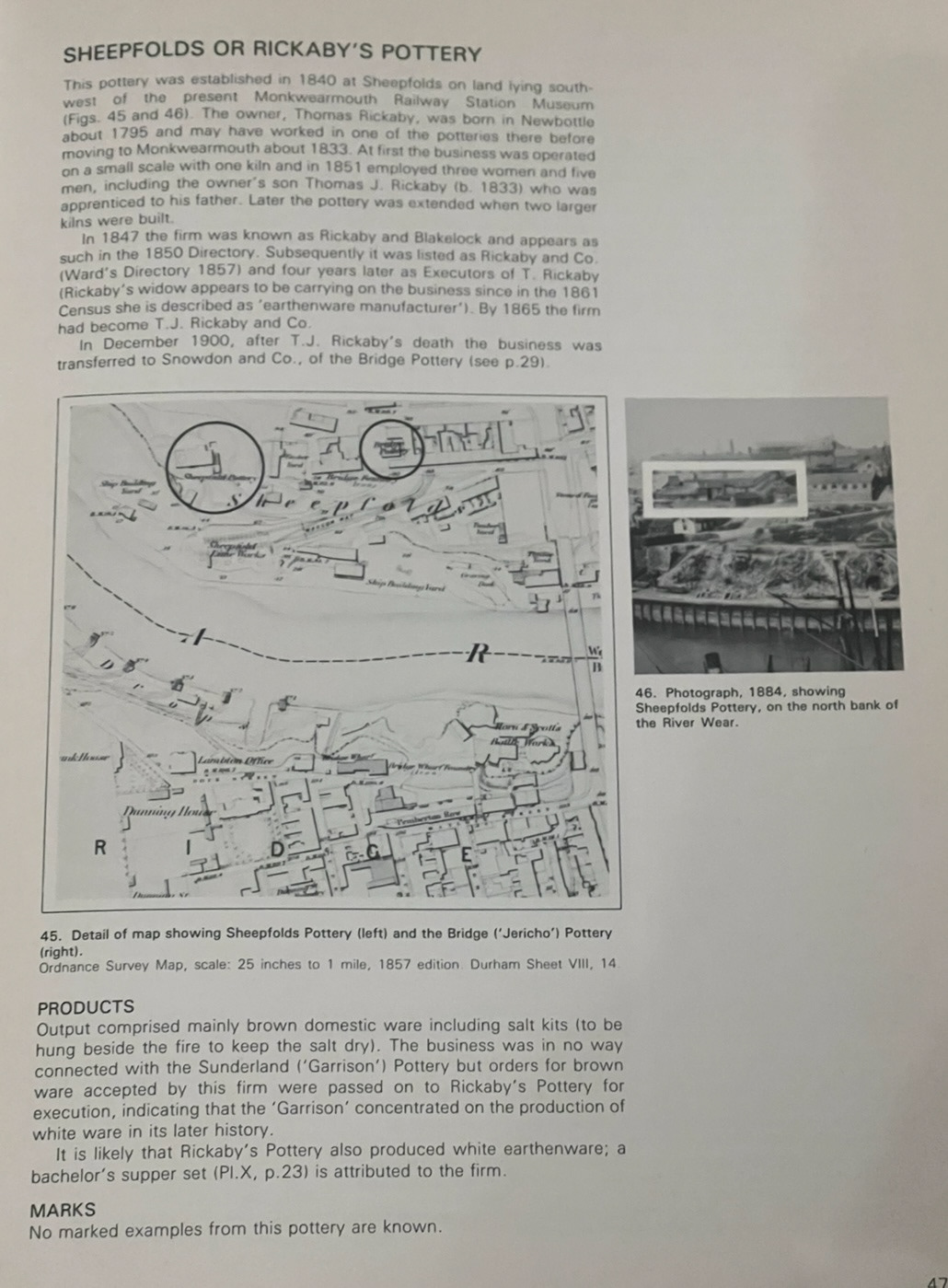

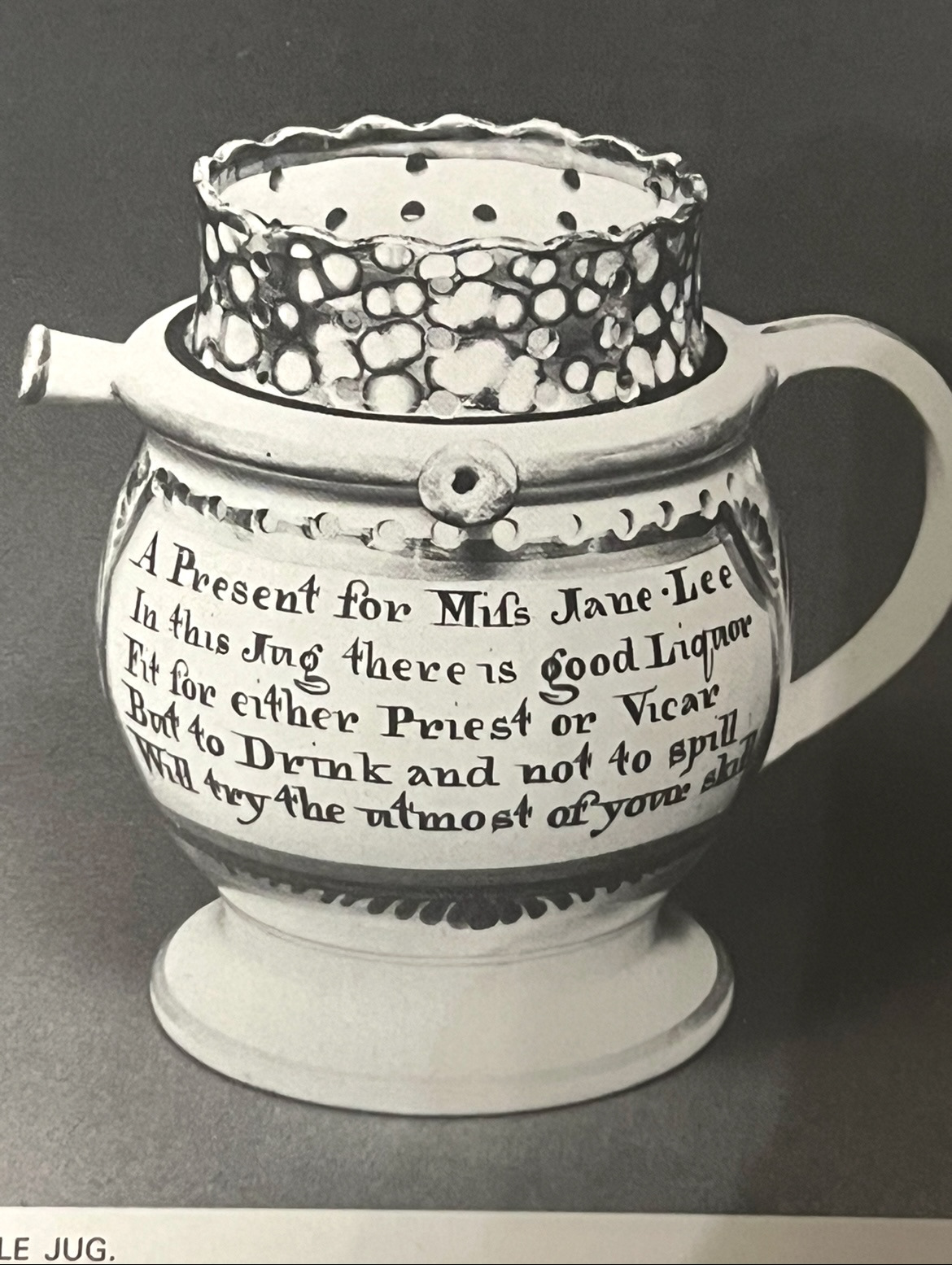
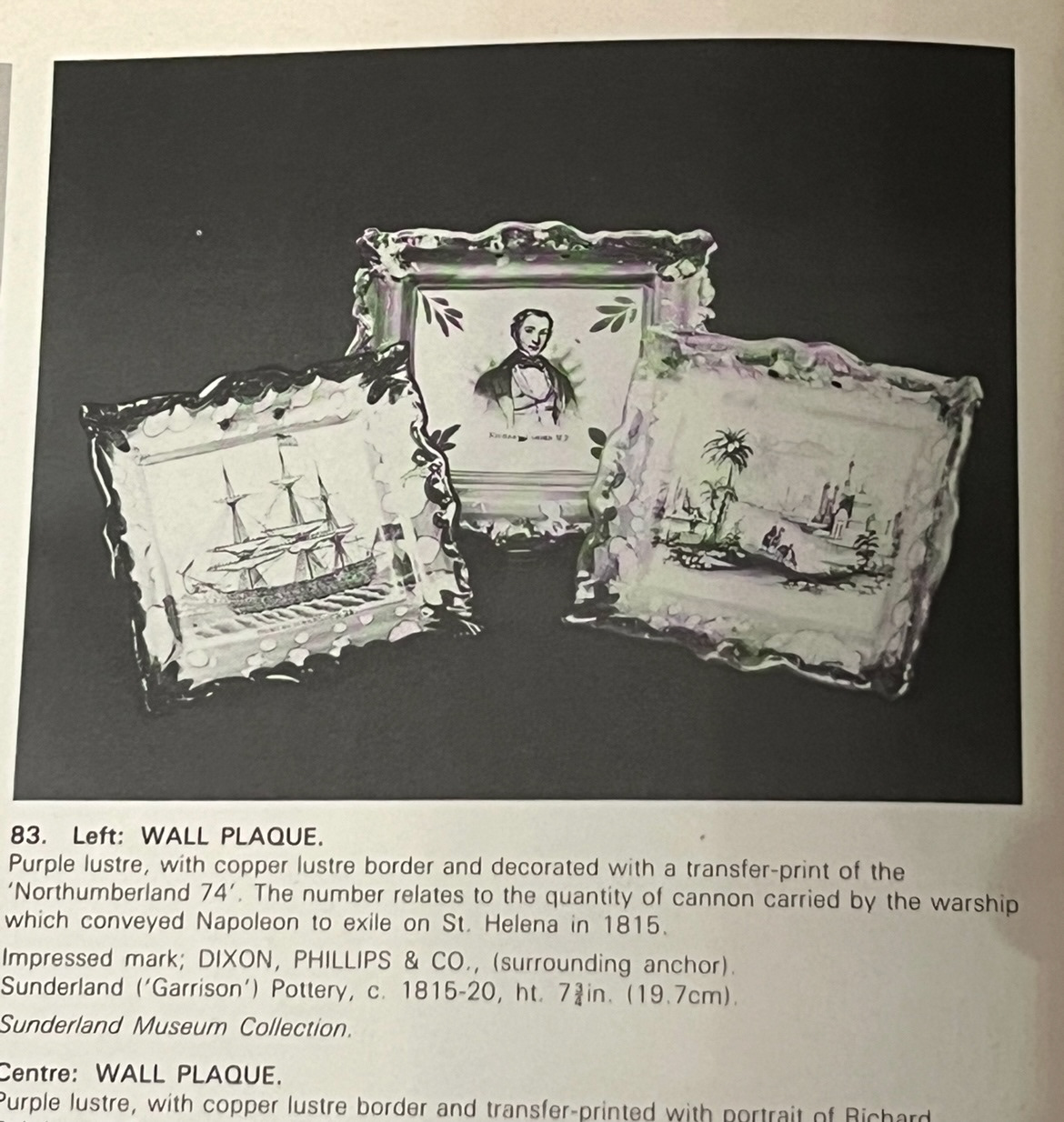
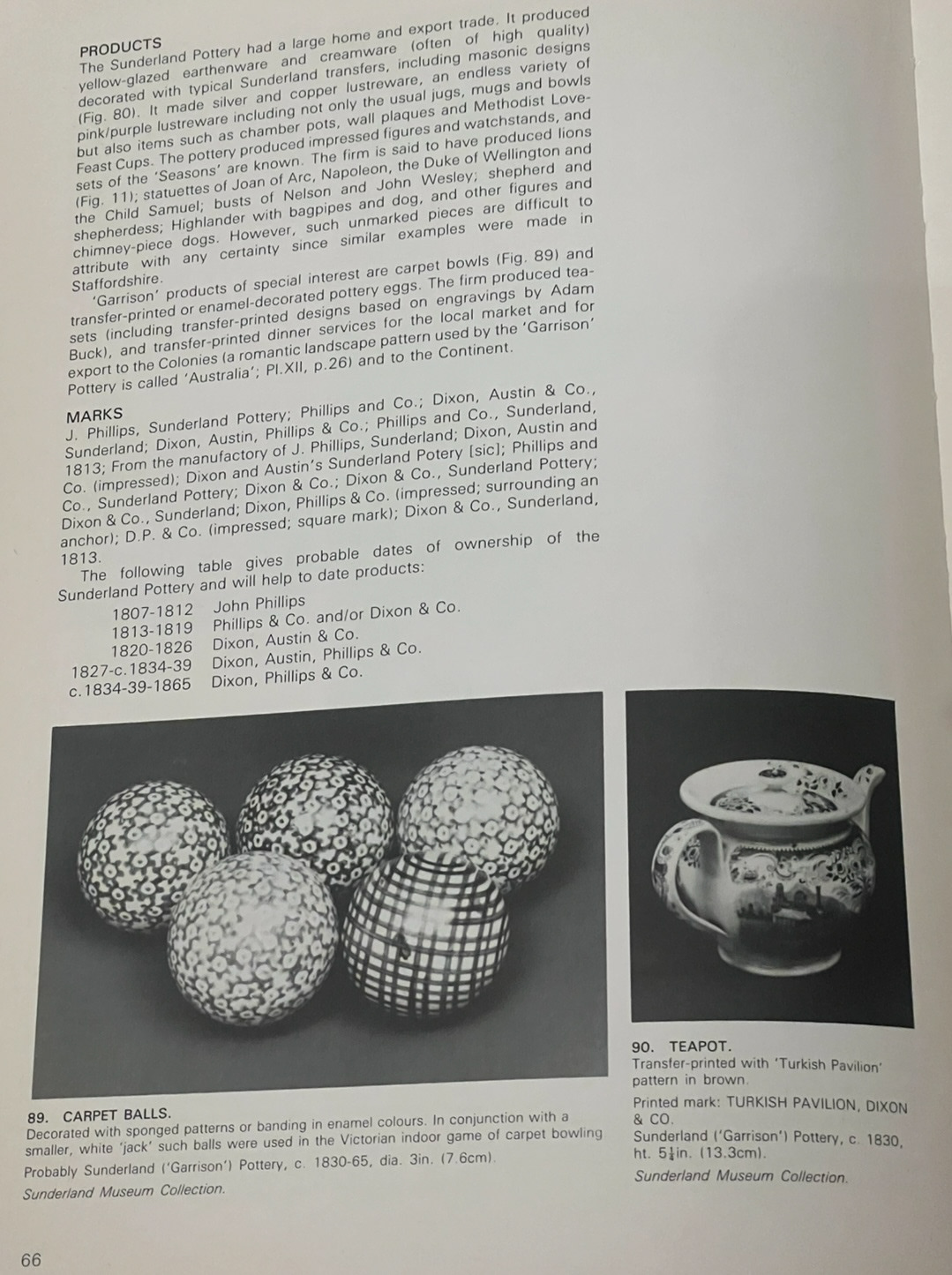

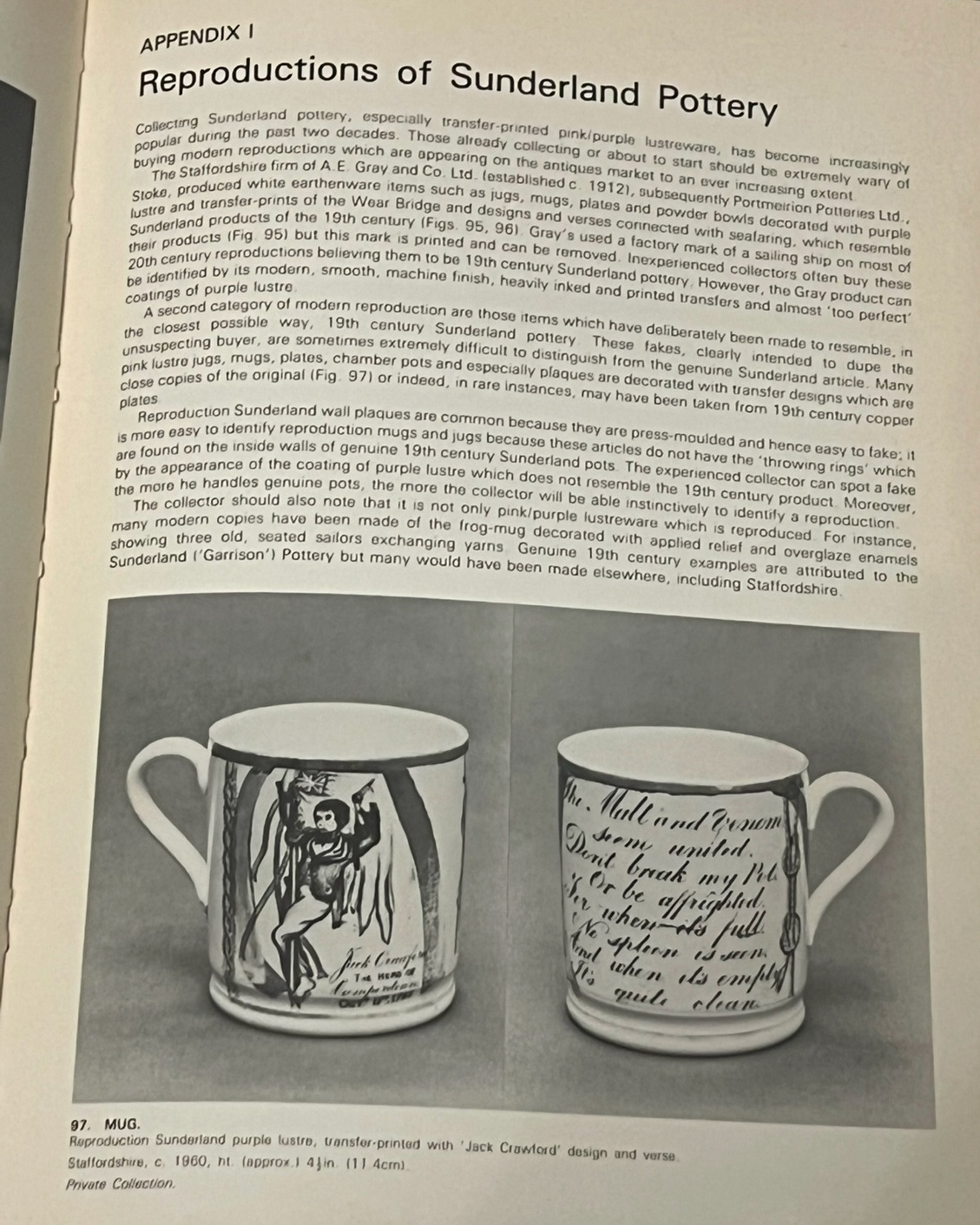
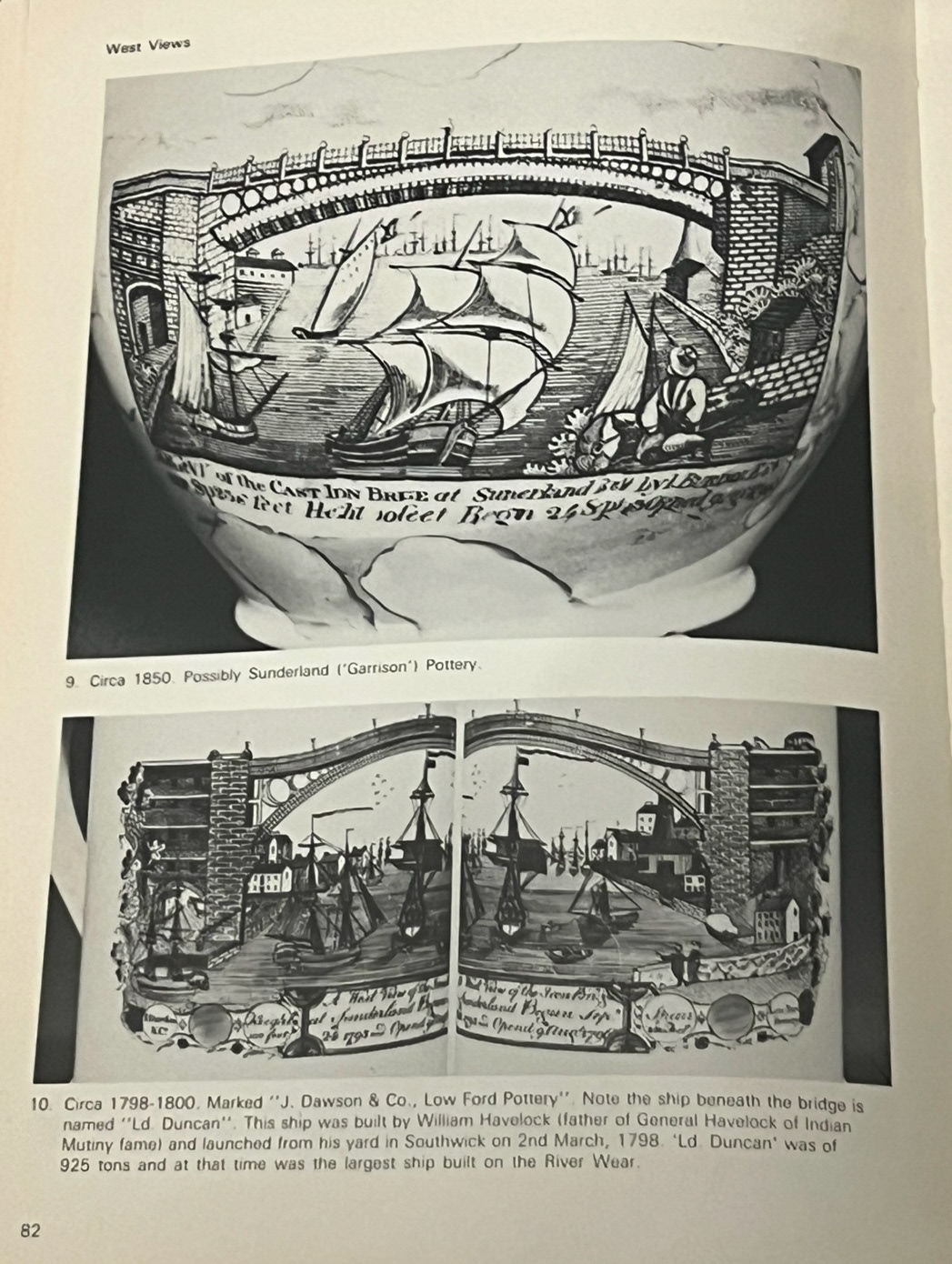
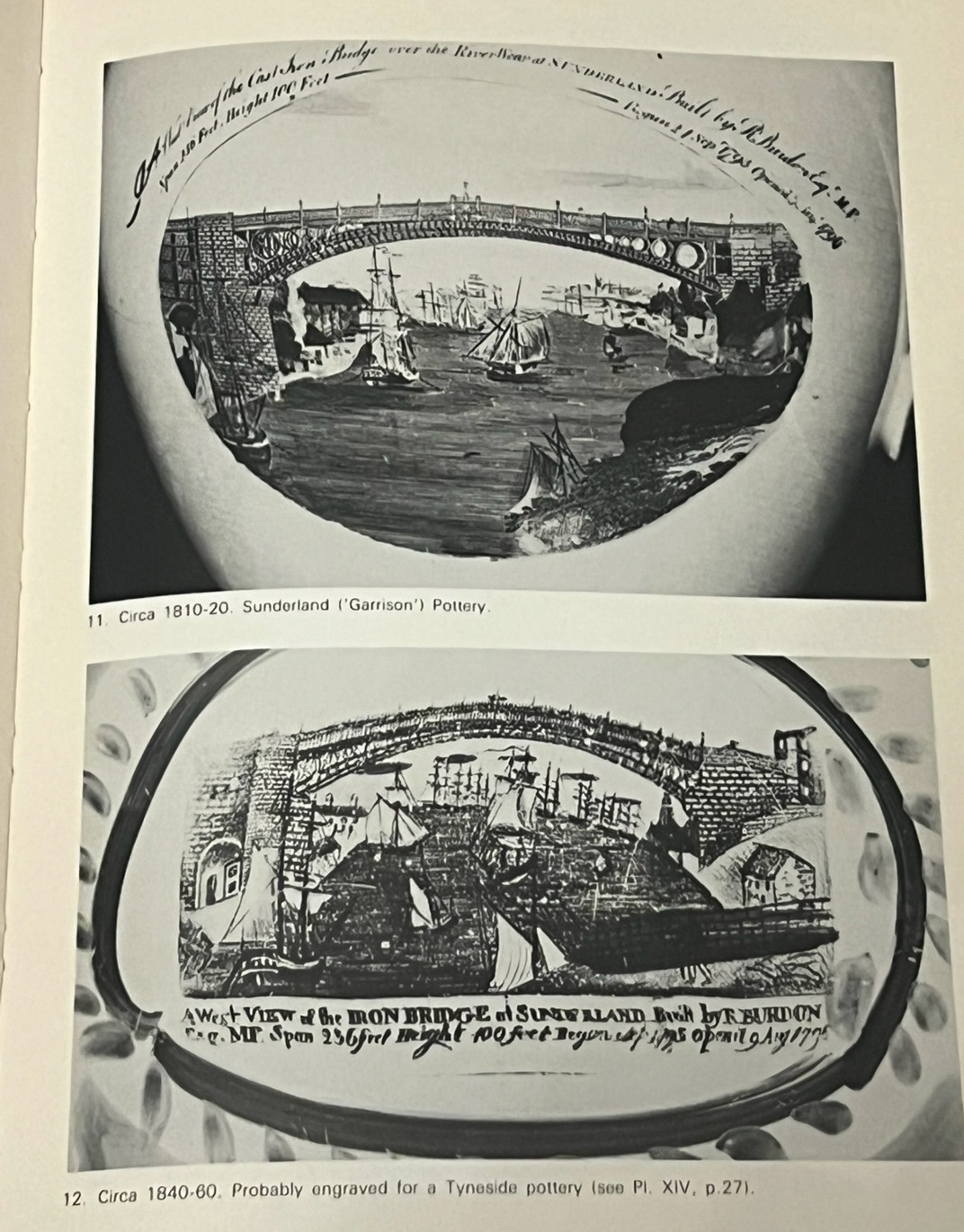
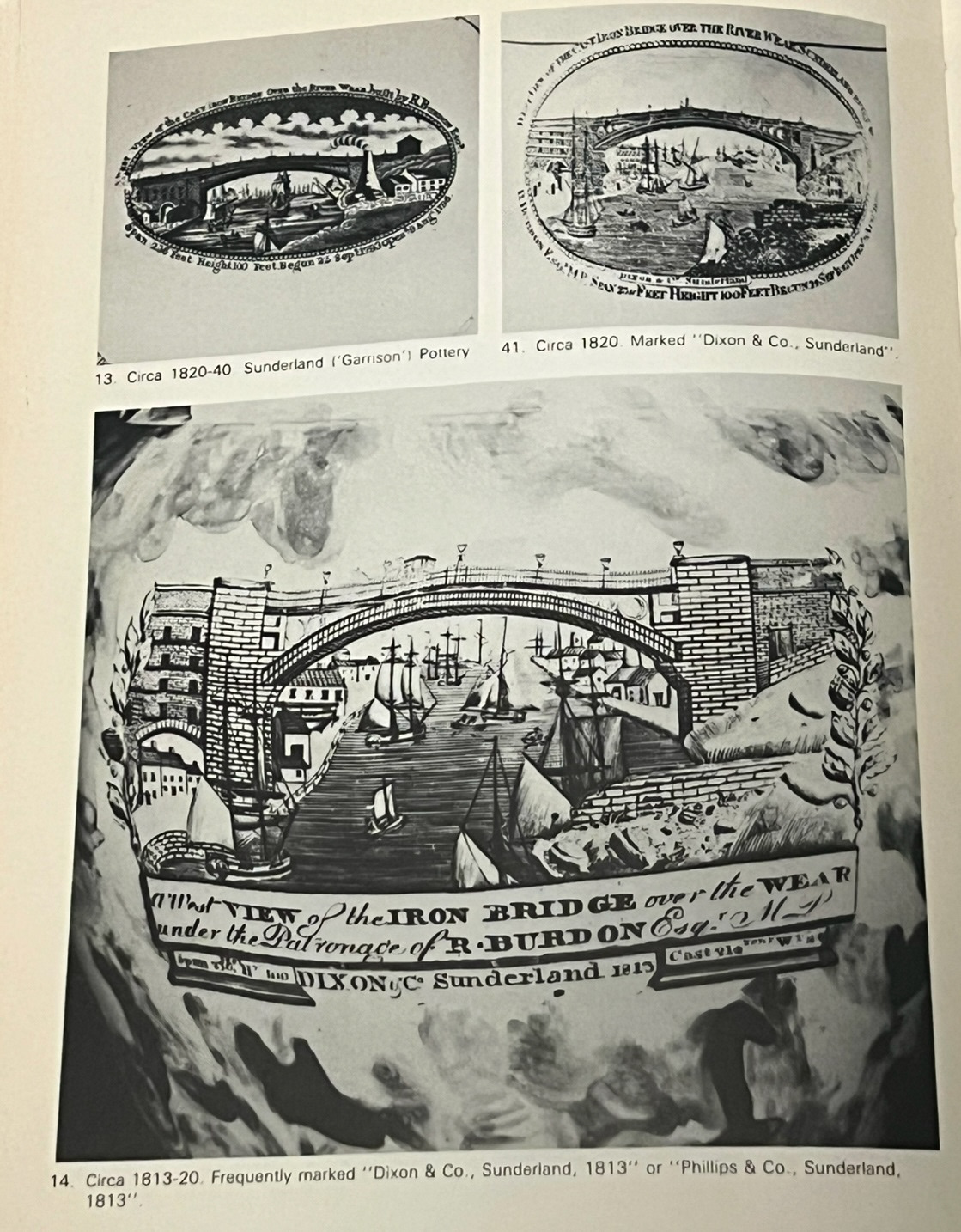

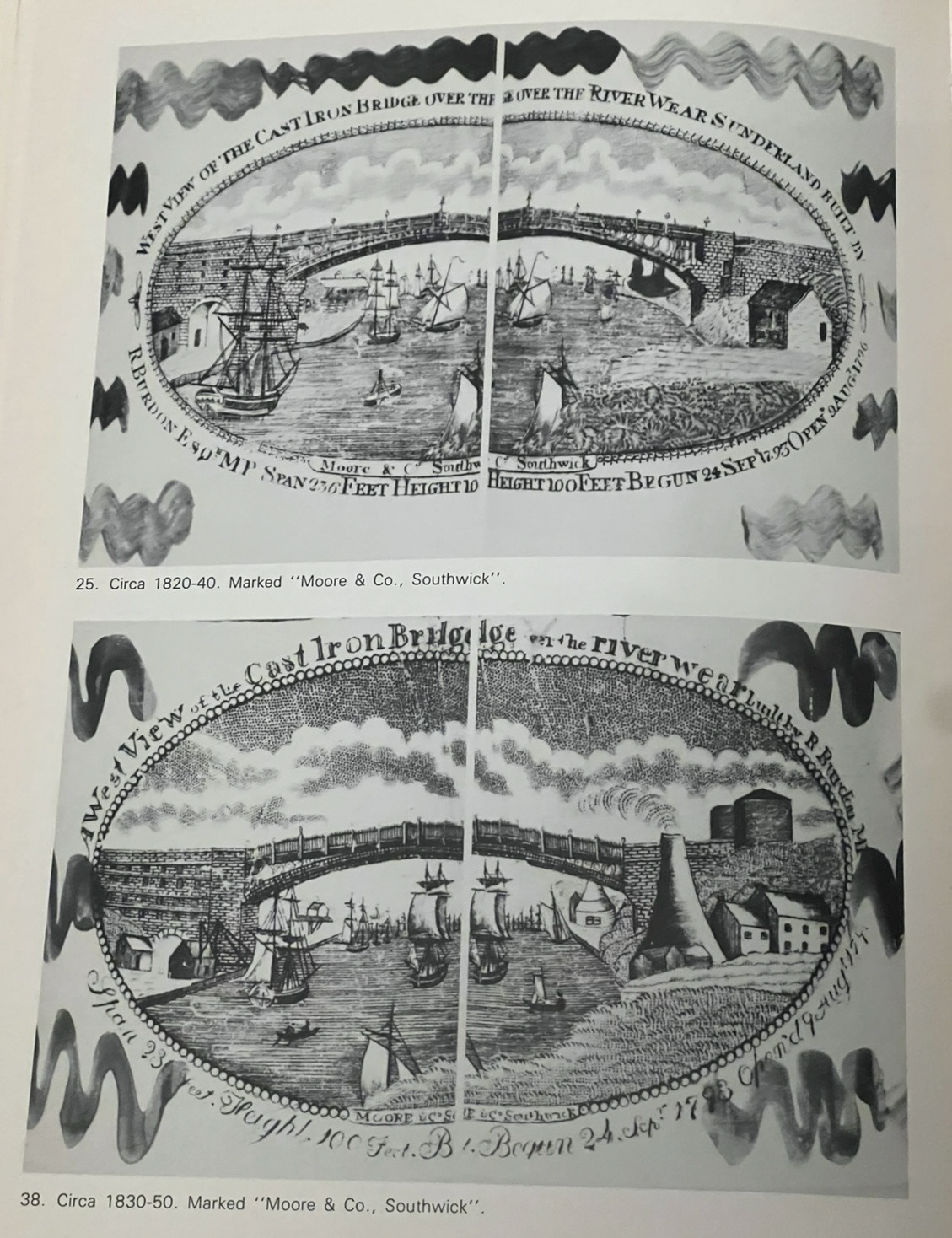

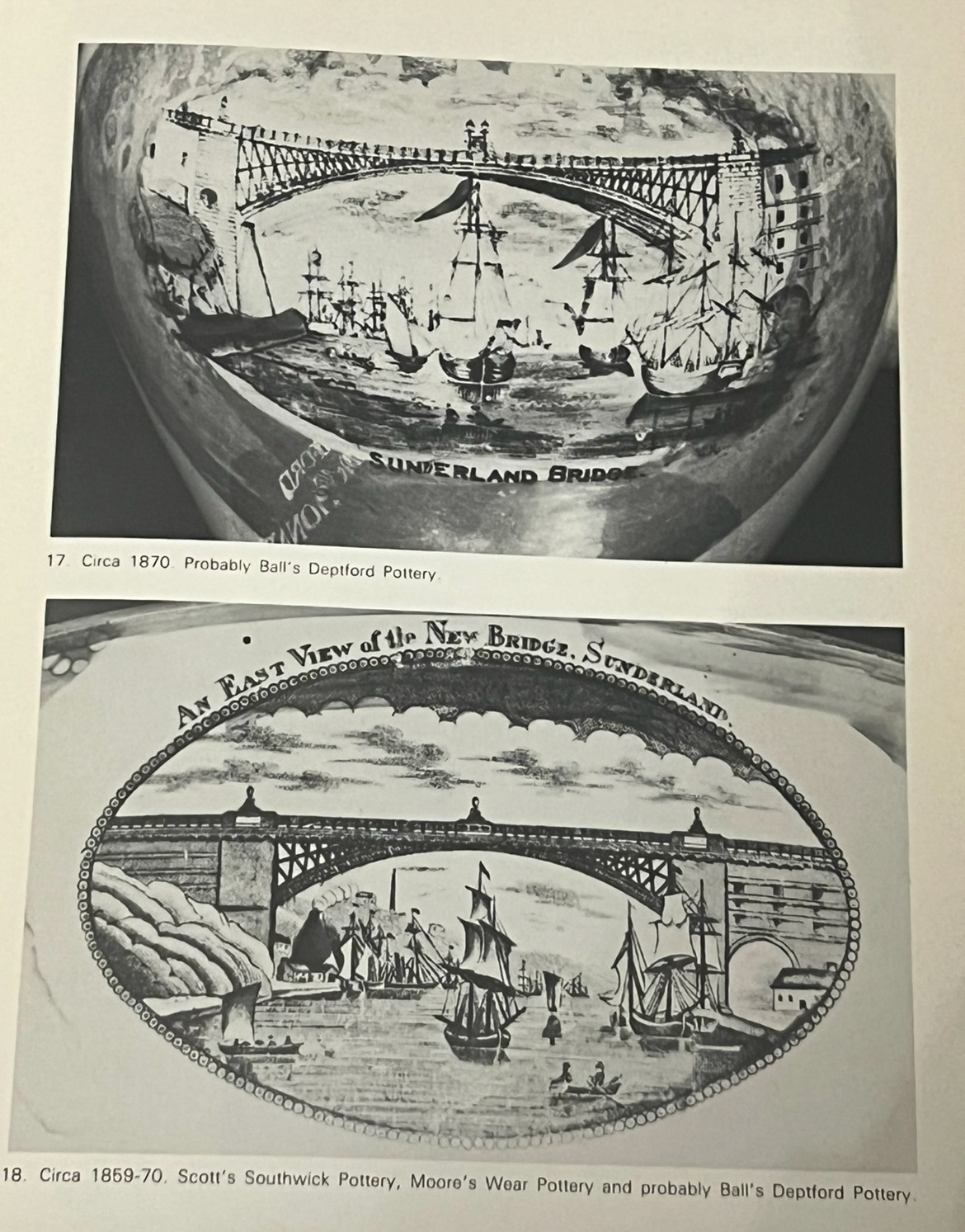
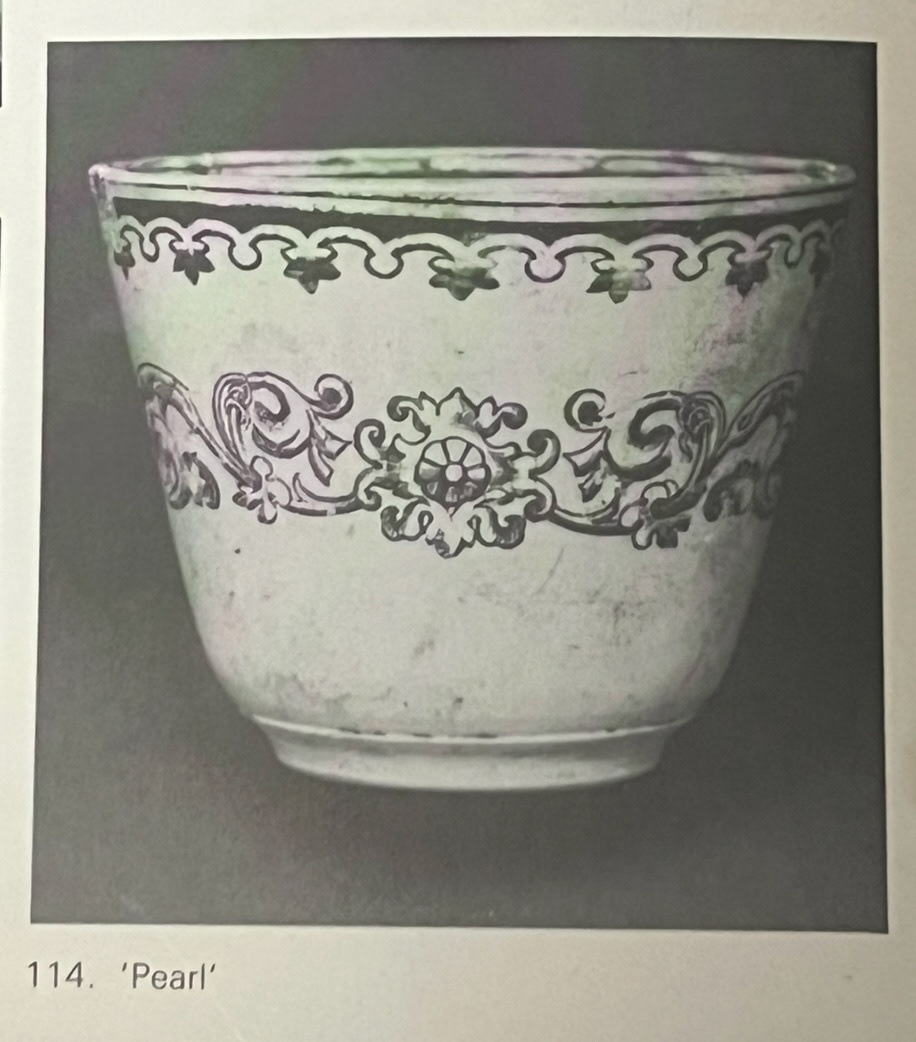
I found this book extremely interesting, if not the most interesting of all I had looked at so far as it pretty much lines up exactly with the collection available to see at Sunderland museum, however it offered further information on the individual pieces which I could then use on my next museum visit. I felt I could also, through the photography of the pieces, see some of the detail in the design which I found quite inspiring, as well as the features of some of the original transfers used, played out flat to show the detail of design.
However I think the most vital piece of information featured in this book was its collected list of all of the quotes and sayings featured on Sunderland wear ceramics. This was something that captured my imagination and that was spoken on quite a lot in my last tutorial with CJ. We thought that chosen wisely, some of these phrases would be an interesting thing to look at and maybe carry through and play with to add to my final pieces. (list below).

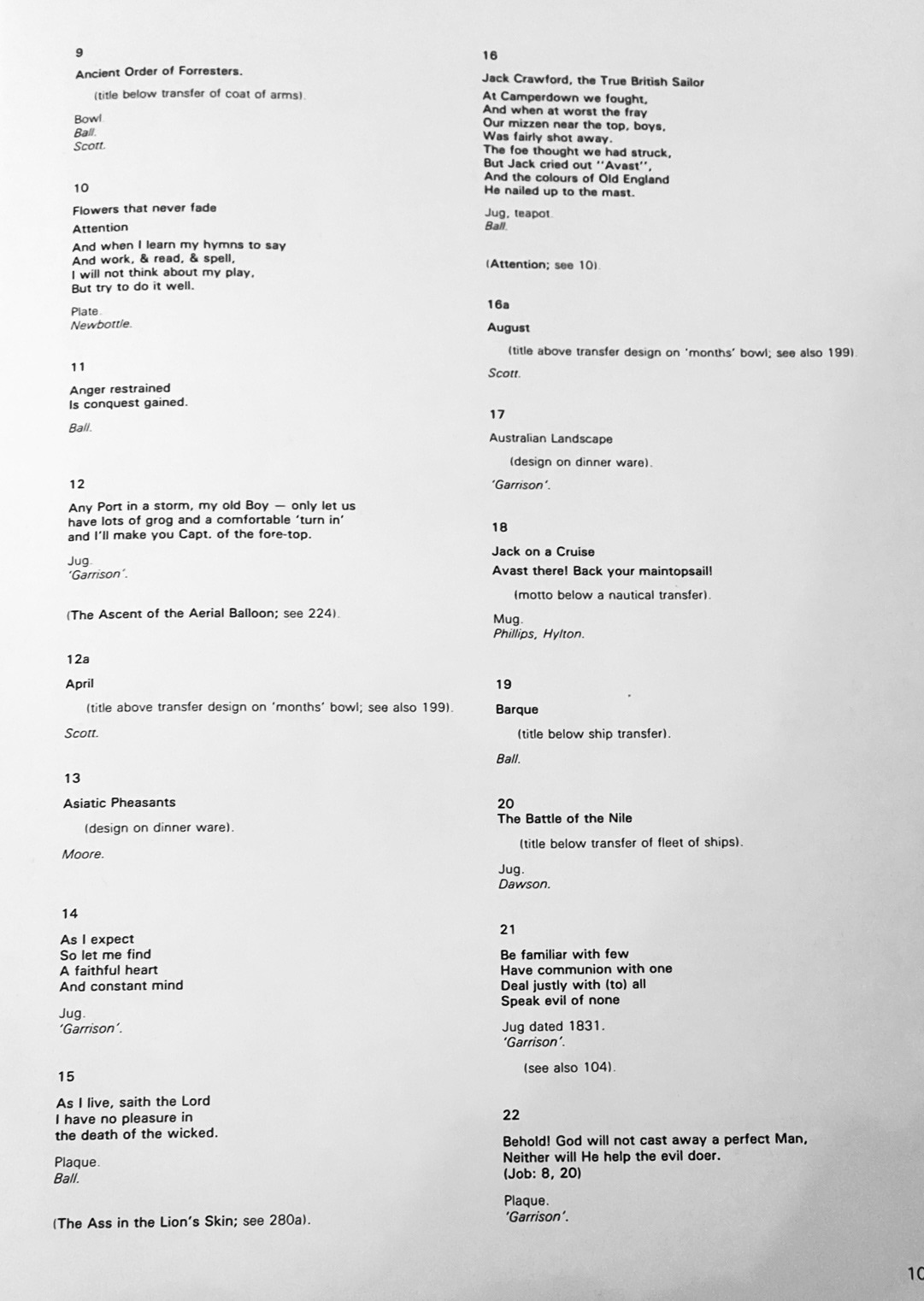

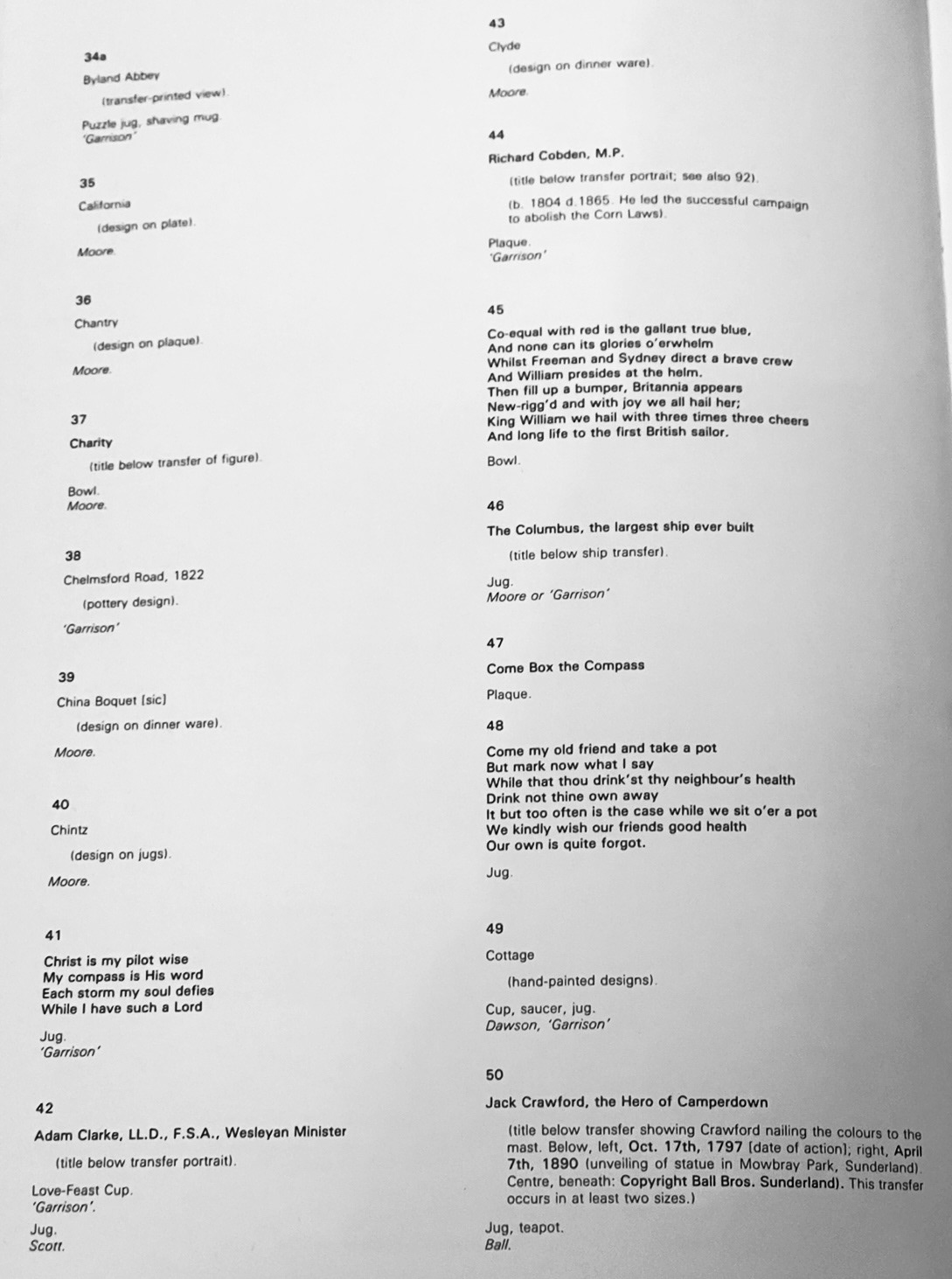

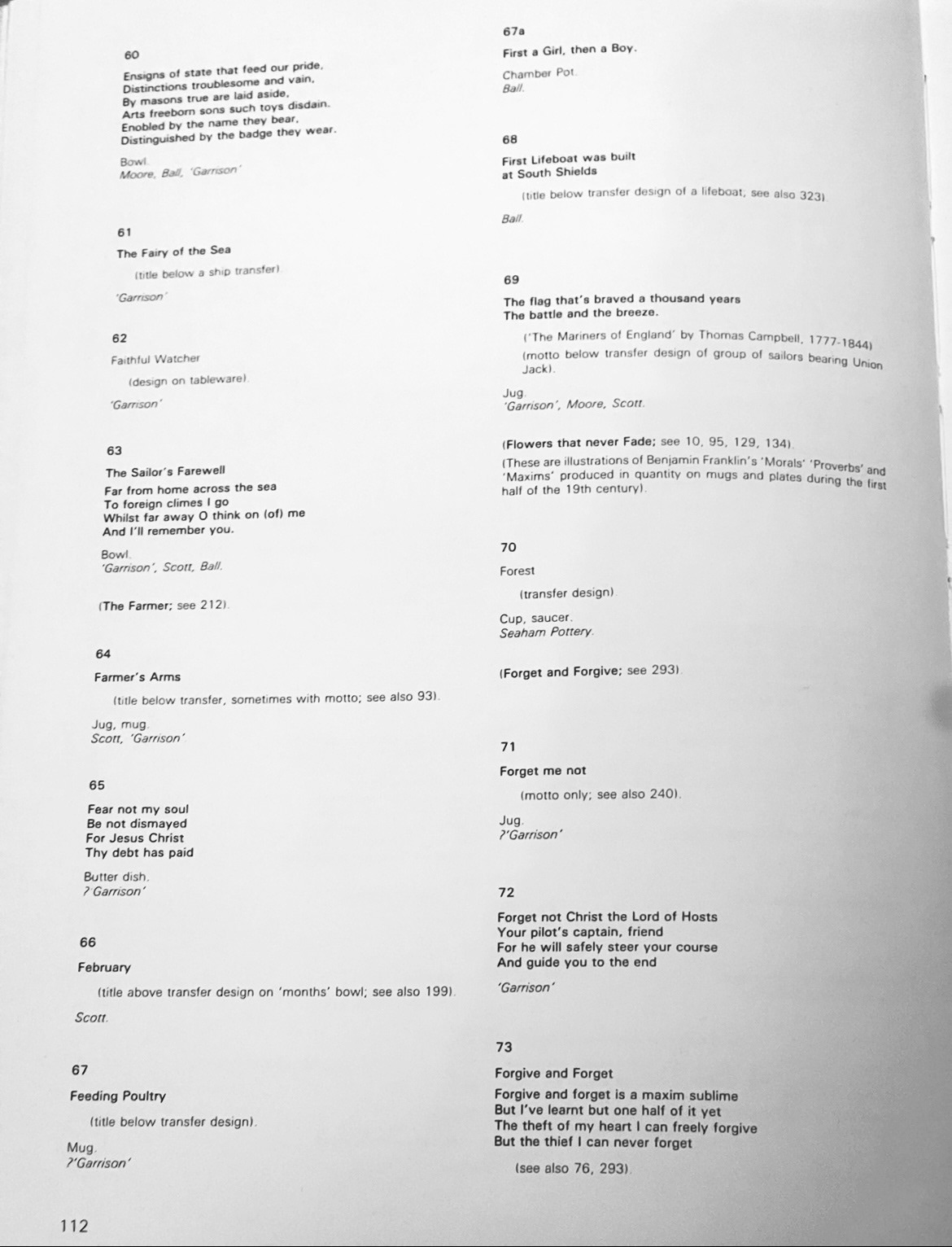
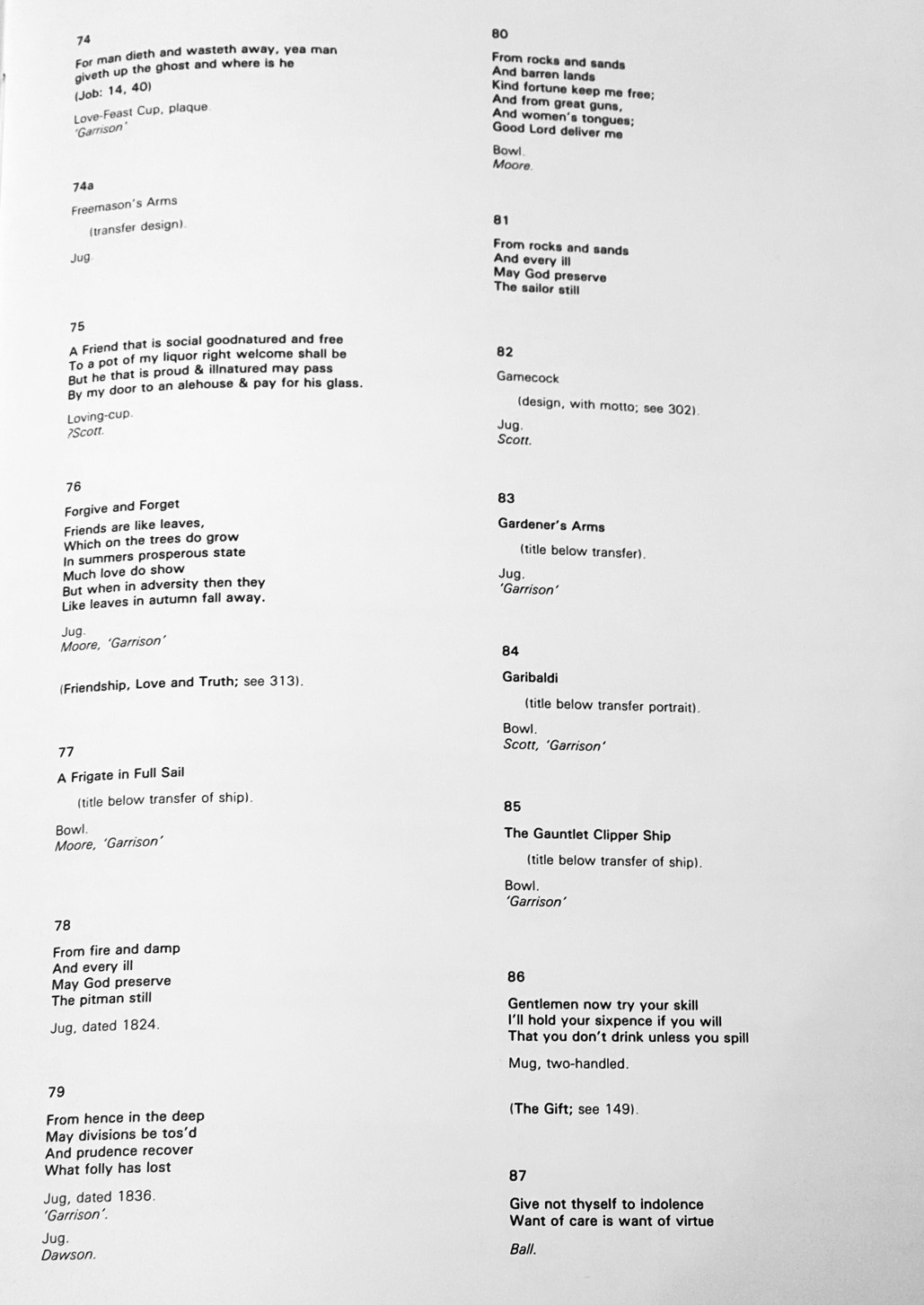

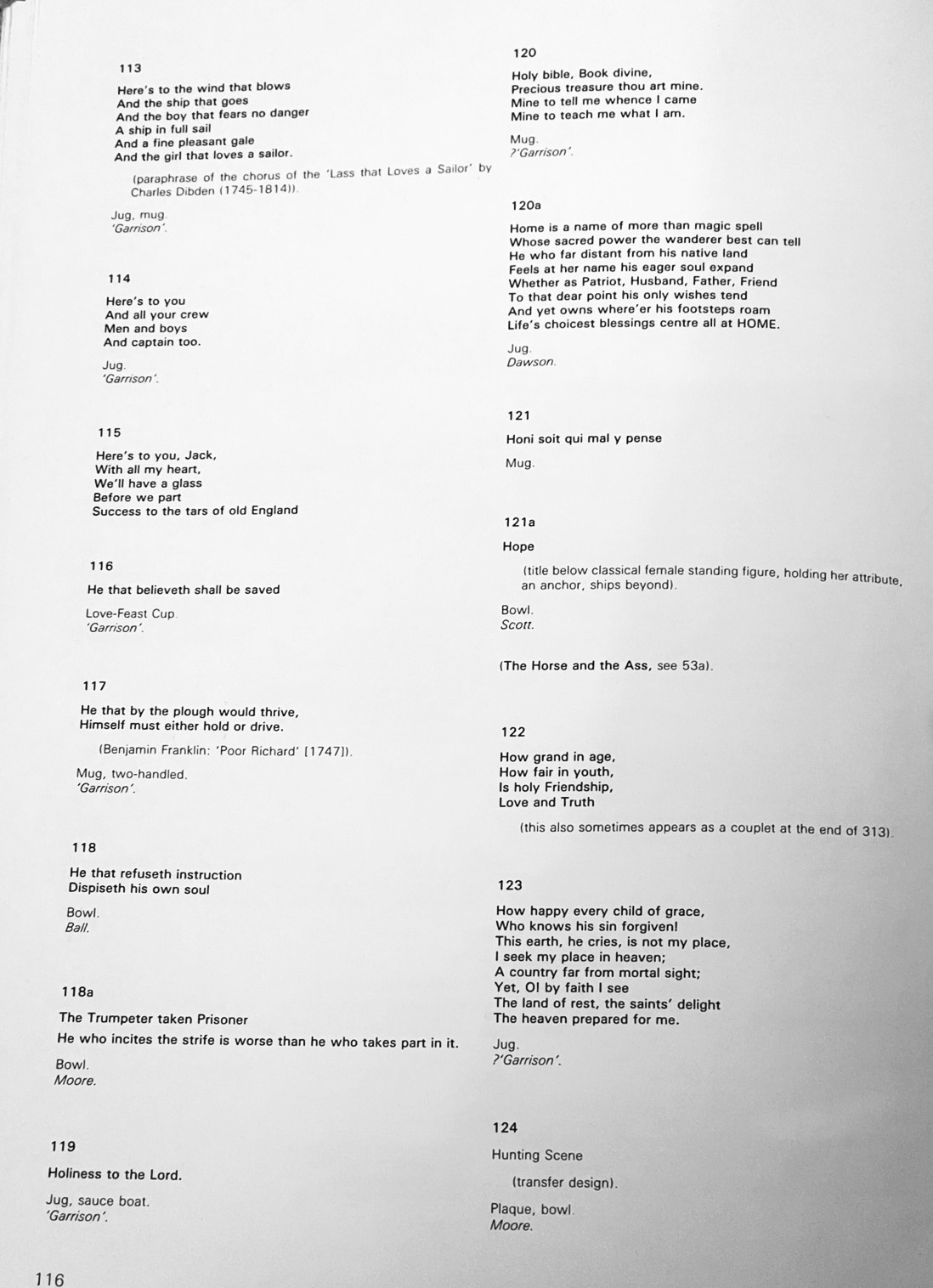
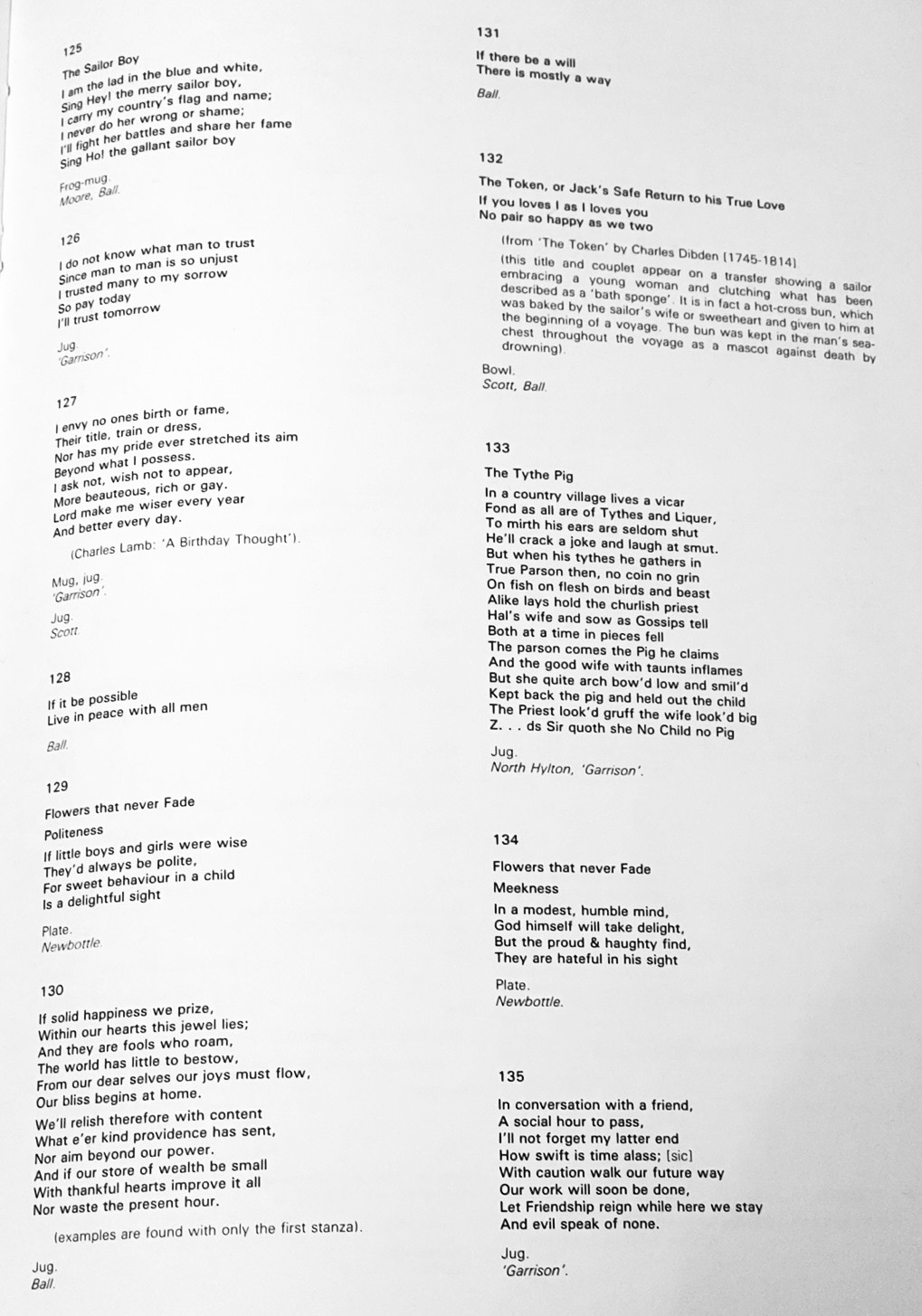

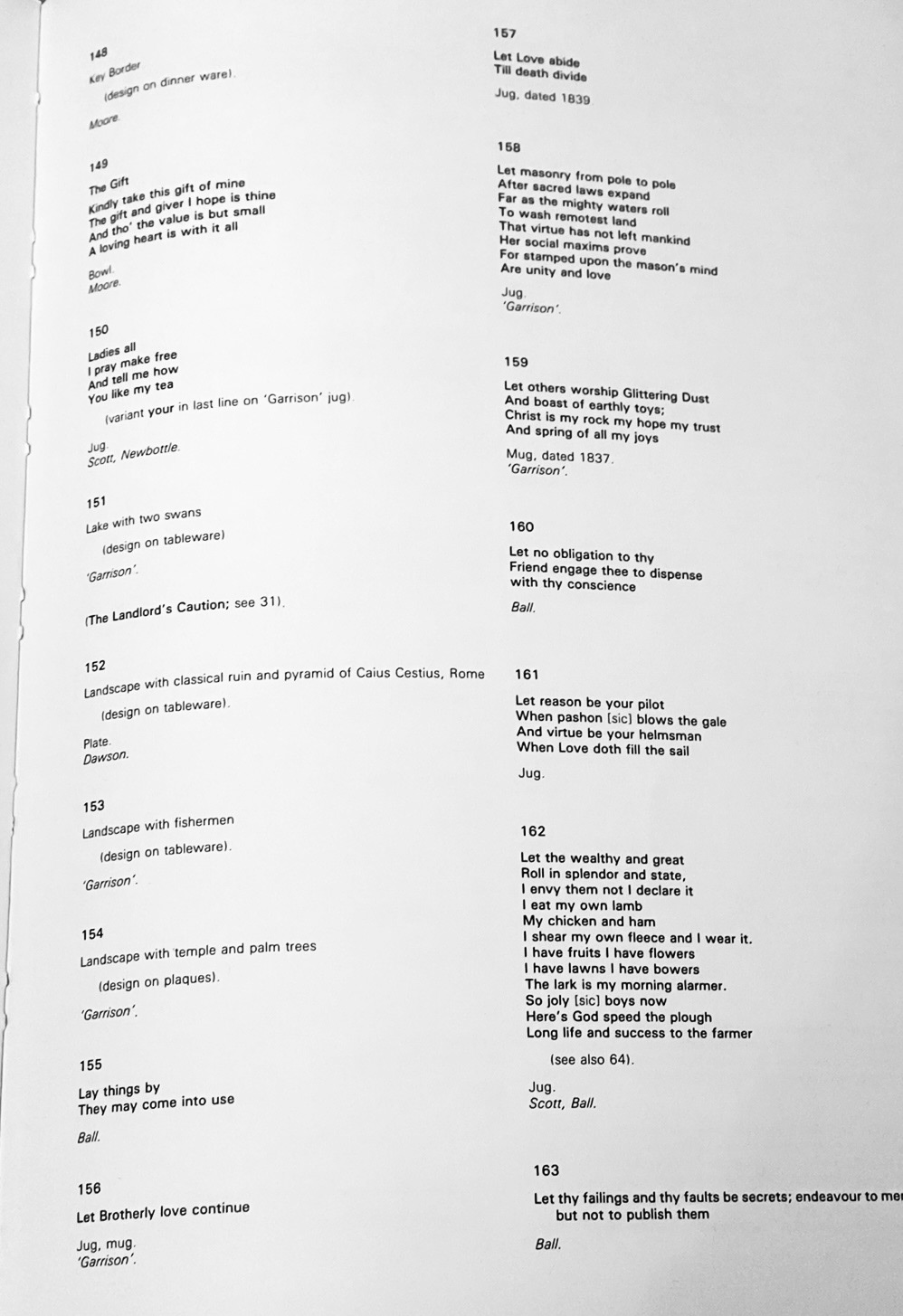
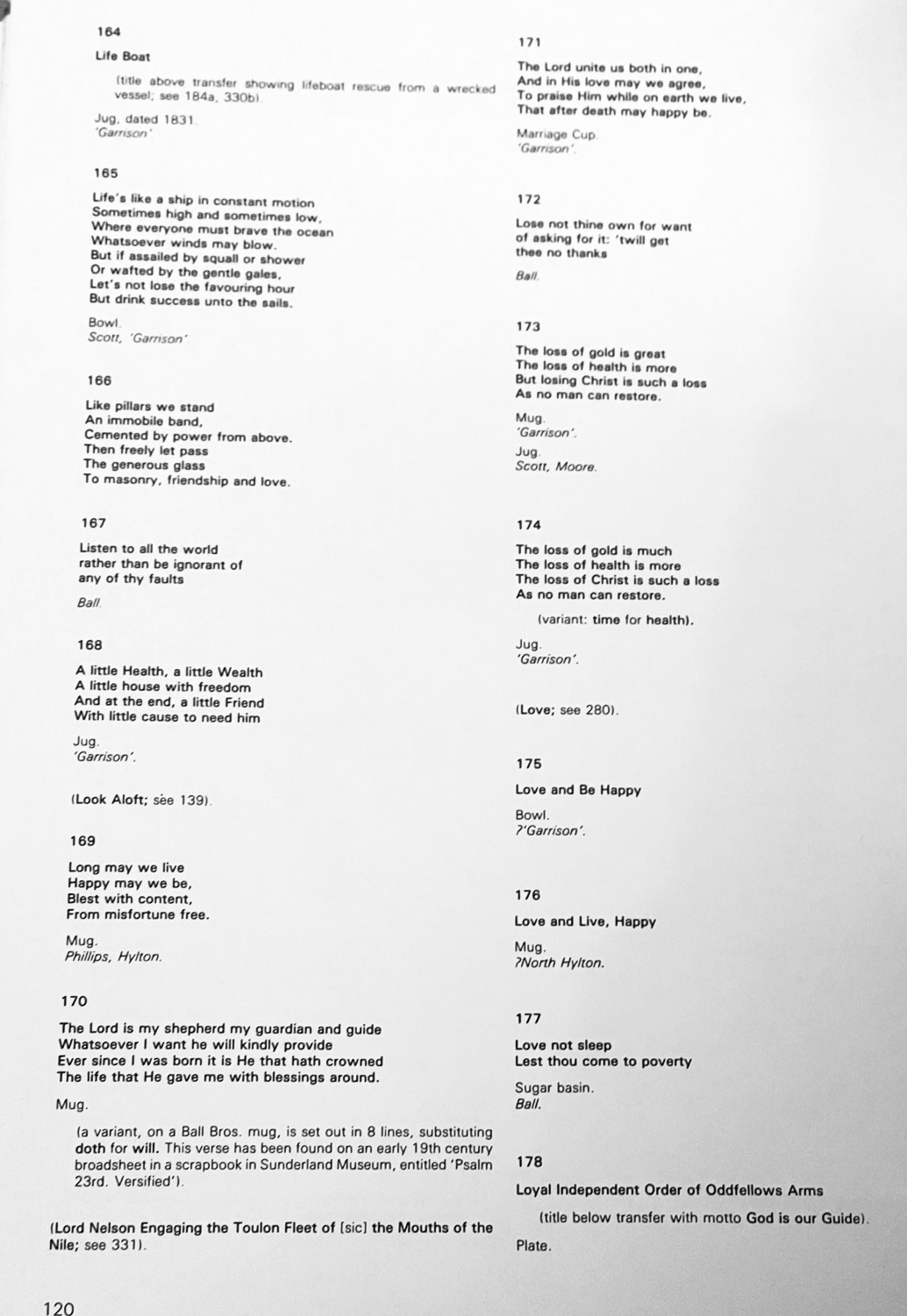
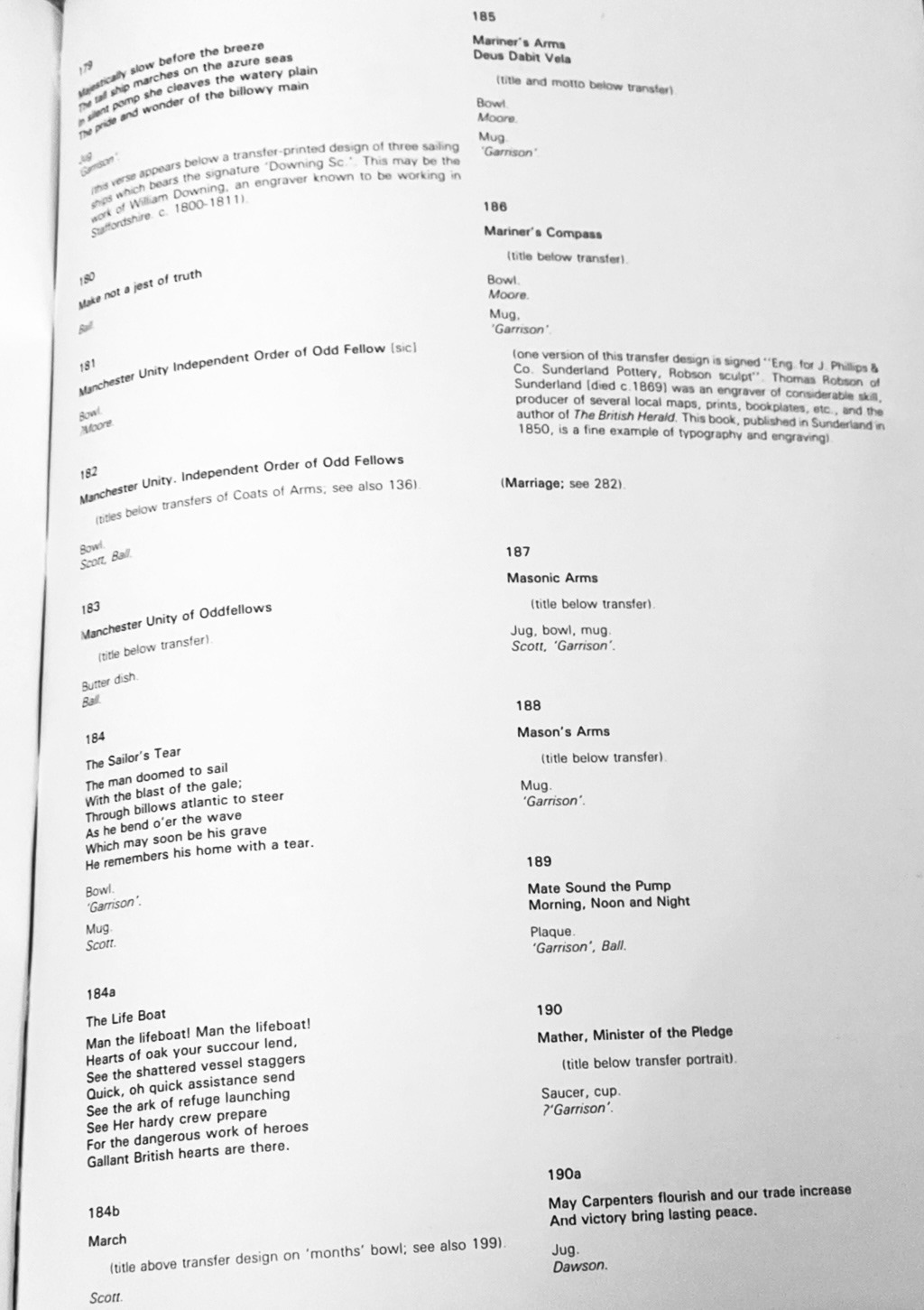
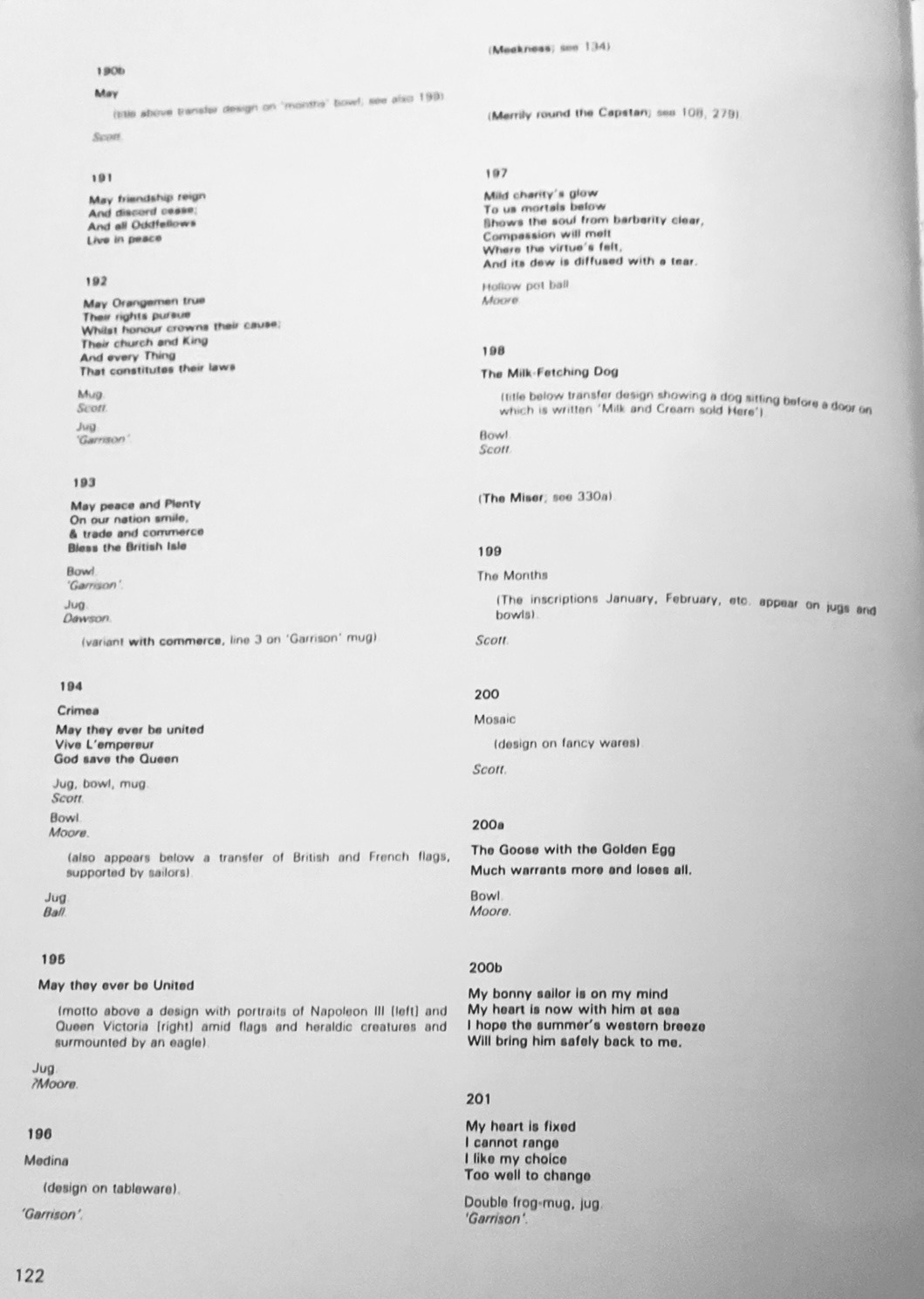
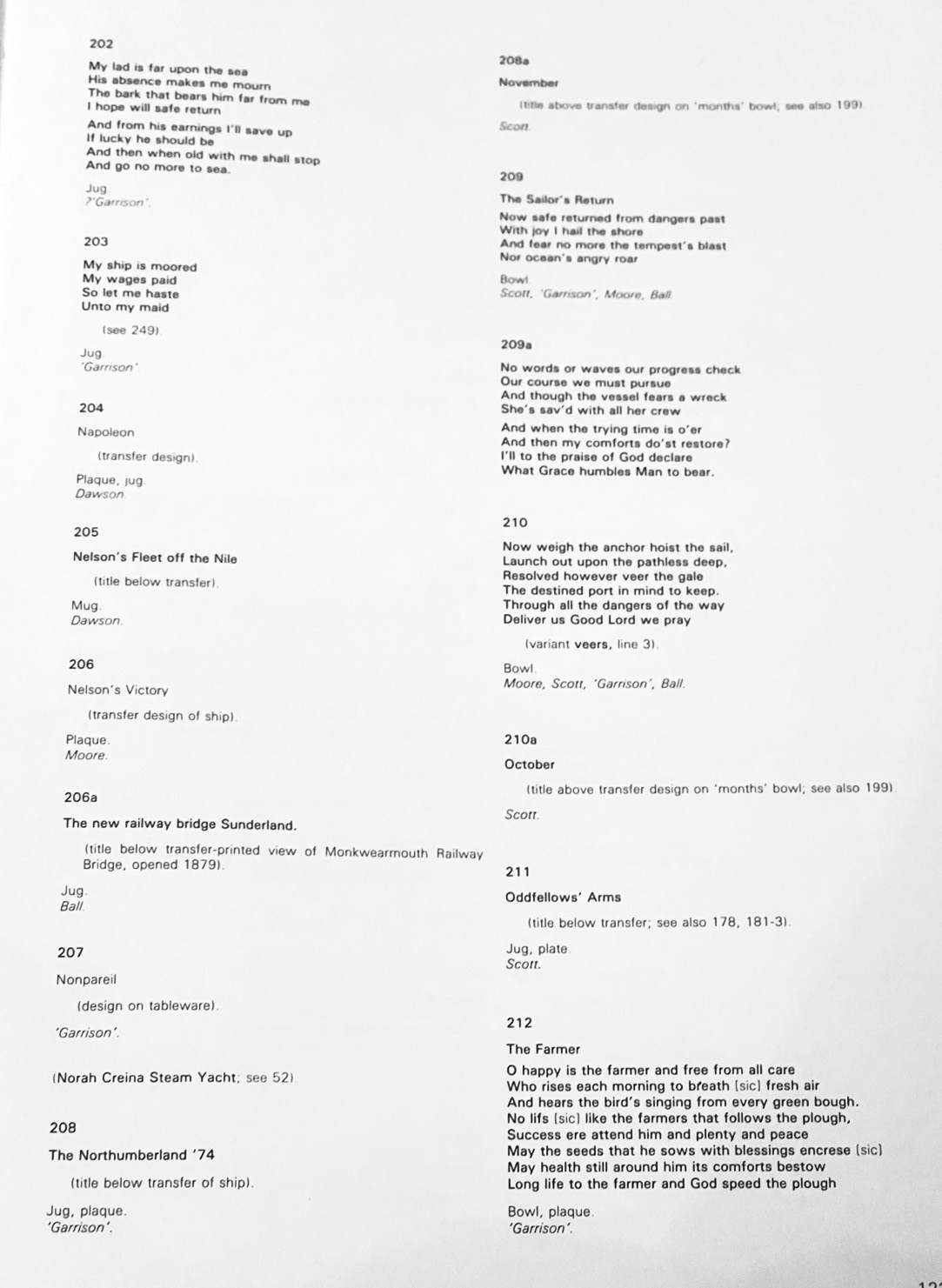
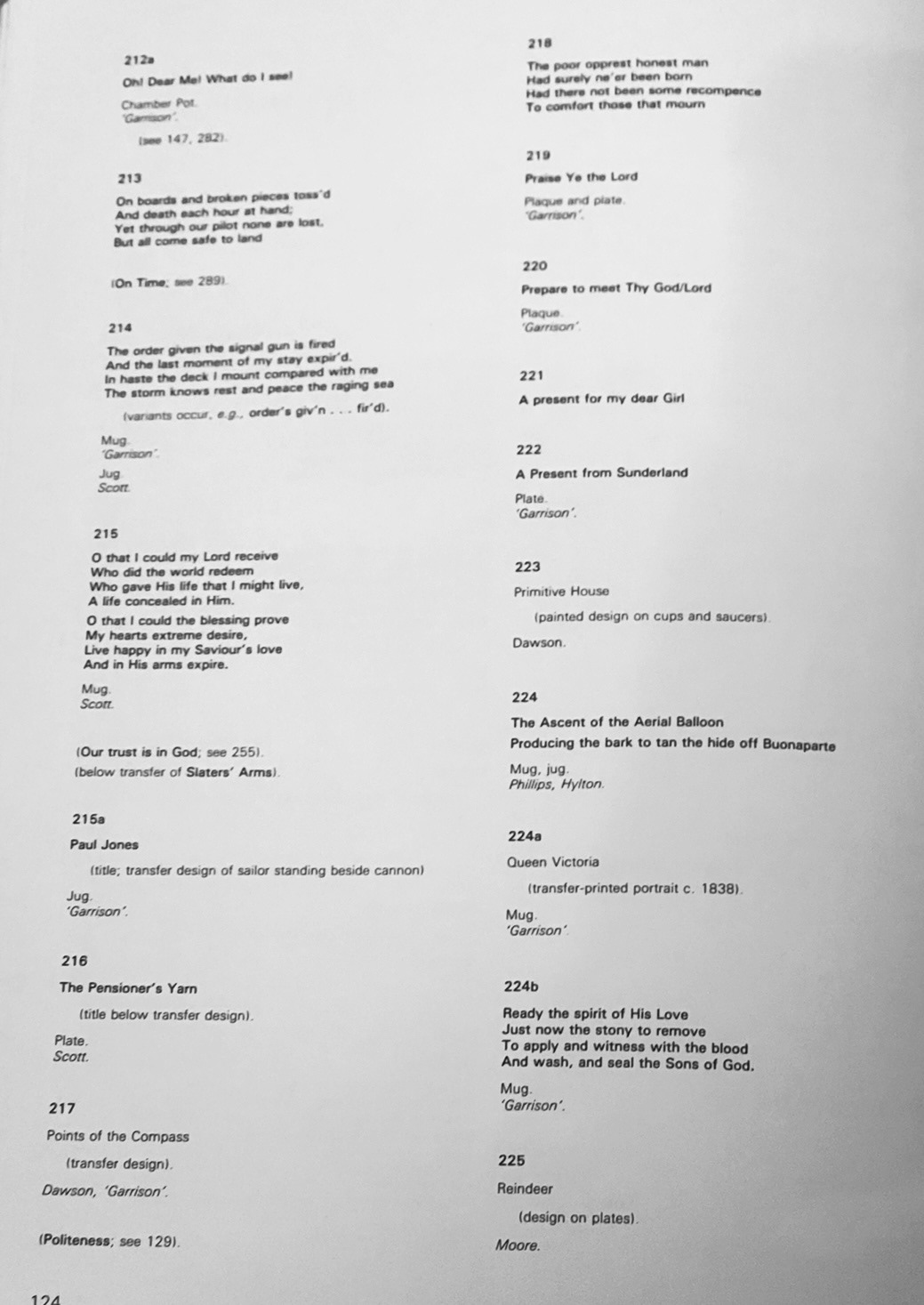
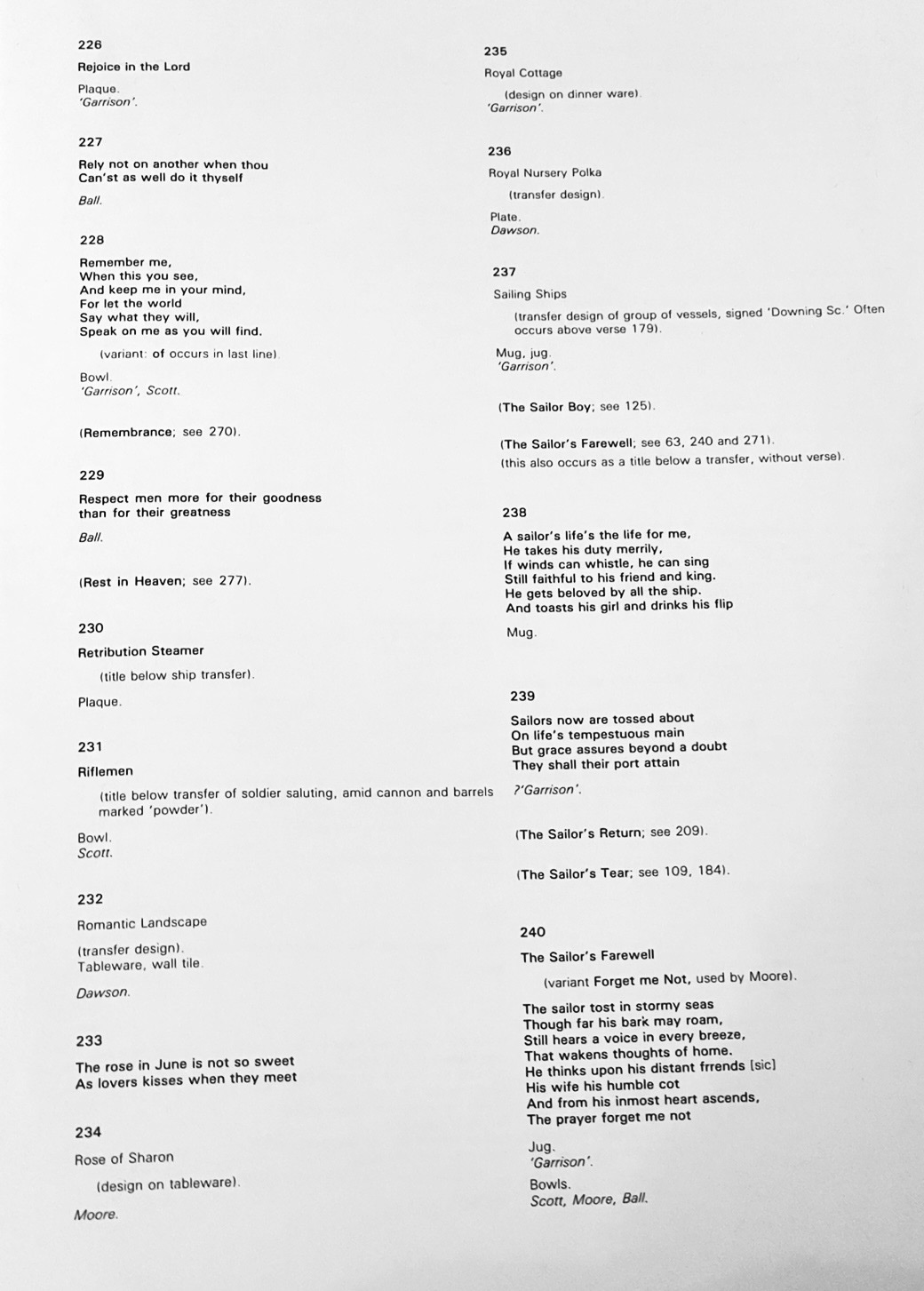

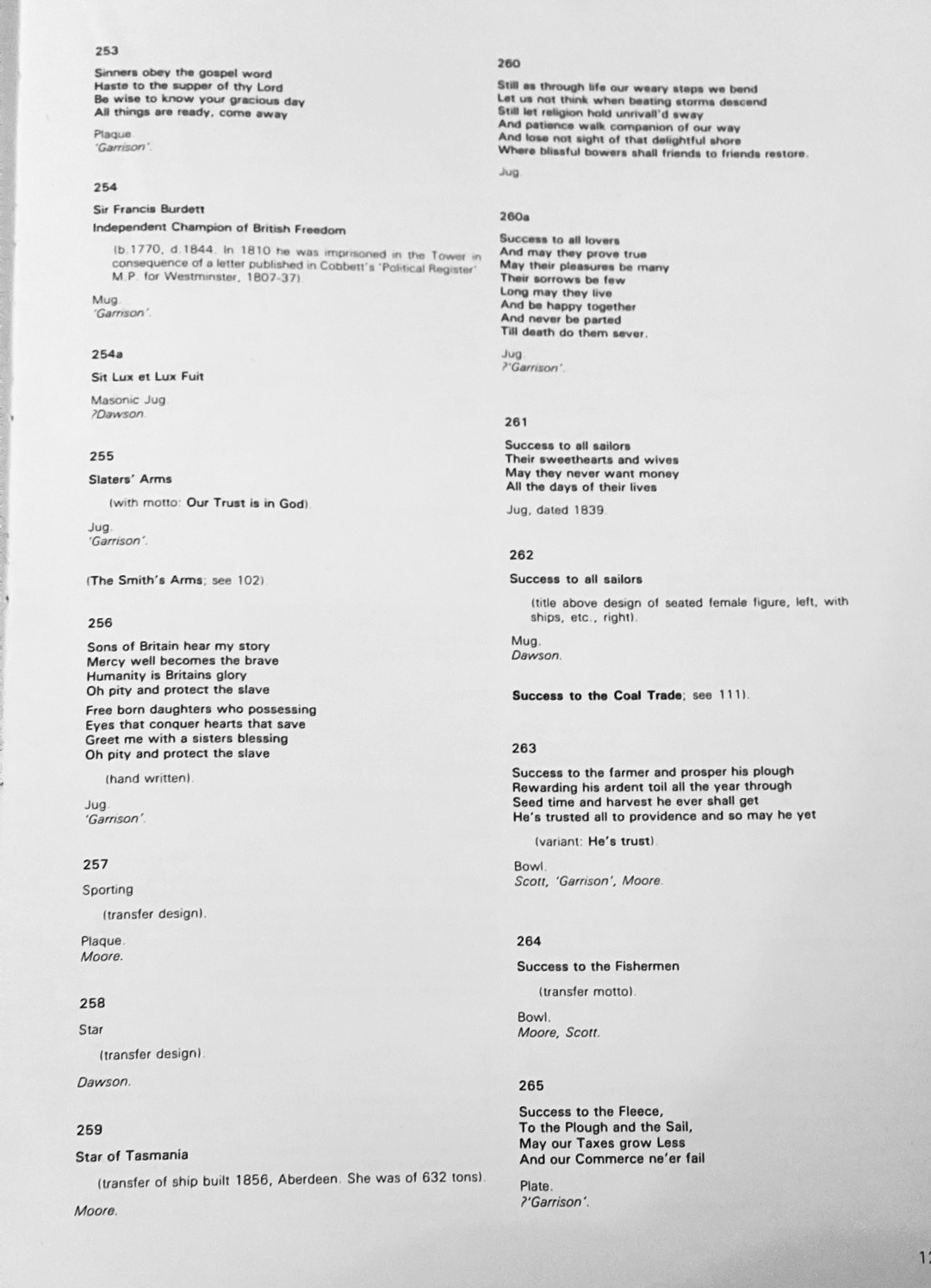
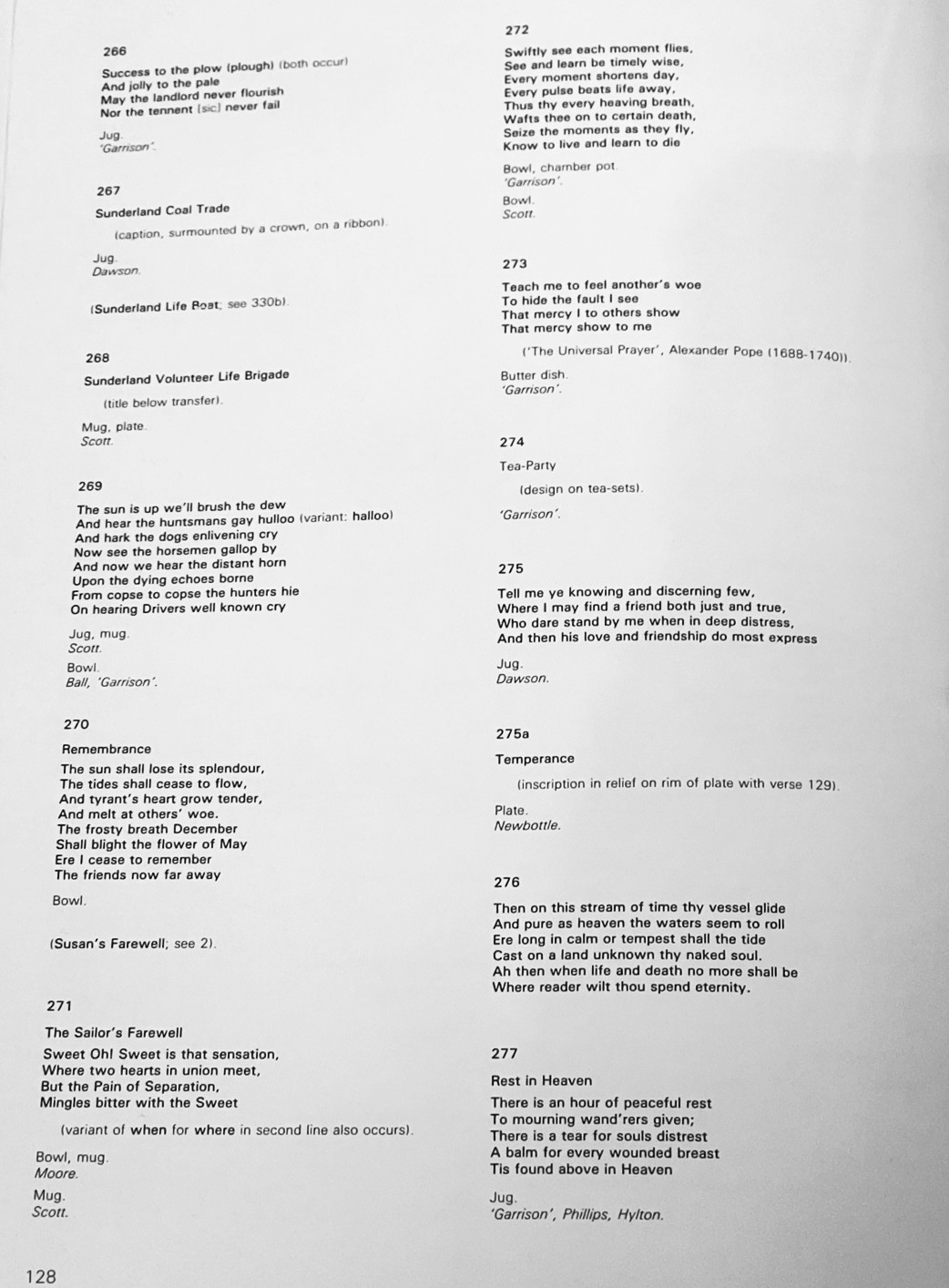
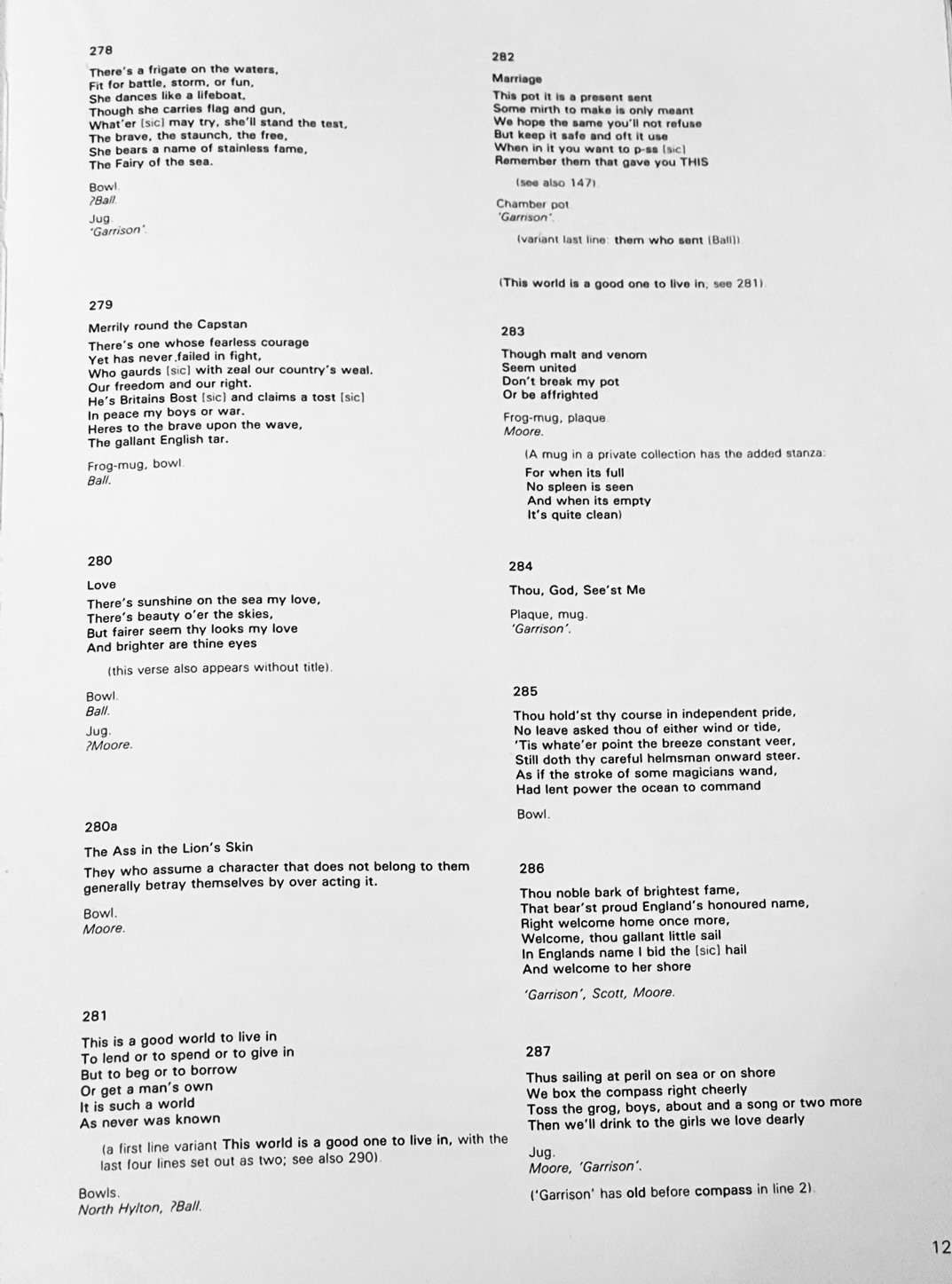
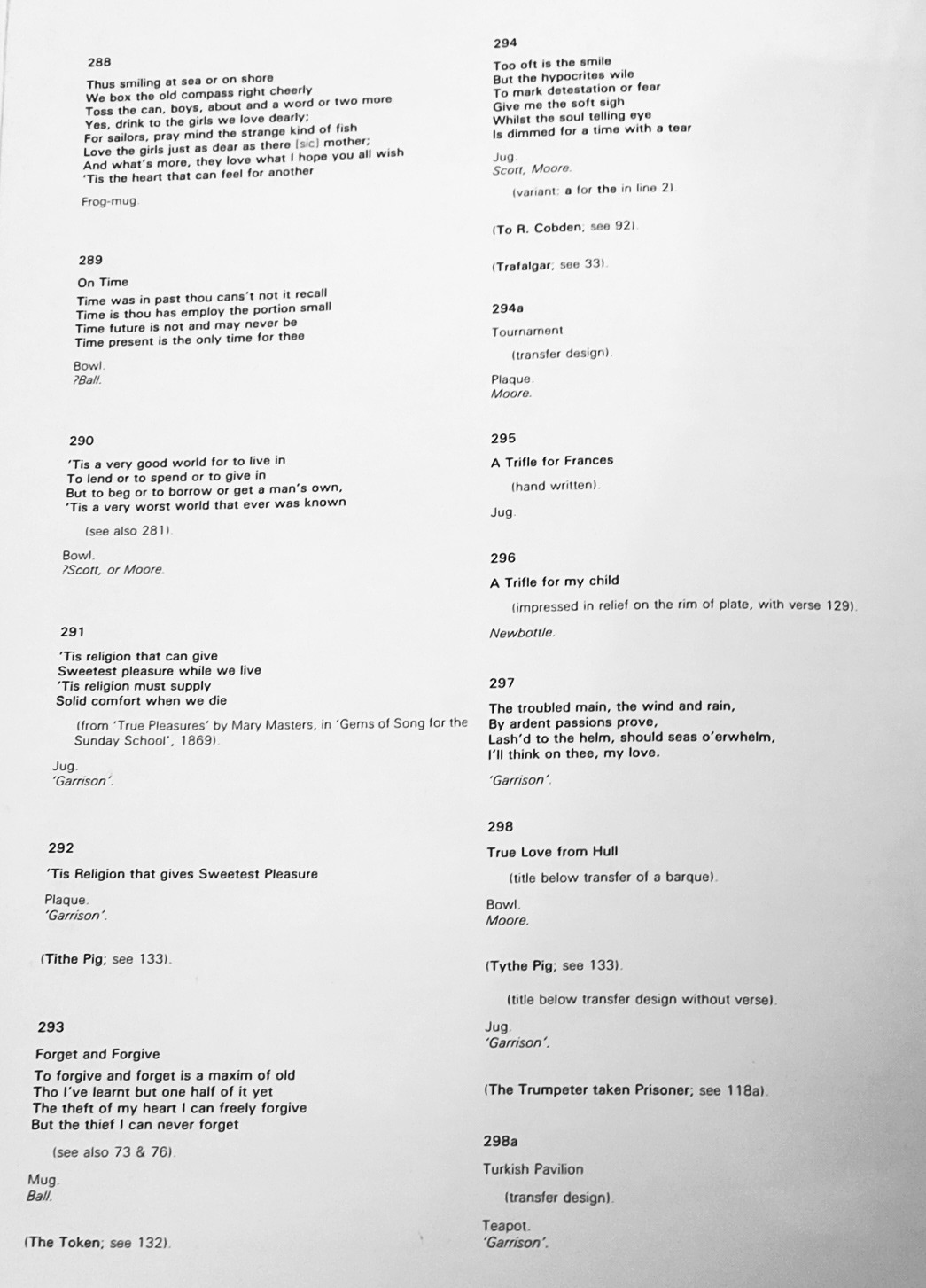

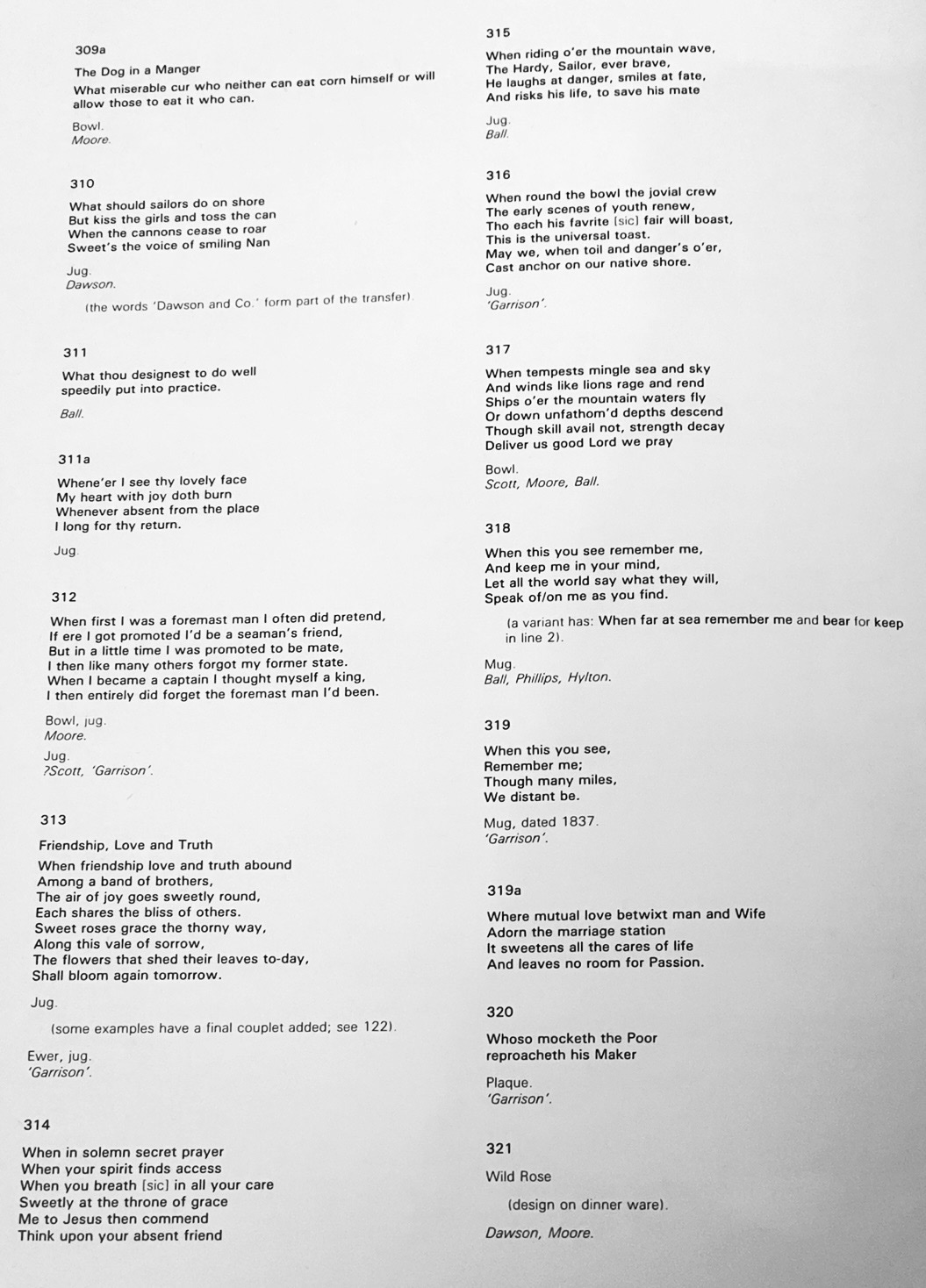
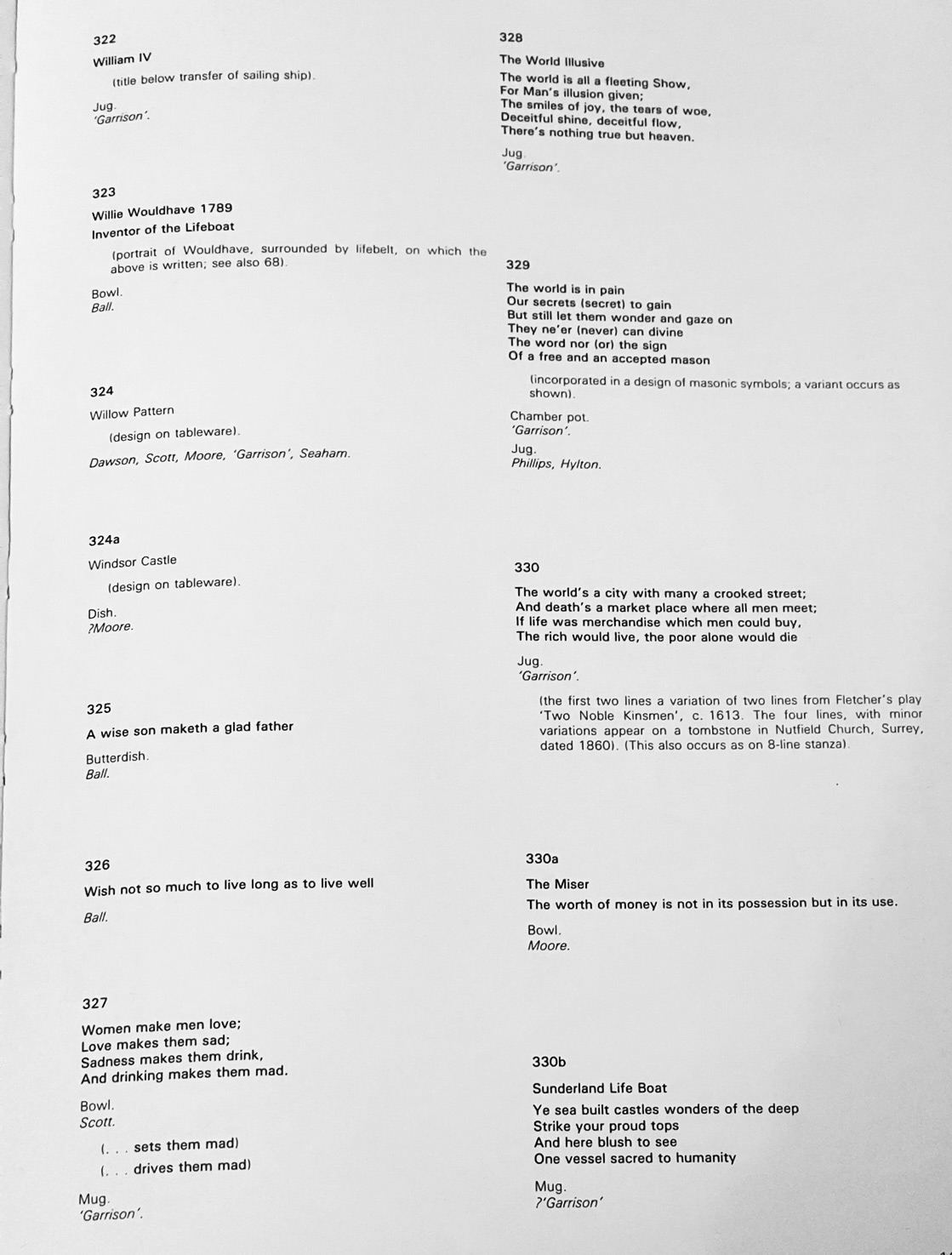
in future i will comb through this list and find the appropriate phrases that I would like to work with.
After I had looked at these I took another trip to the Sunderland Museums collection of lustre ware, however this time I felt a lot more informed and felt I could go in and look at the pieces in more detail, and potentially pick out some features that I would like to use in my work going forward.
The first thing specifically that I wanted to look at was glaze. Sunderland lustre ware has a very specific tone of pink glaze with often a bubbled effect. this is something that I would like to try and recreate in my final outcomes as I think it is the most recognisable feature to Sunderland ware. (pictures of glaze below).

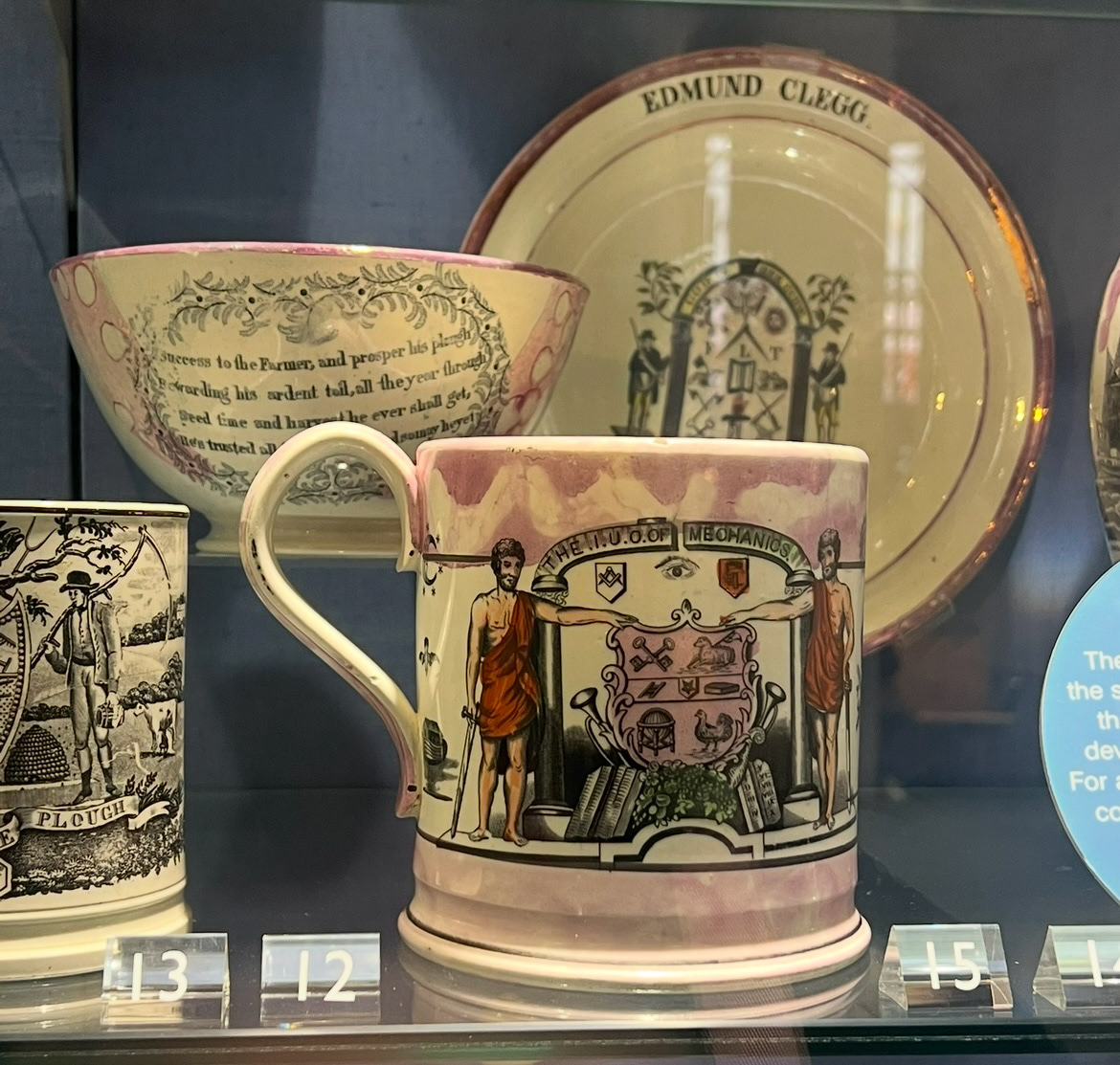
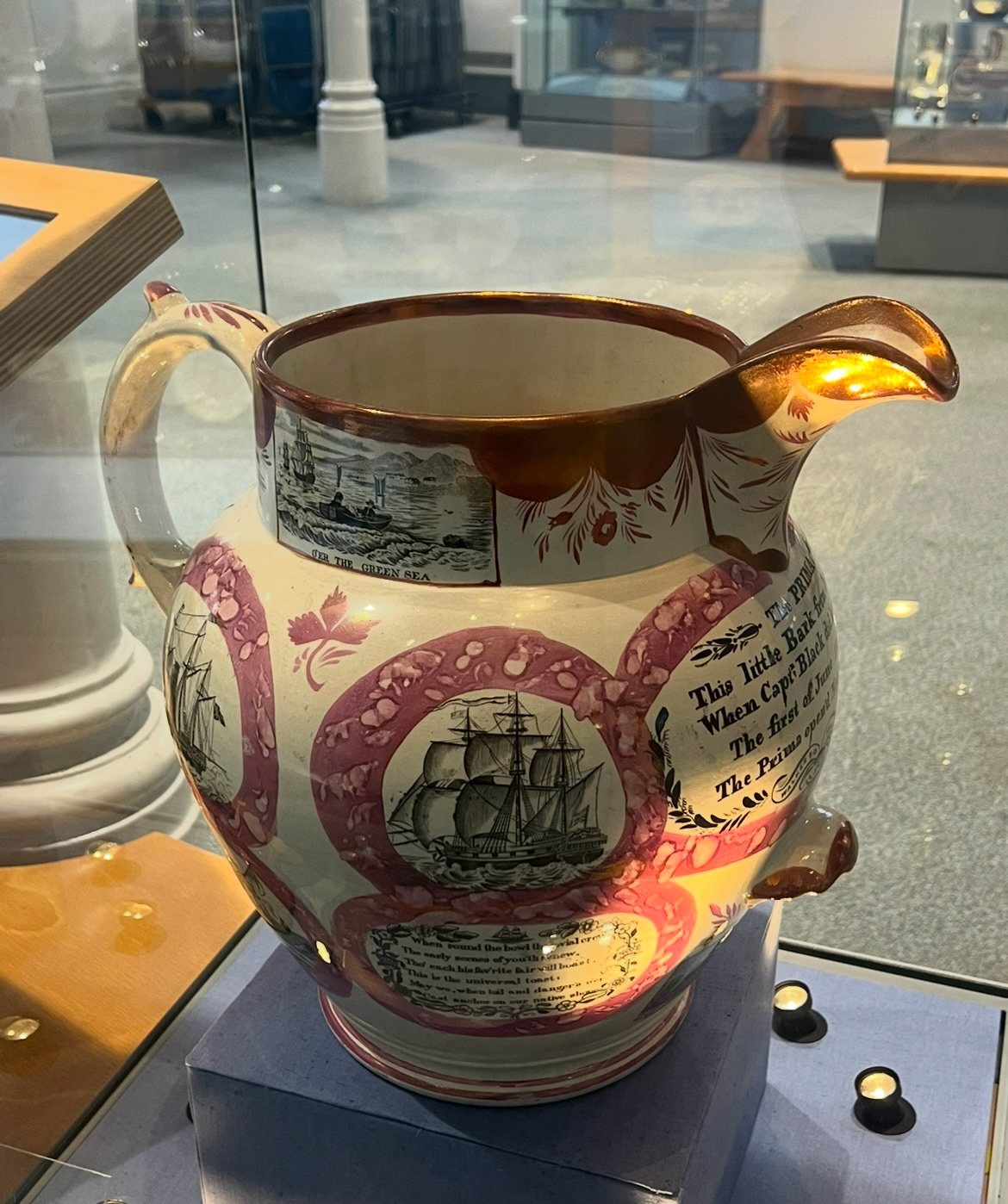

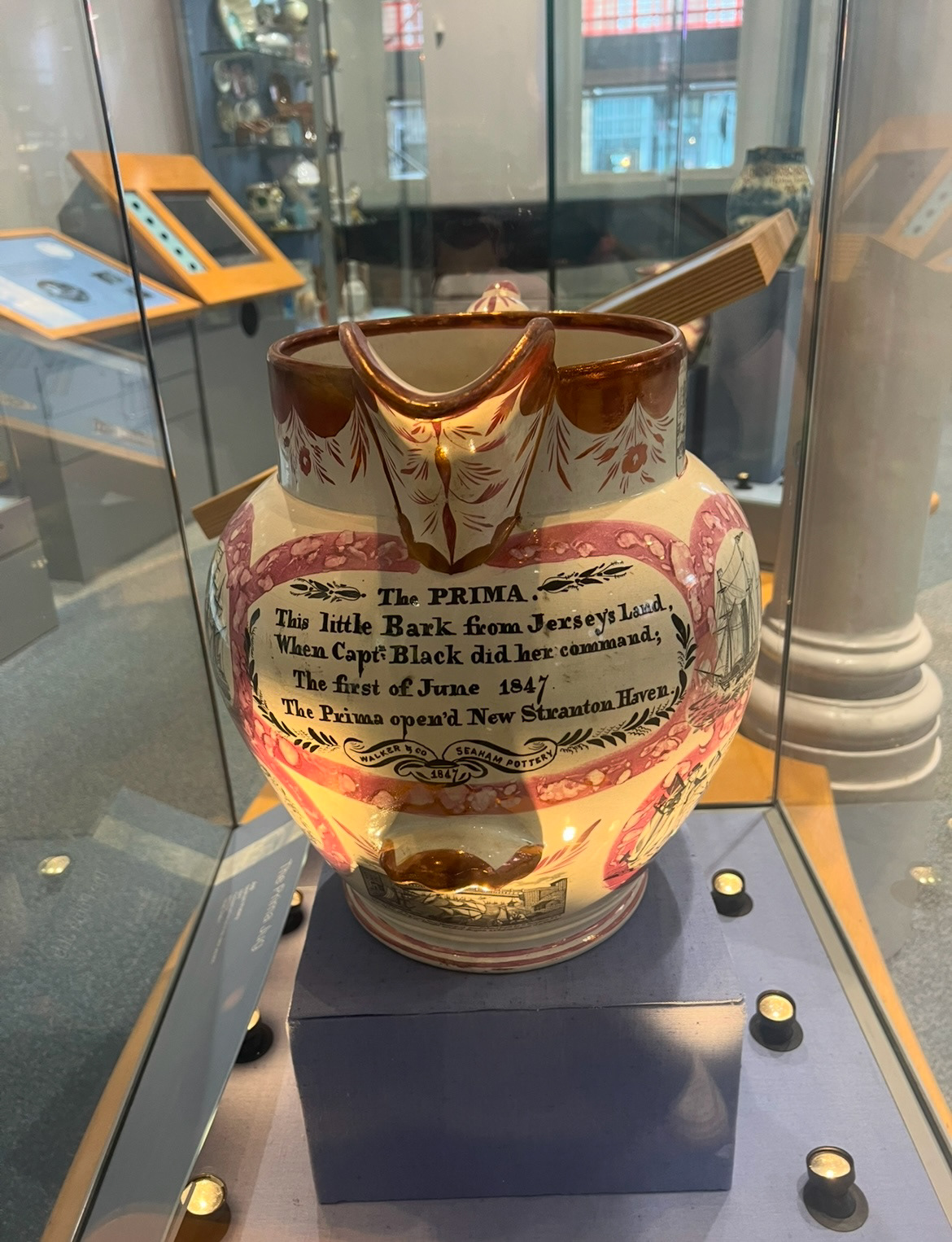
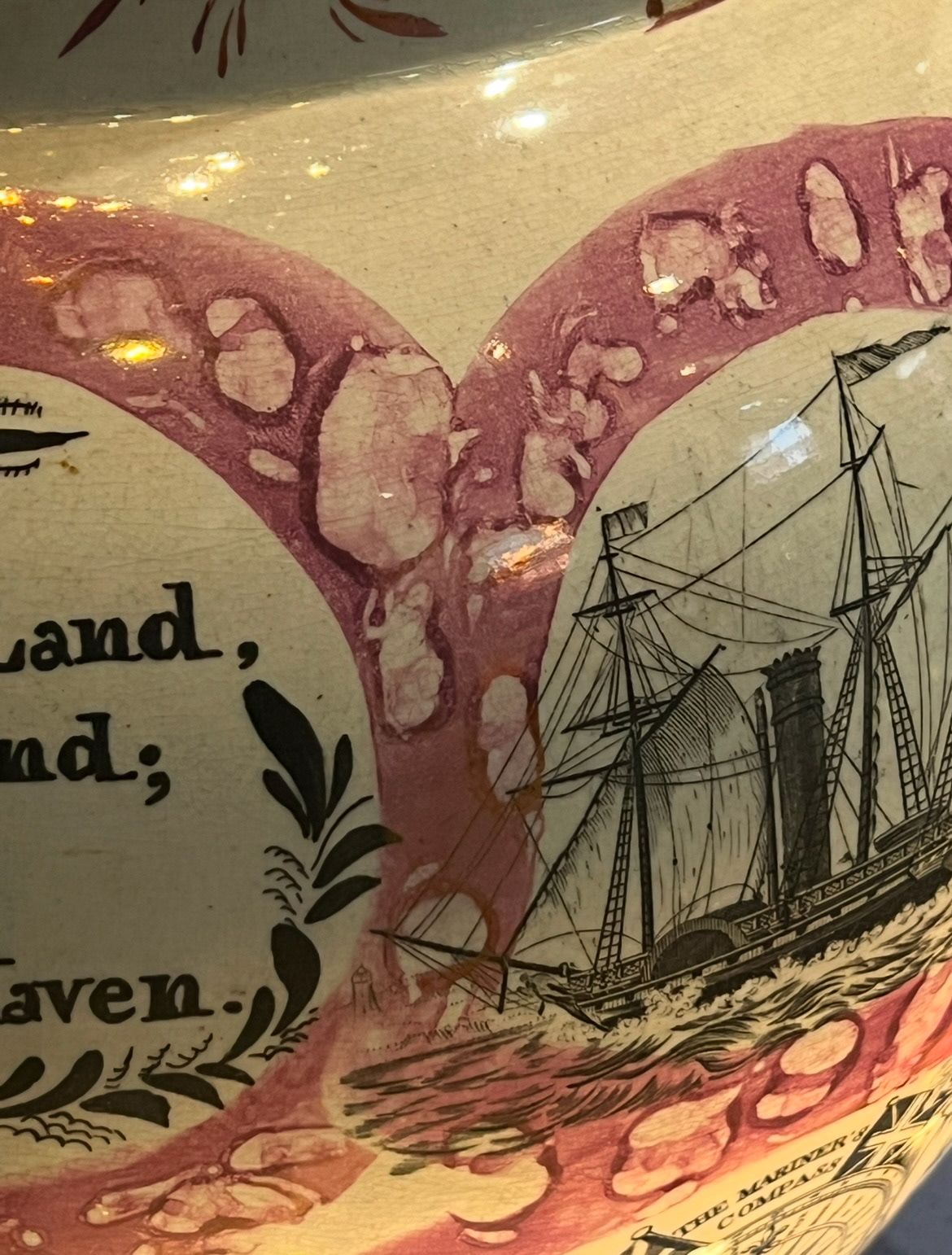
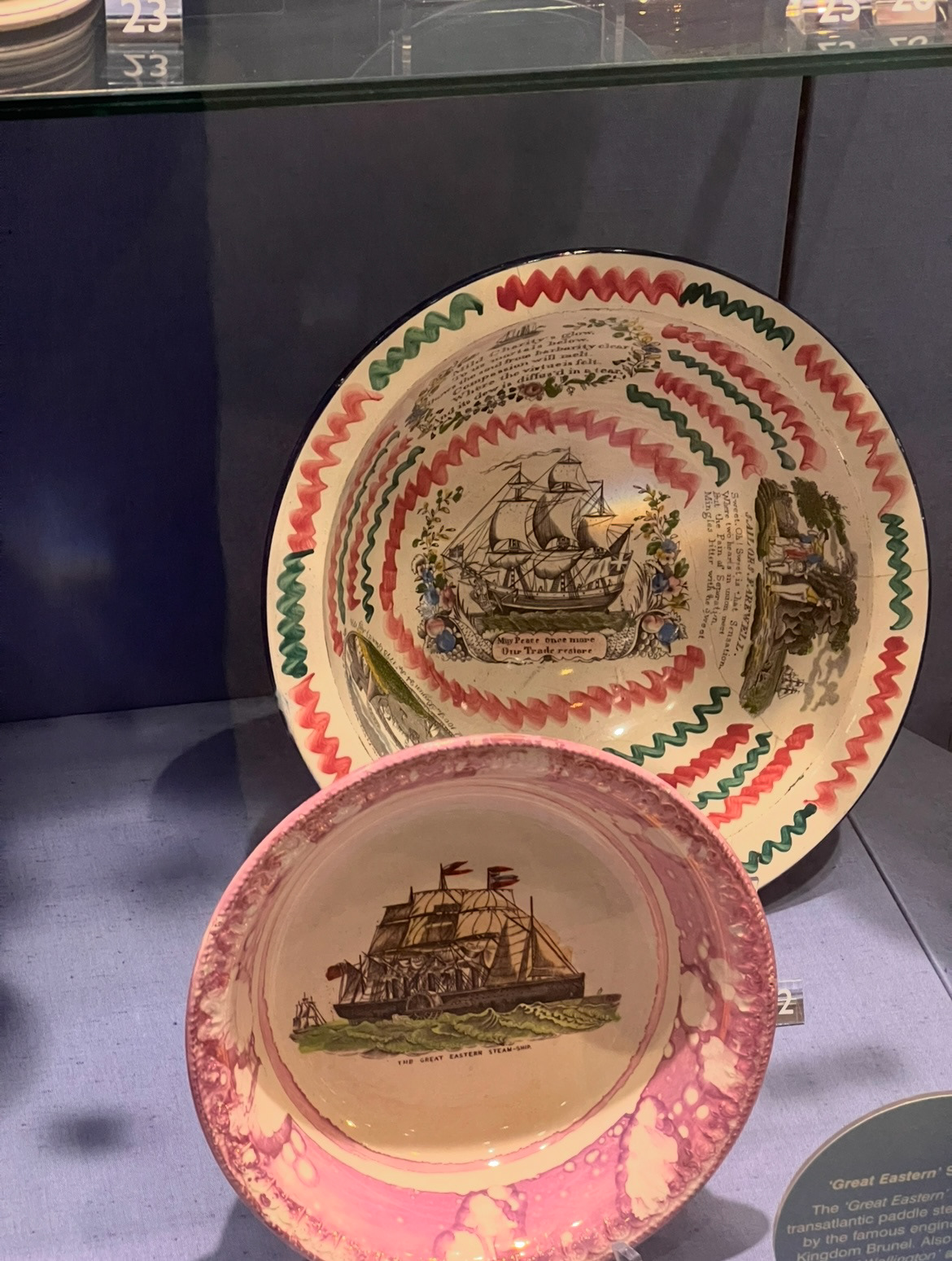
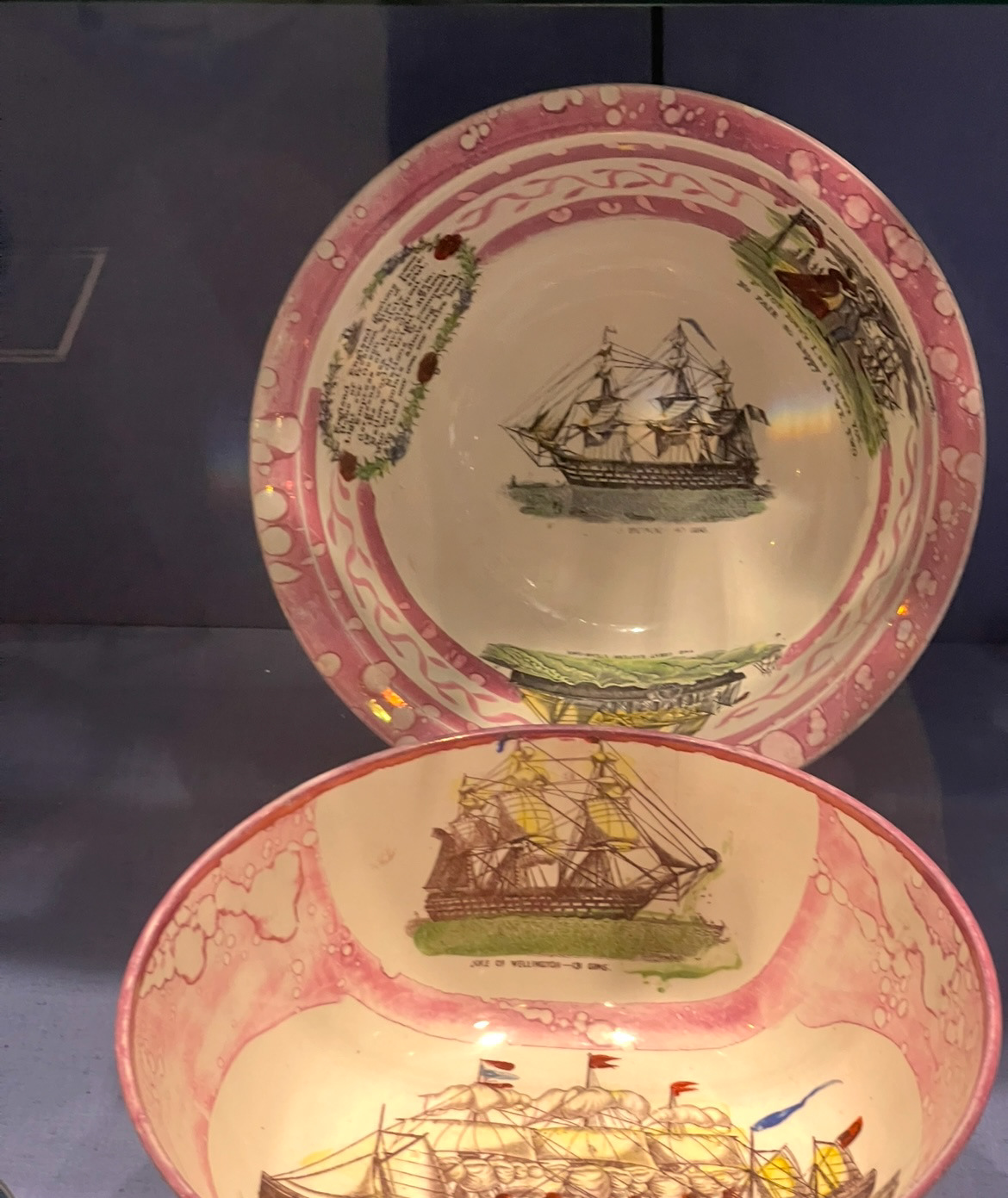
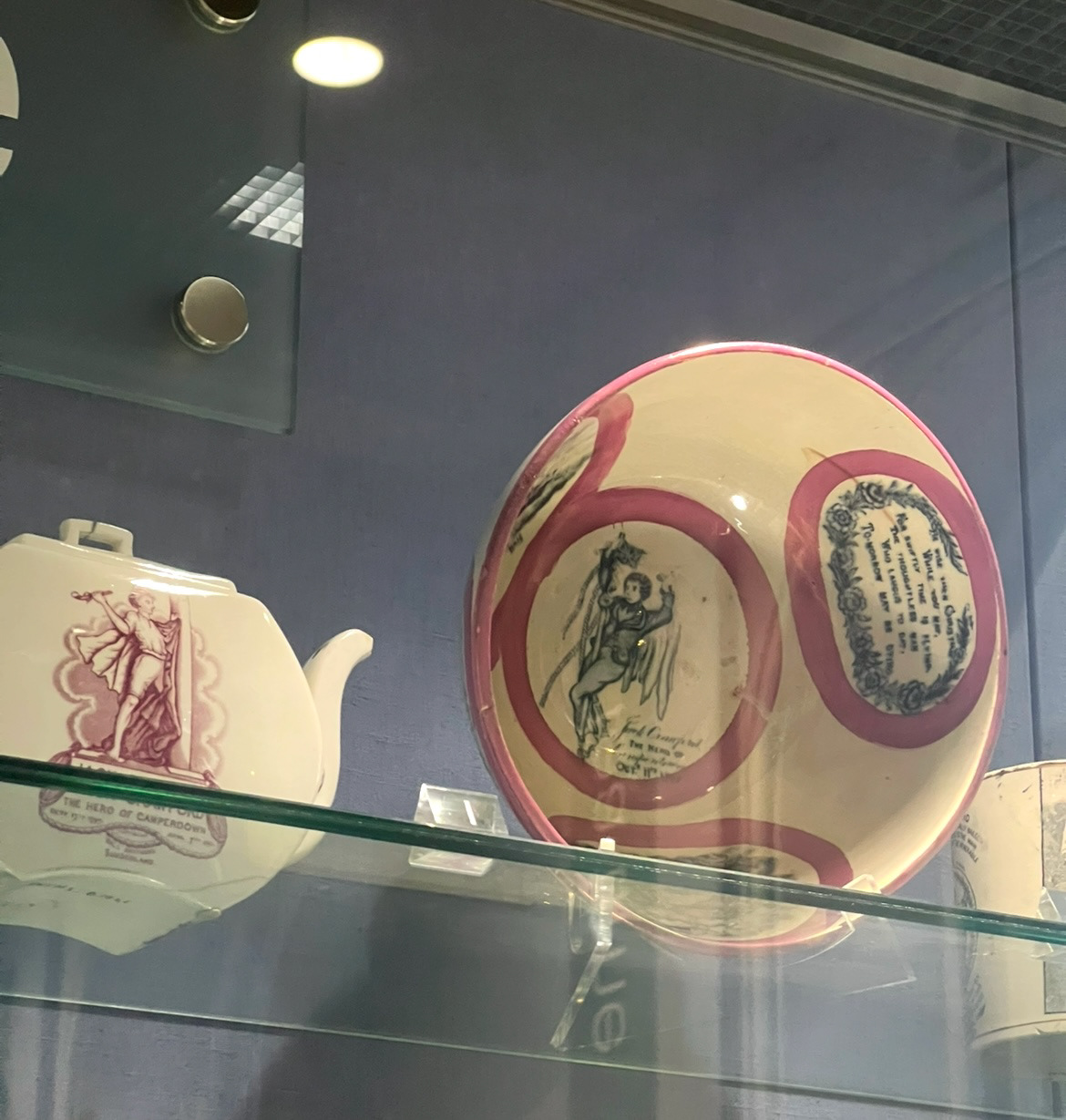
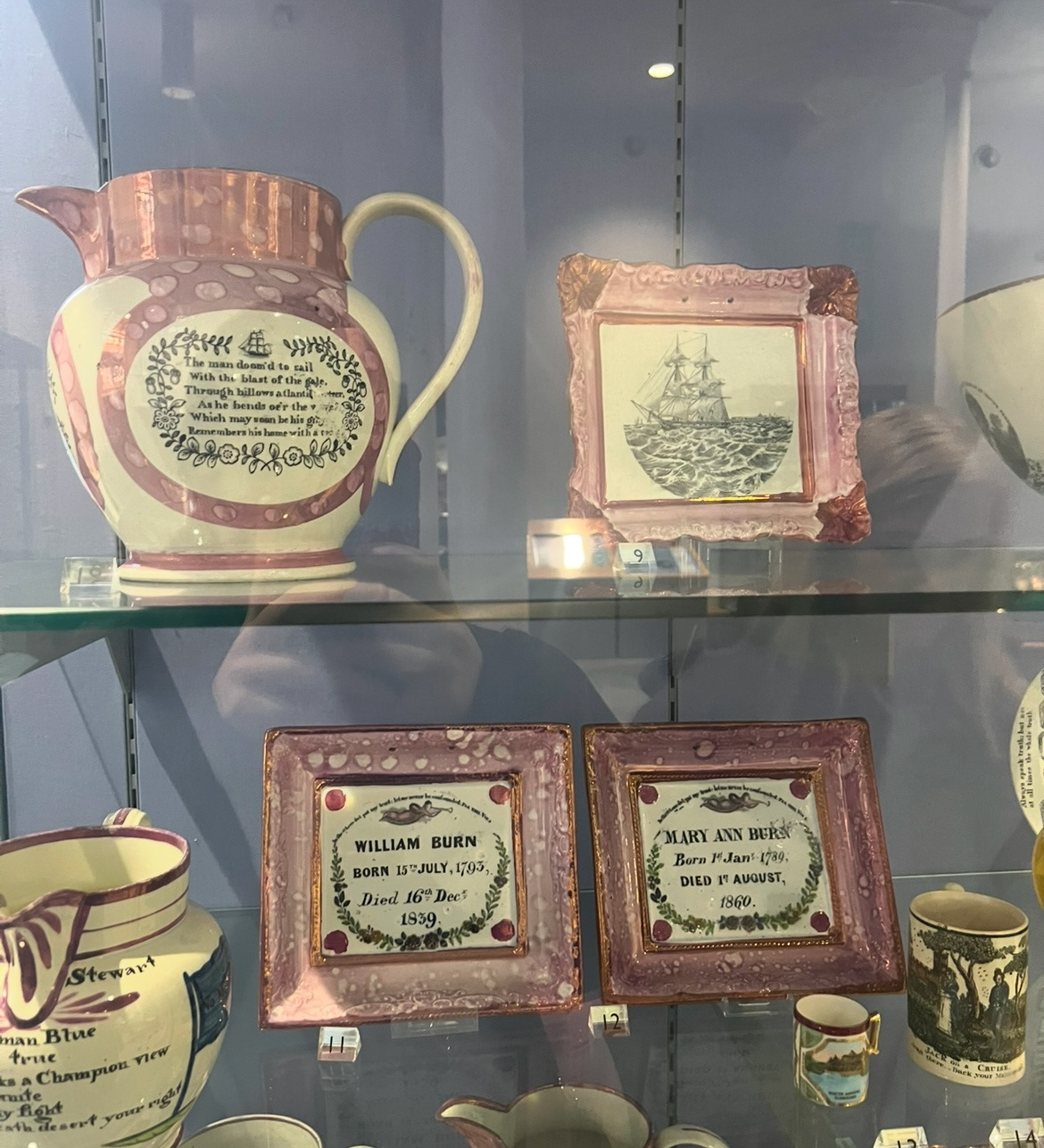
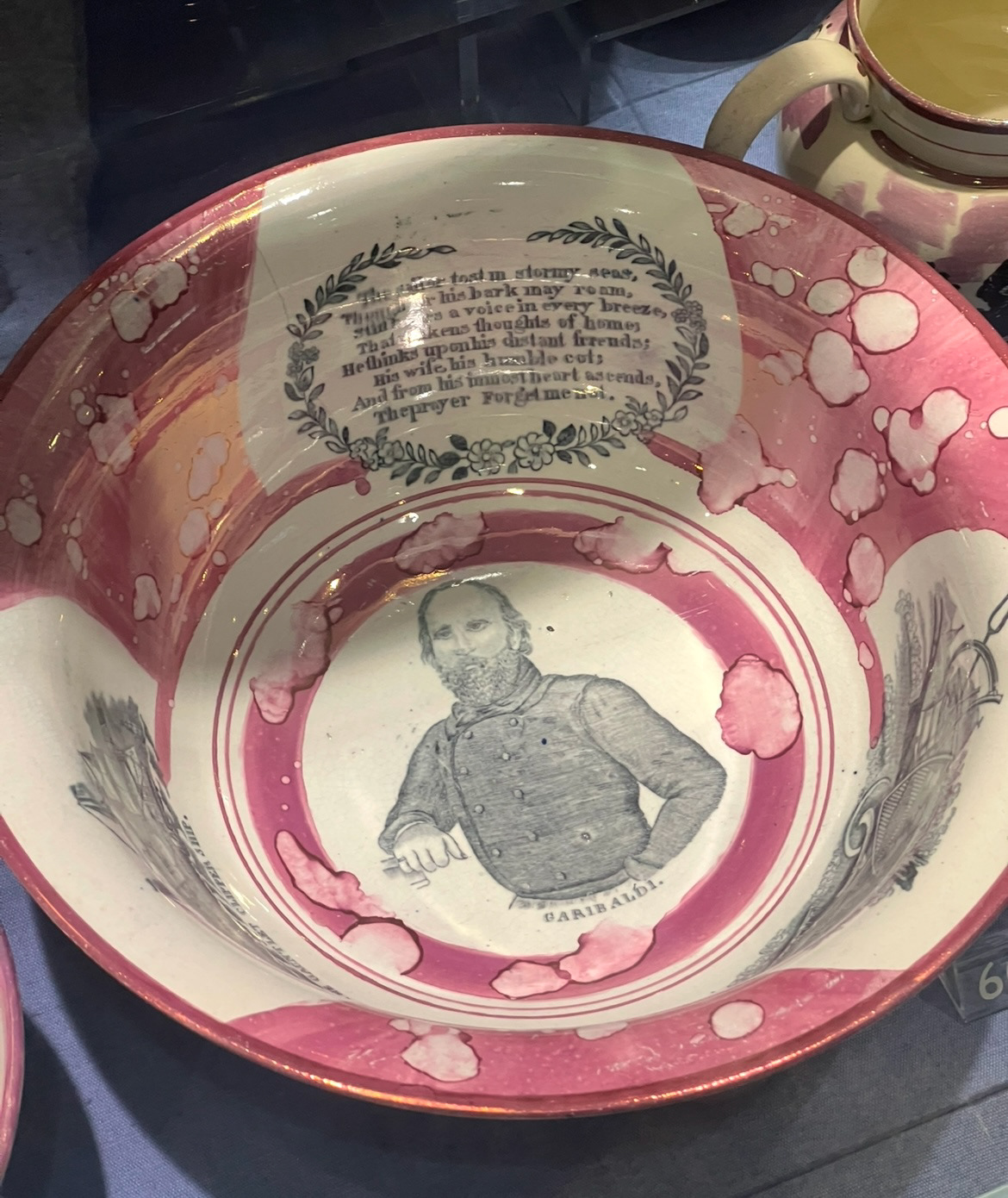
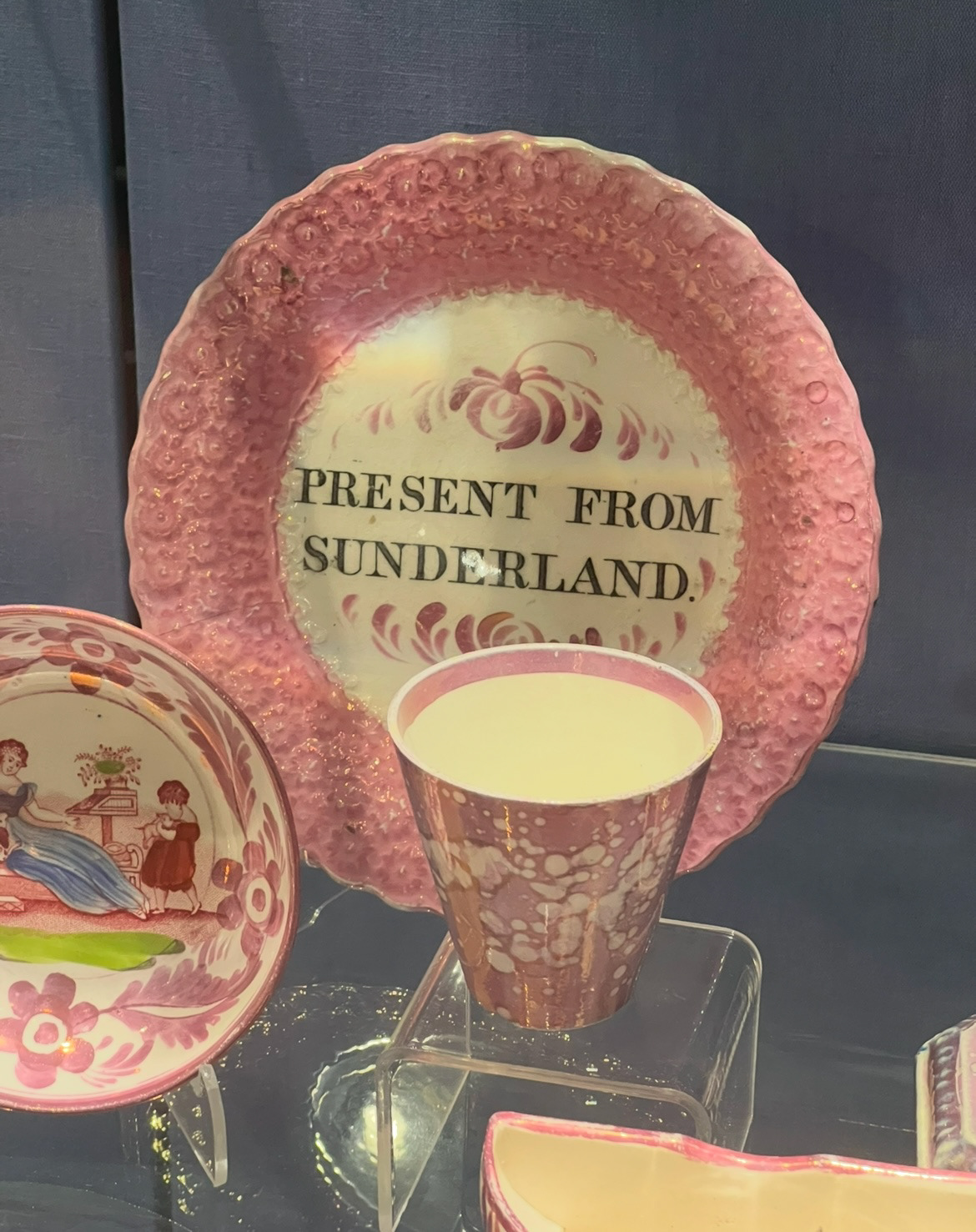

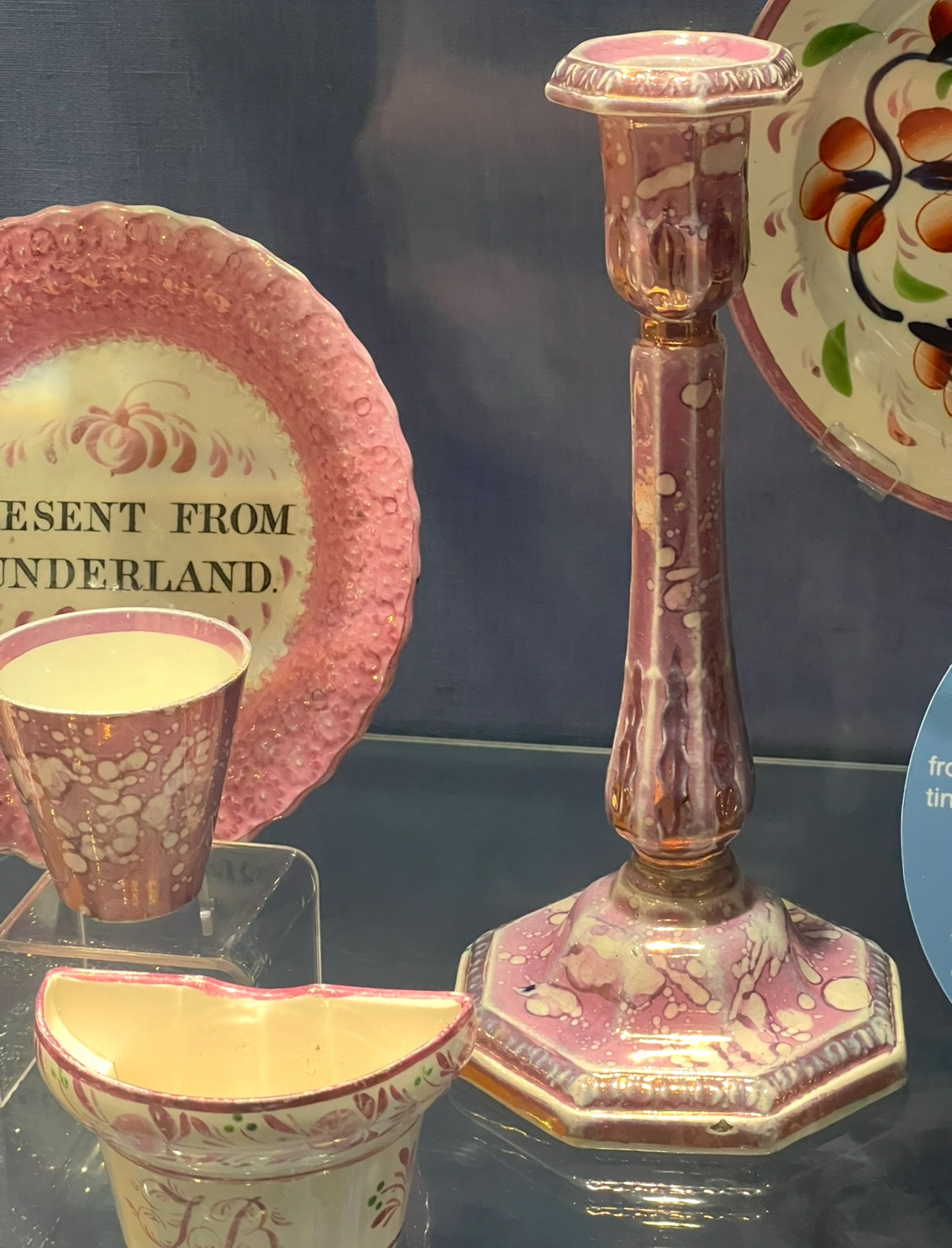


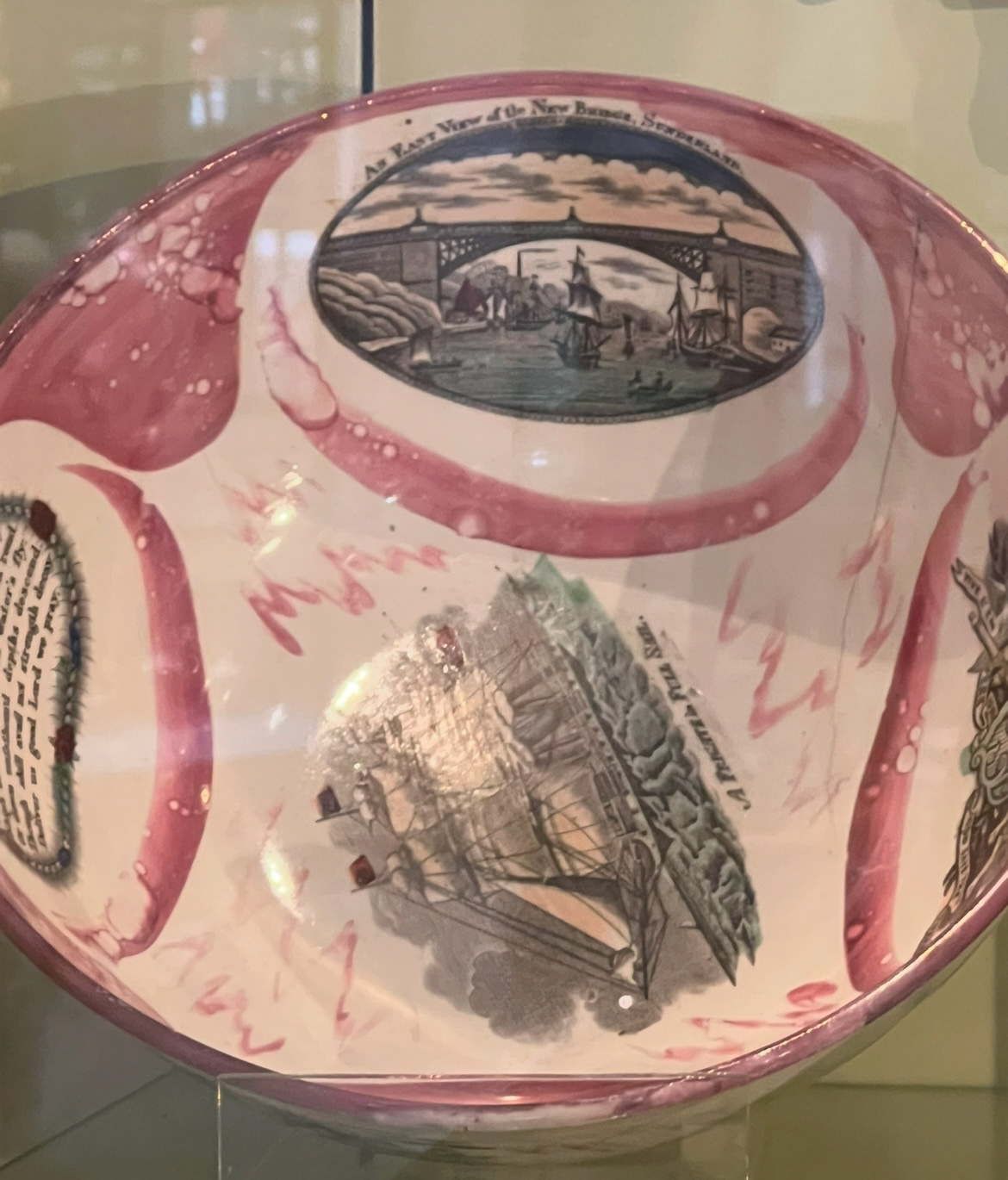
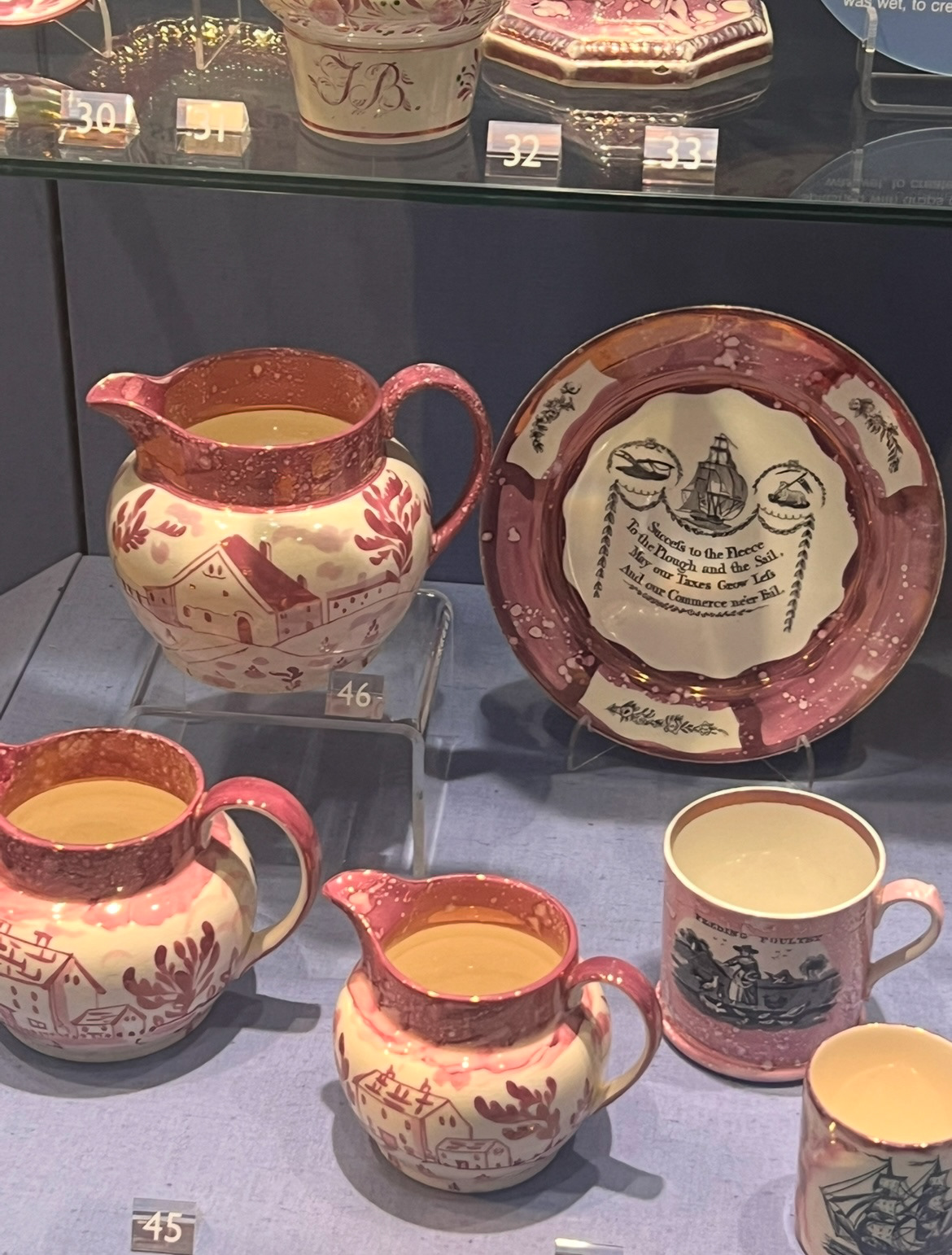
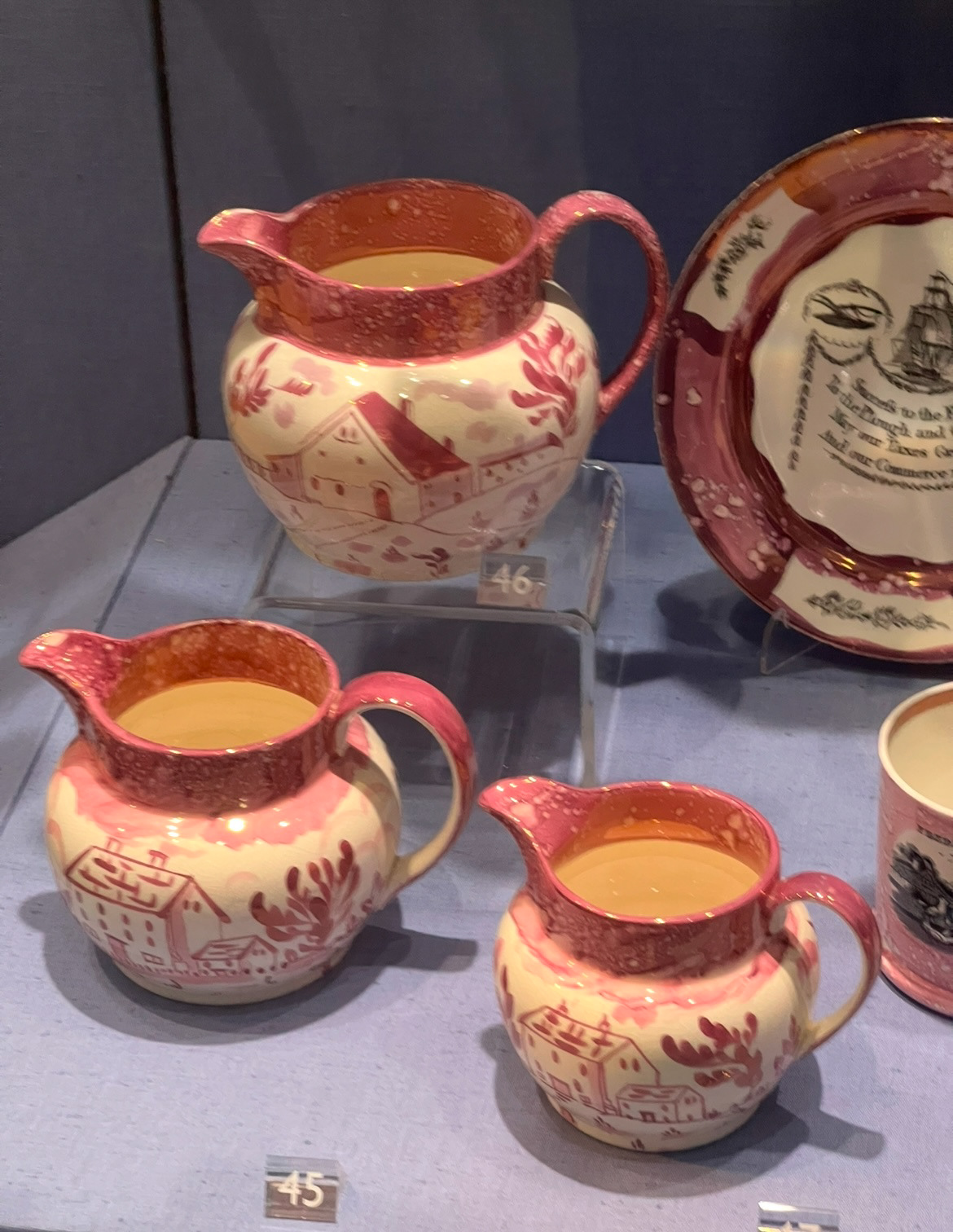

now more about this glaze and how I could try and recreate it, however when I spoke to a member of staff at the museum she said that the glaze was extremely toxic because it contained a high percentage of arsenic. She also told me that when looking at some of the pieces I might notice that some of the transfers were a bot off centre and decoration was not to the highest standard. This was because children around the age of nine would be employed to do these jobs, and due to their high contact with the arsenic in the glaze, they would often have disfigurements by the time they reached their twenties. This defiantly ruled out using this original glaze. So I would have to do some thinking and experimenting with this when I got back to Manchester.
The next thing I looked at in detail was the wall plaques, or "poor mans paintings" as they were often called. I have found myself being really drawn to these as I find them unusual and quite unique to Sunderland ware as far as I'm aware.
(wall plaques below)


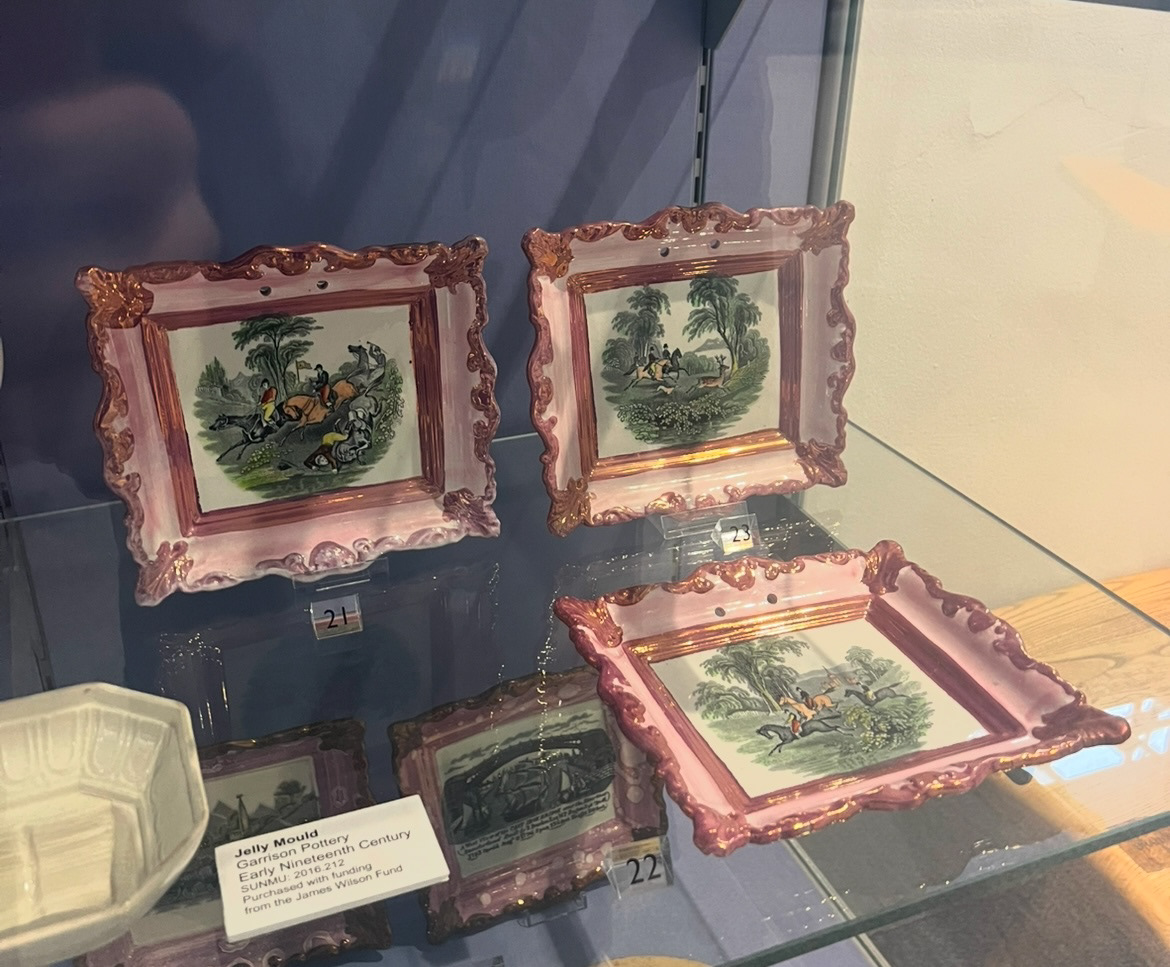
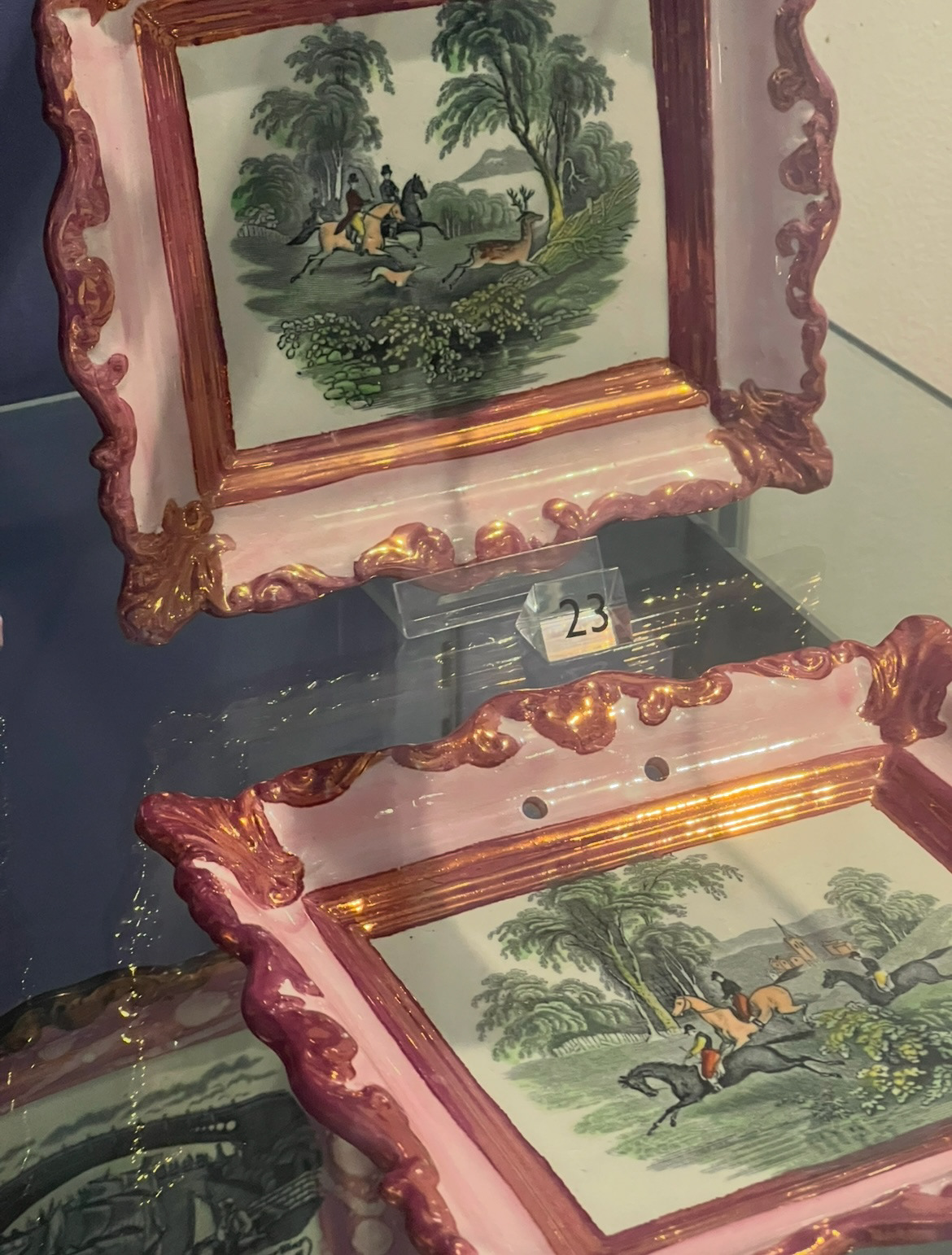
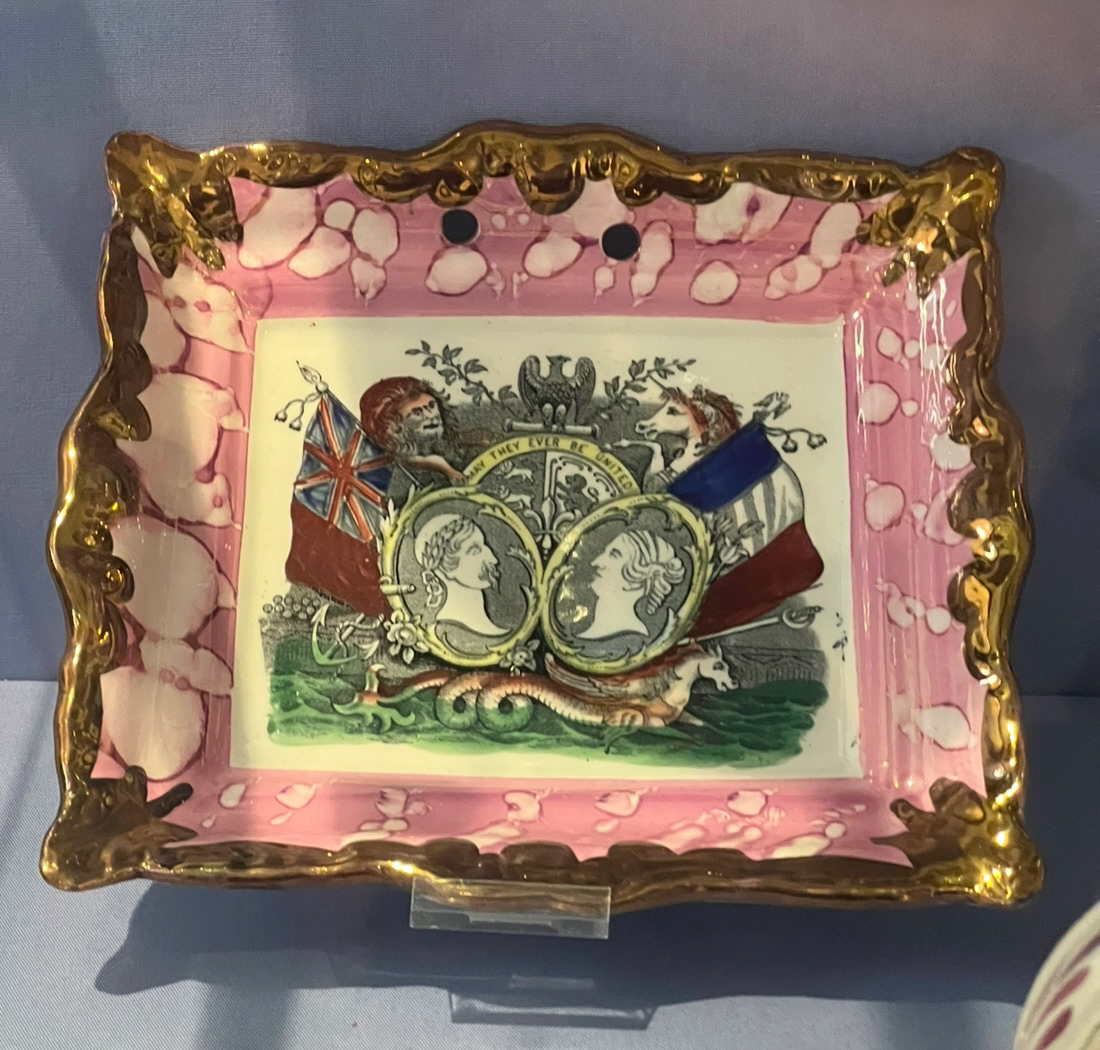
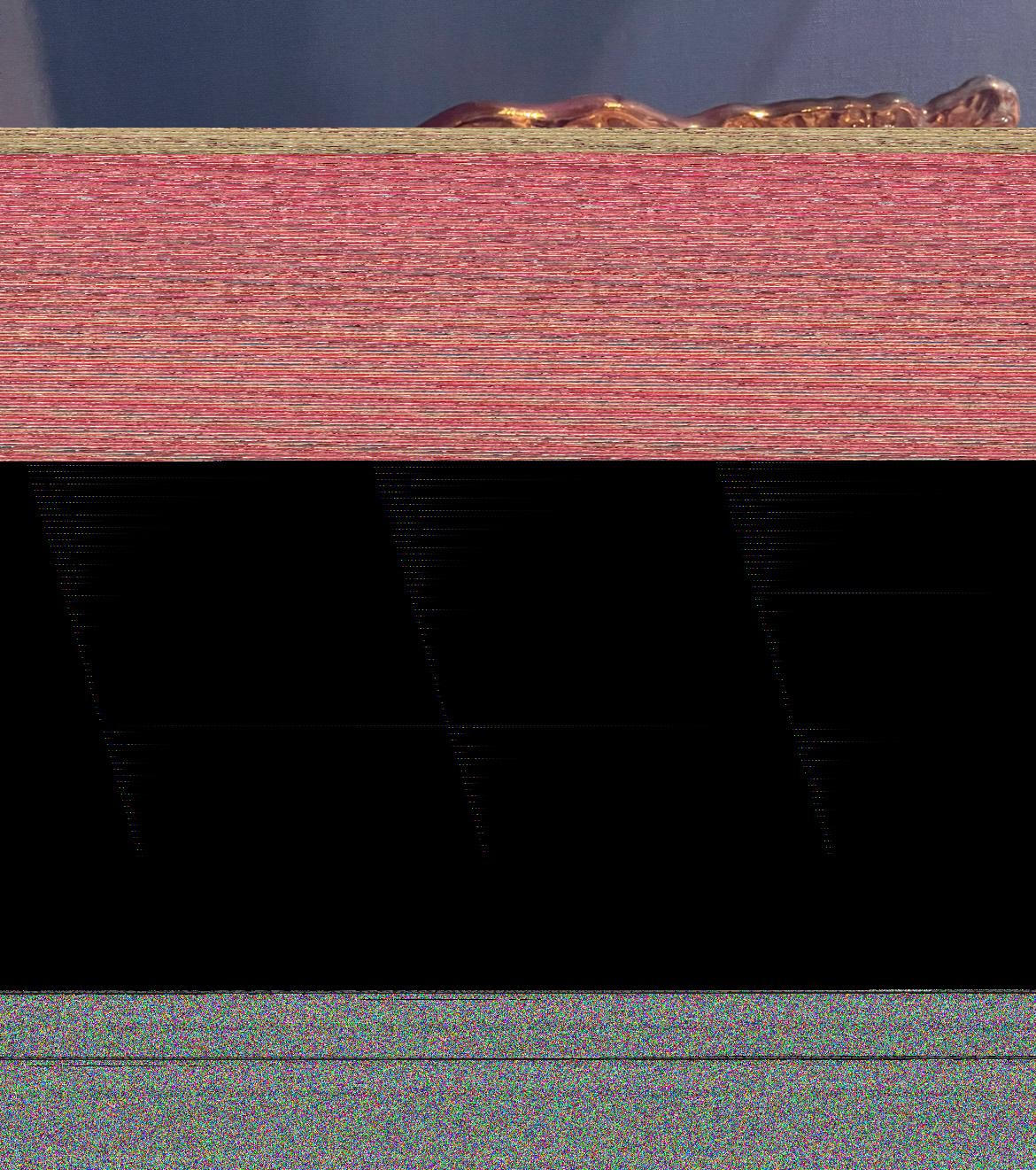
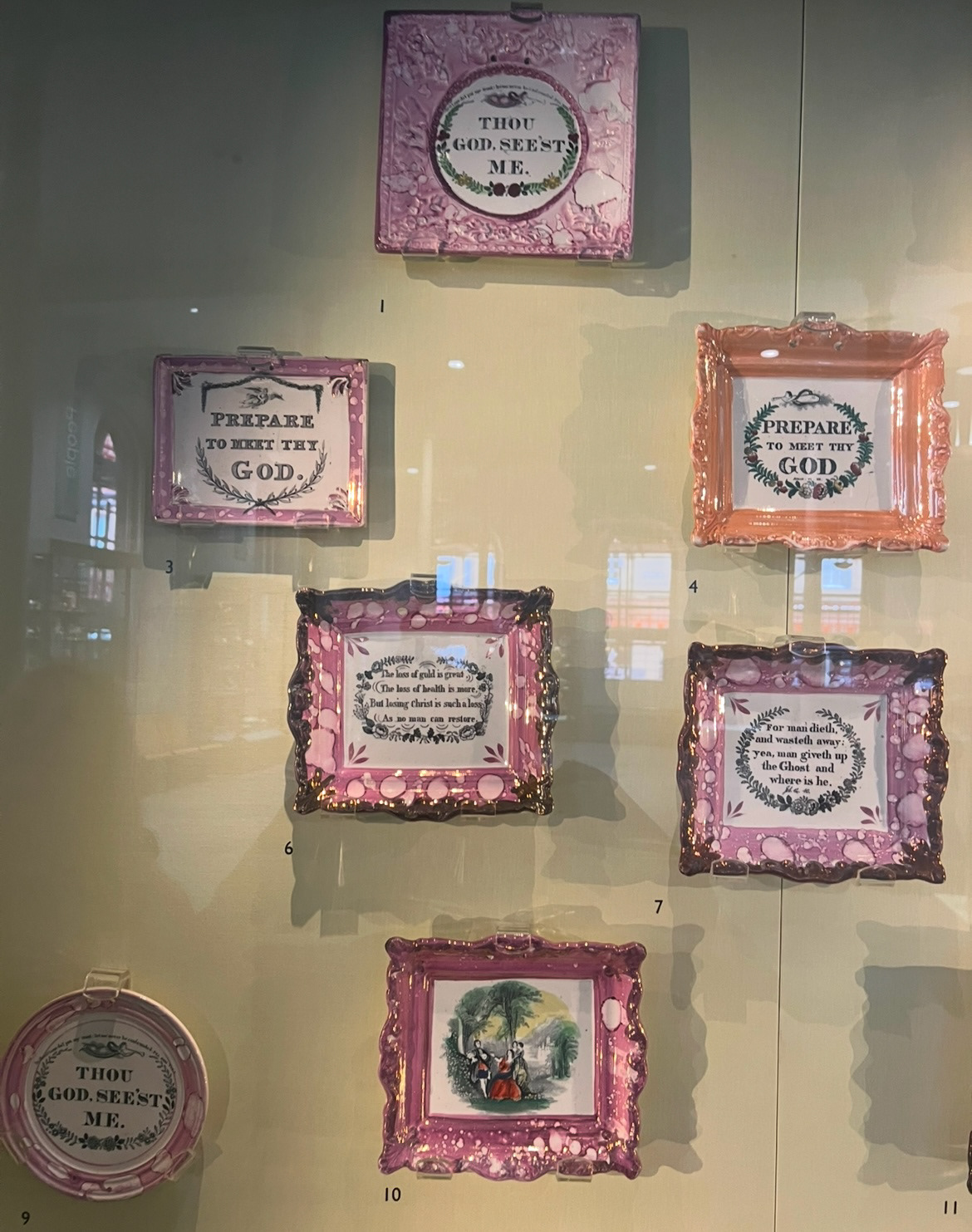
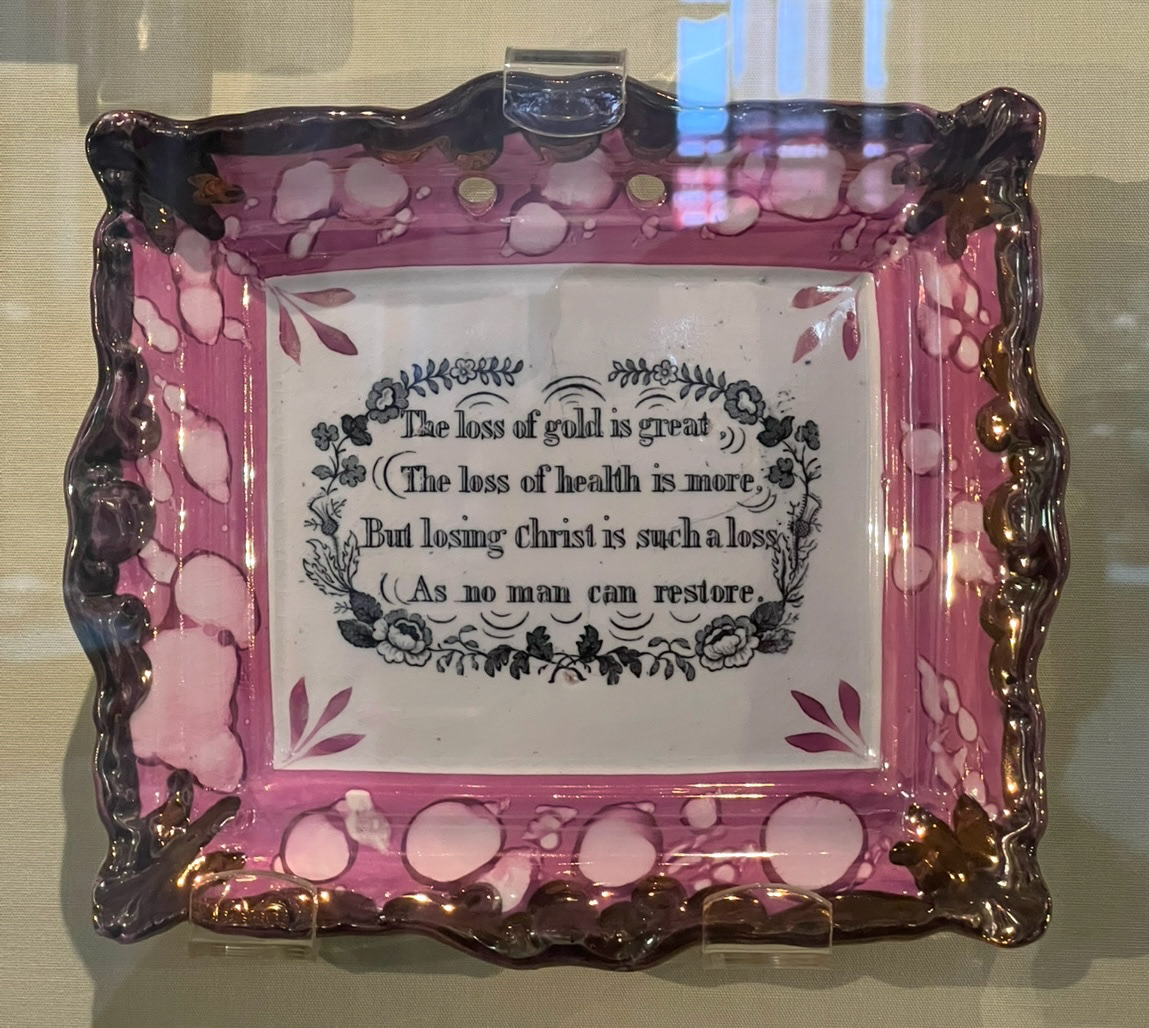


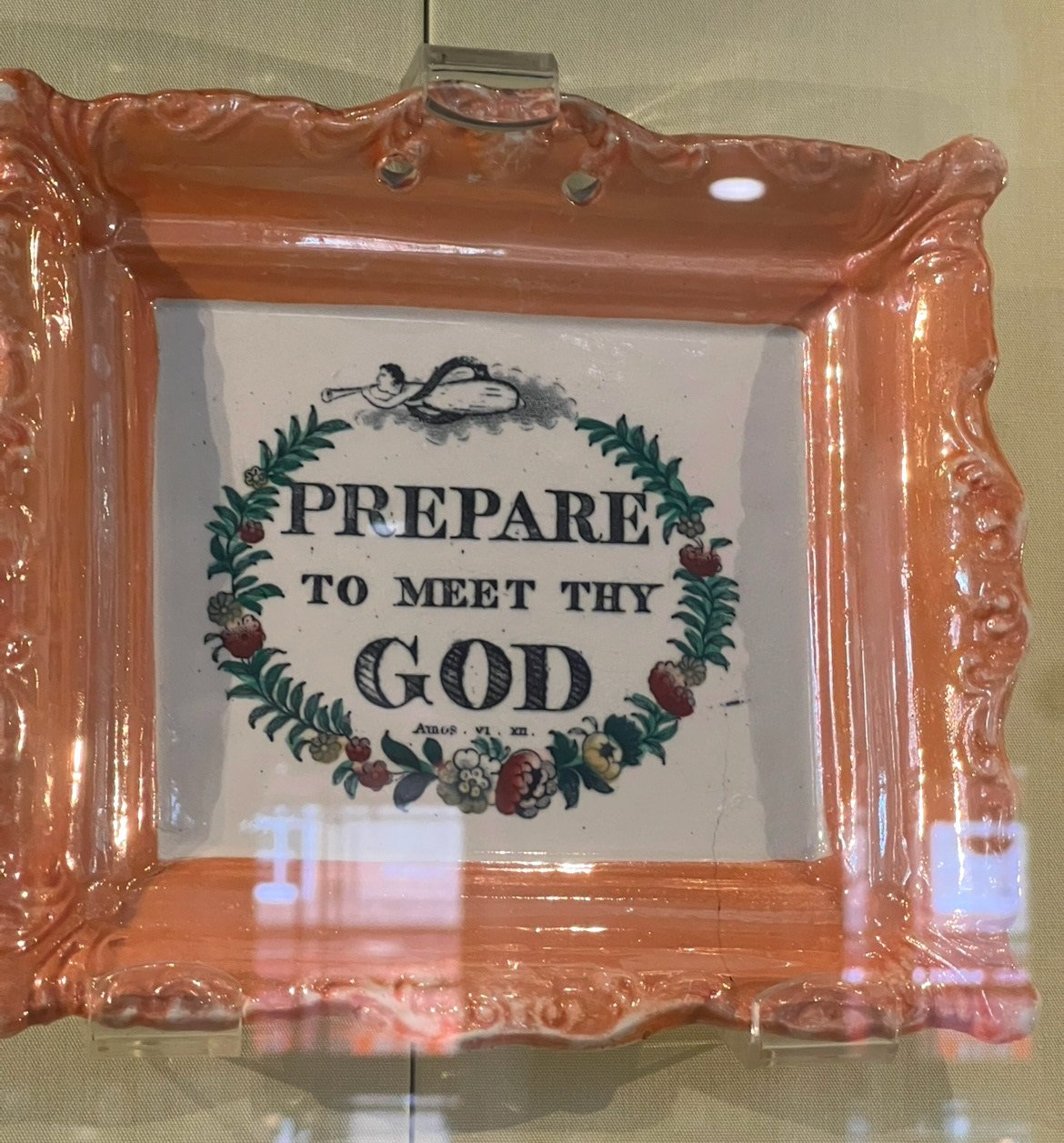
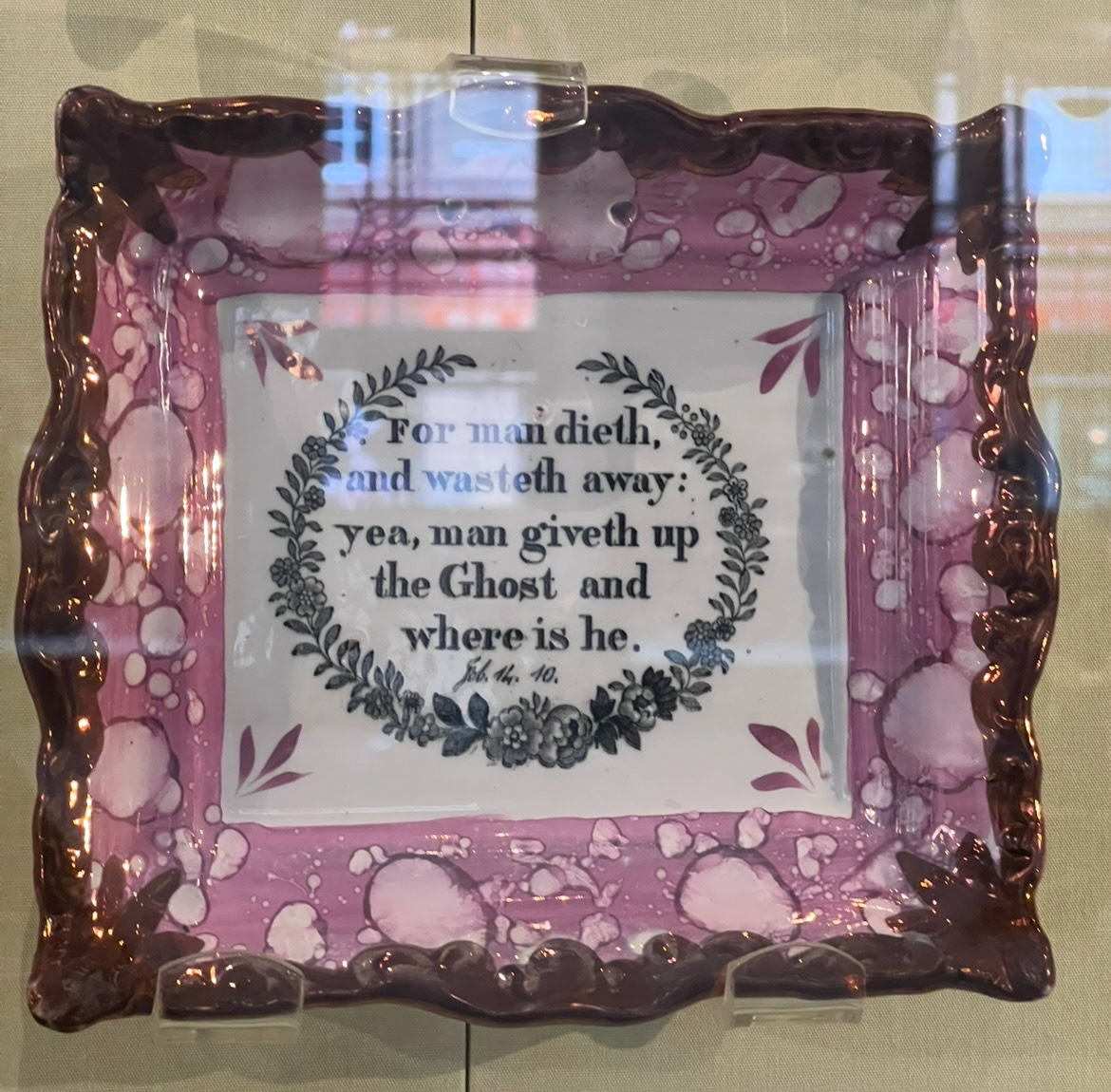
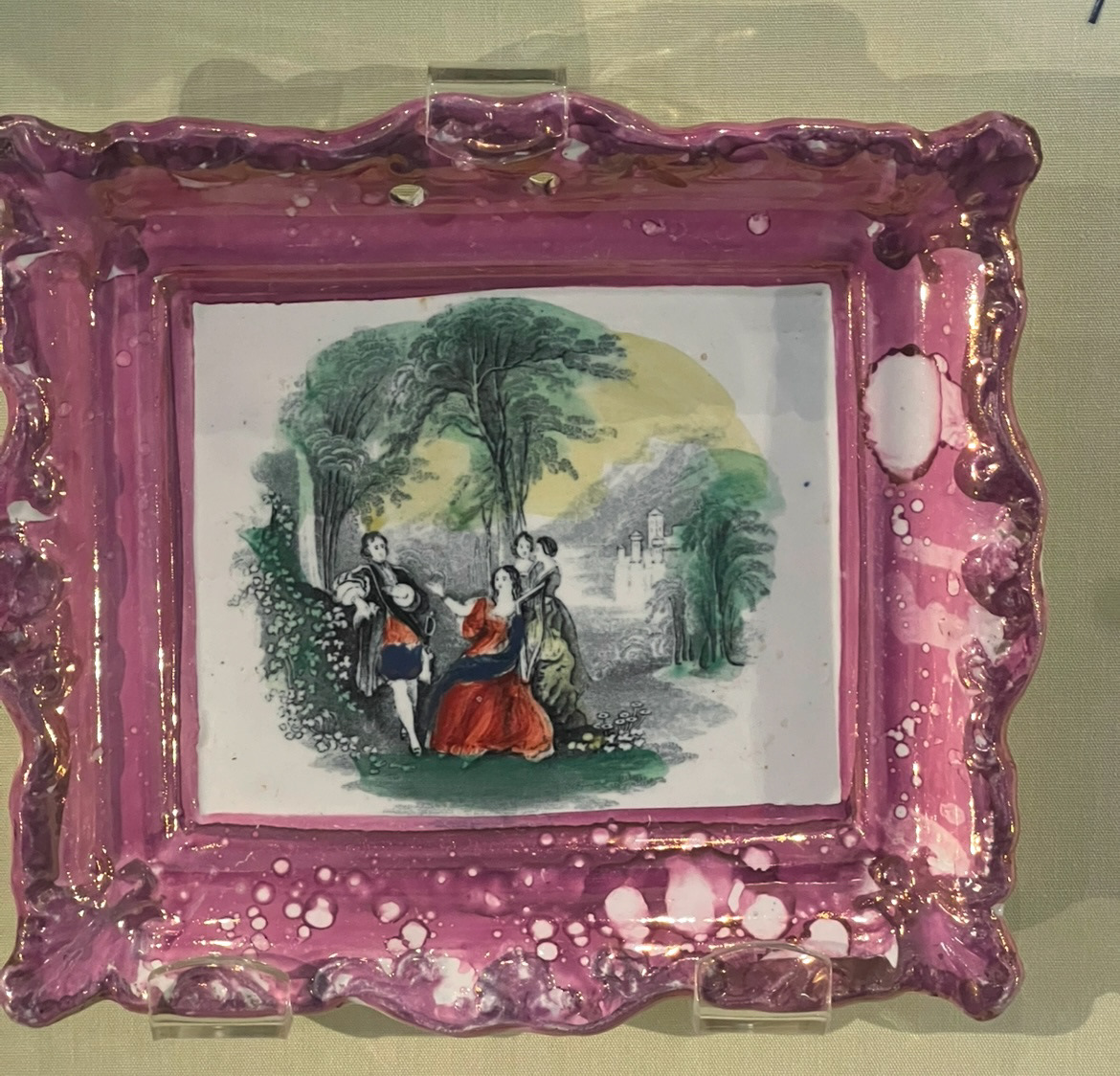
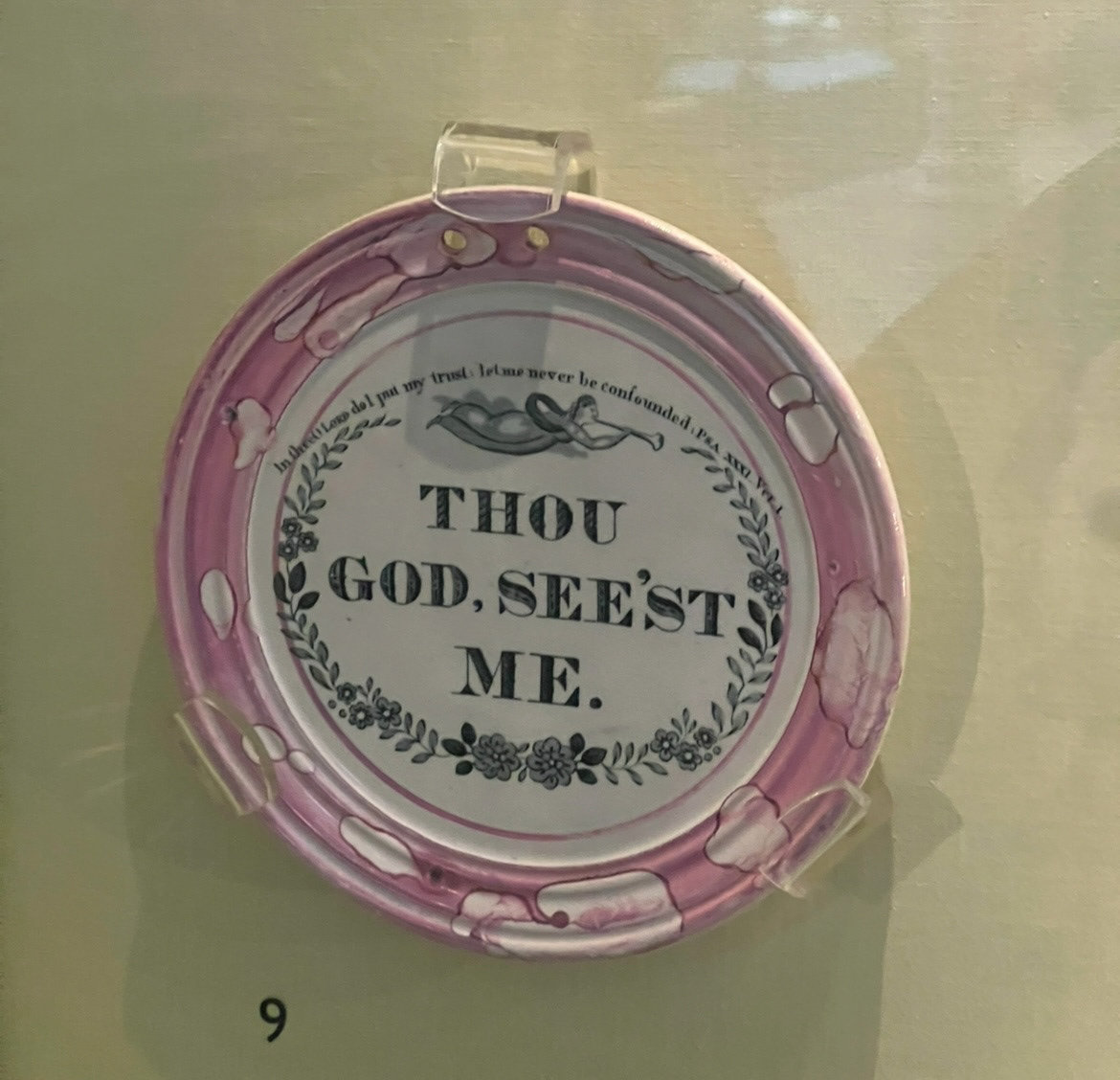
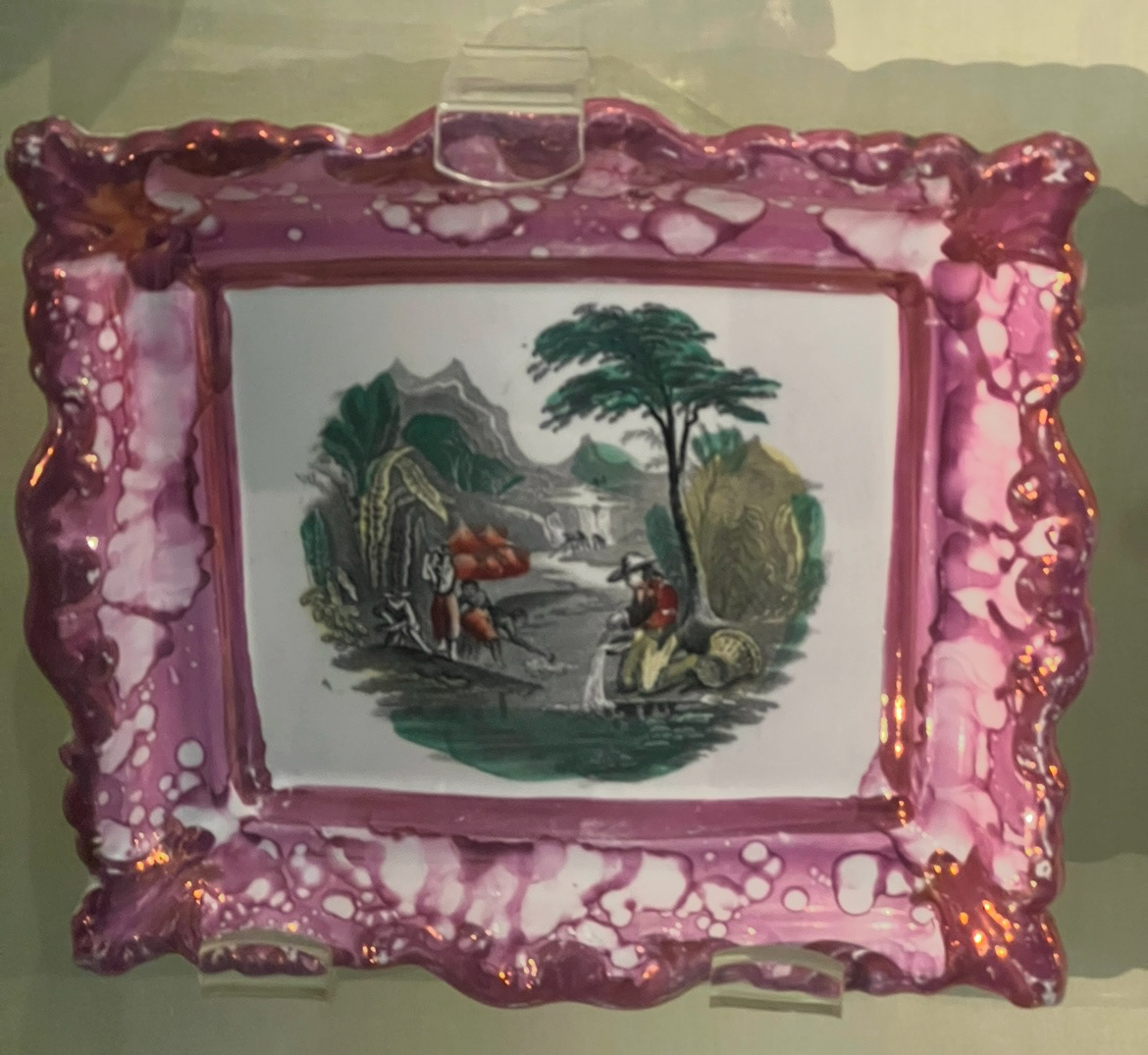
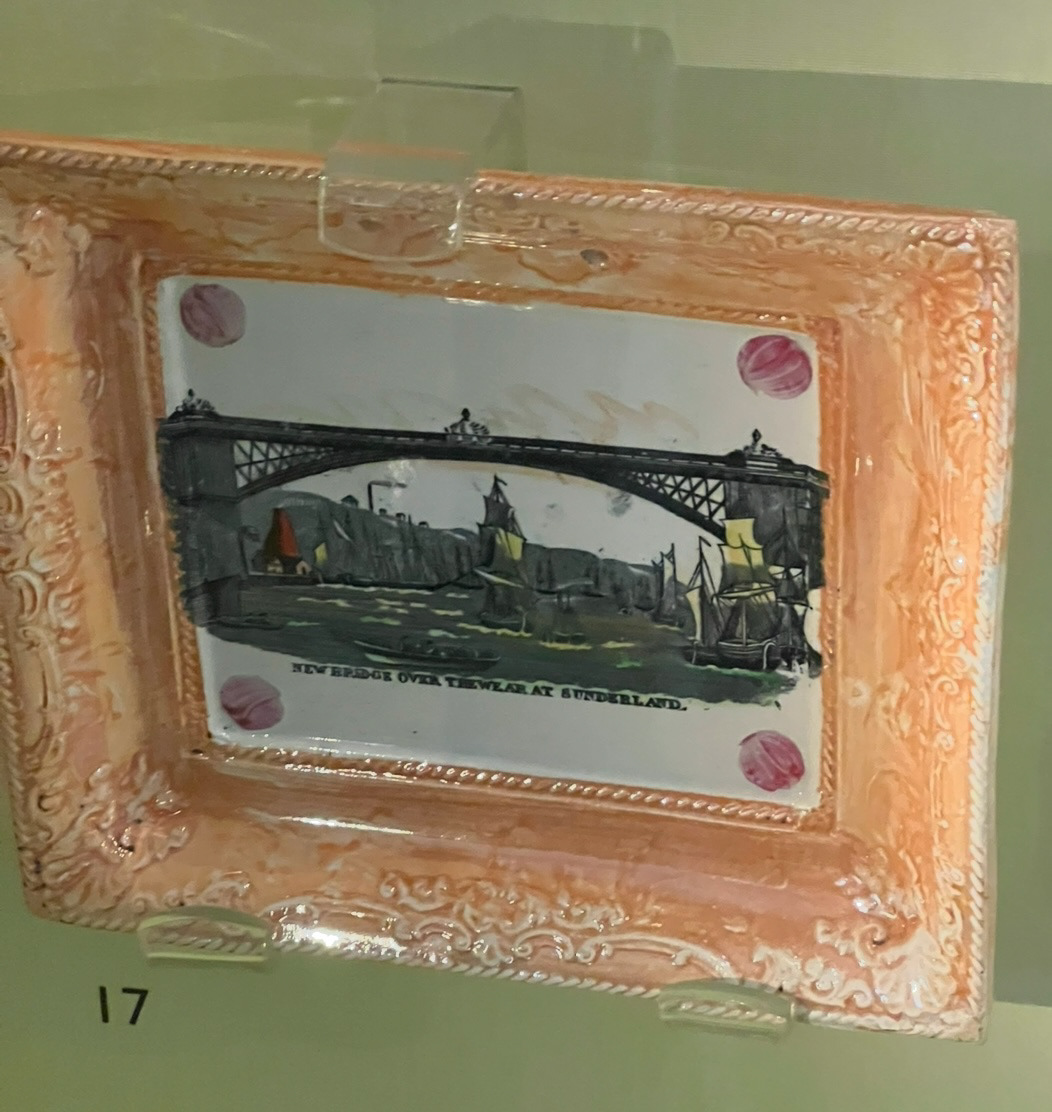

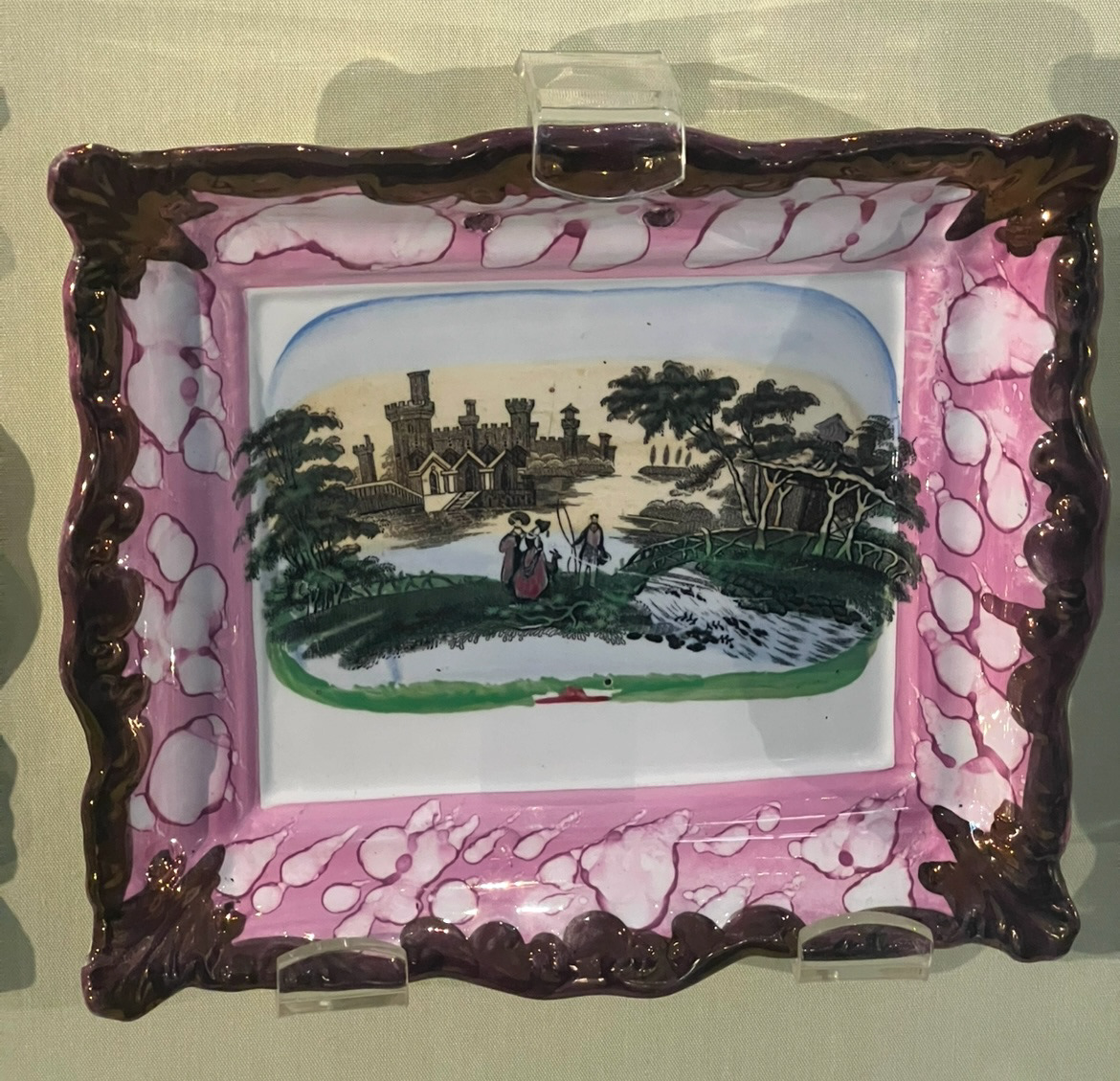
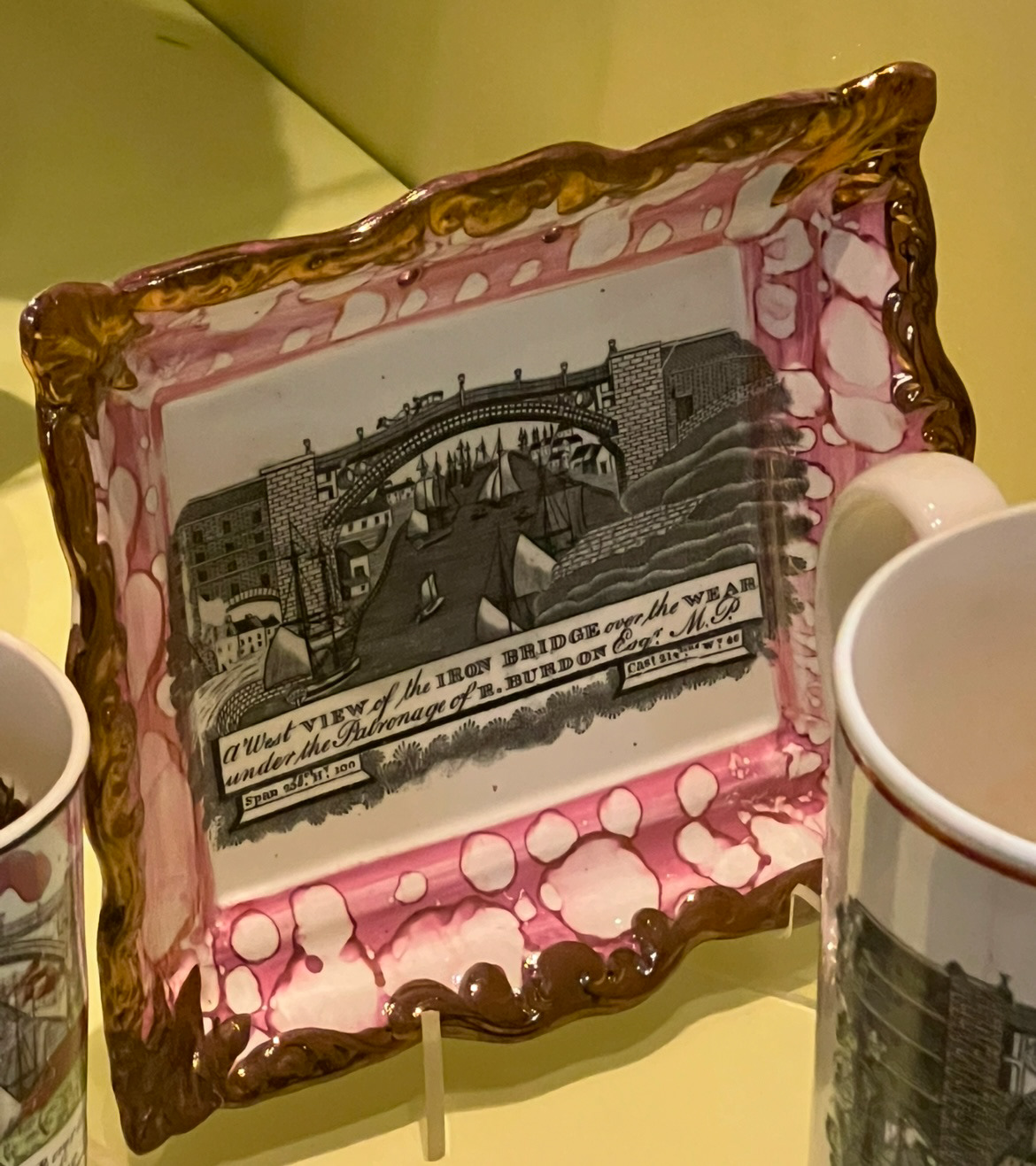
I think that I am quite interested in the possibility of potentially working with these as a form to carry through to my final pieces however I will have to do a lot of experimentation as these are quite out of the realm of what I usually make.
As well as these I also looked at form in general and common themes and interesting shapes that drew me to them that I could also use. I came across some peculiar looking forms, when I read about them, they were called 'Bachelors Supper Sets'. (below)
ing at form I was particularly drawn to these as I thought they were a great example of how a form can be made up of lots of other forms to create something rather unique. these supper sets are made up of a plate, topped with a wine cooler, topped with a bowl, topped with a wine cup, topped with a candle stick. I thing going forward this could be something really interesting to look at when creating a larger piece but again it will need some more thought and work around it.
Lastly at the museum I looked at general pattern and design. Sunderland ware has such a broad mix of design, from text, to lustre pieces, to highly patterned pieces, to commemorative ware. I thought it would be interesting to have a look at. (below).
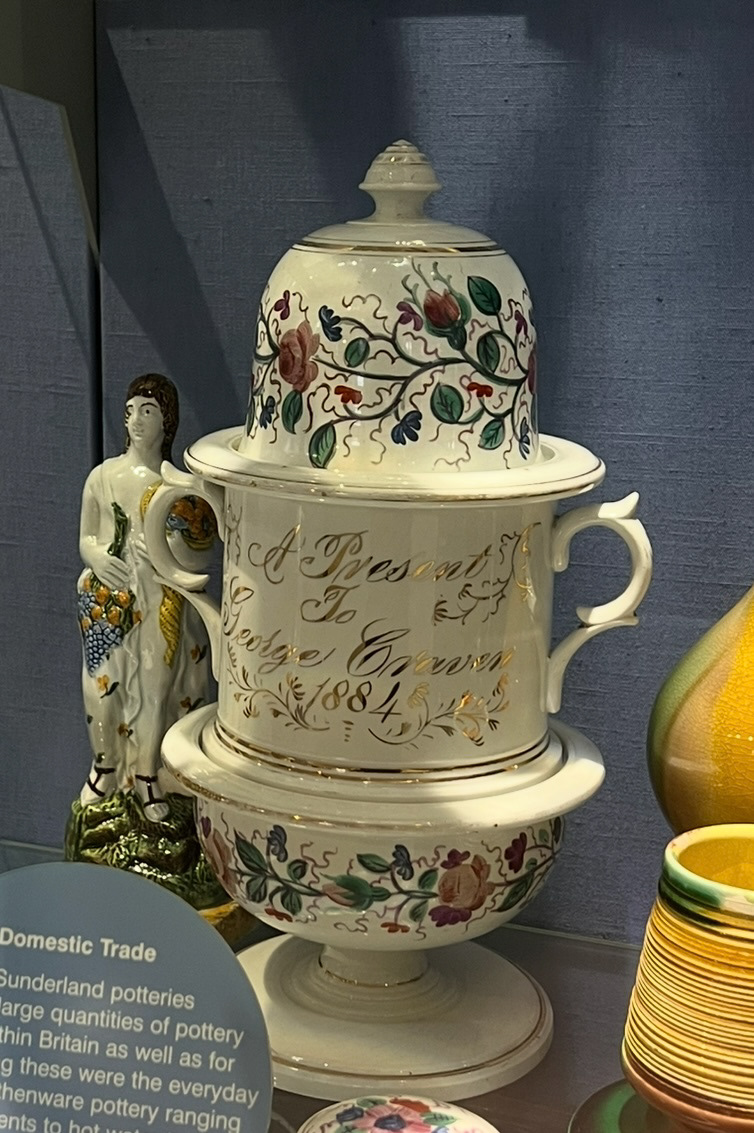
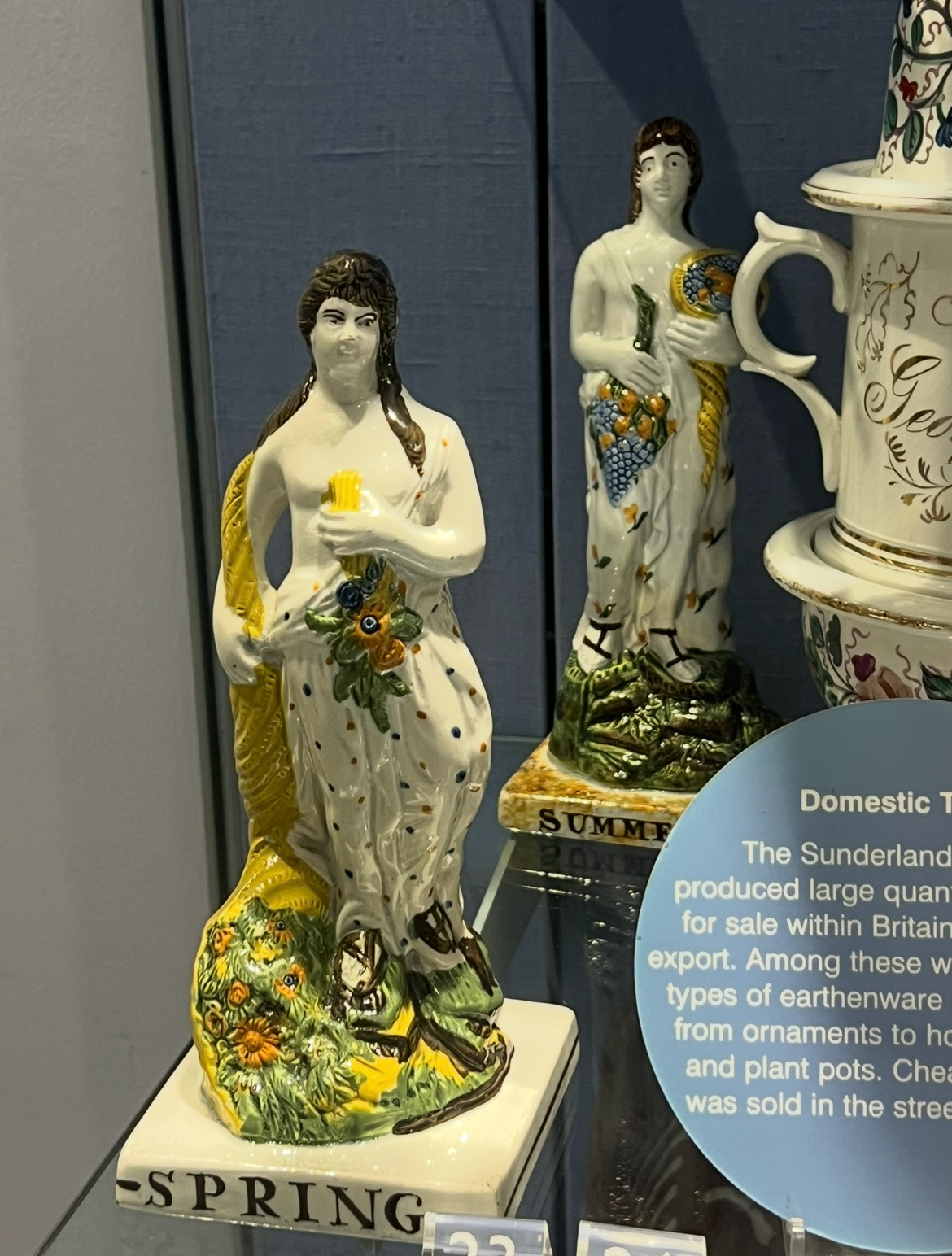
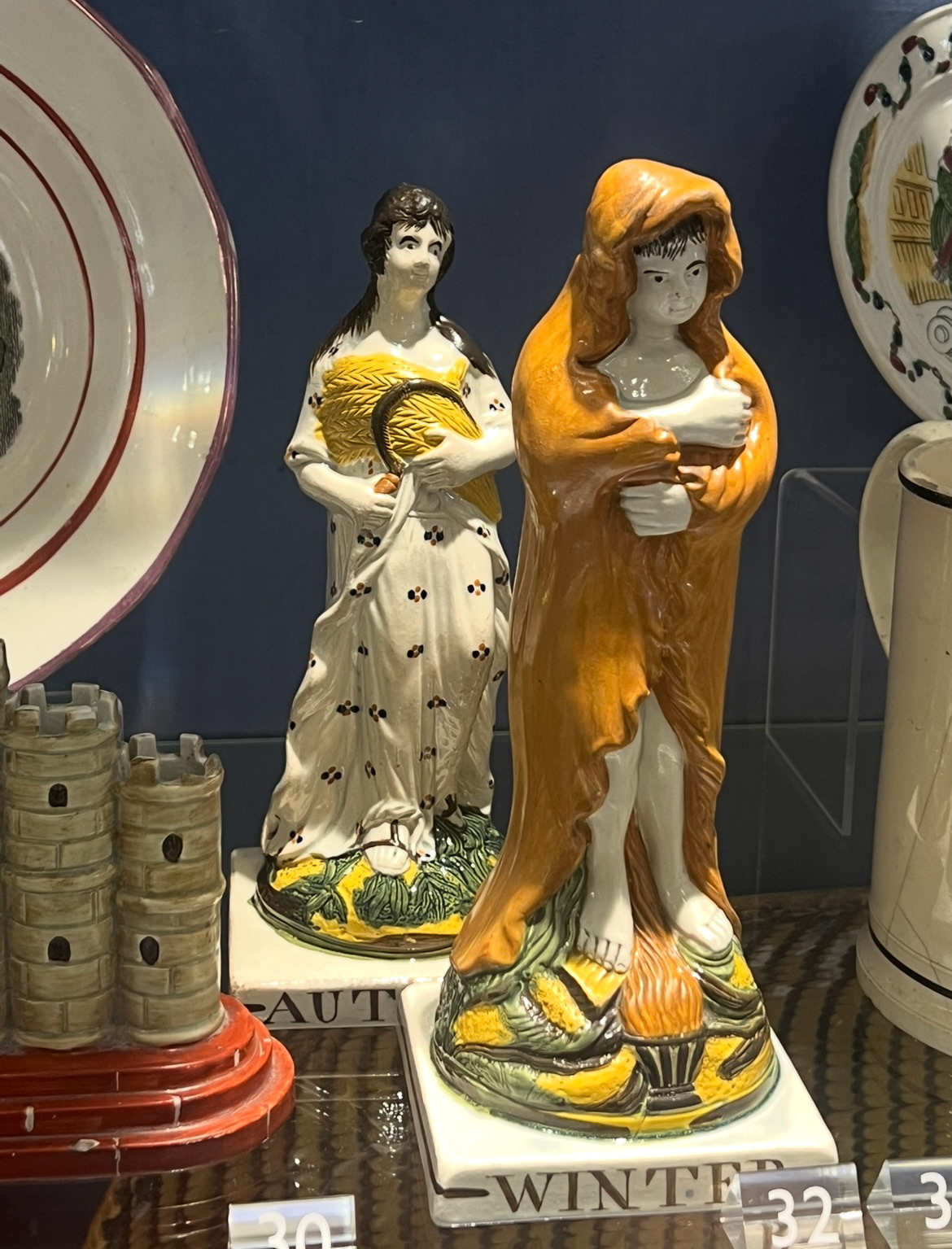


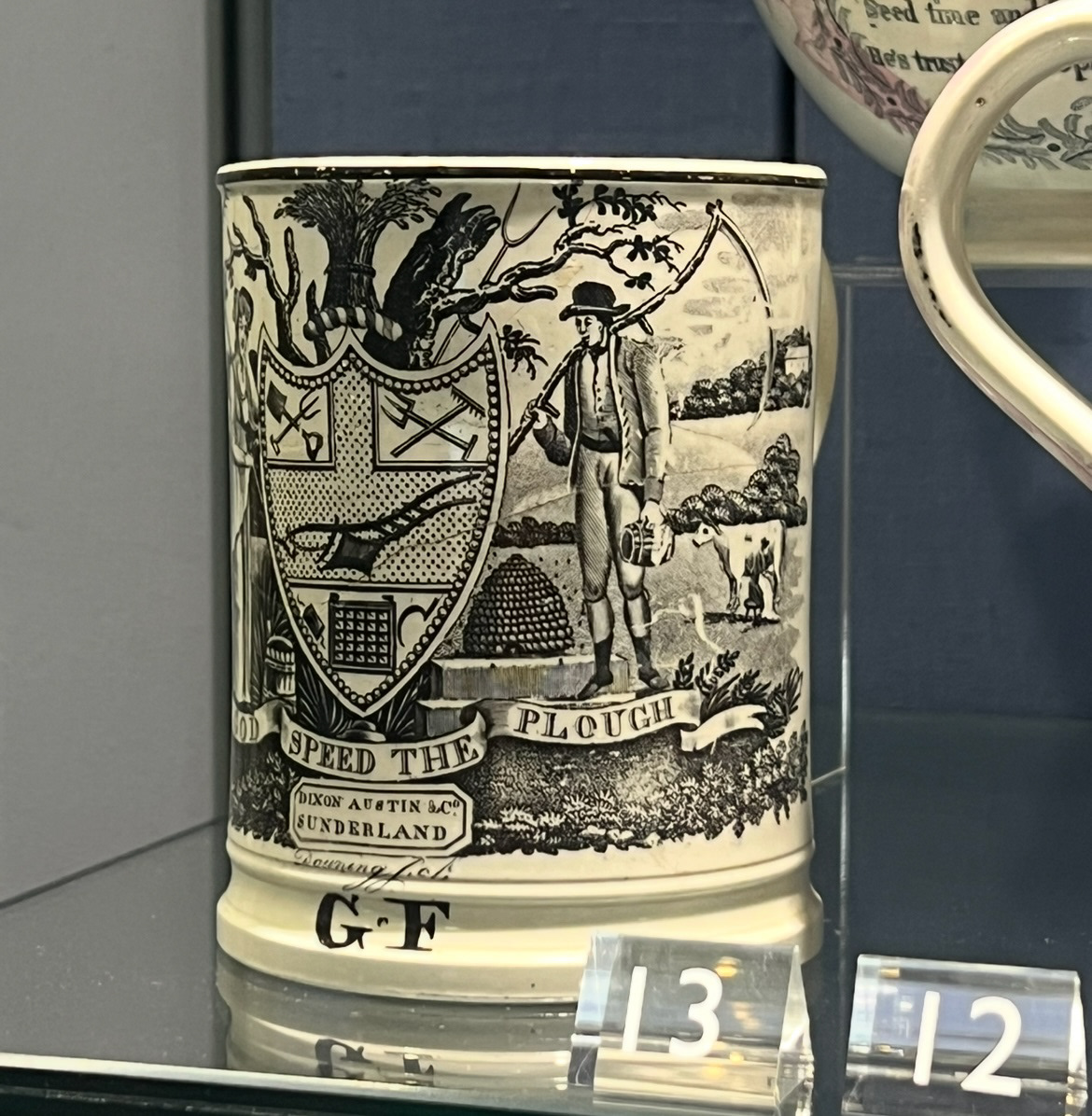
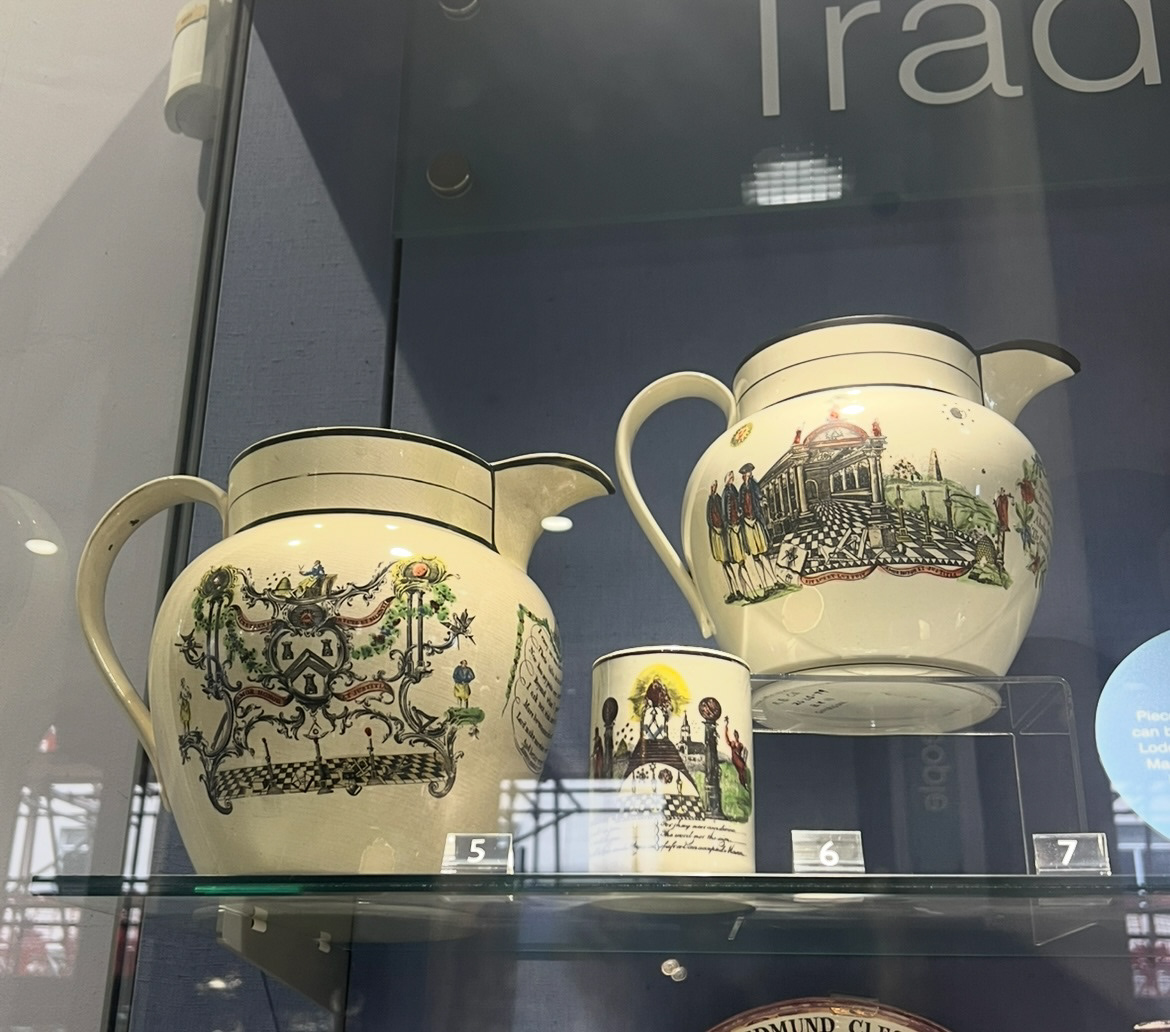
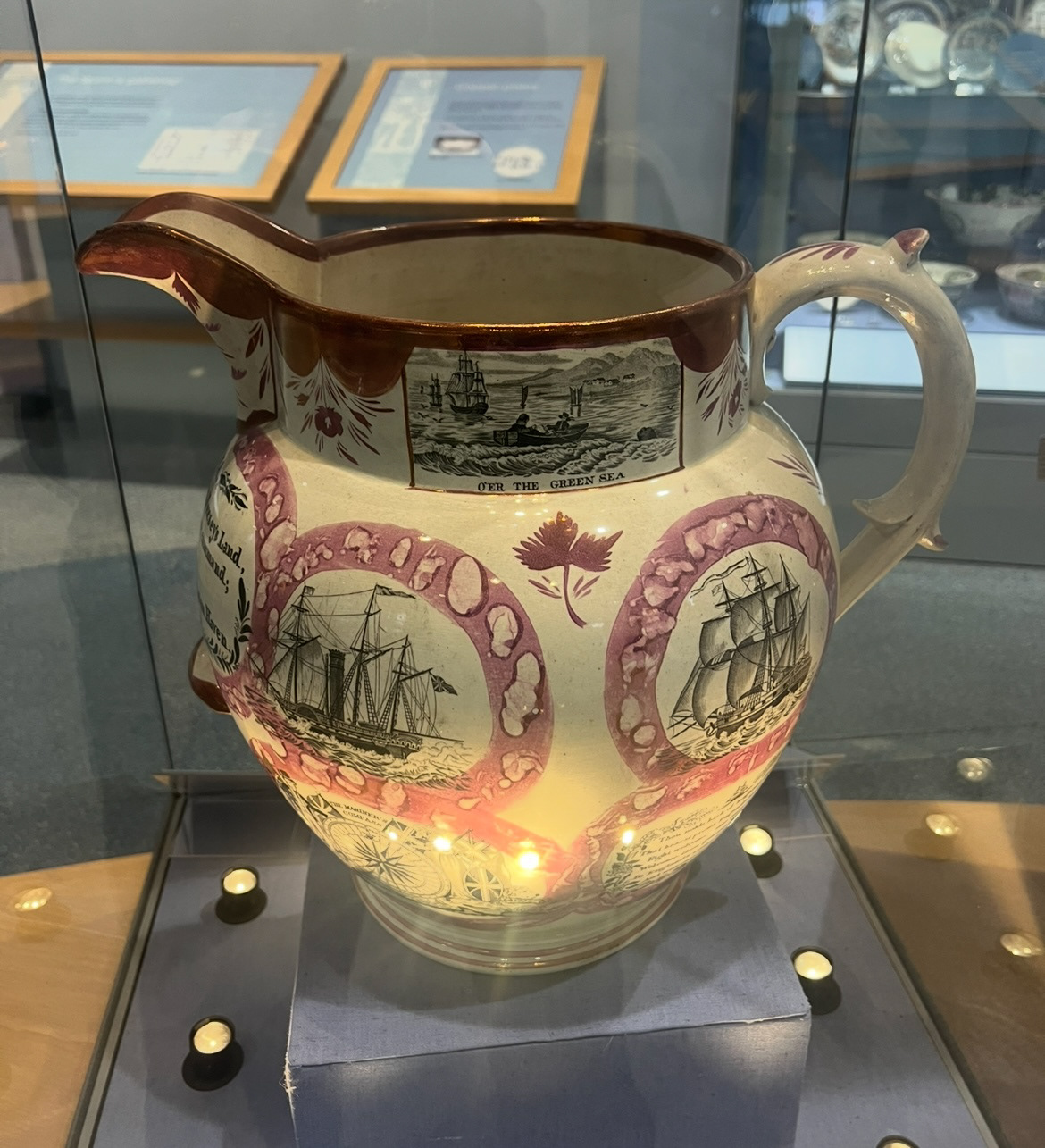

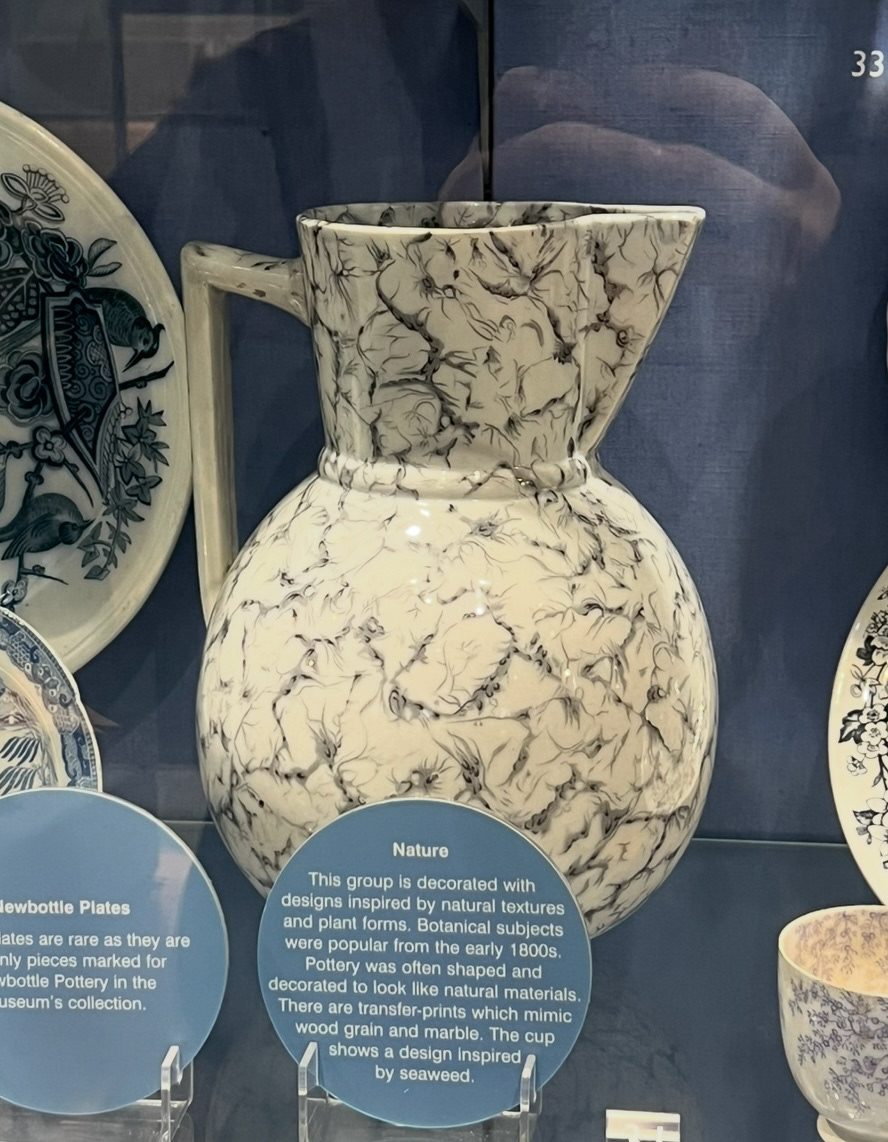
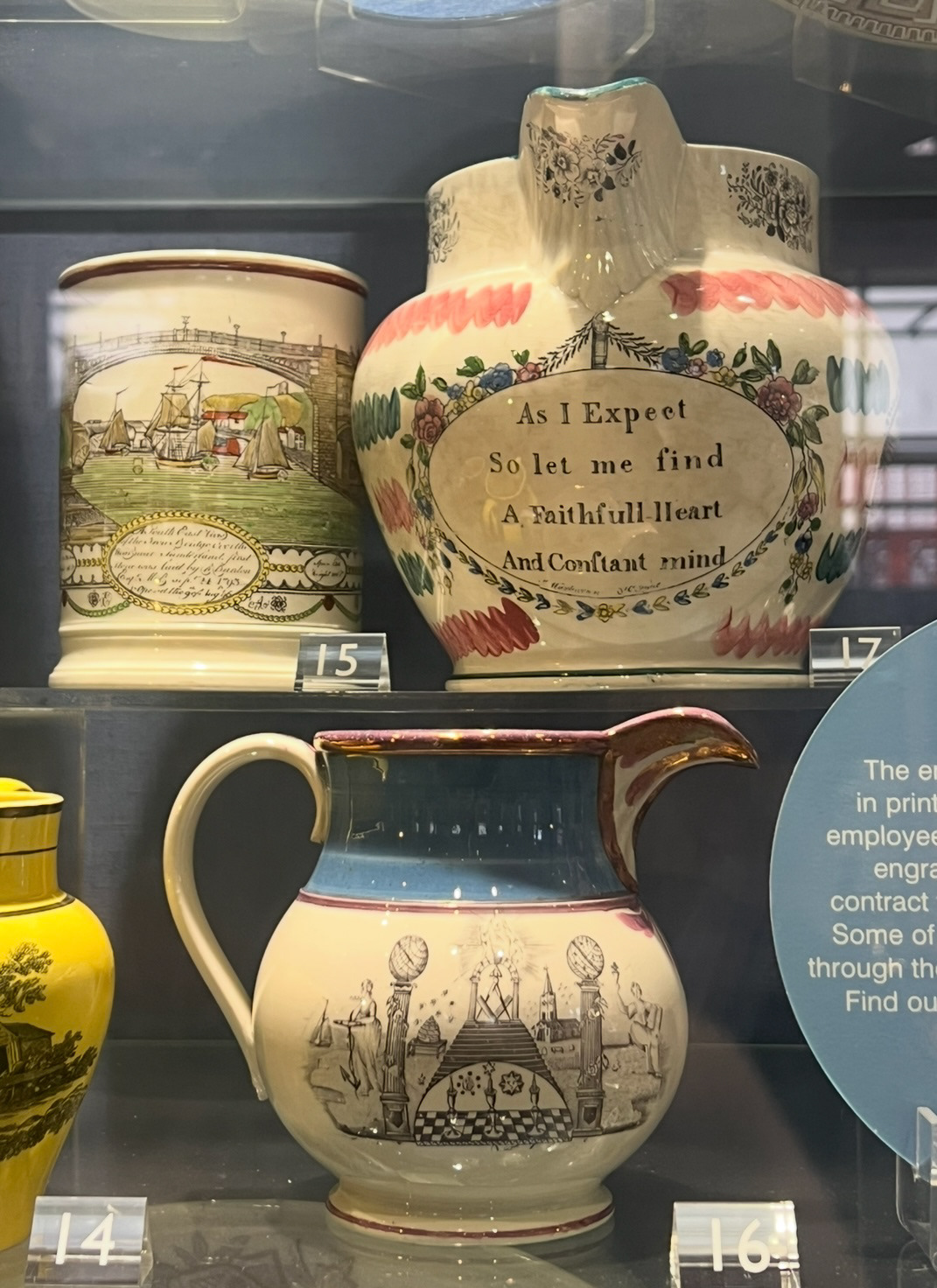

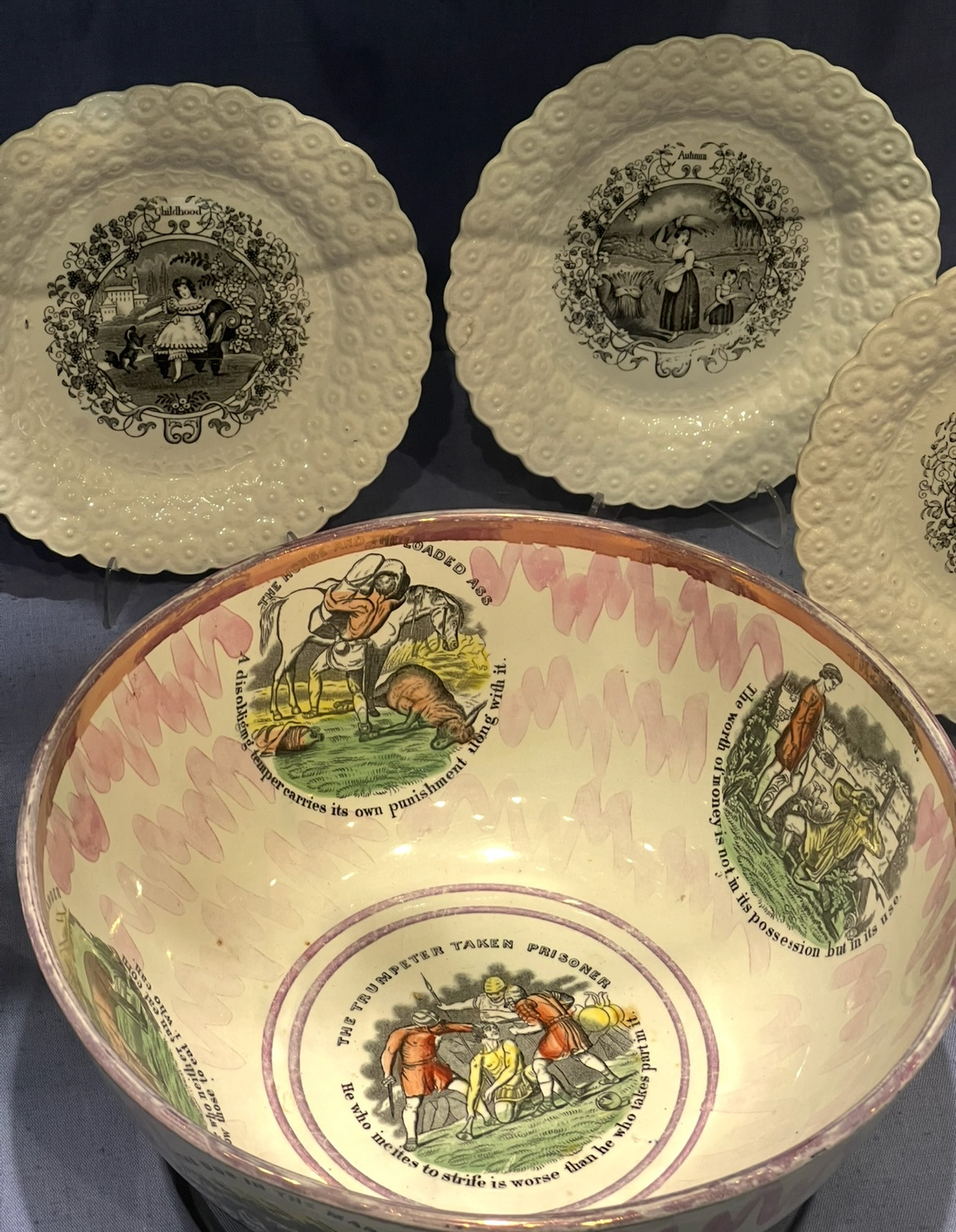
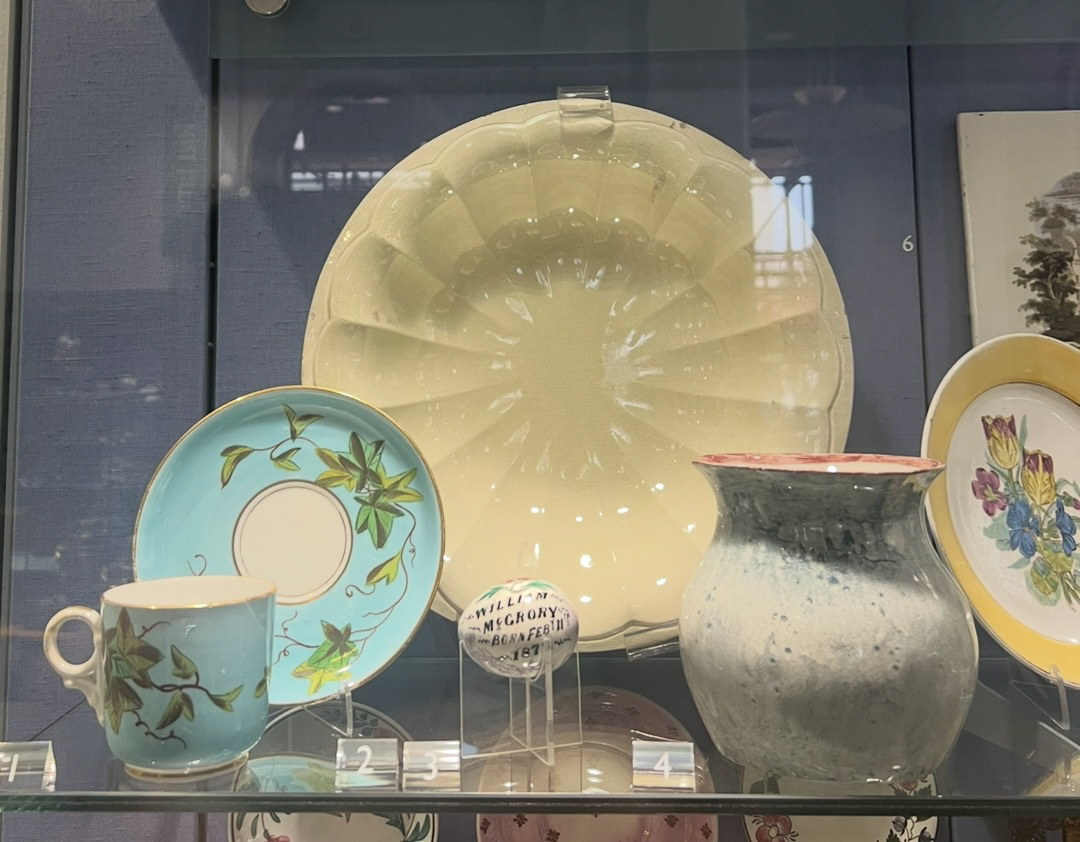
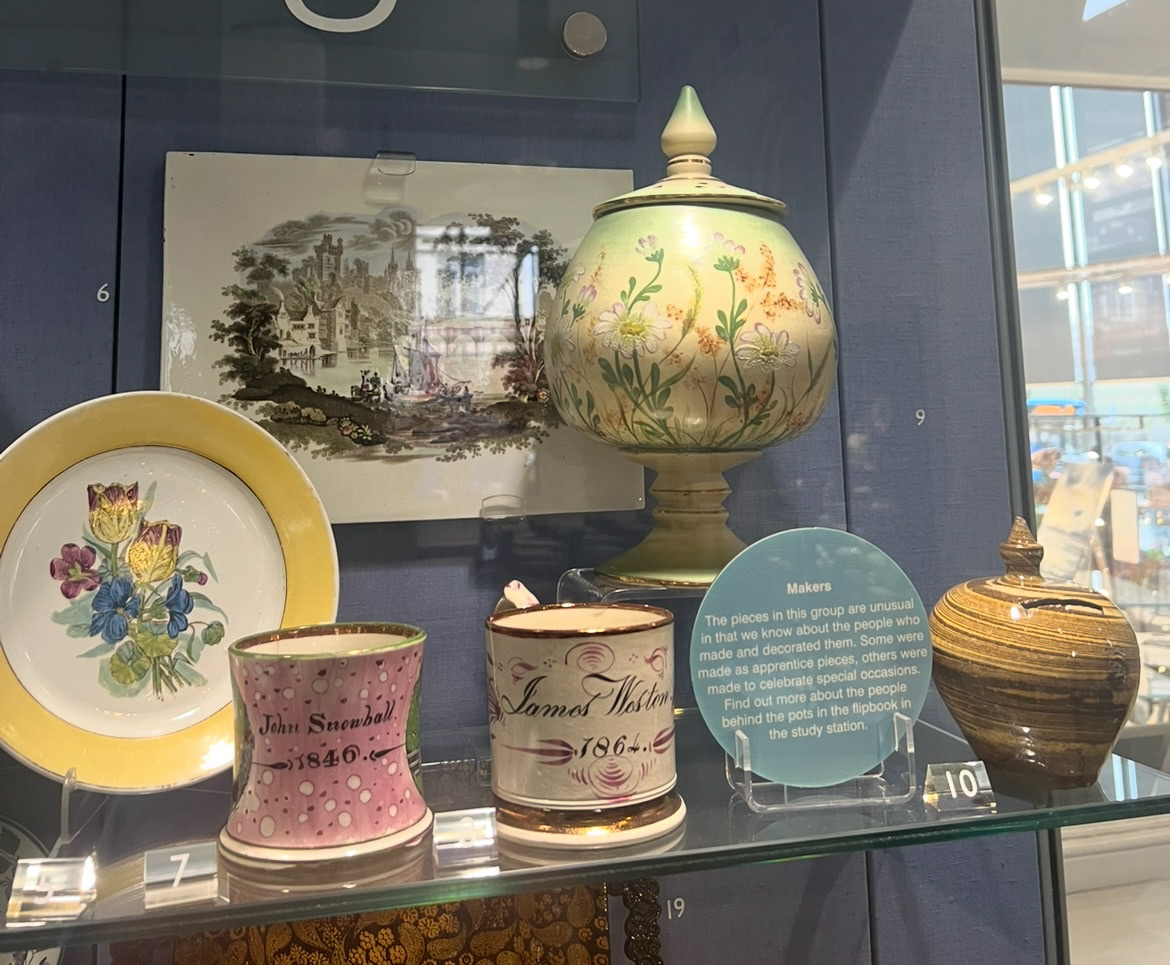
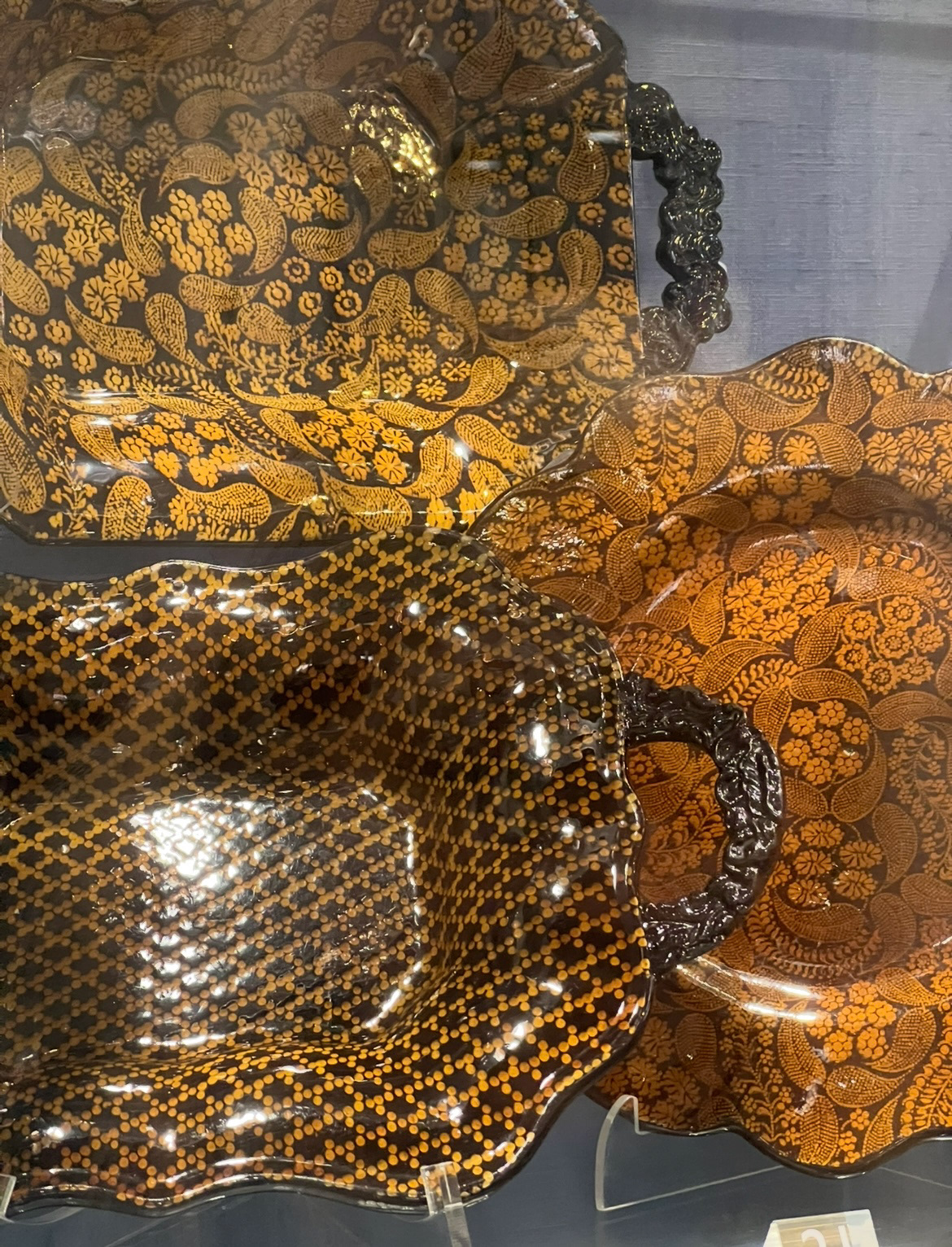

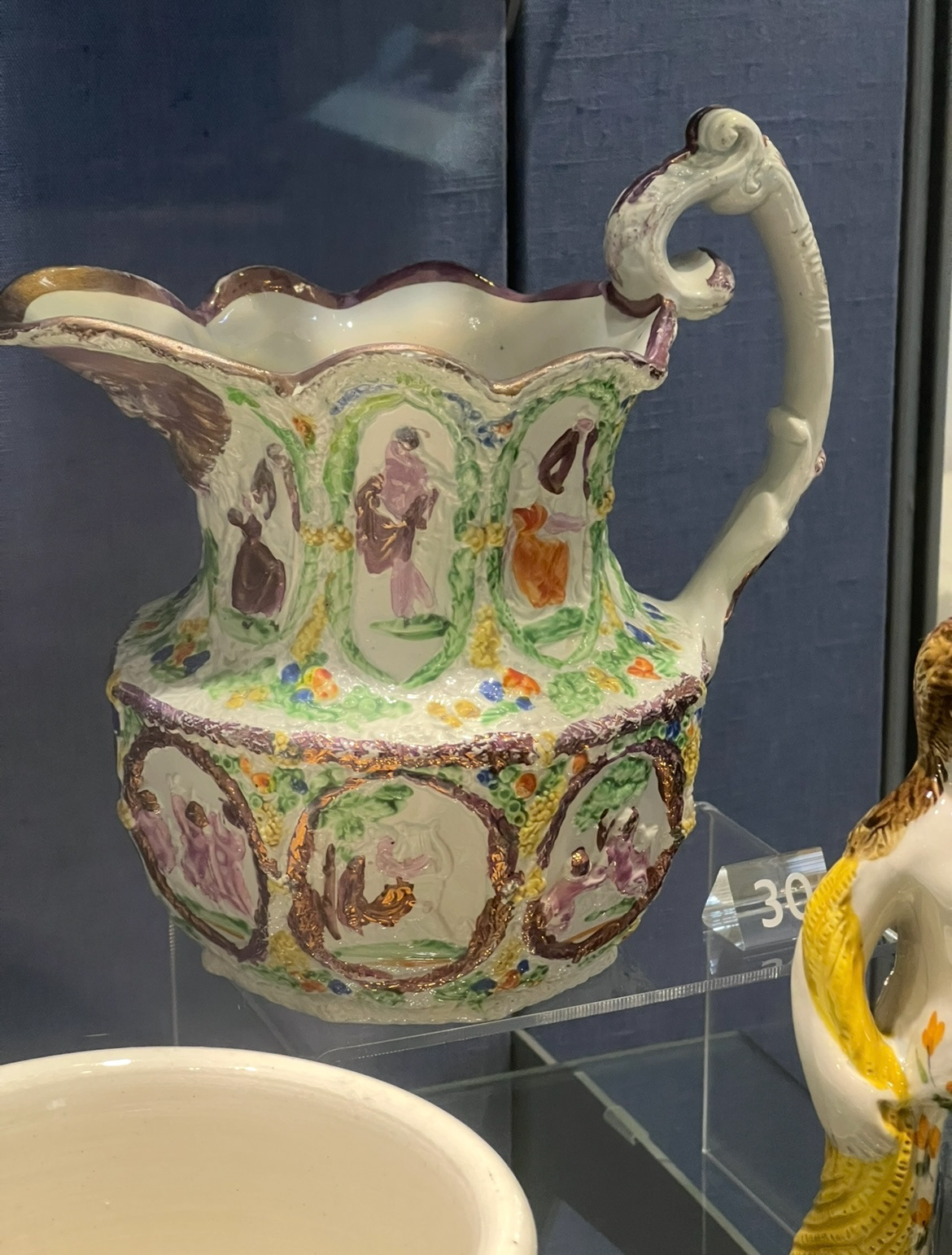

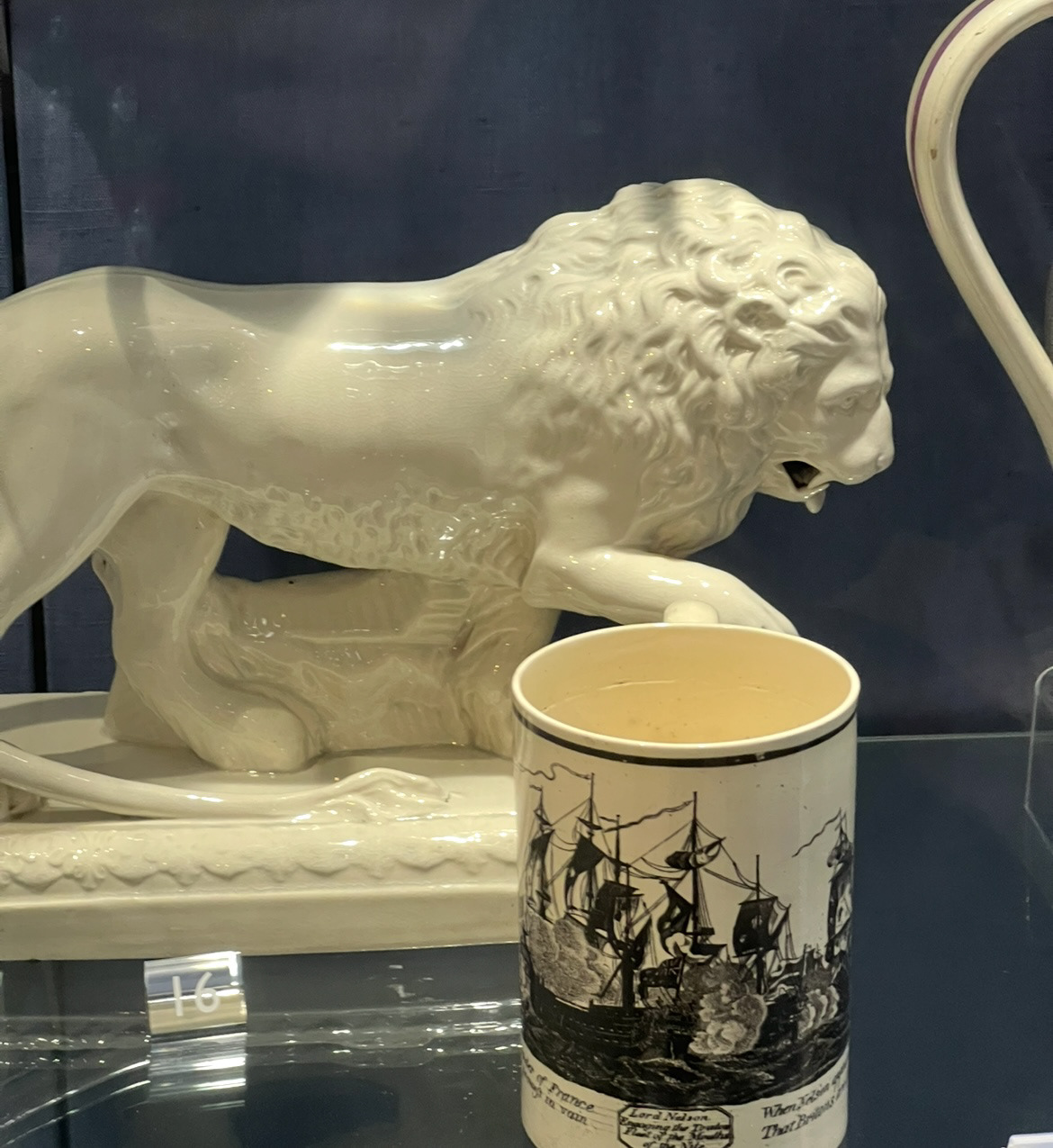
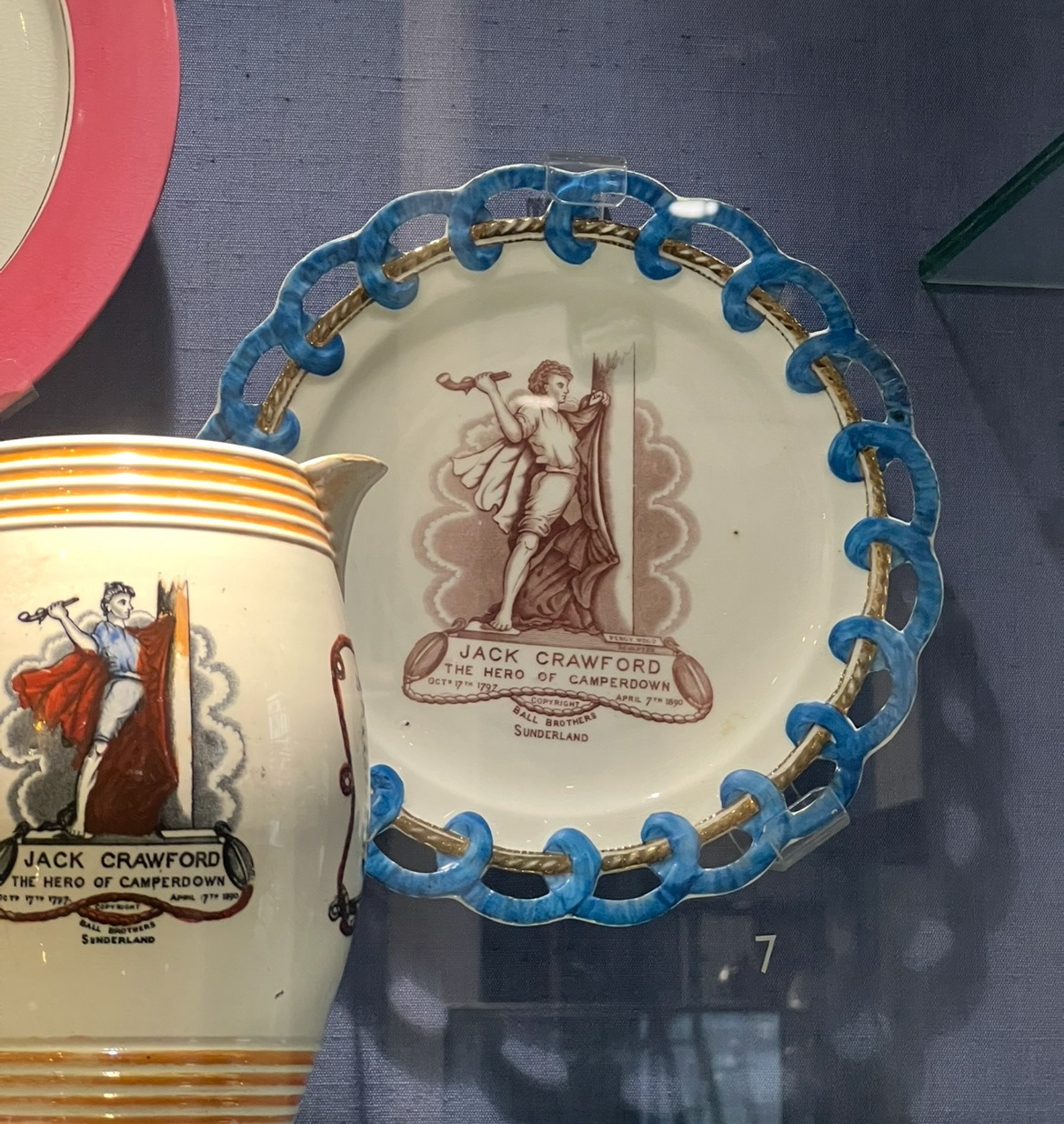


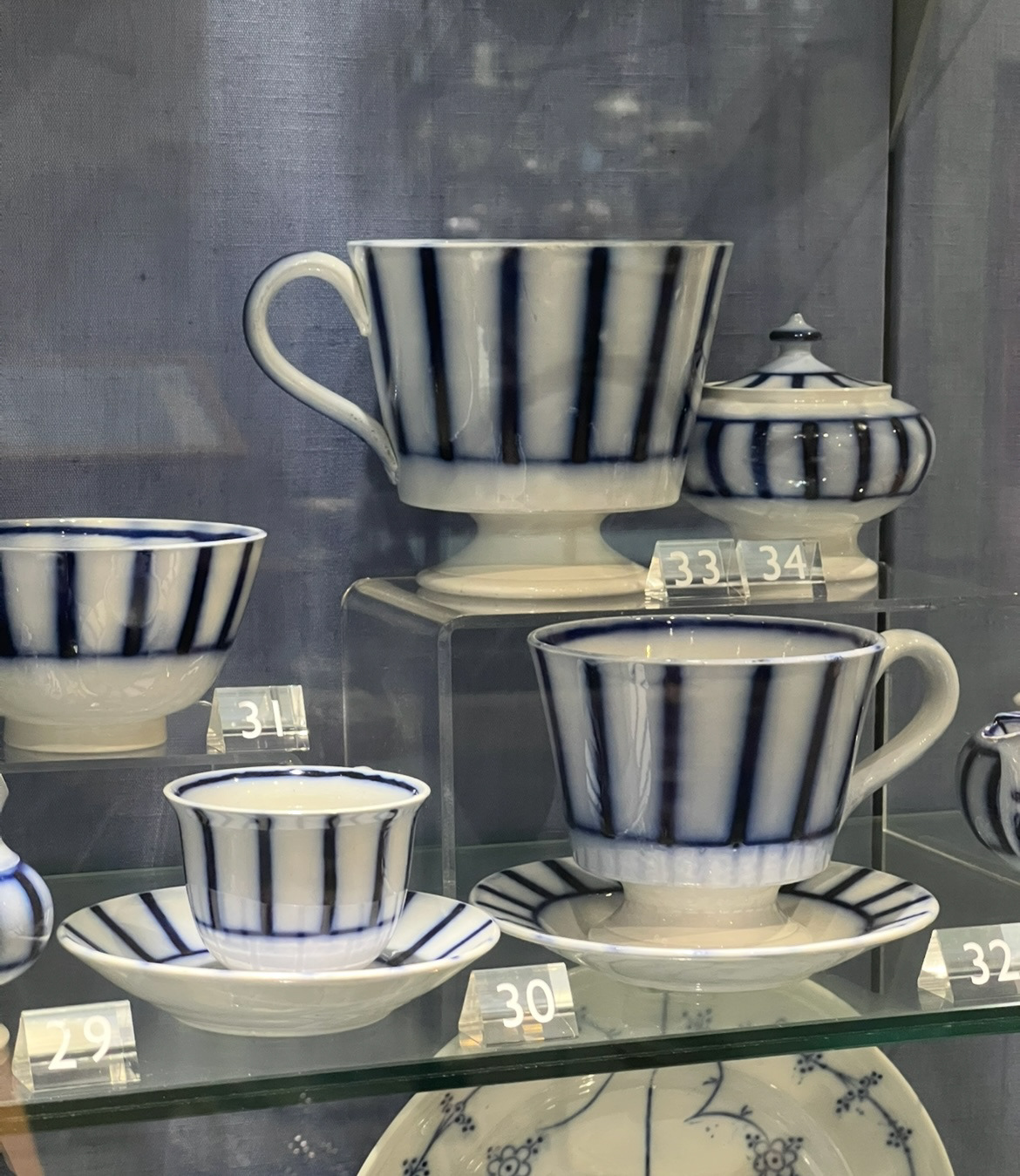
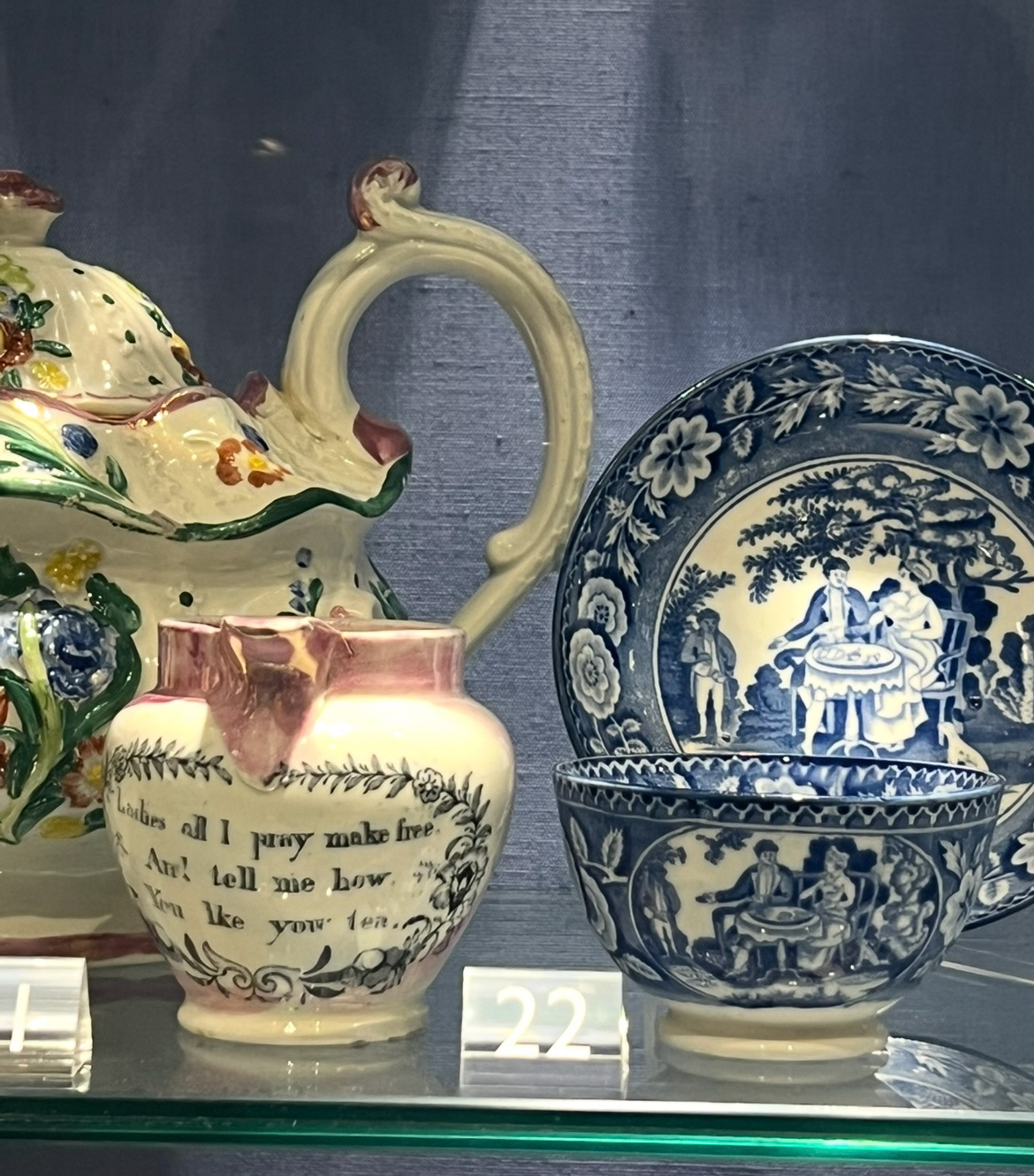
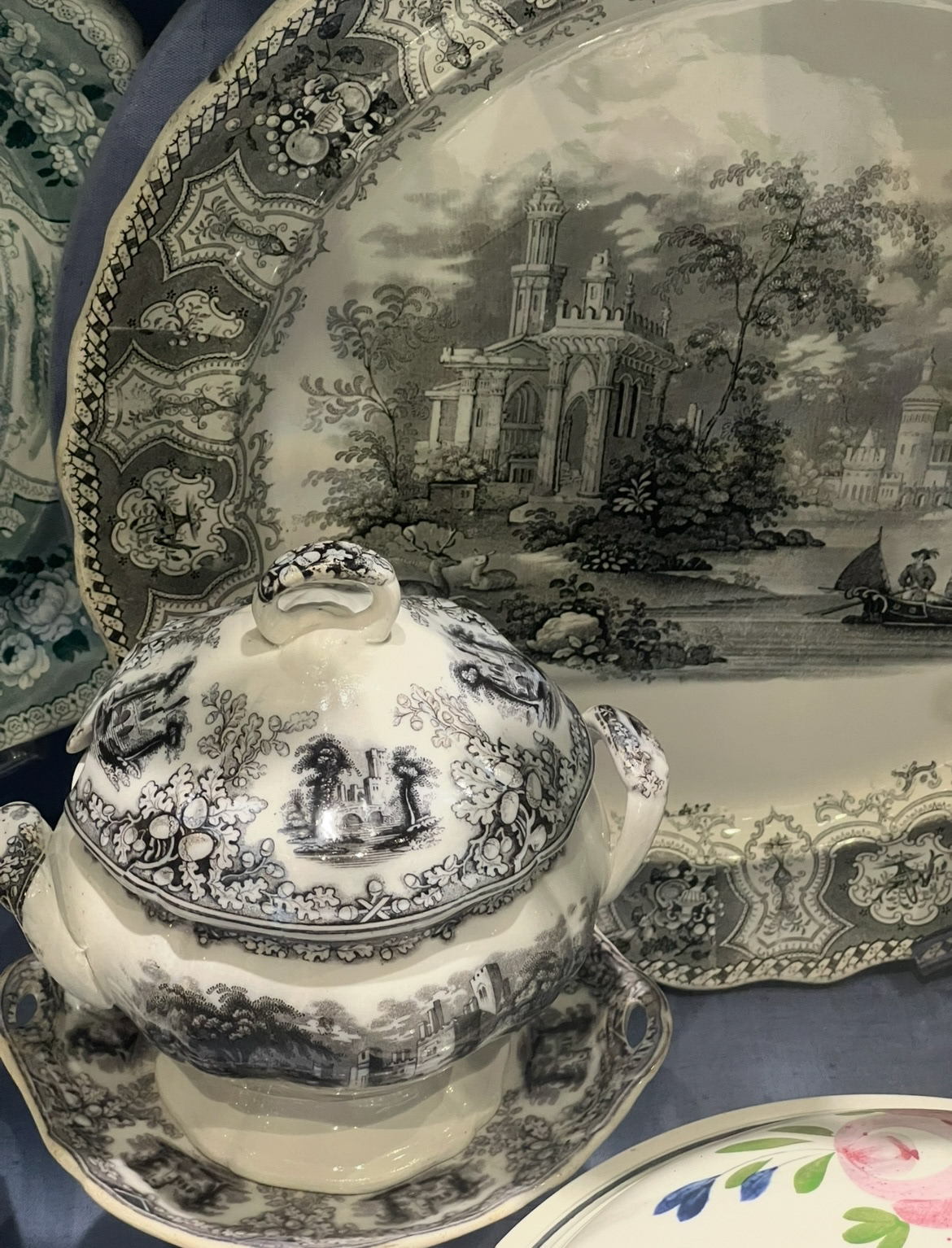

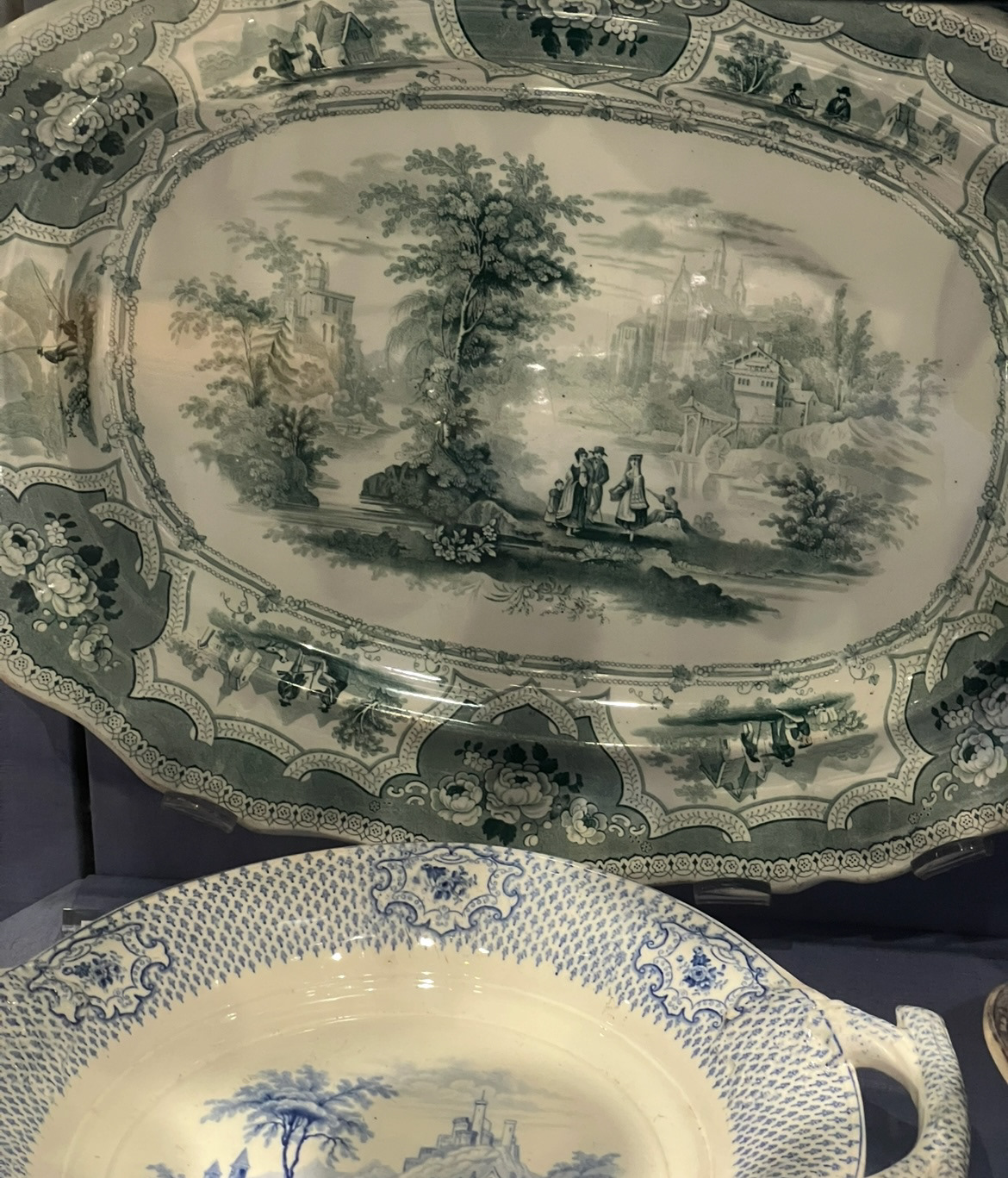


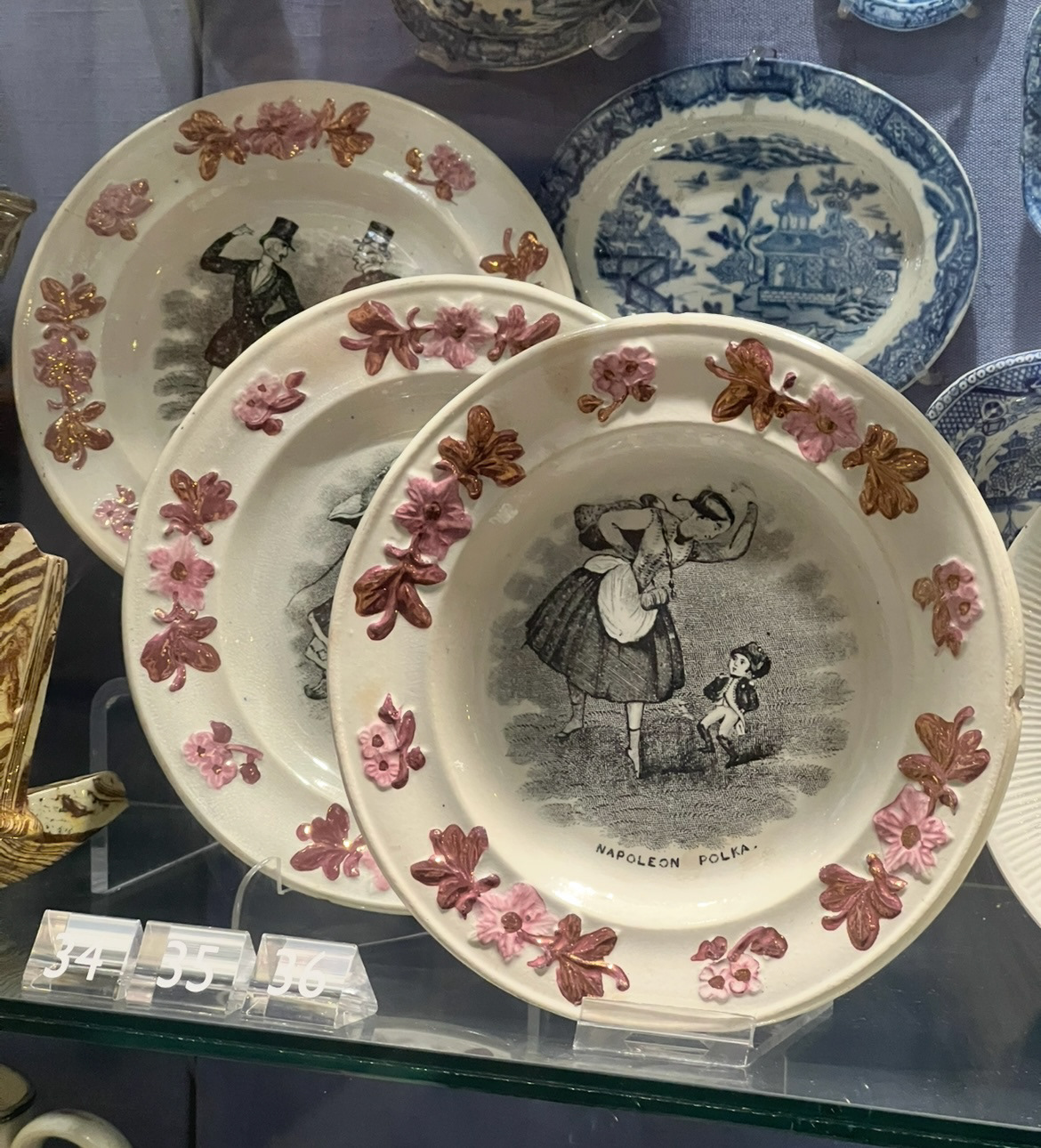
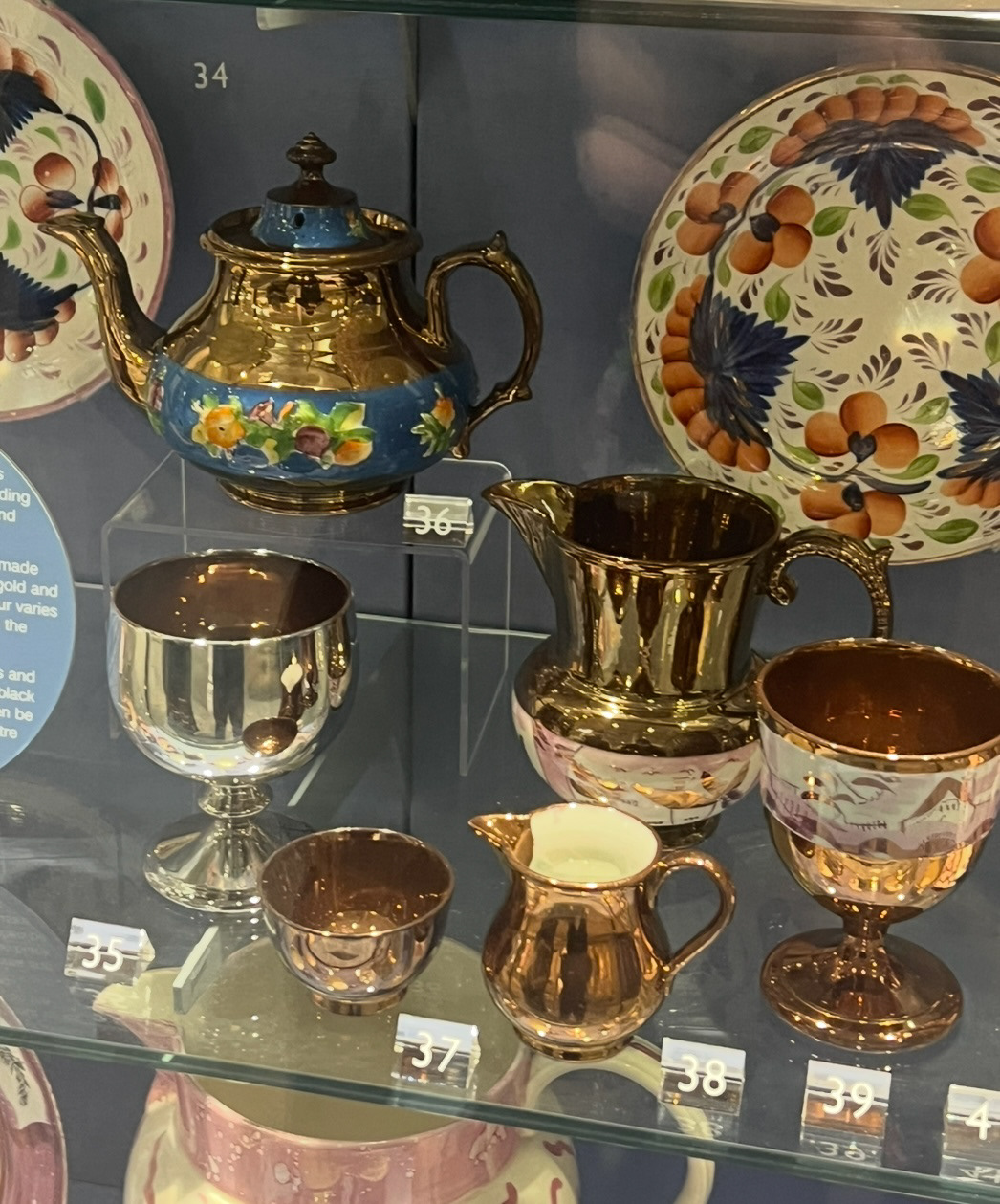
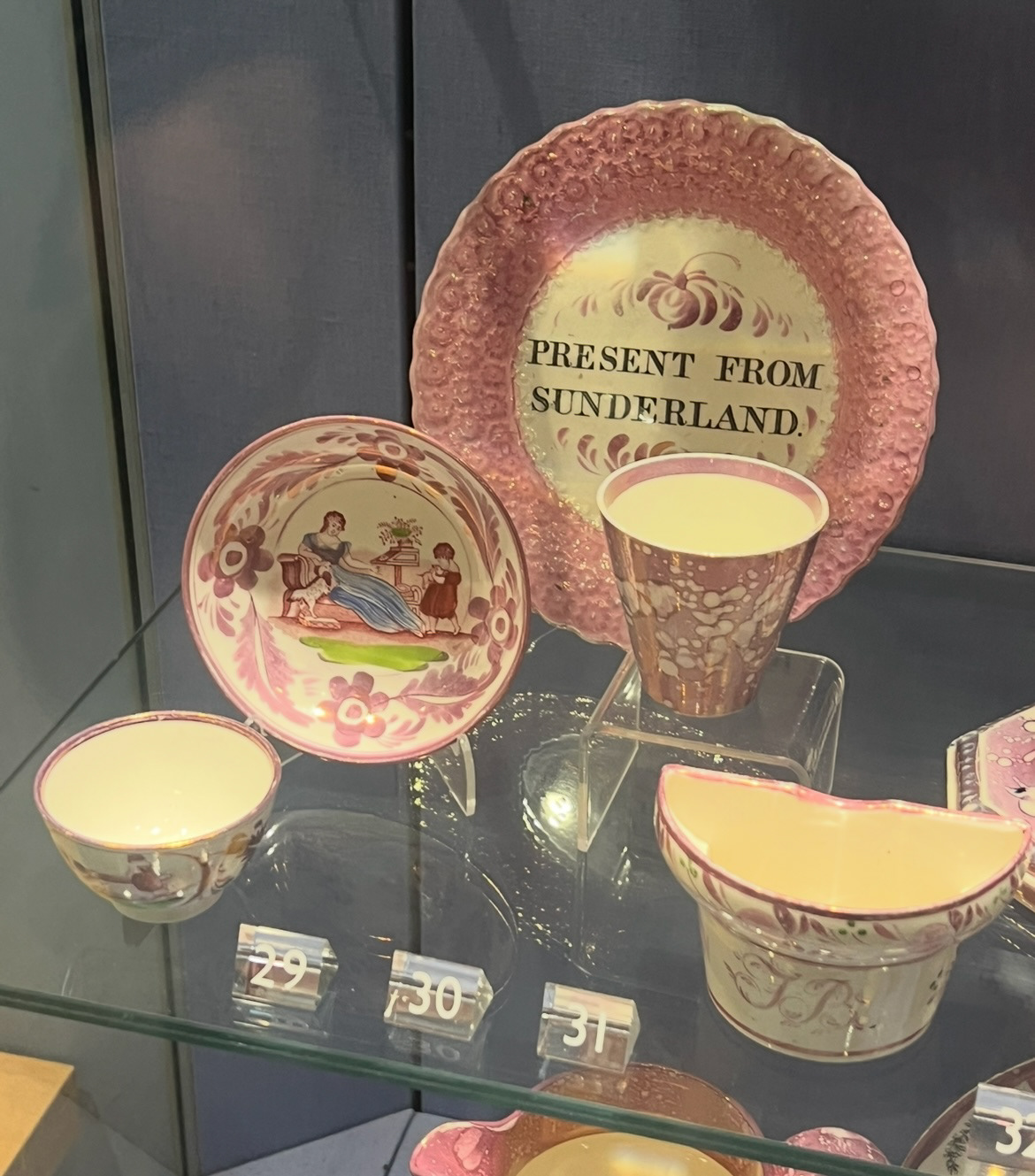
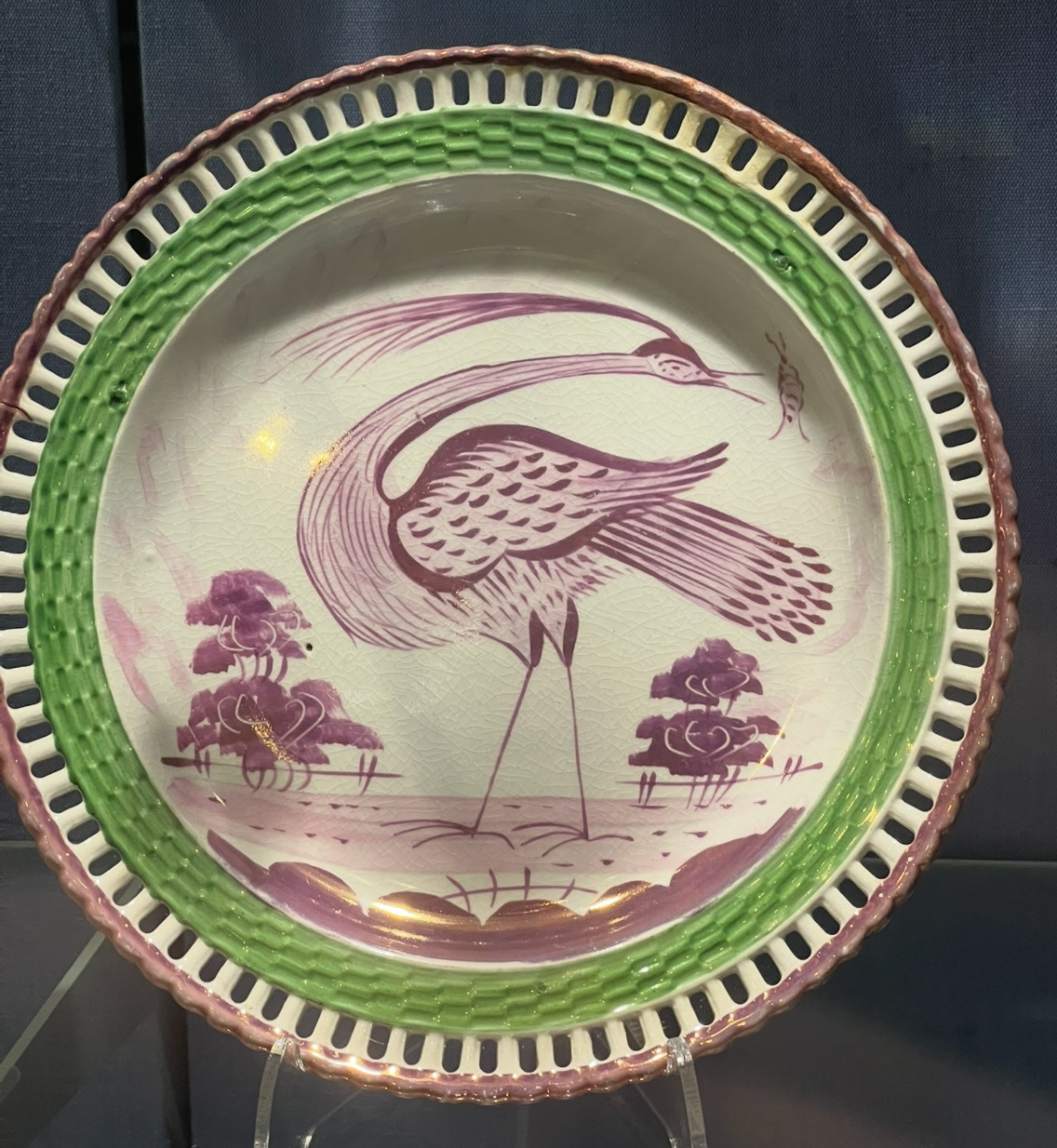
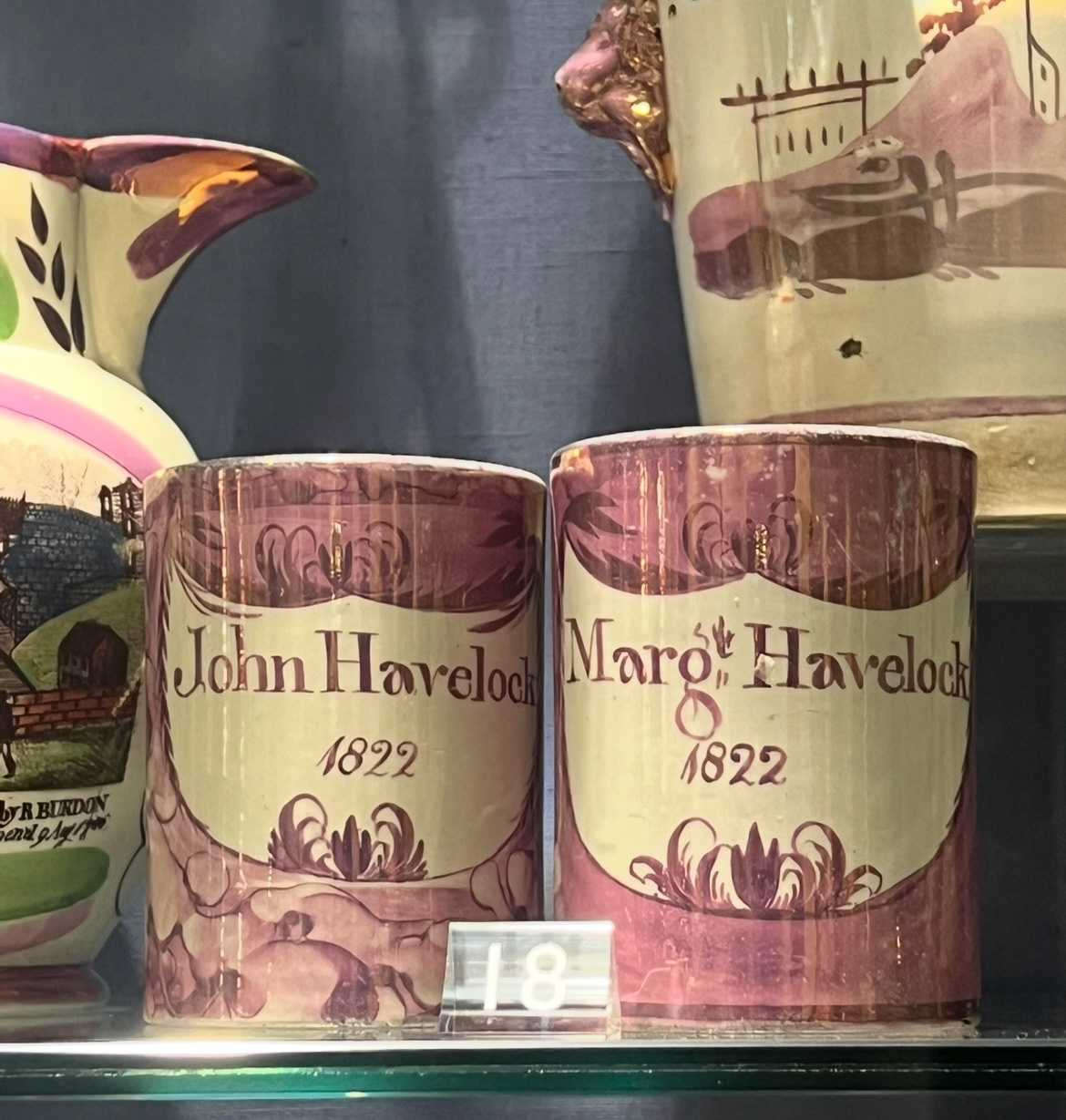
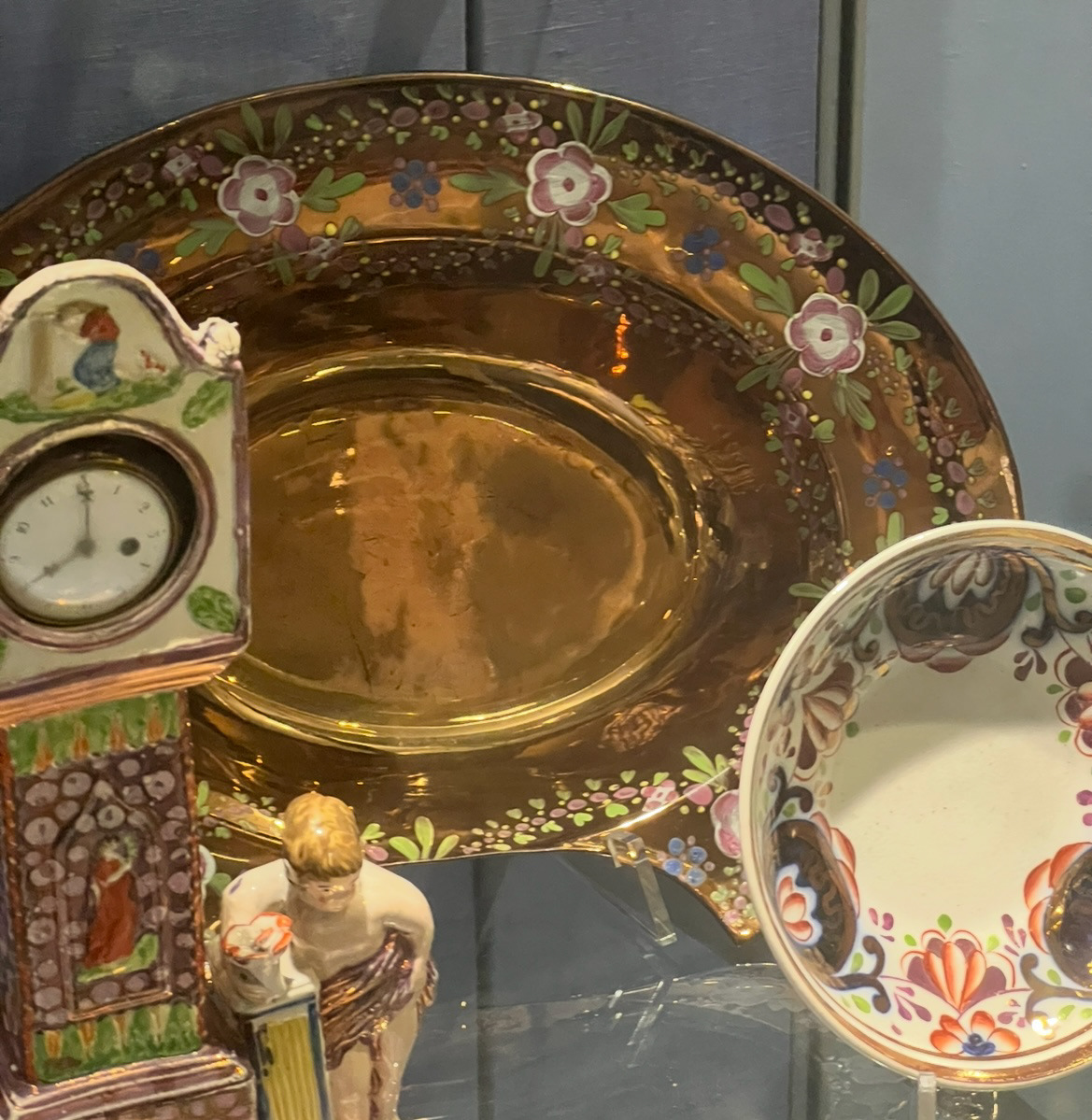
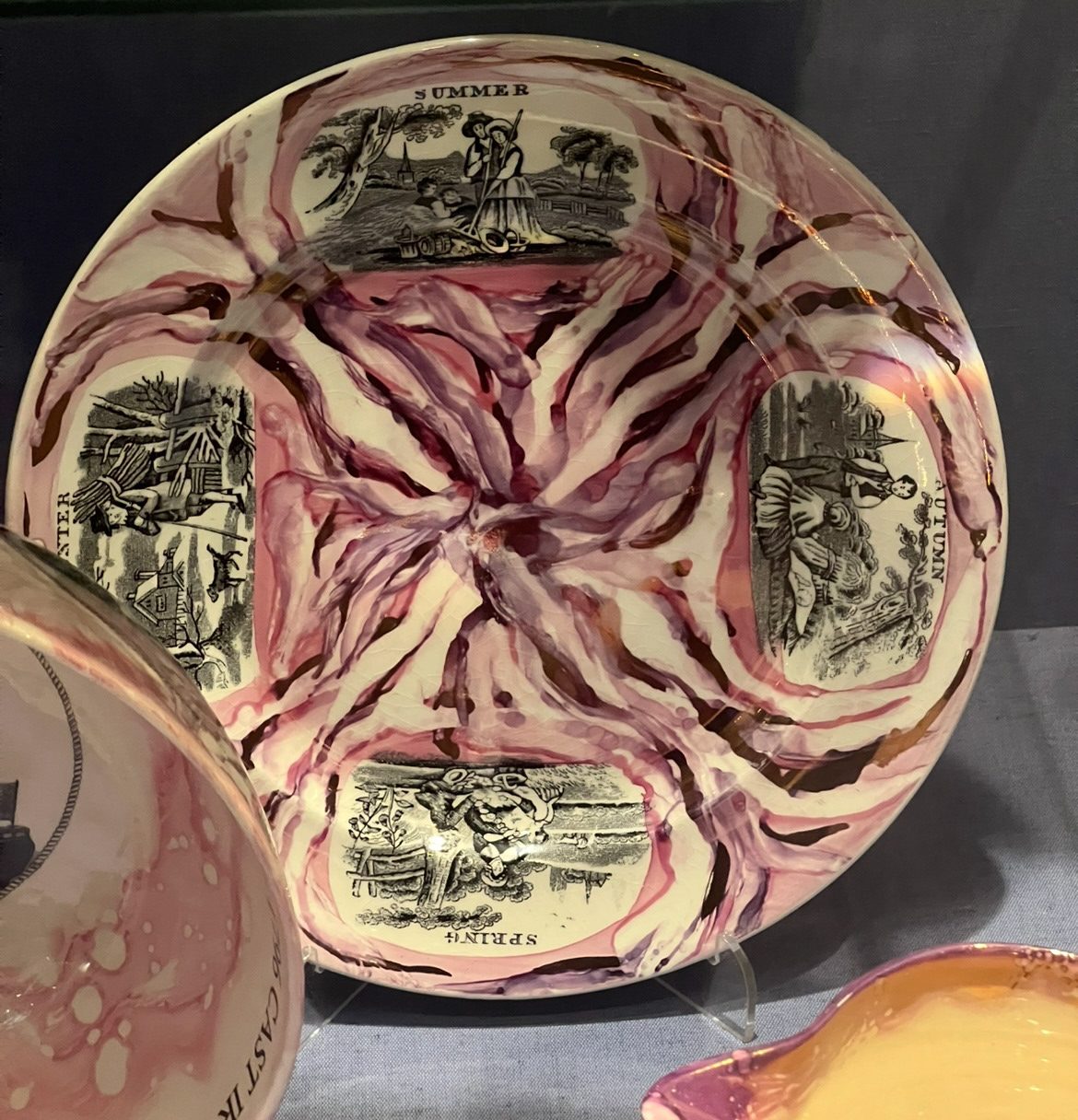
(See S&R Pt 2 file)